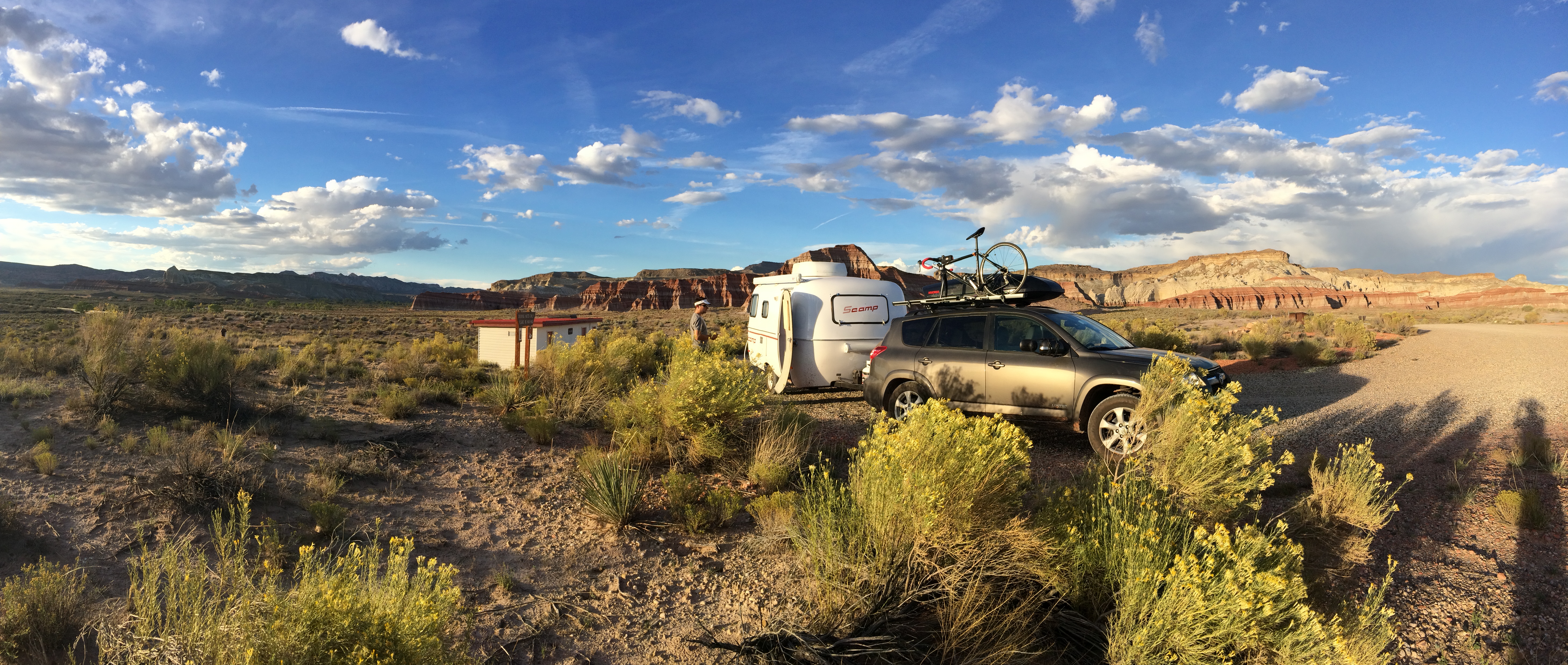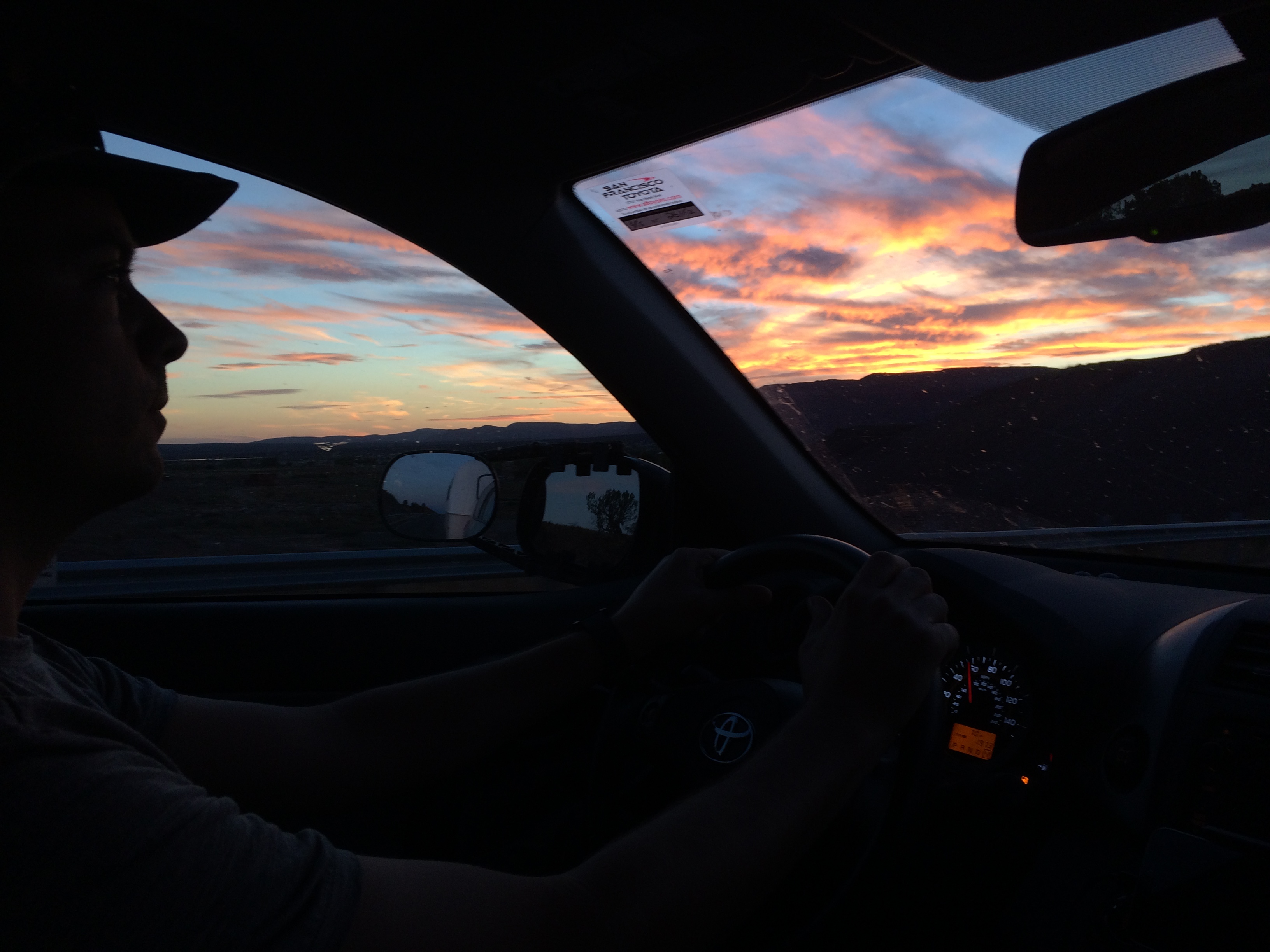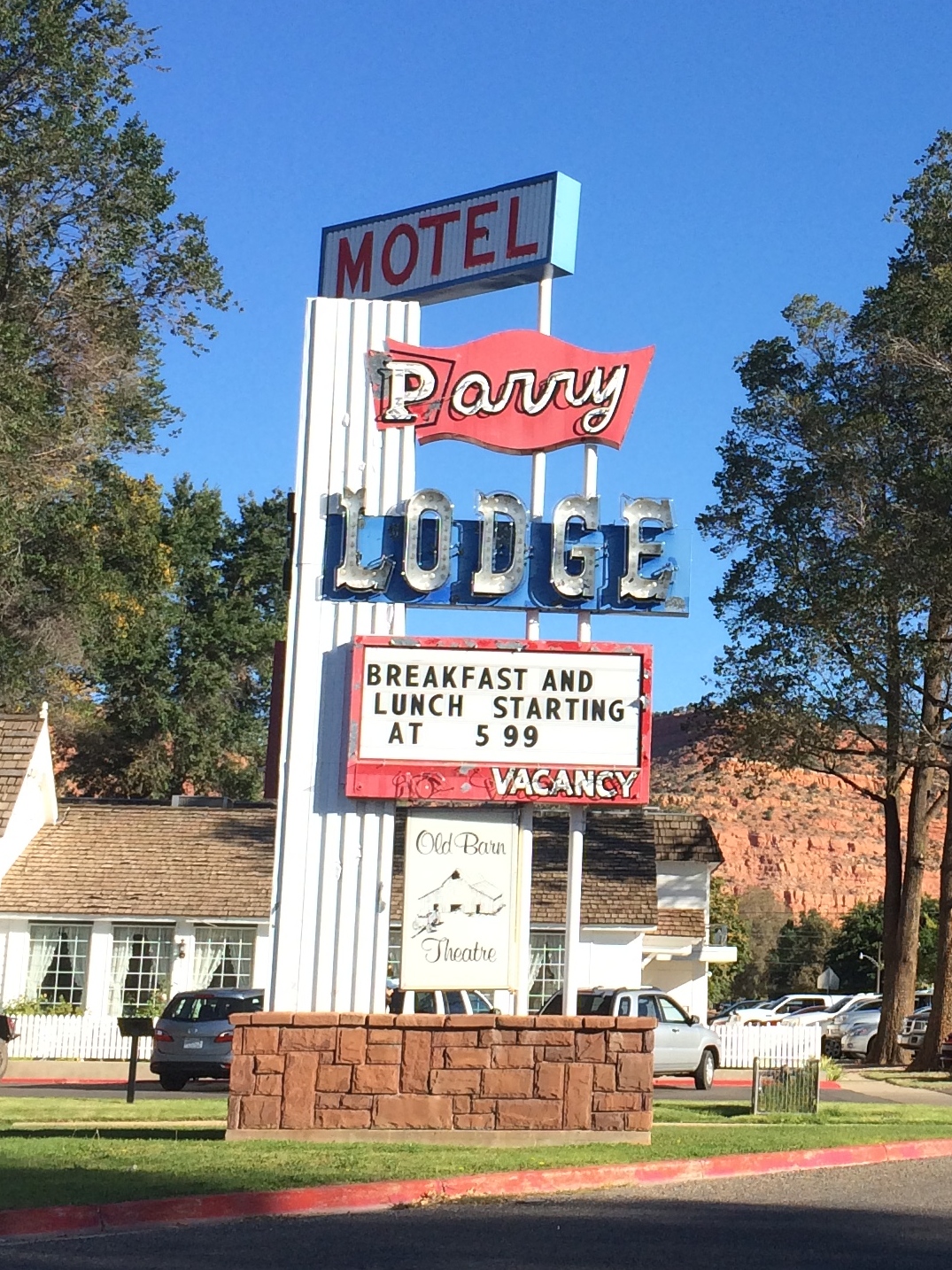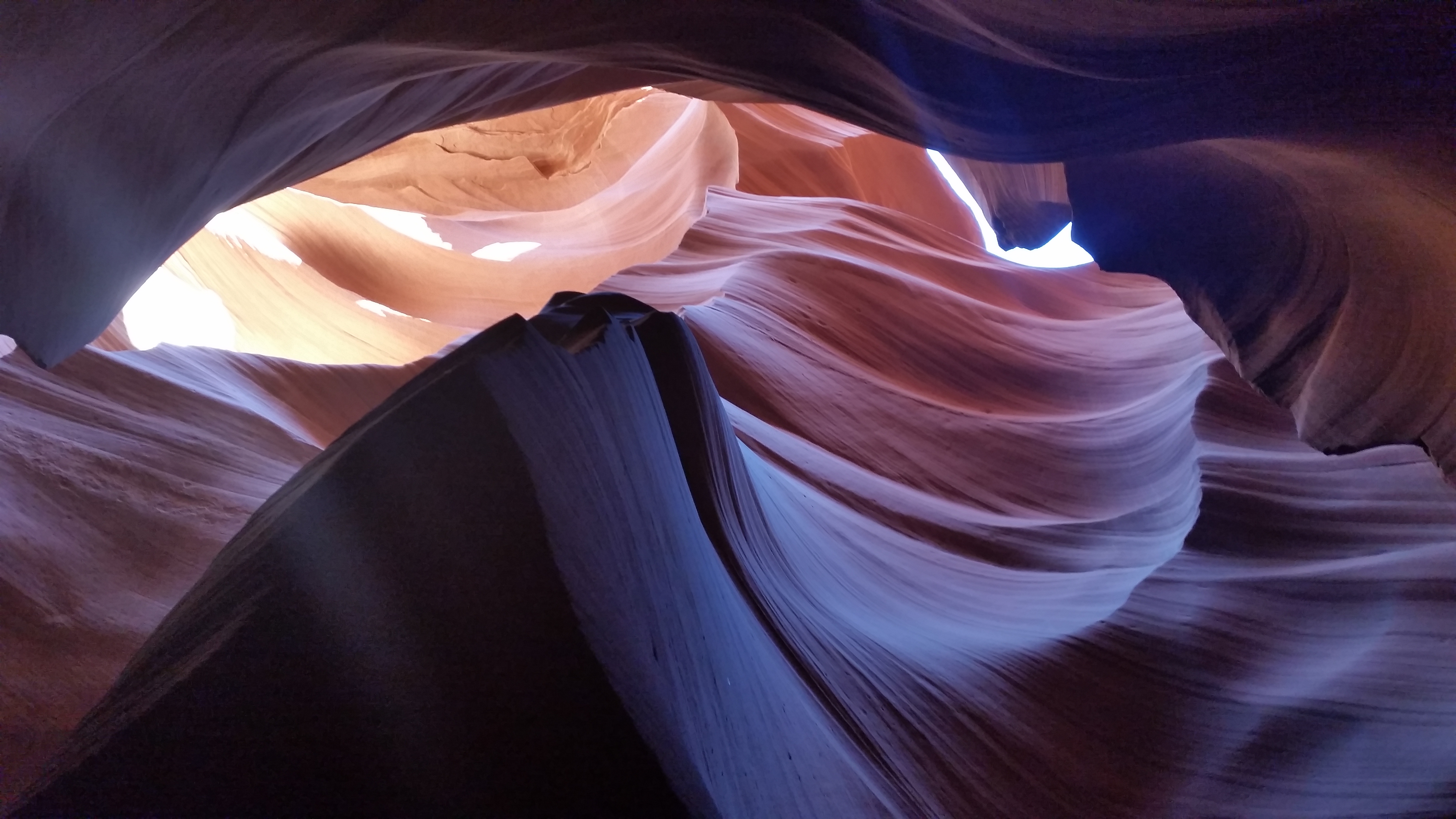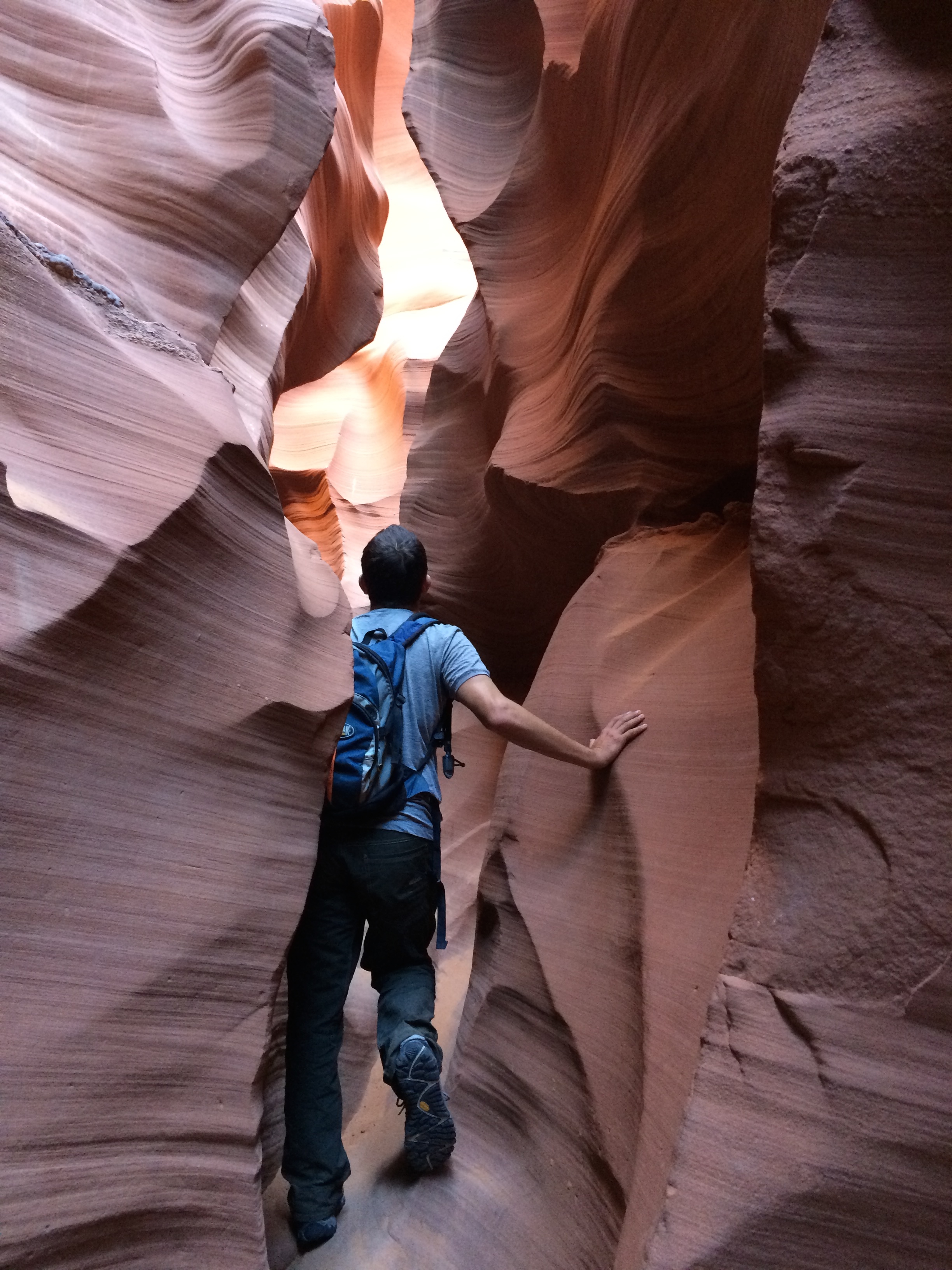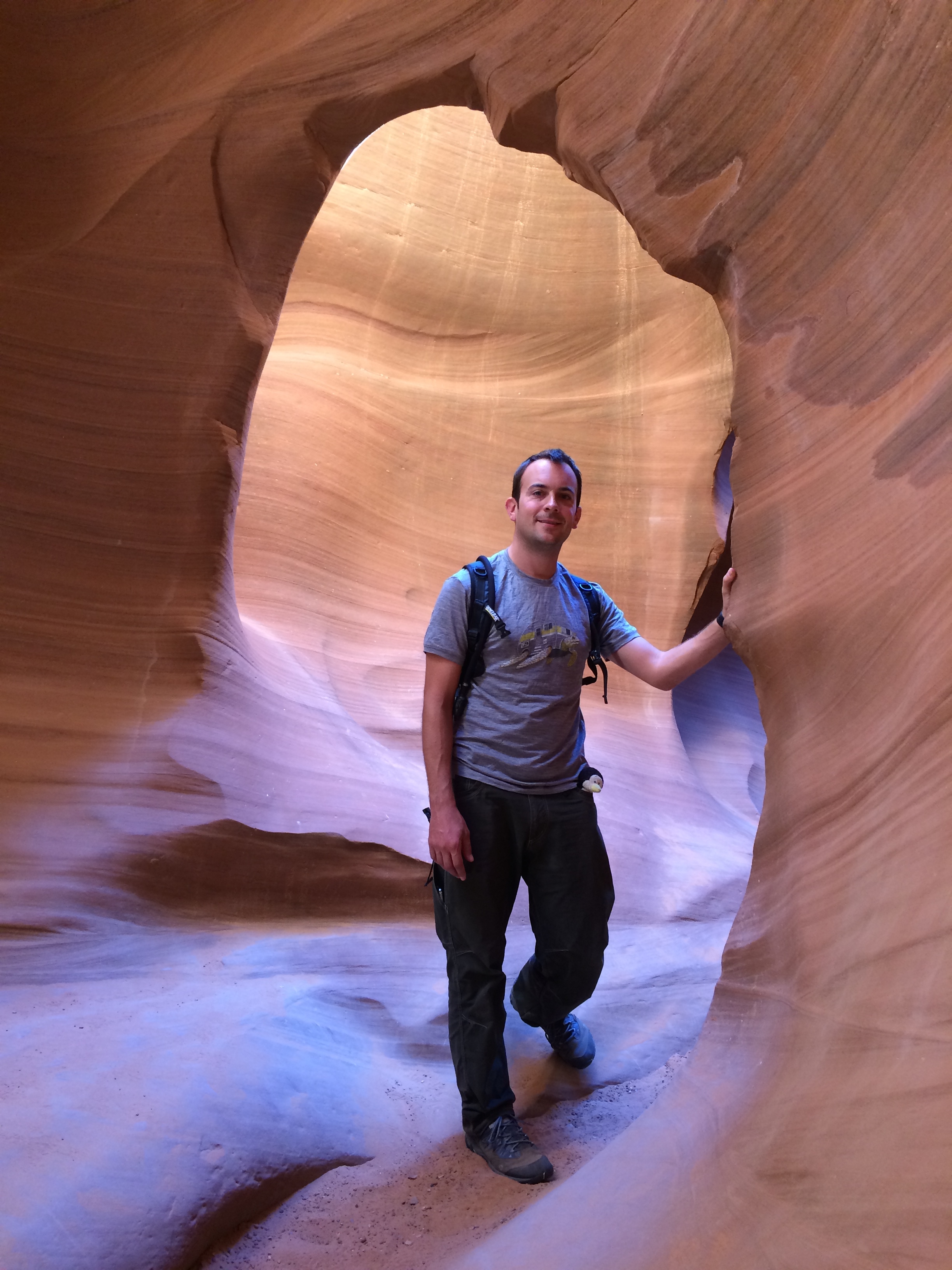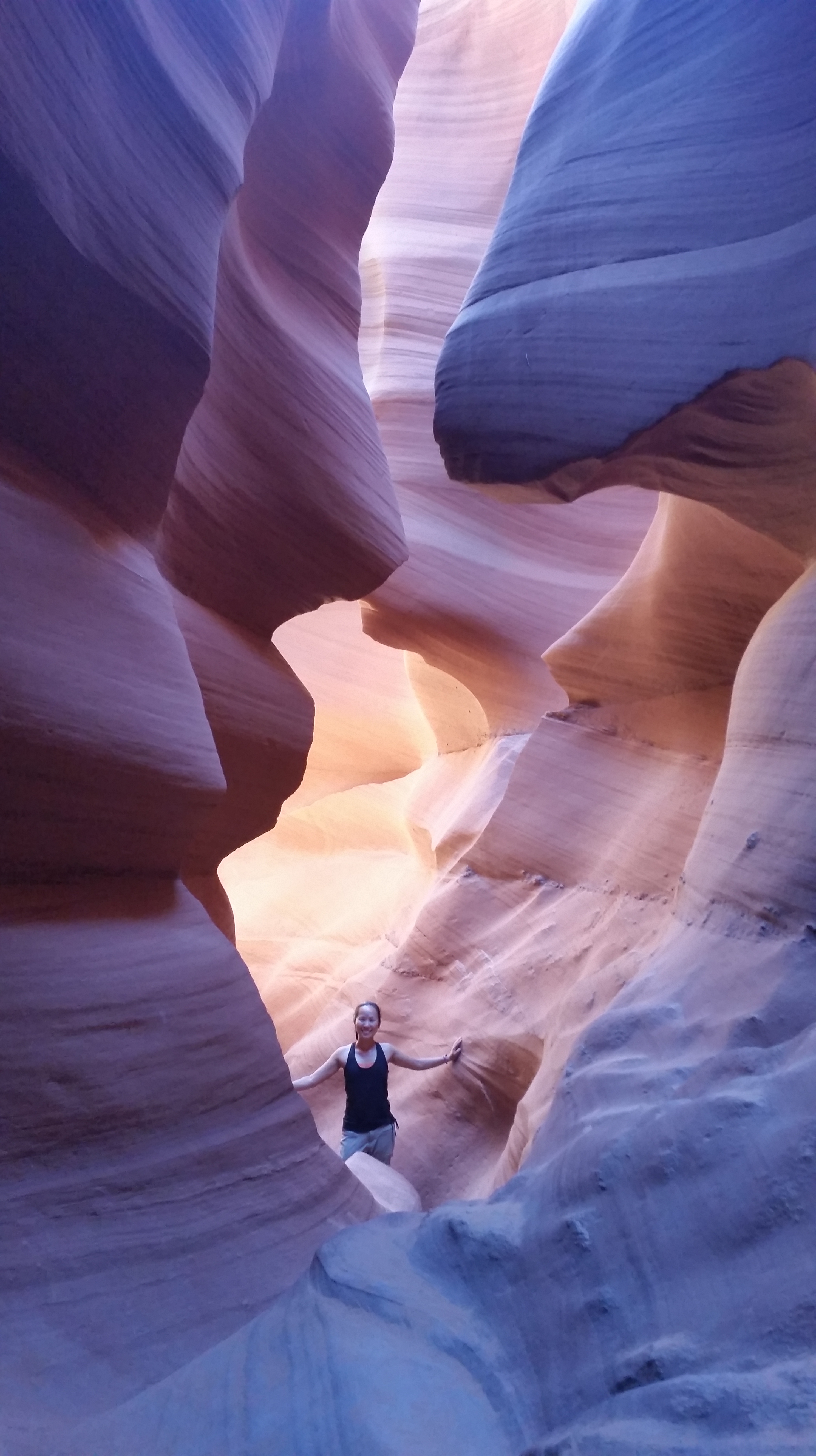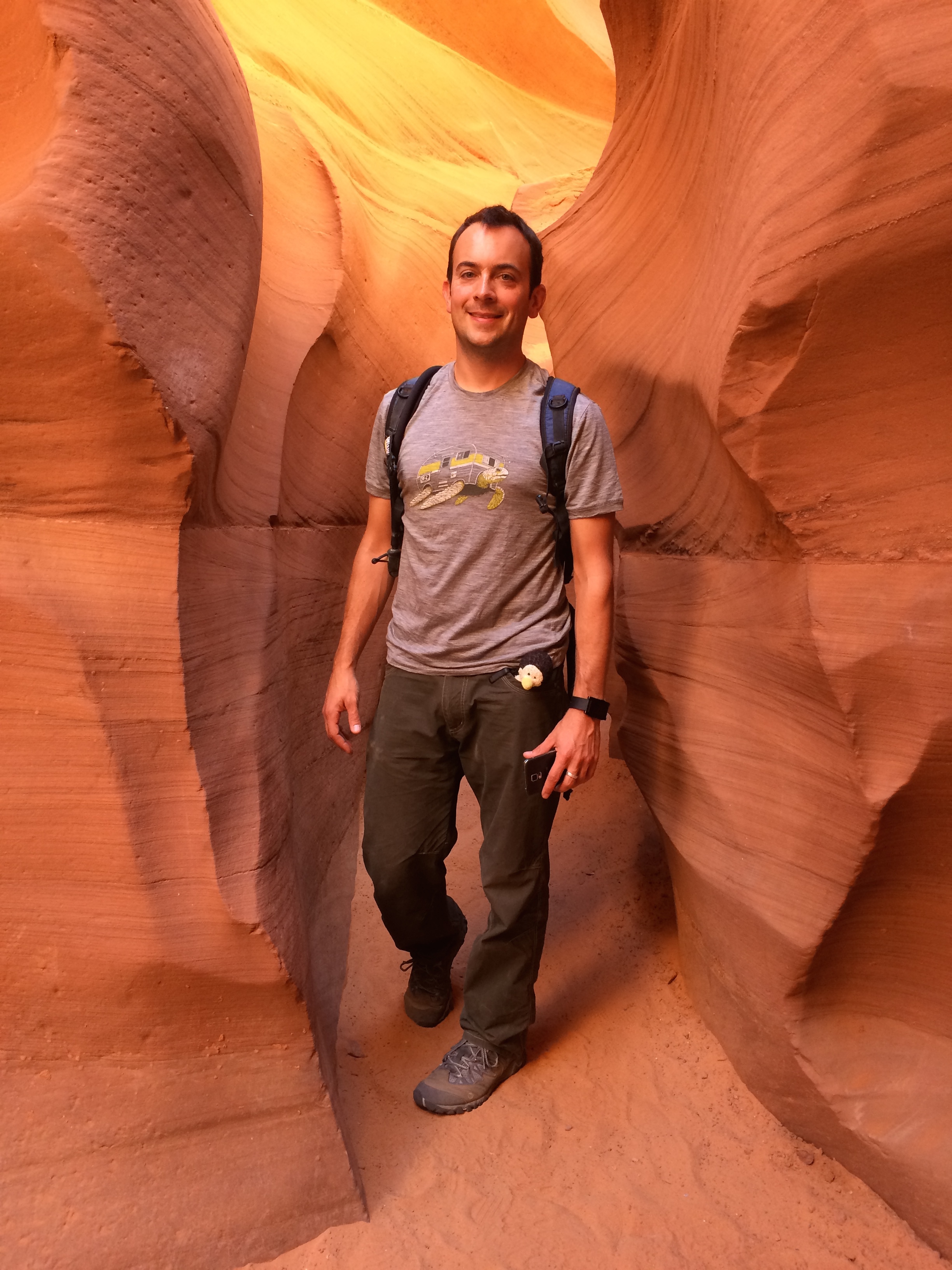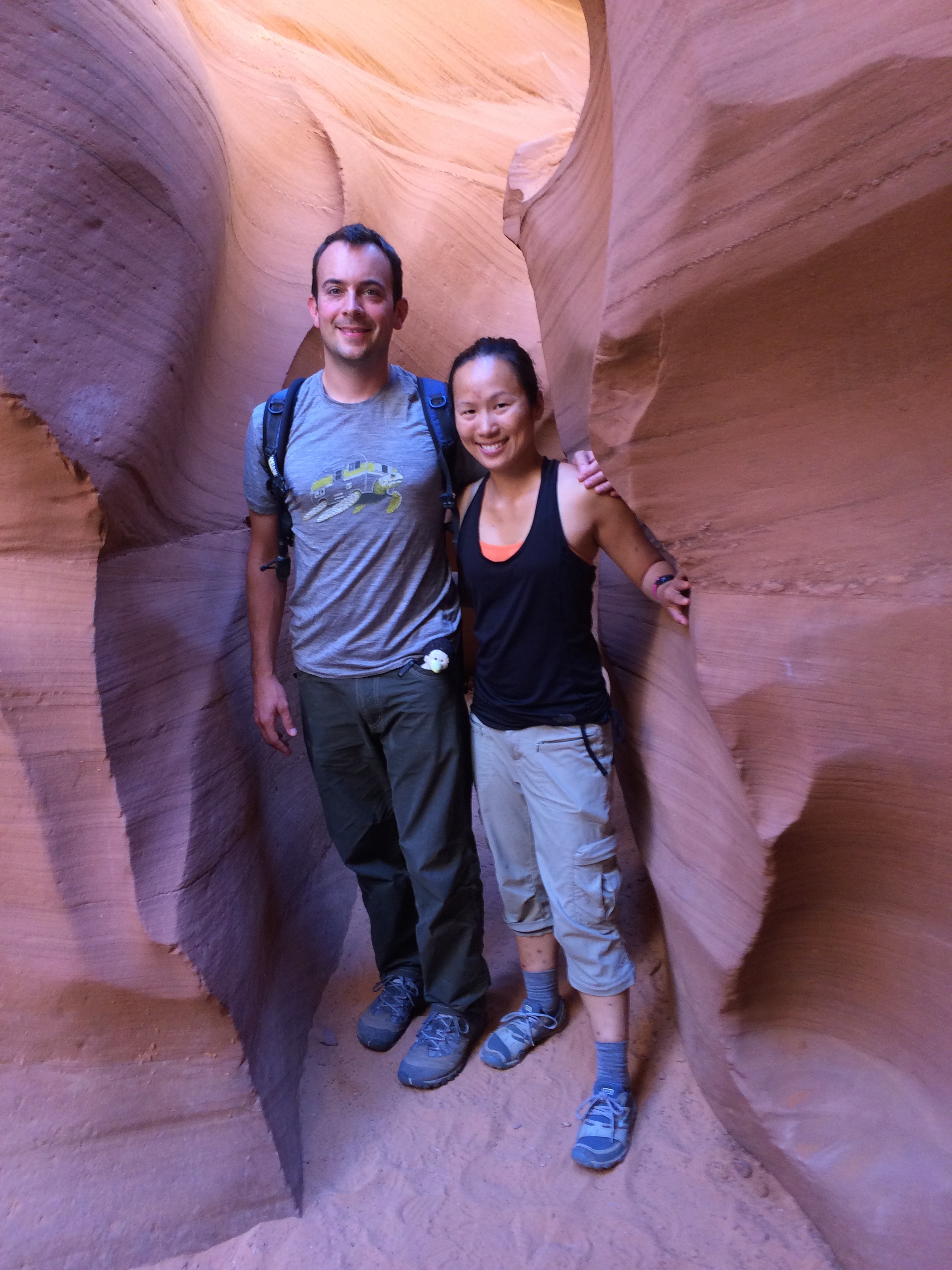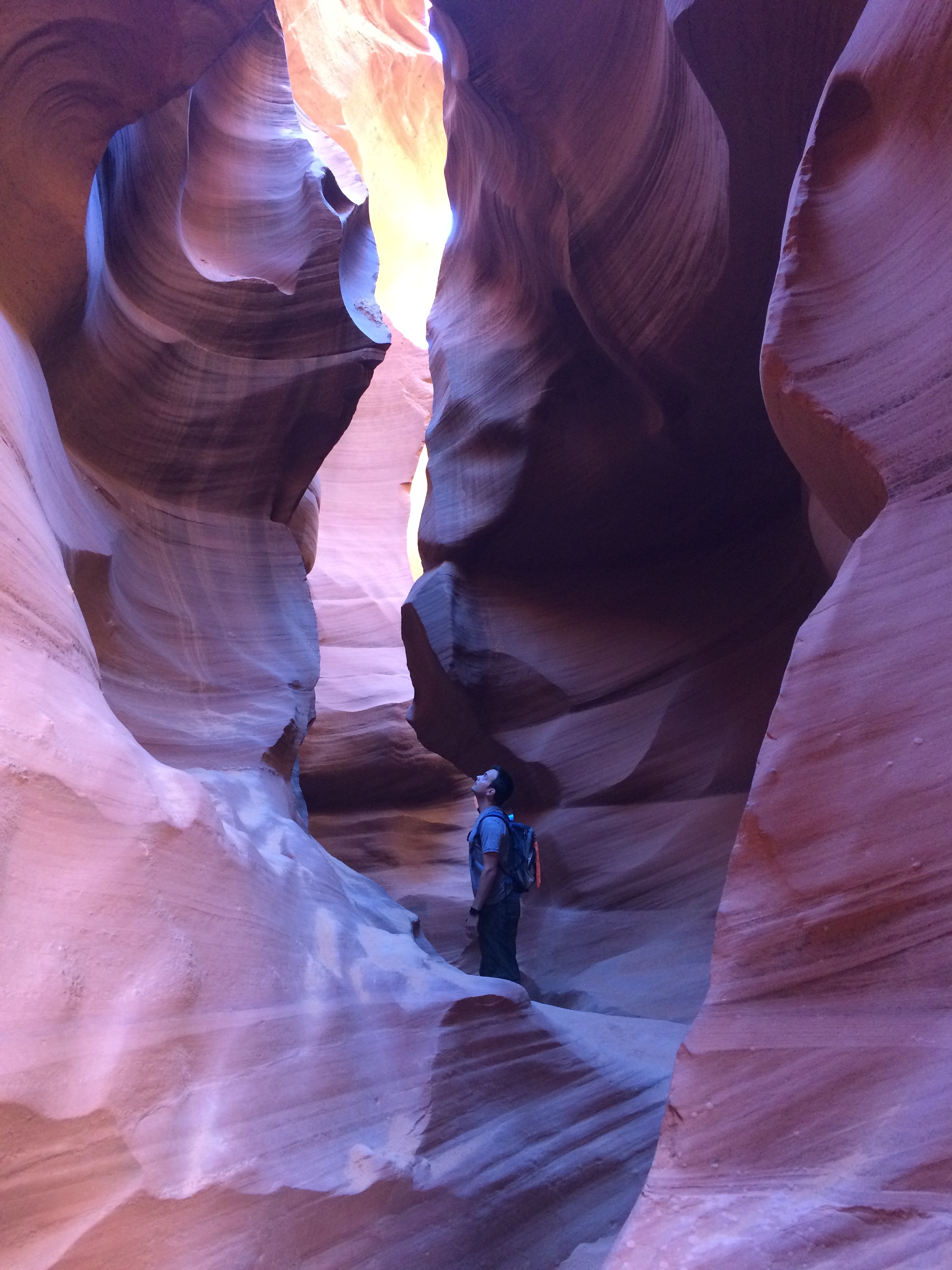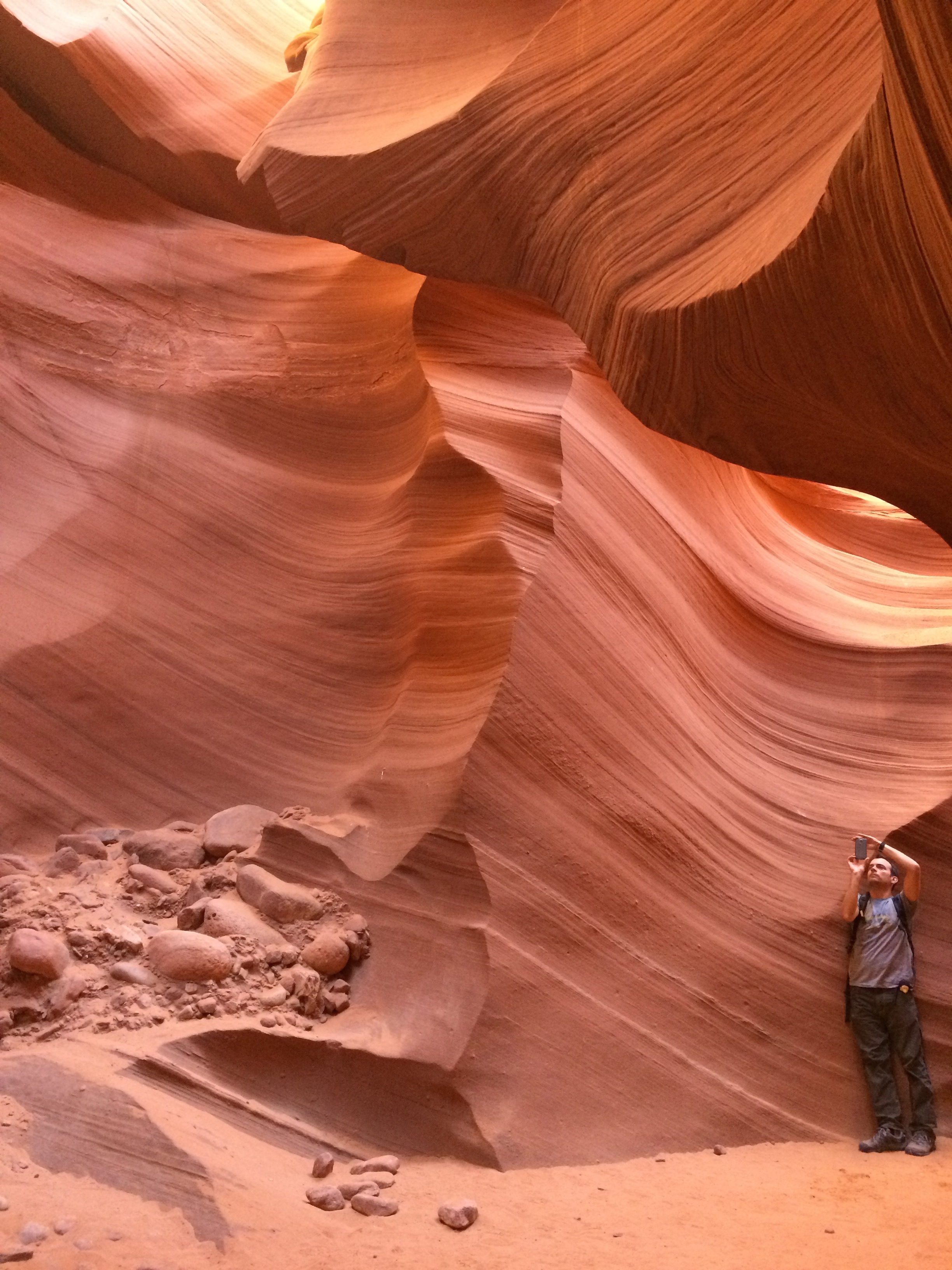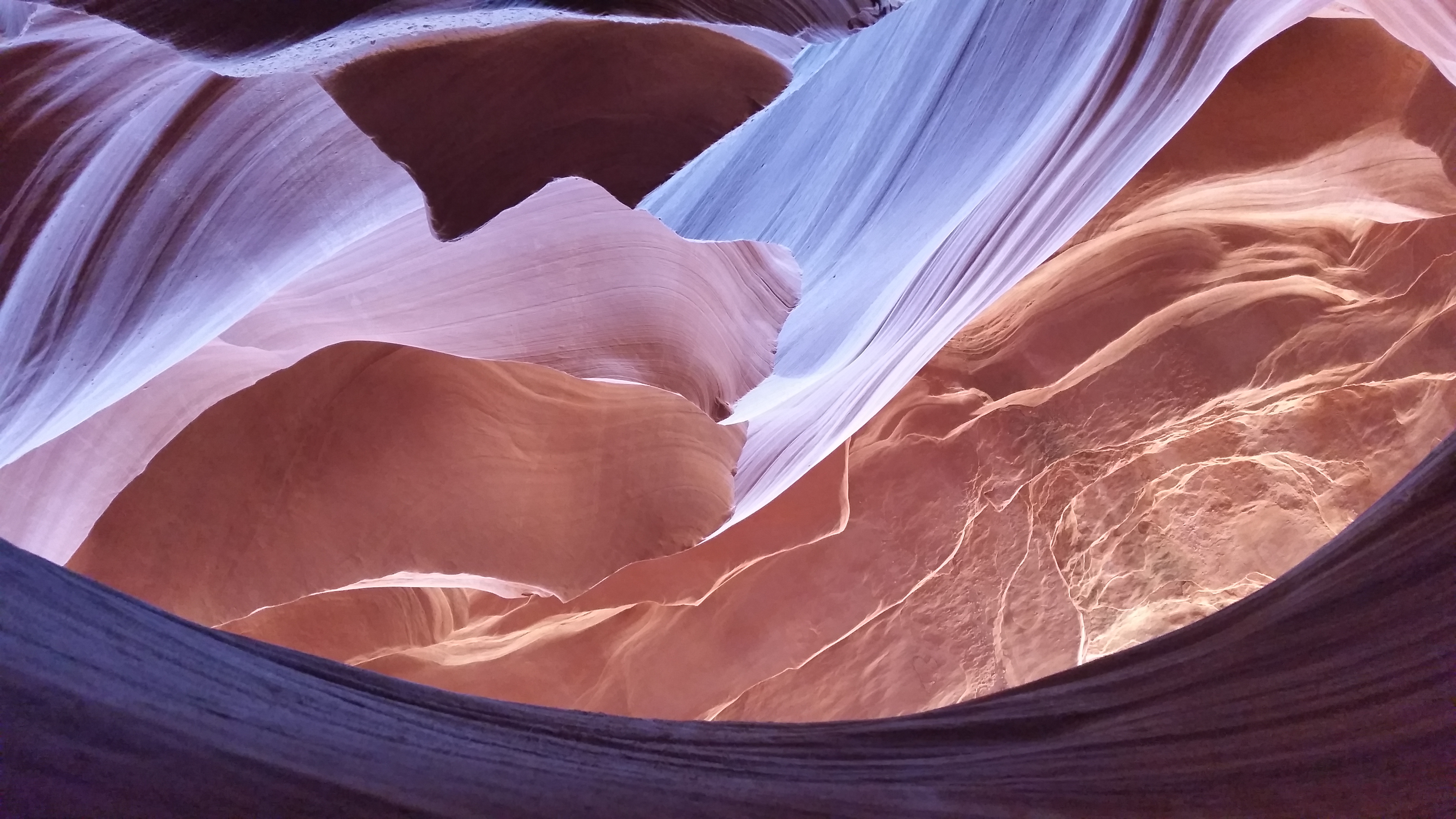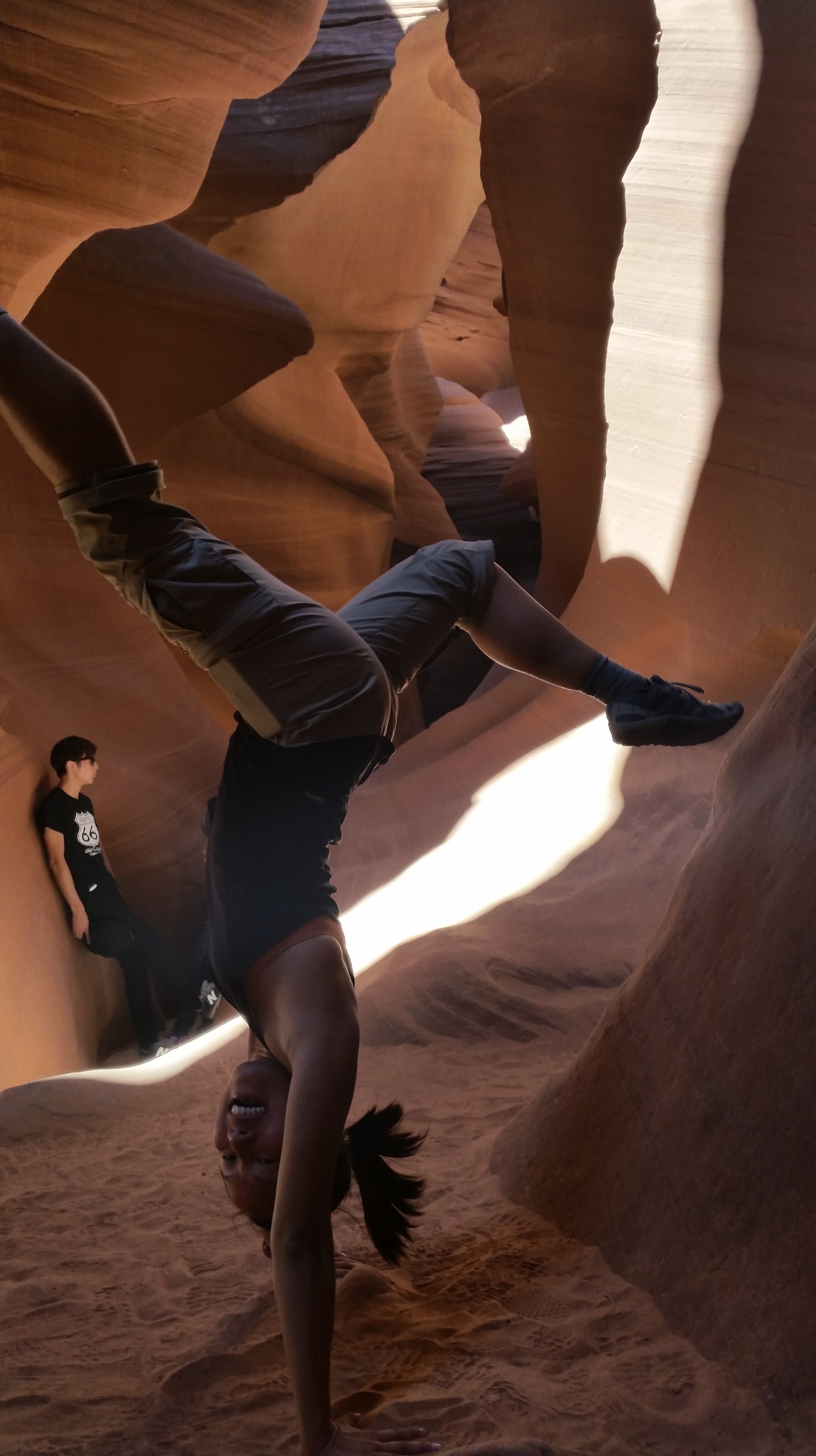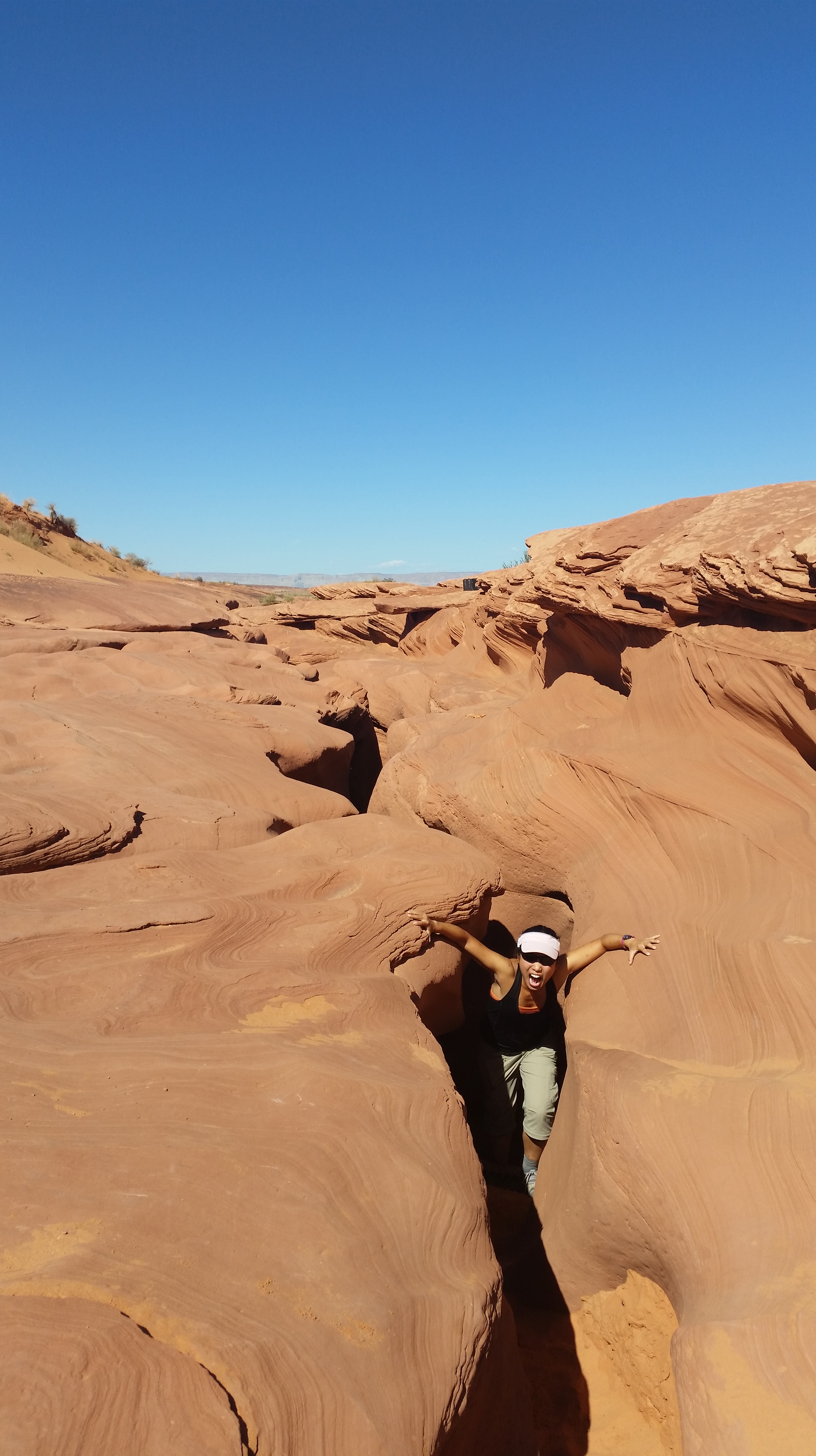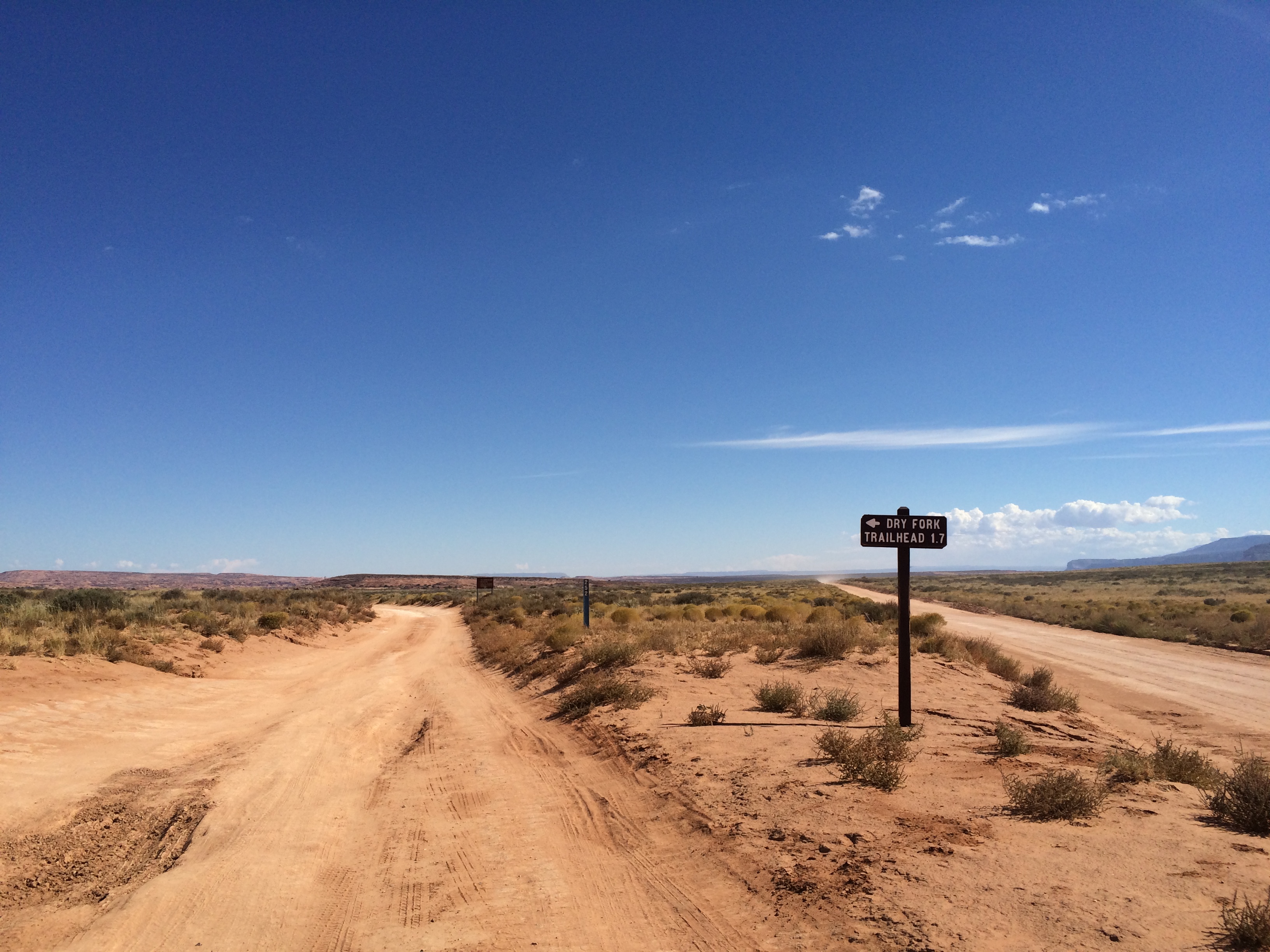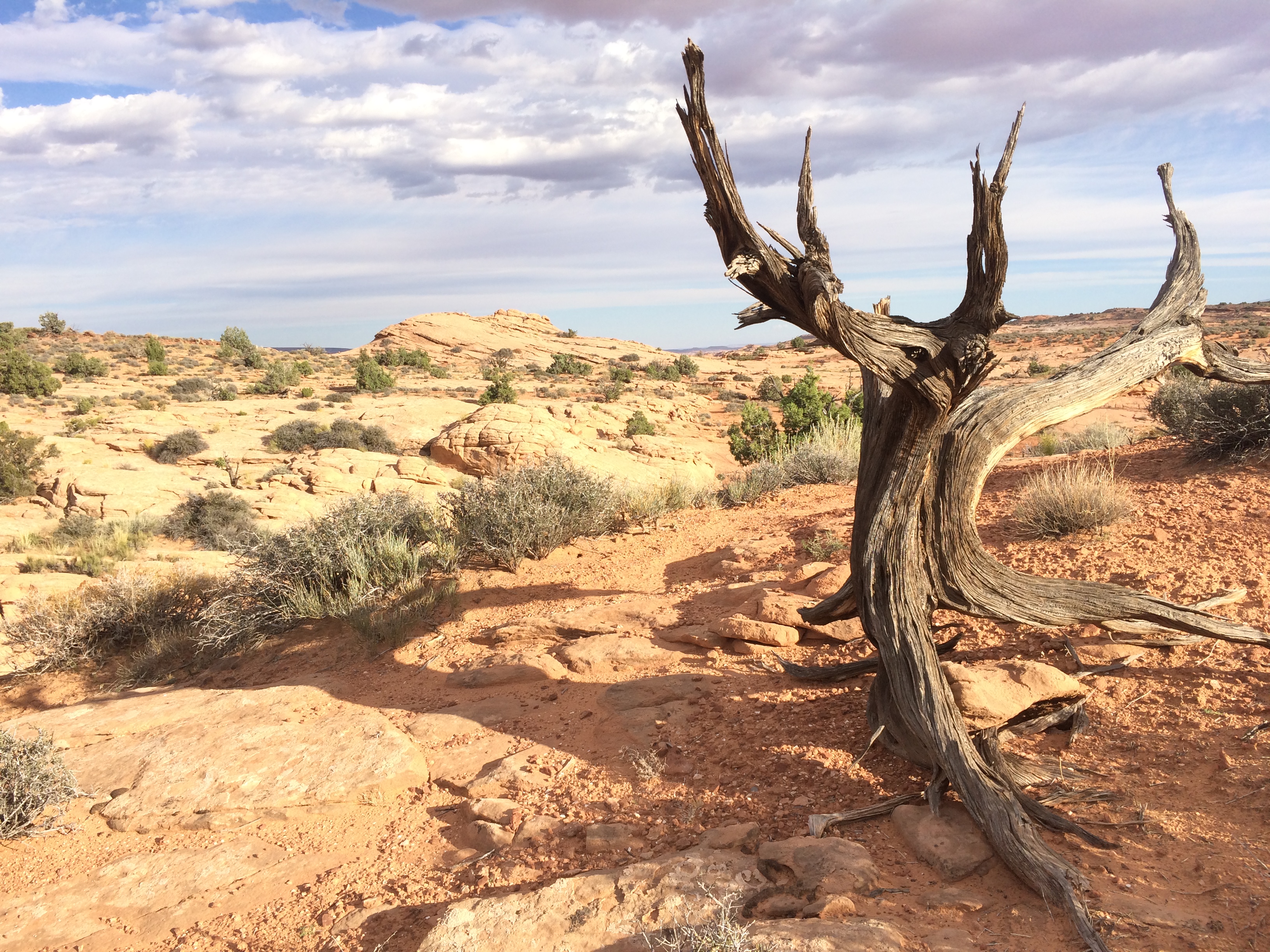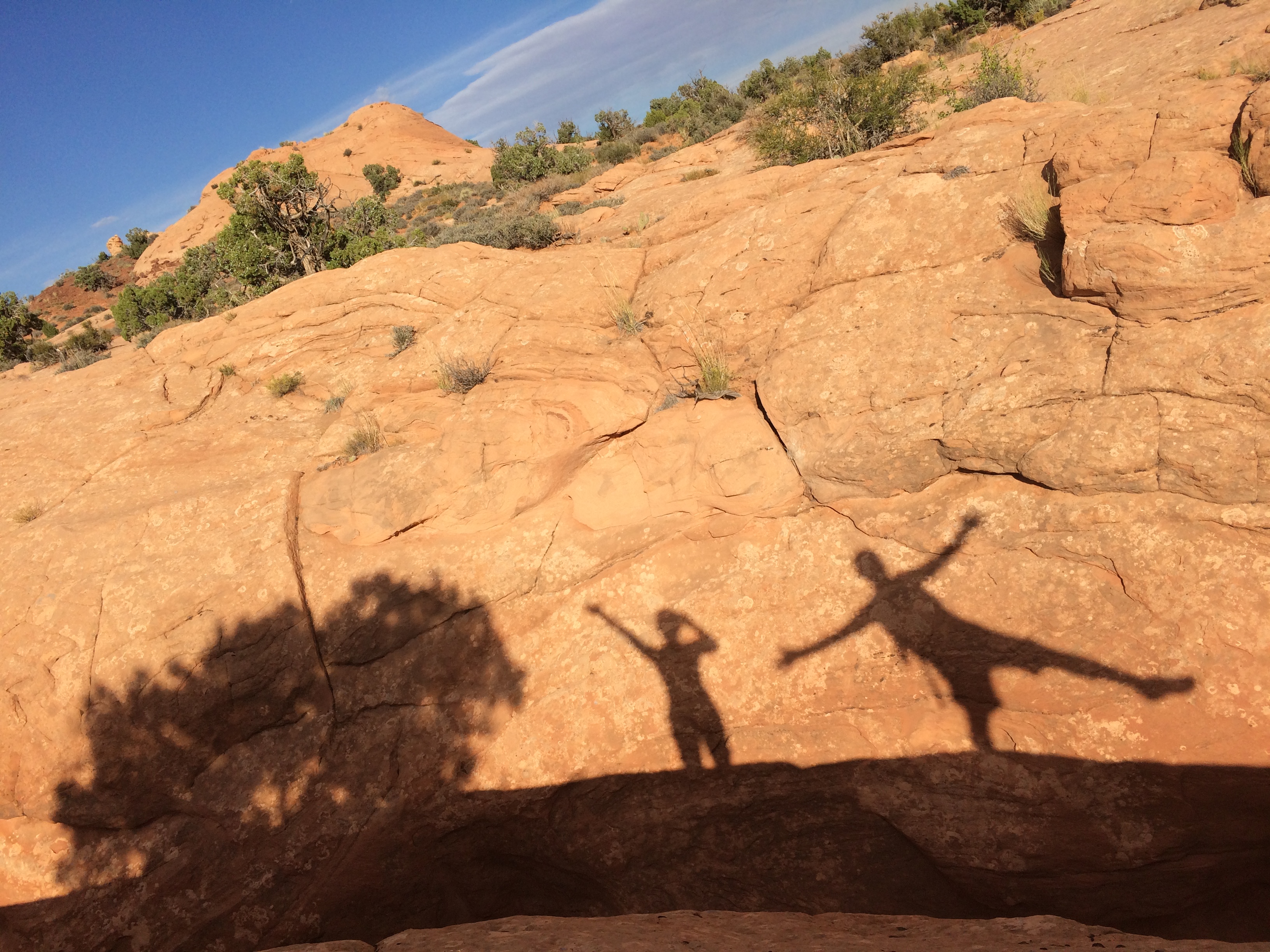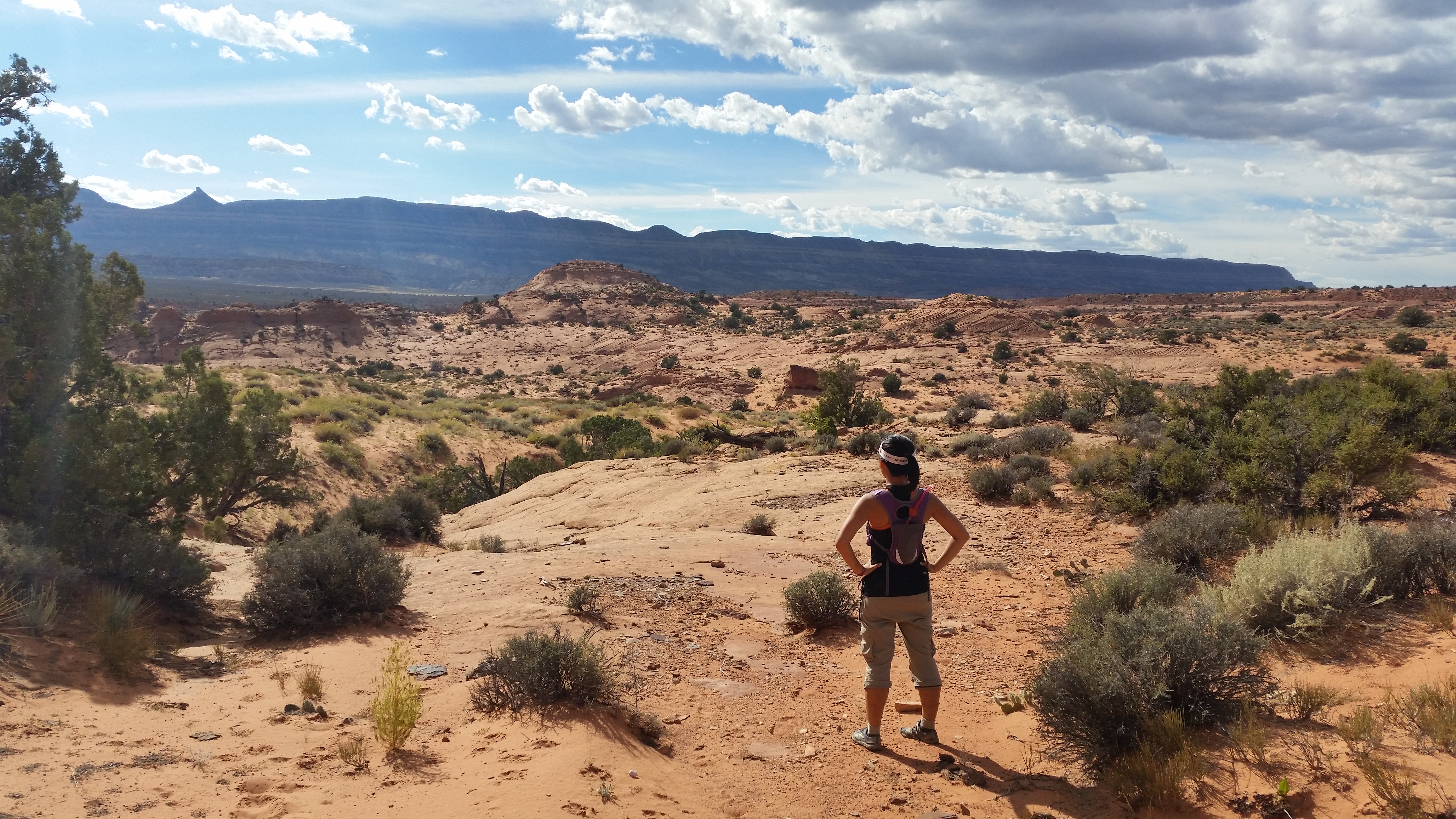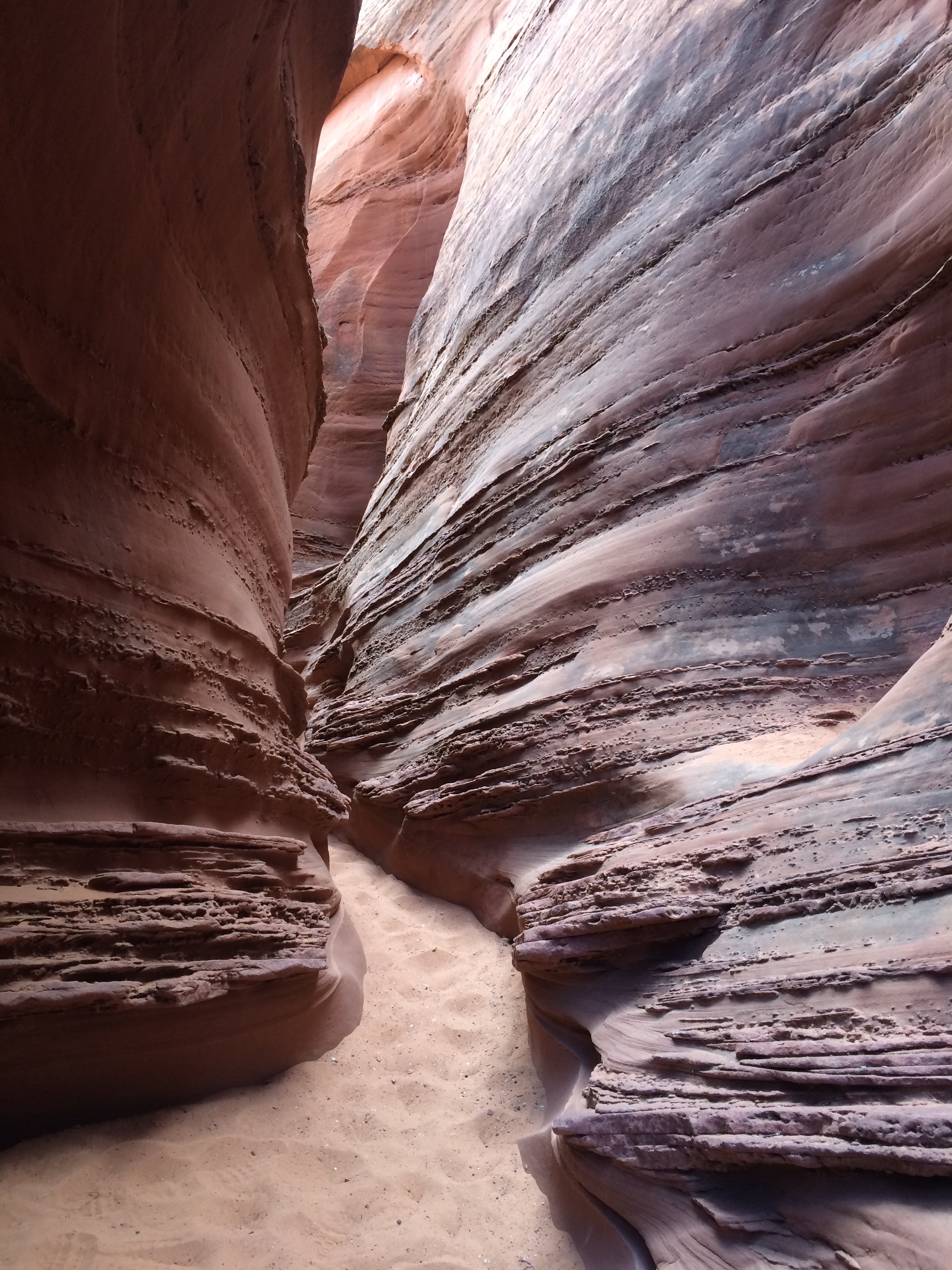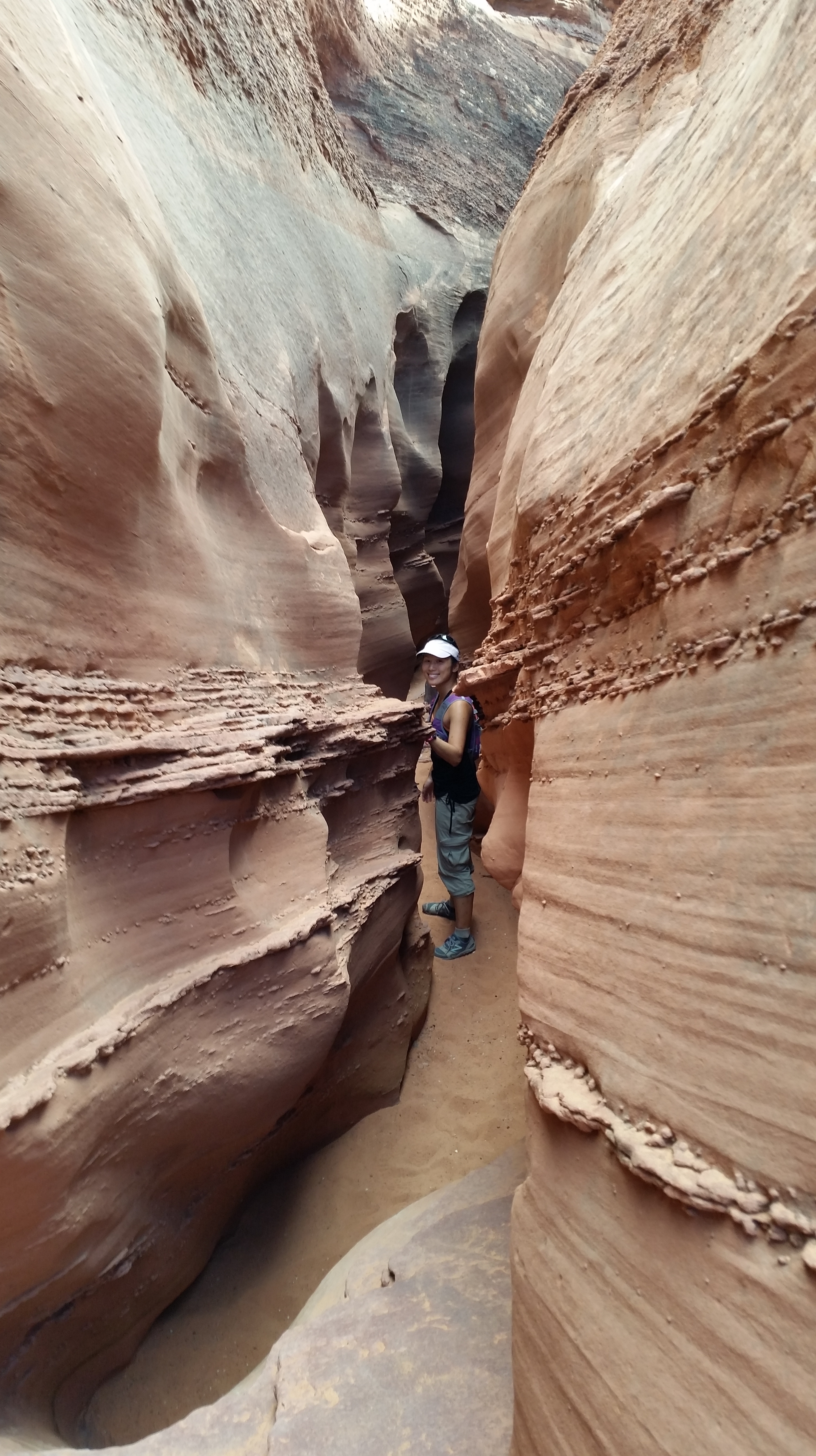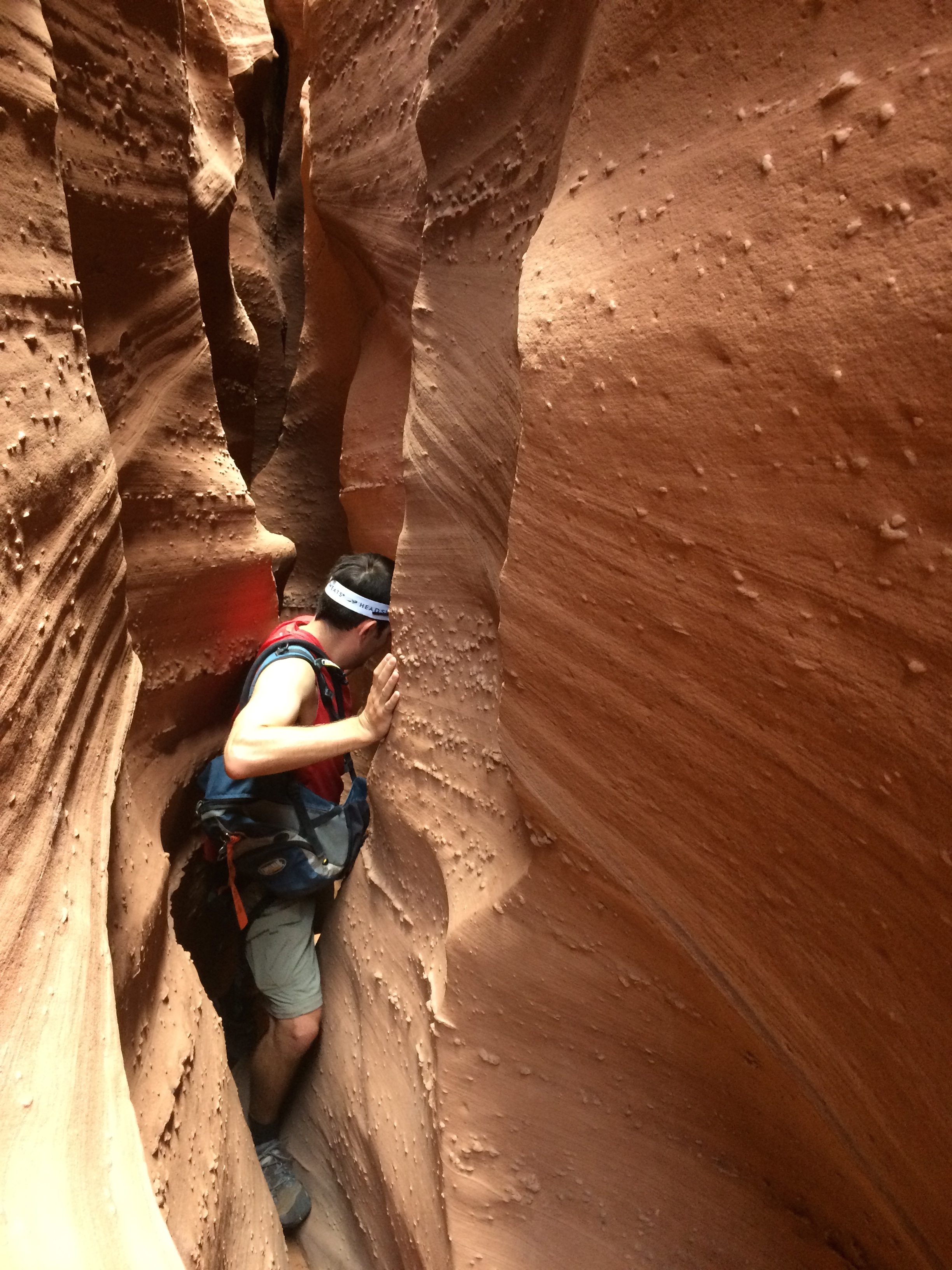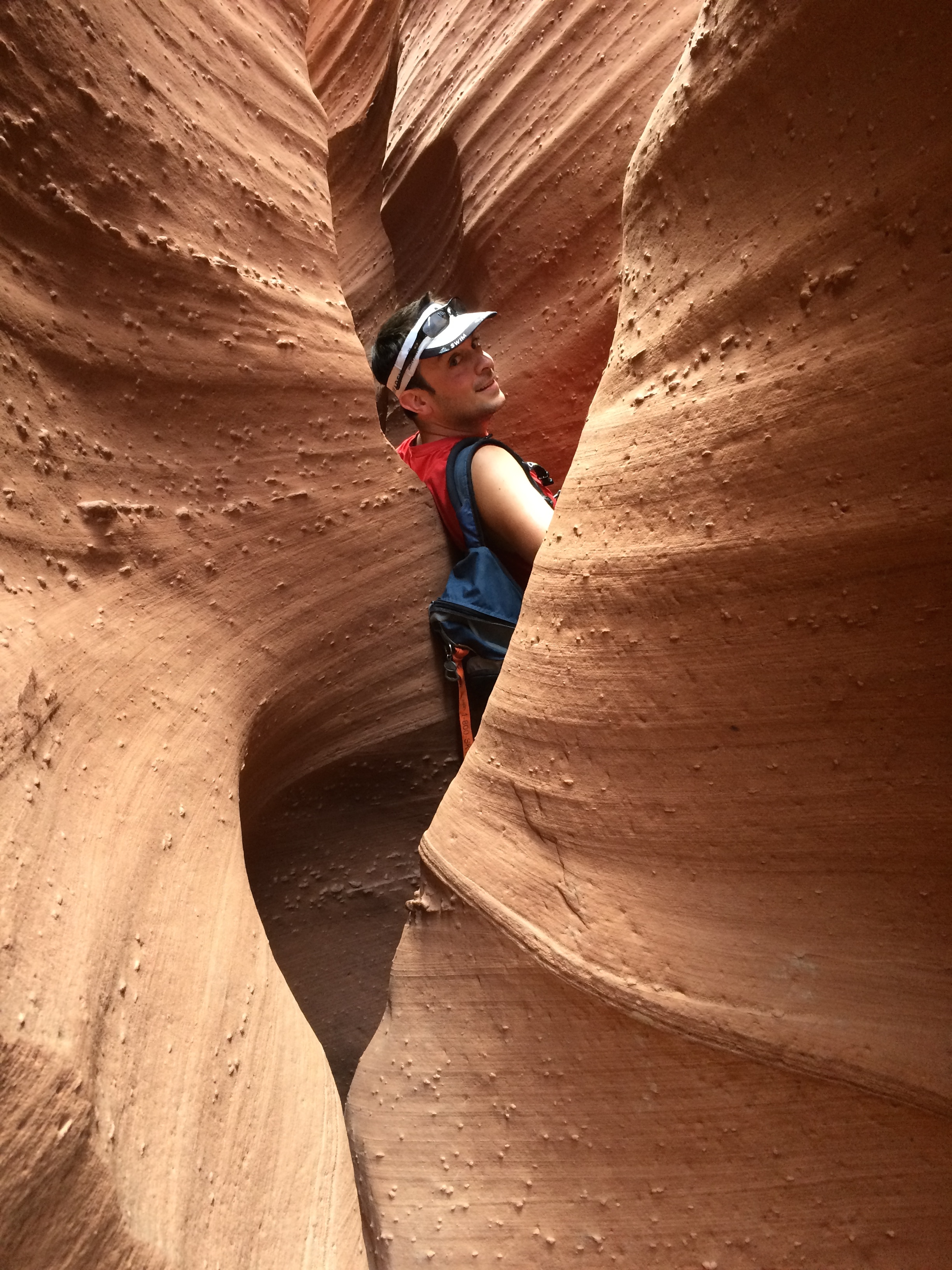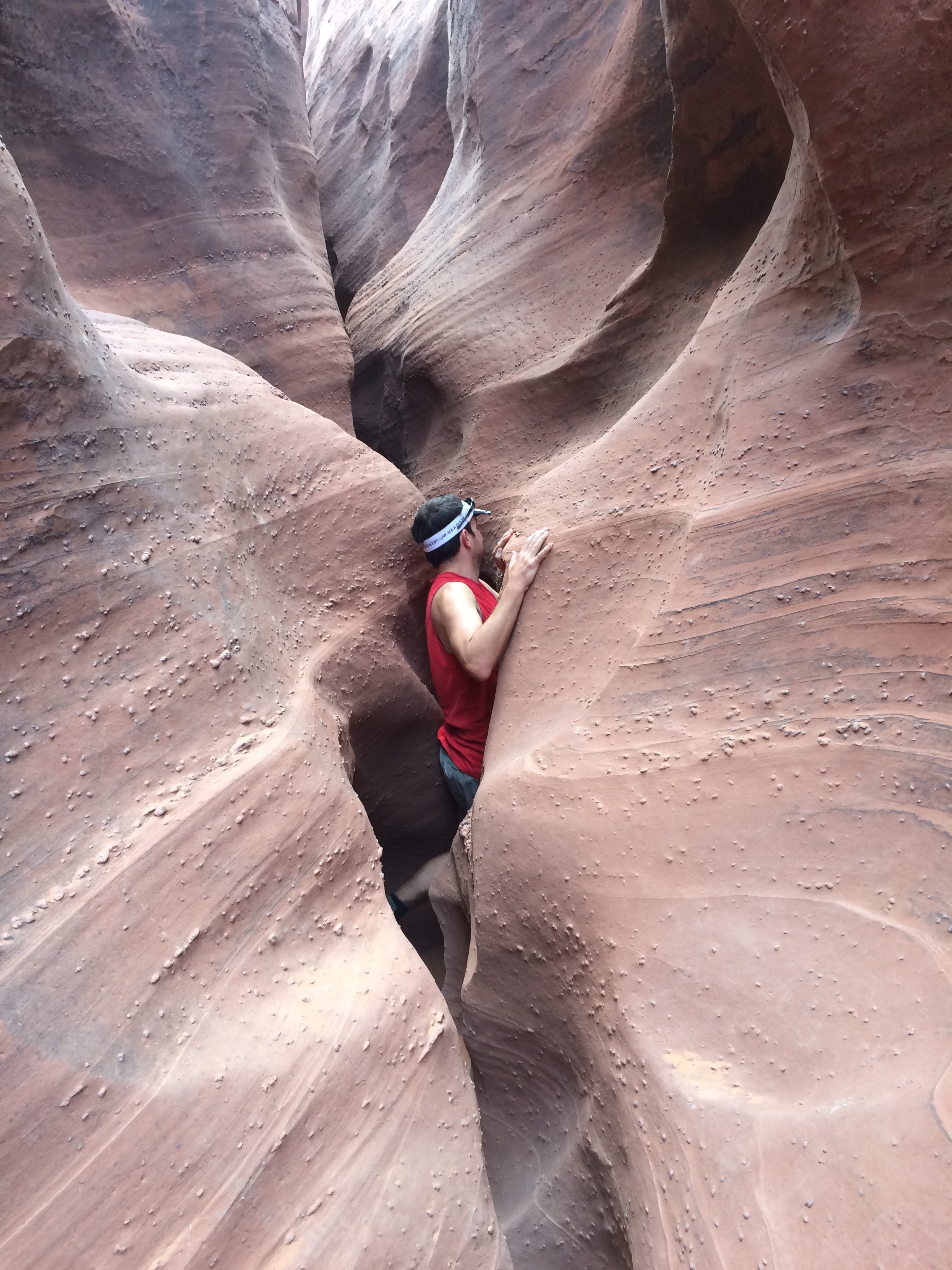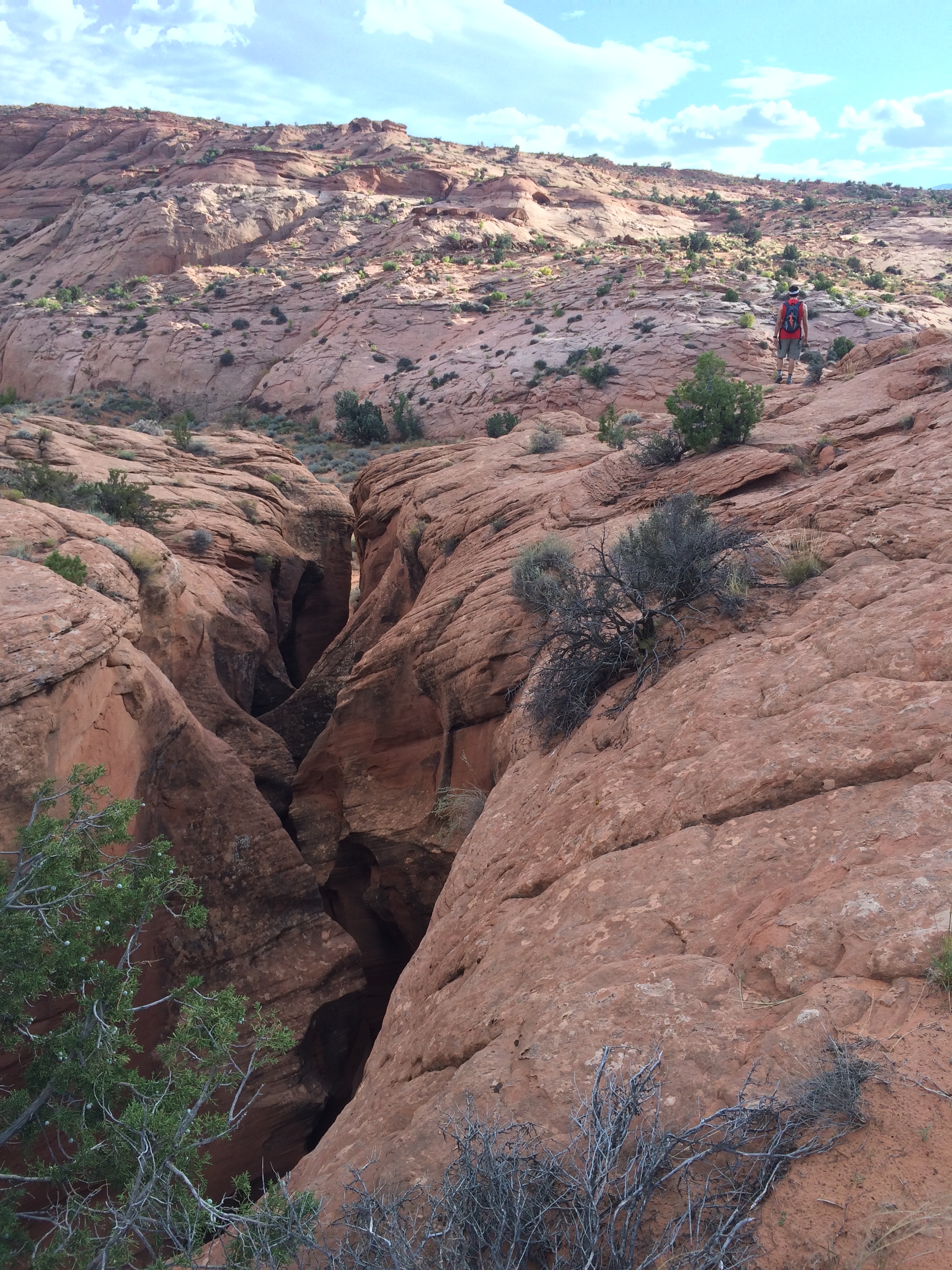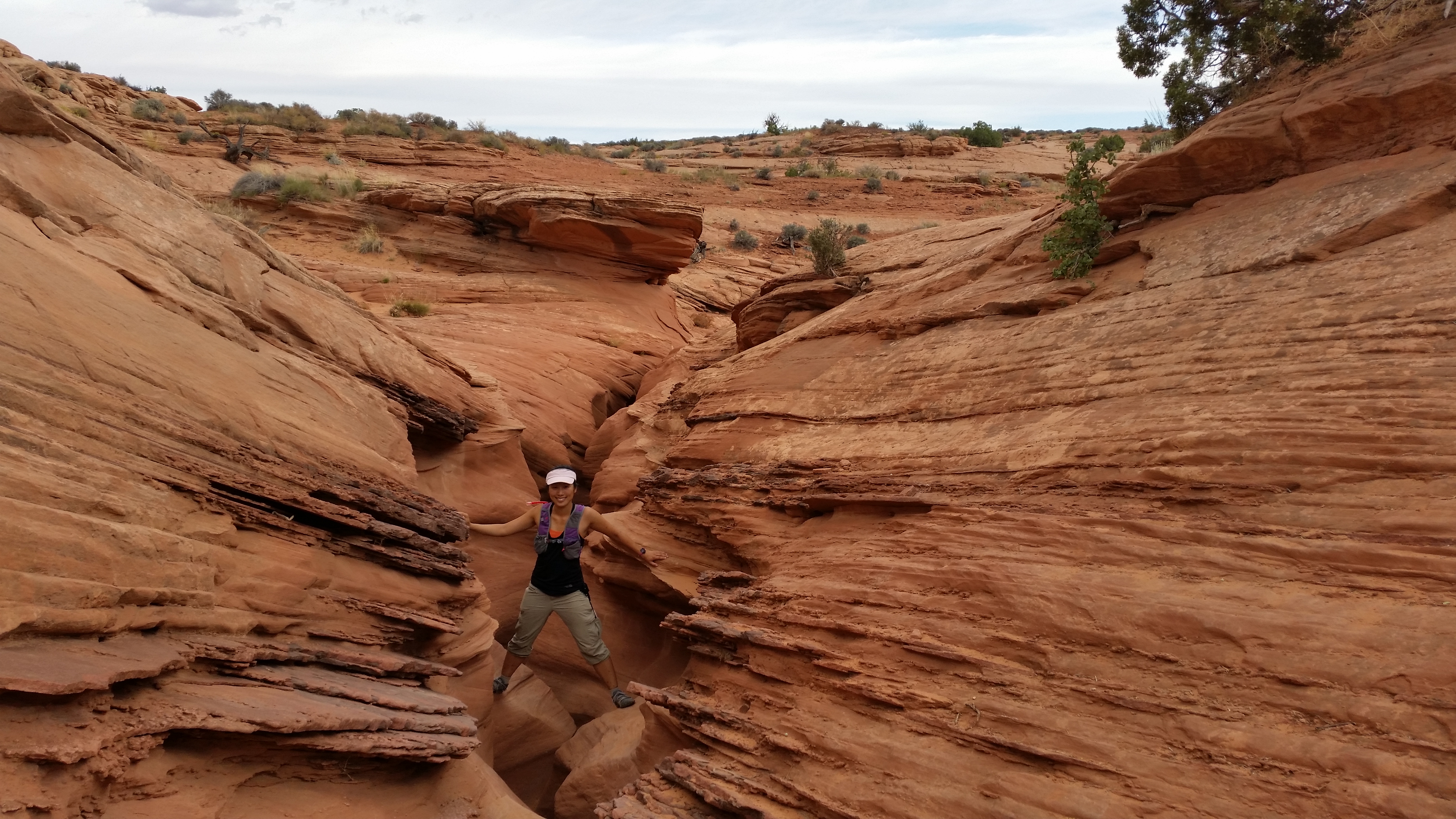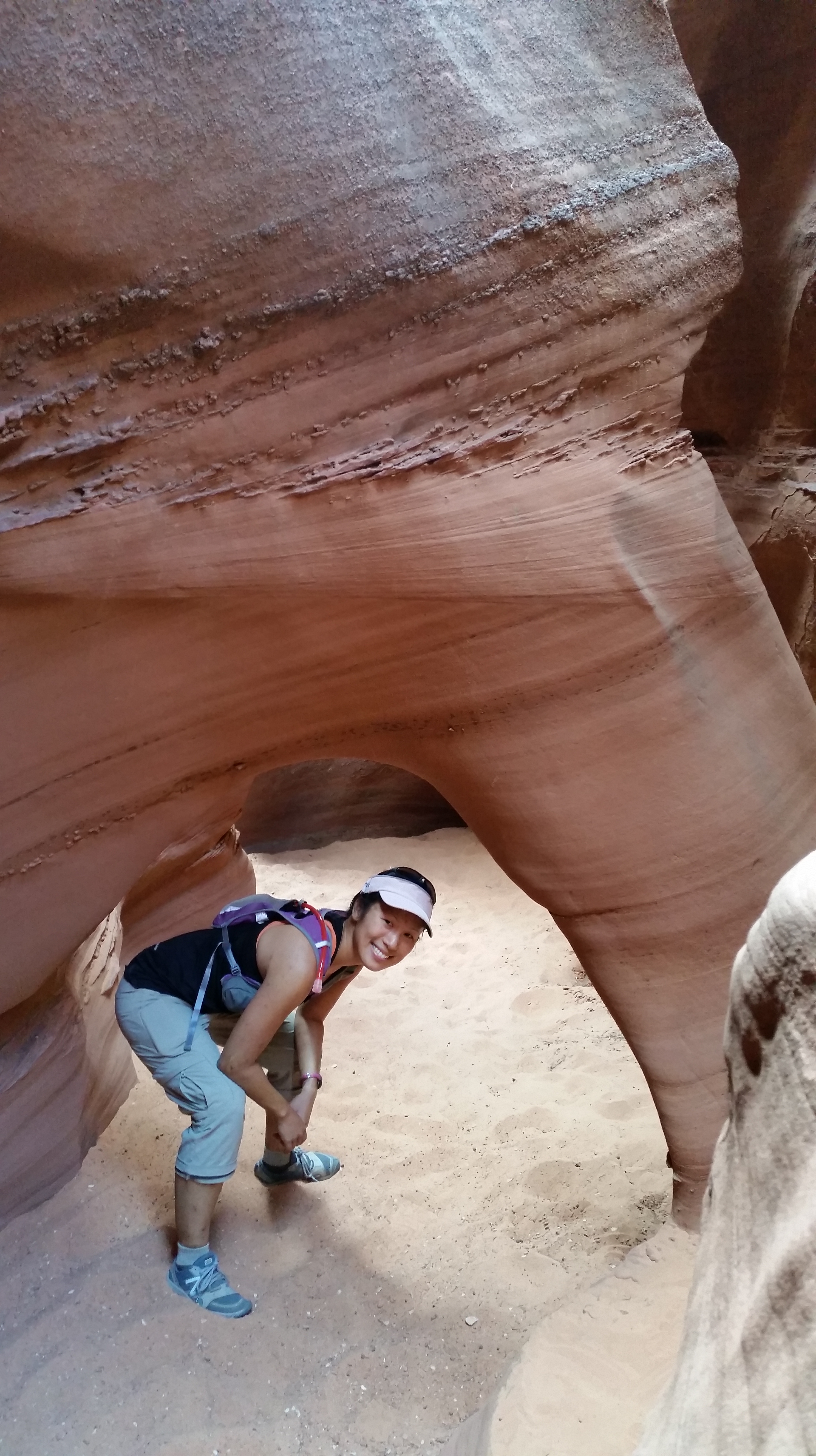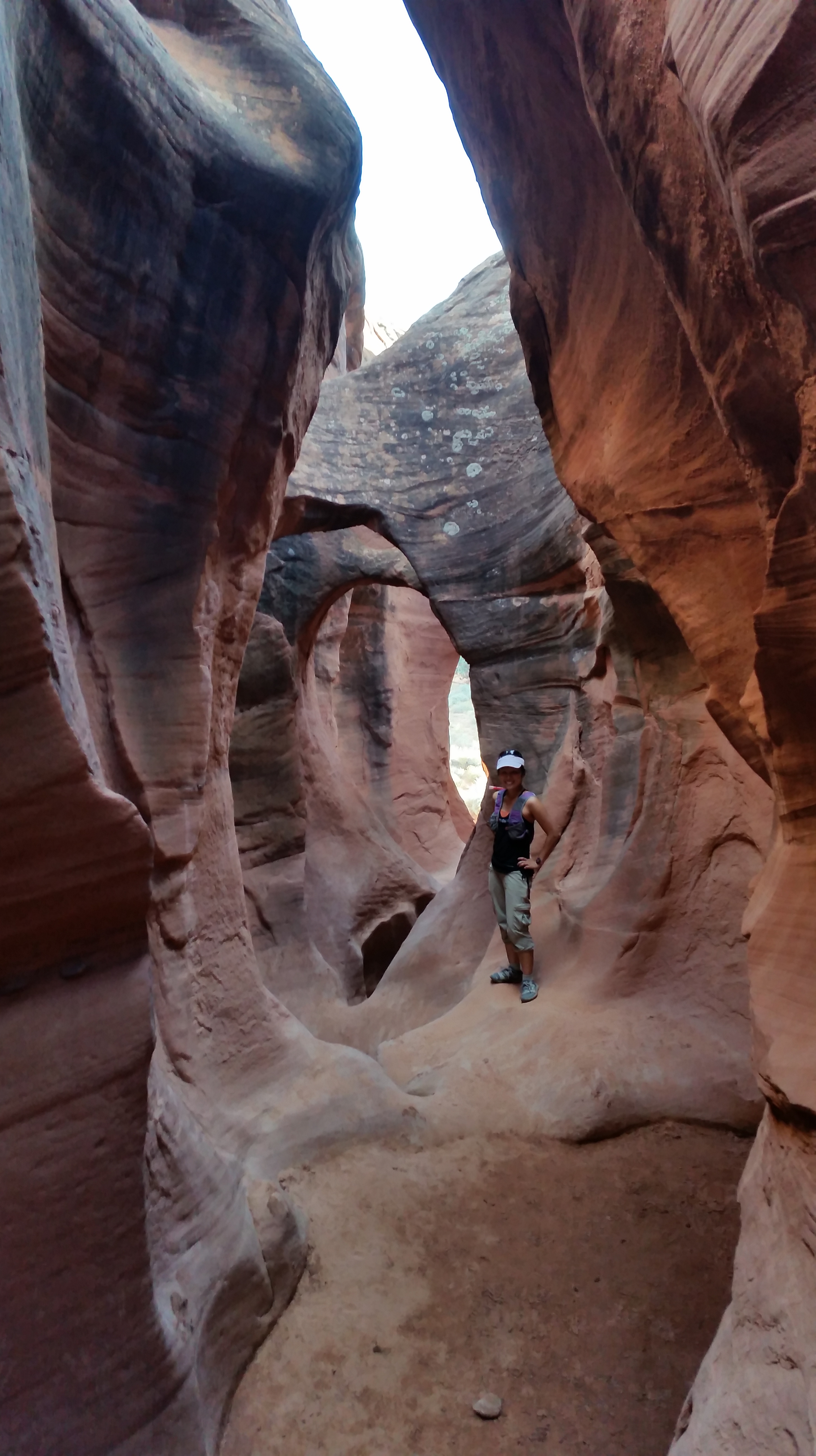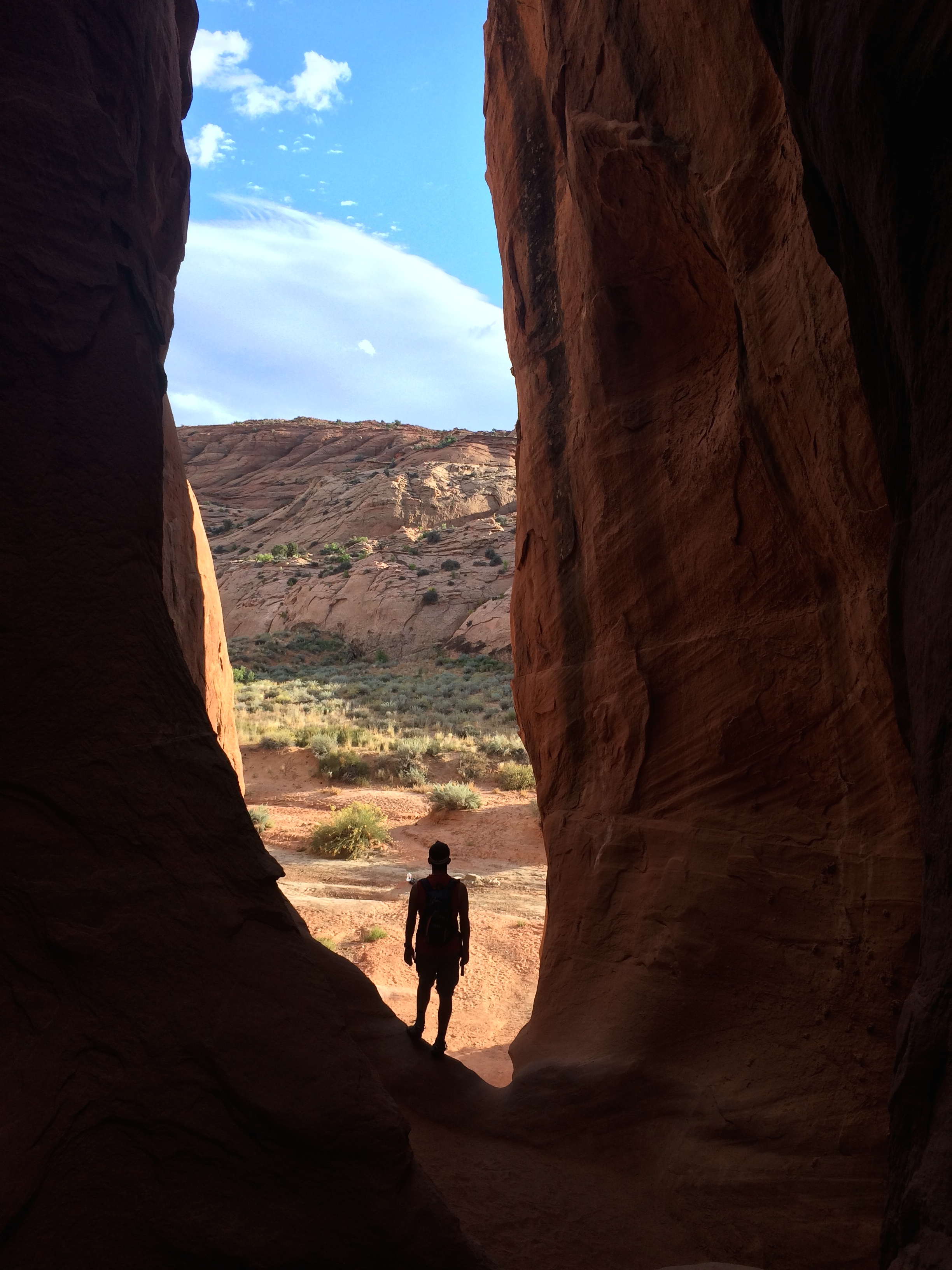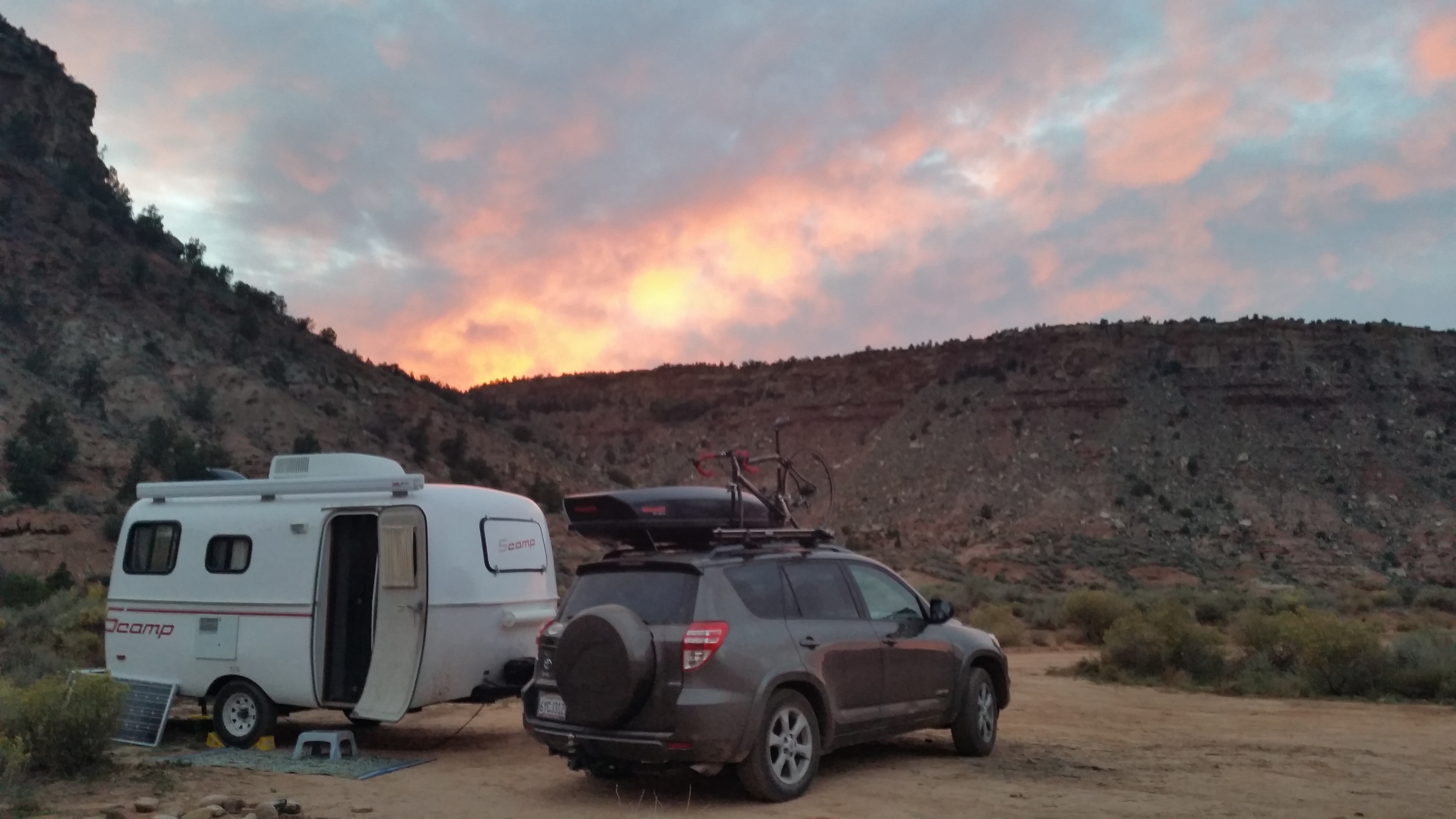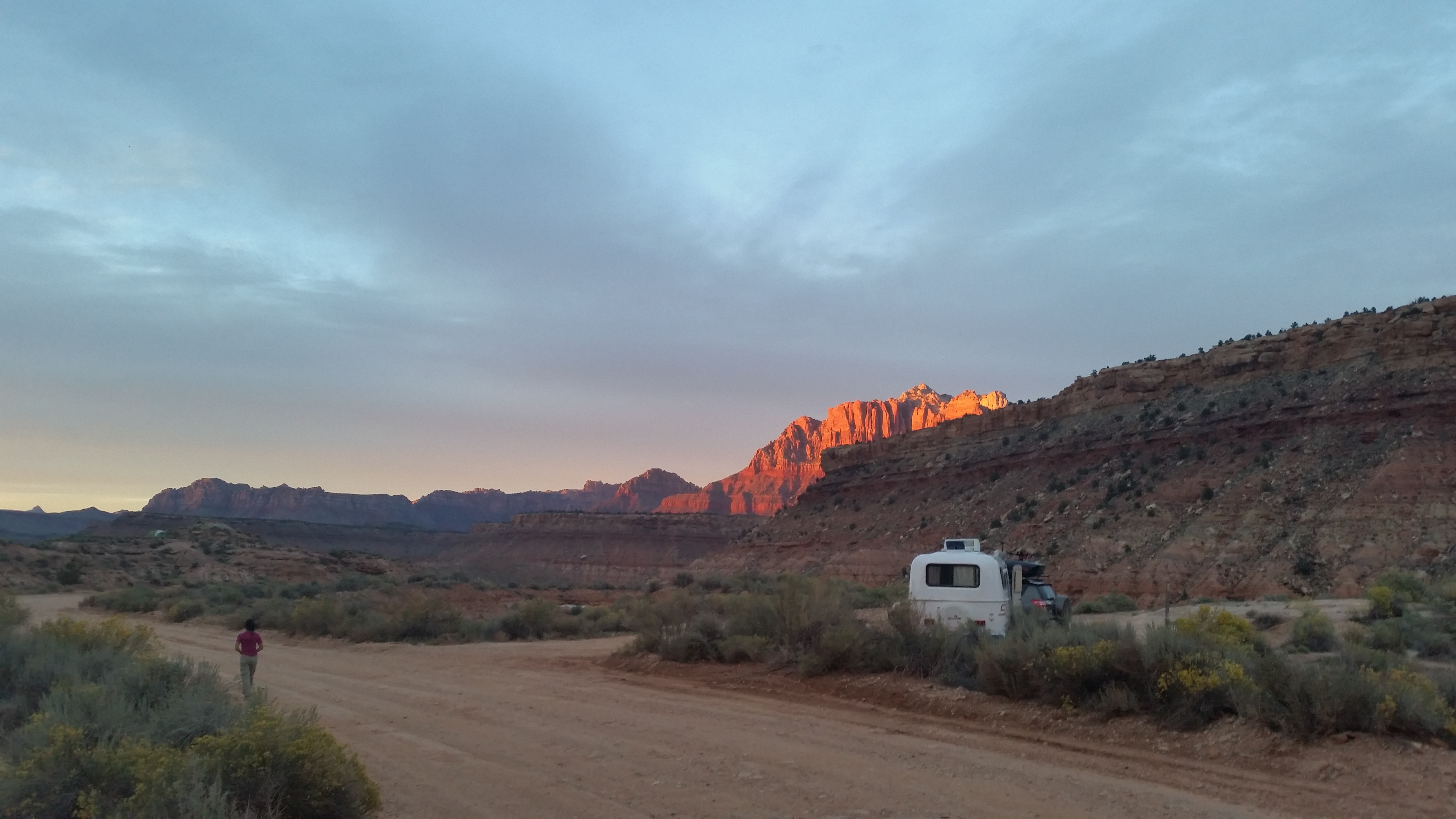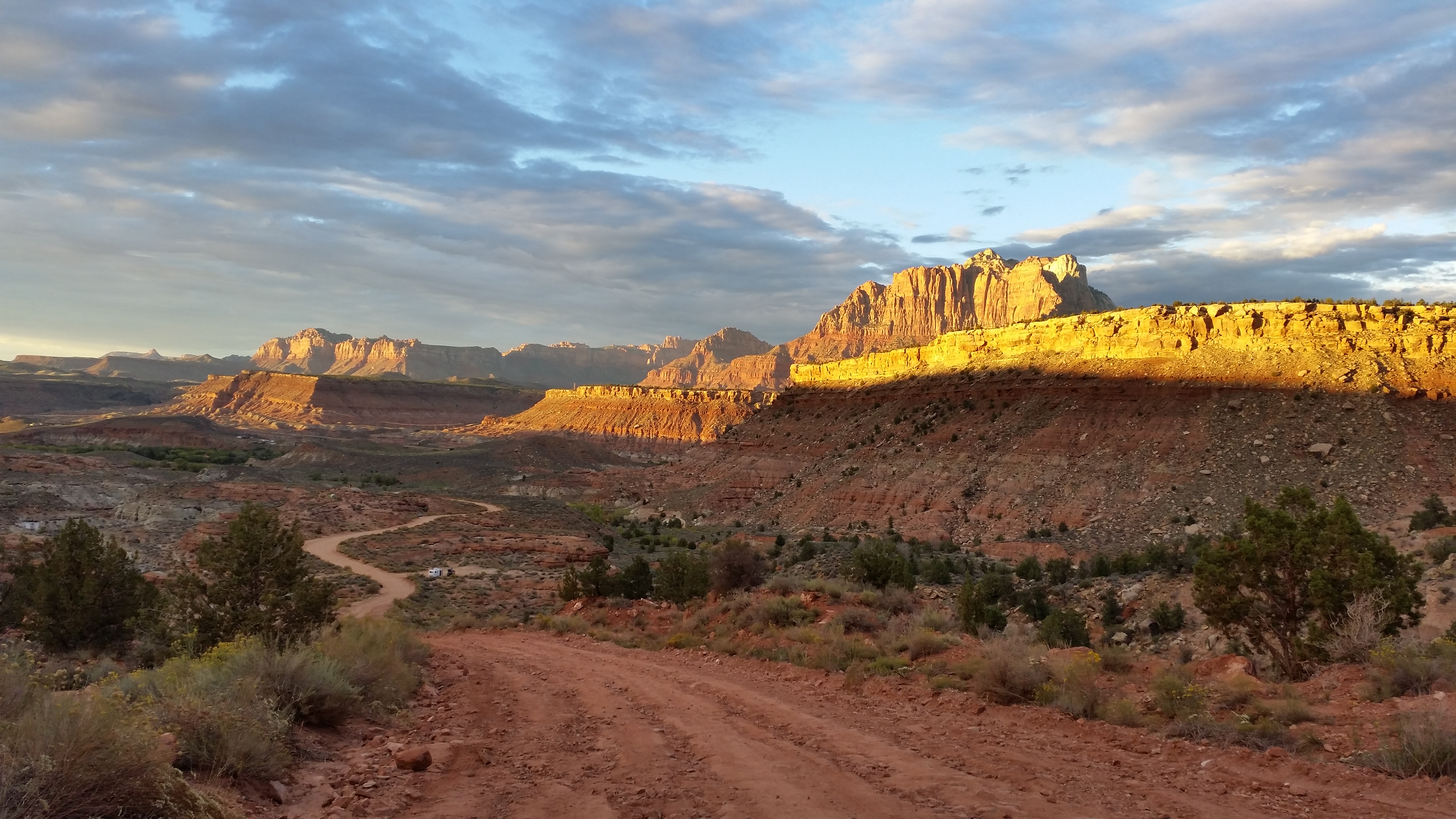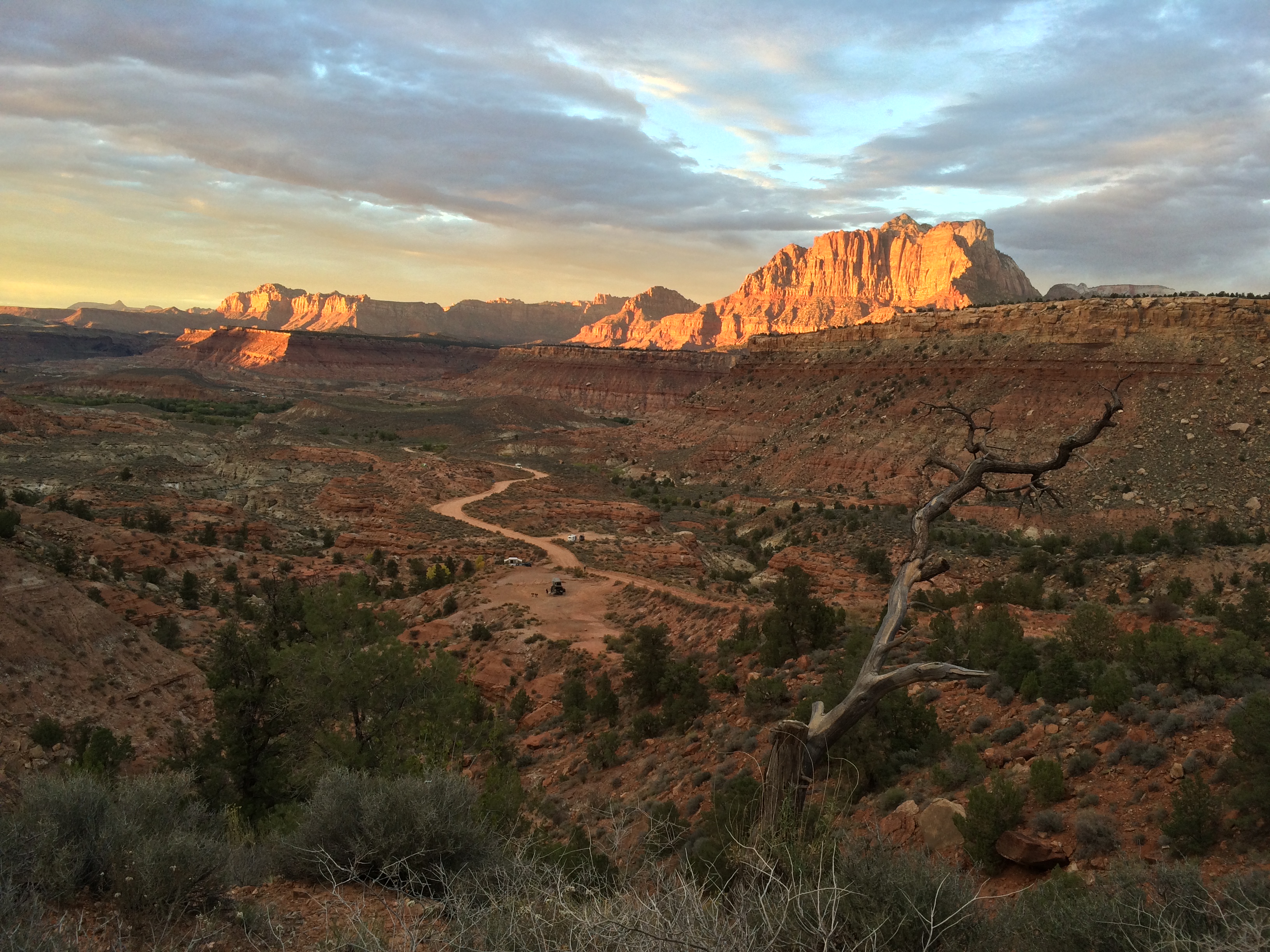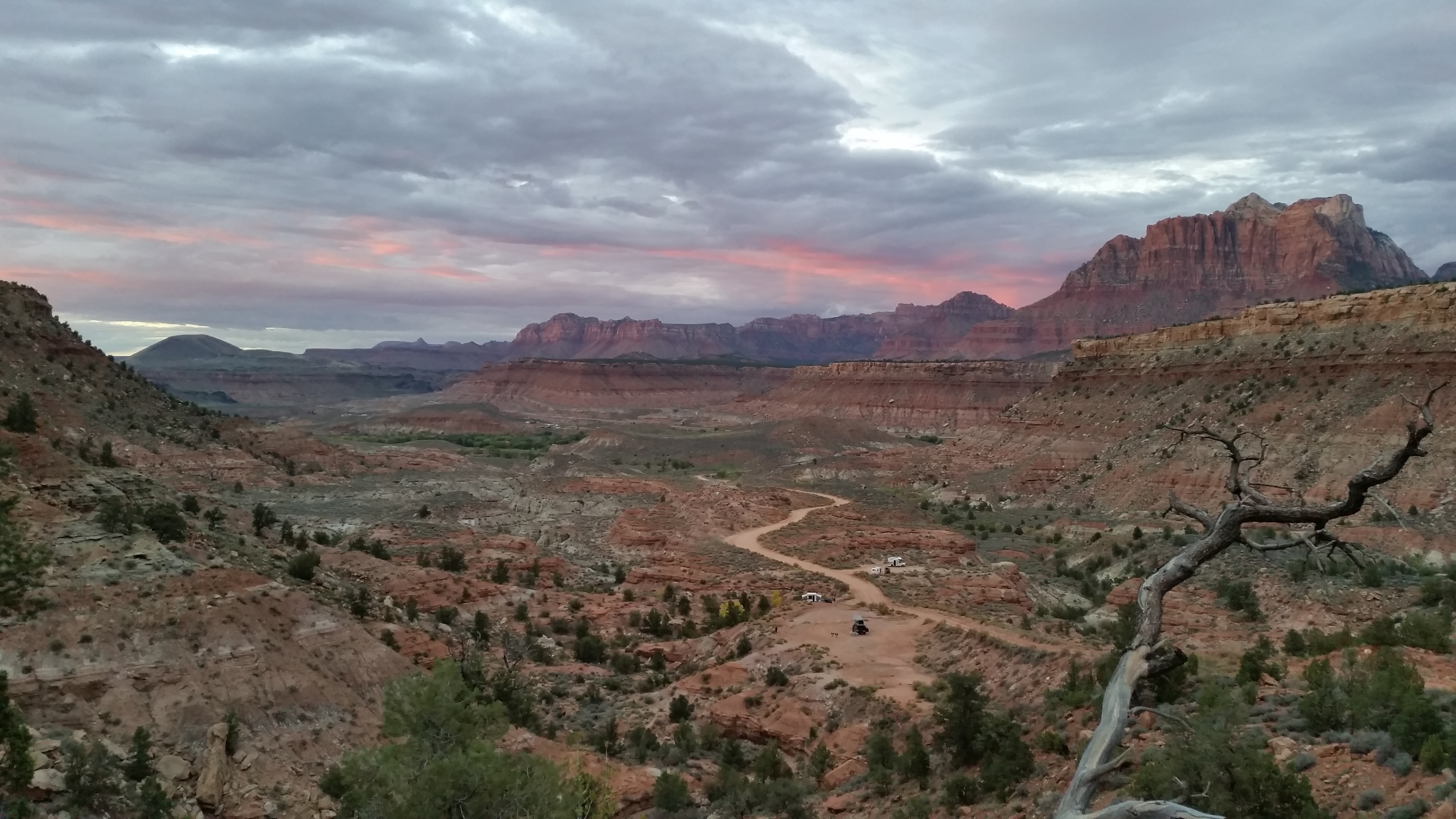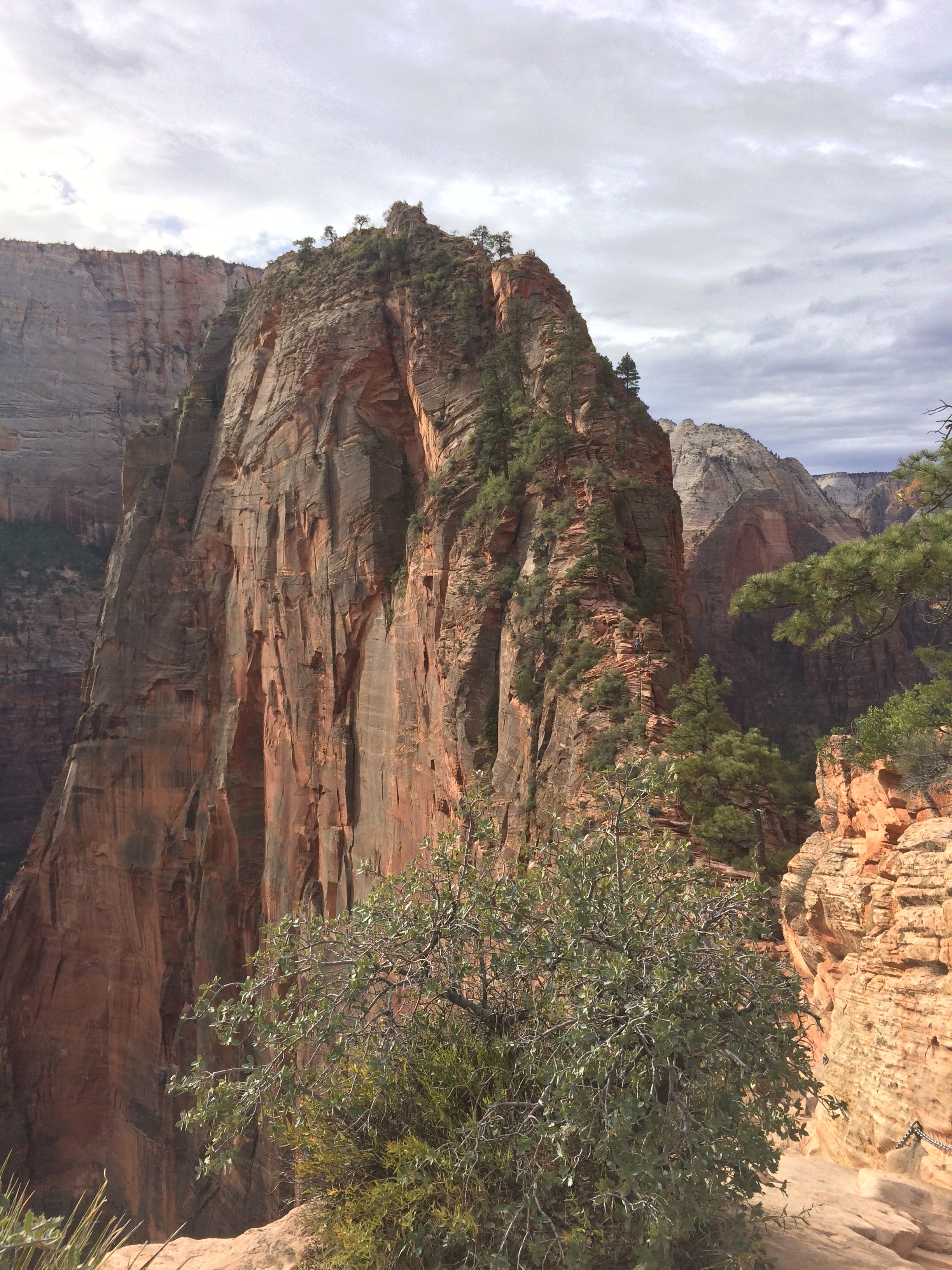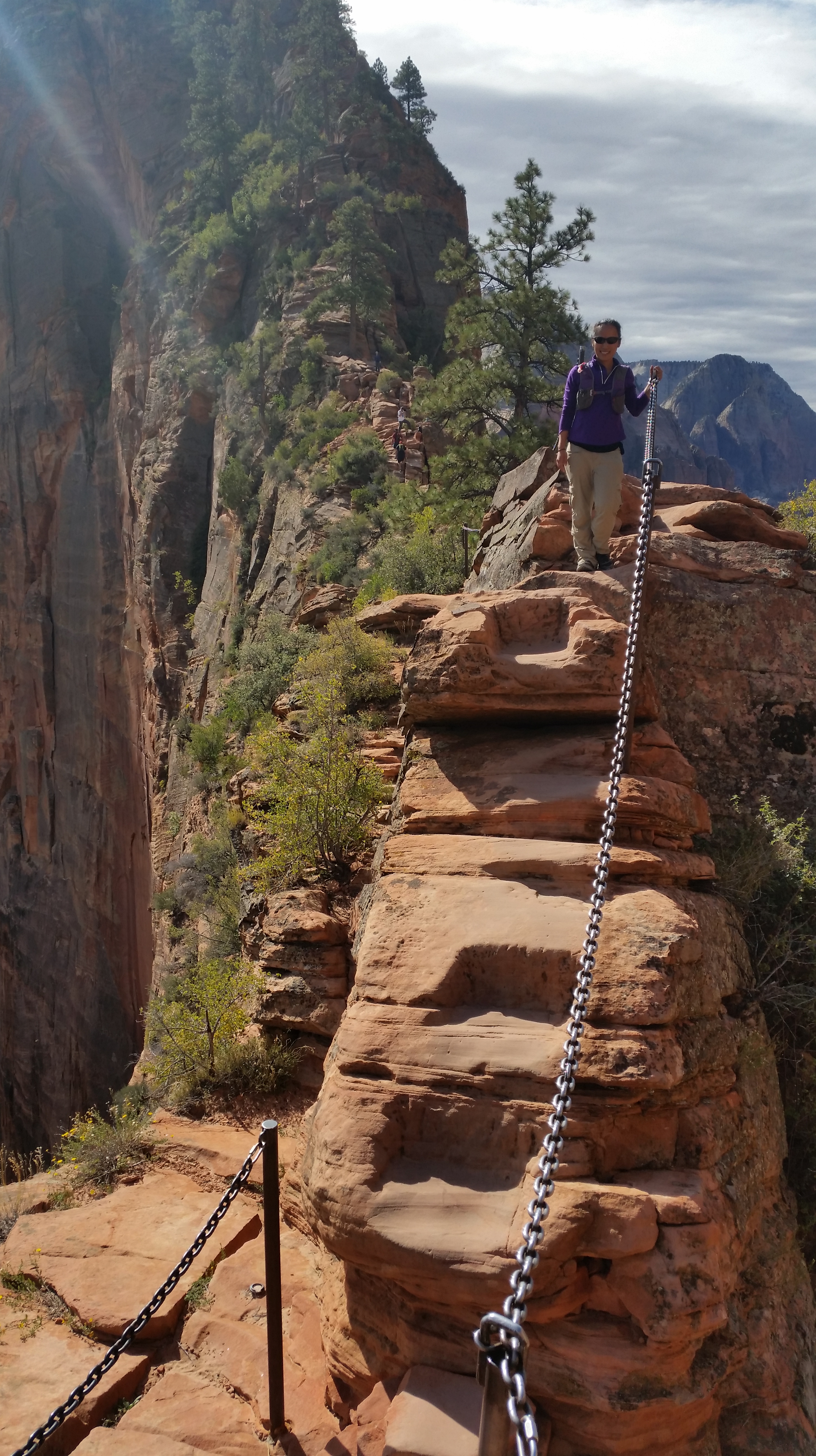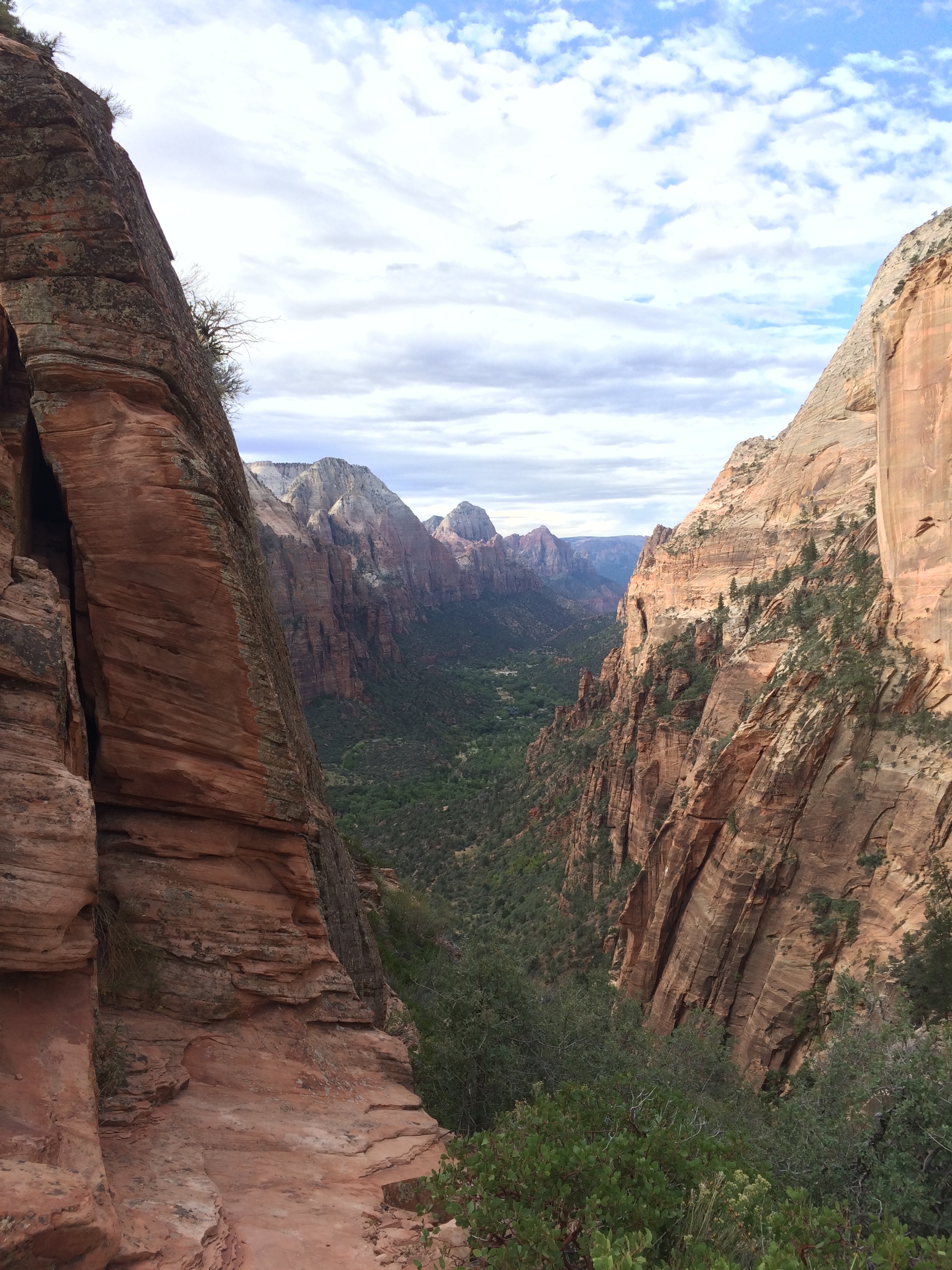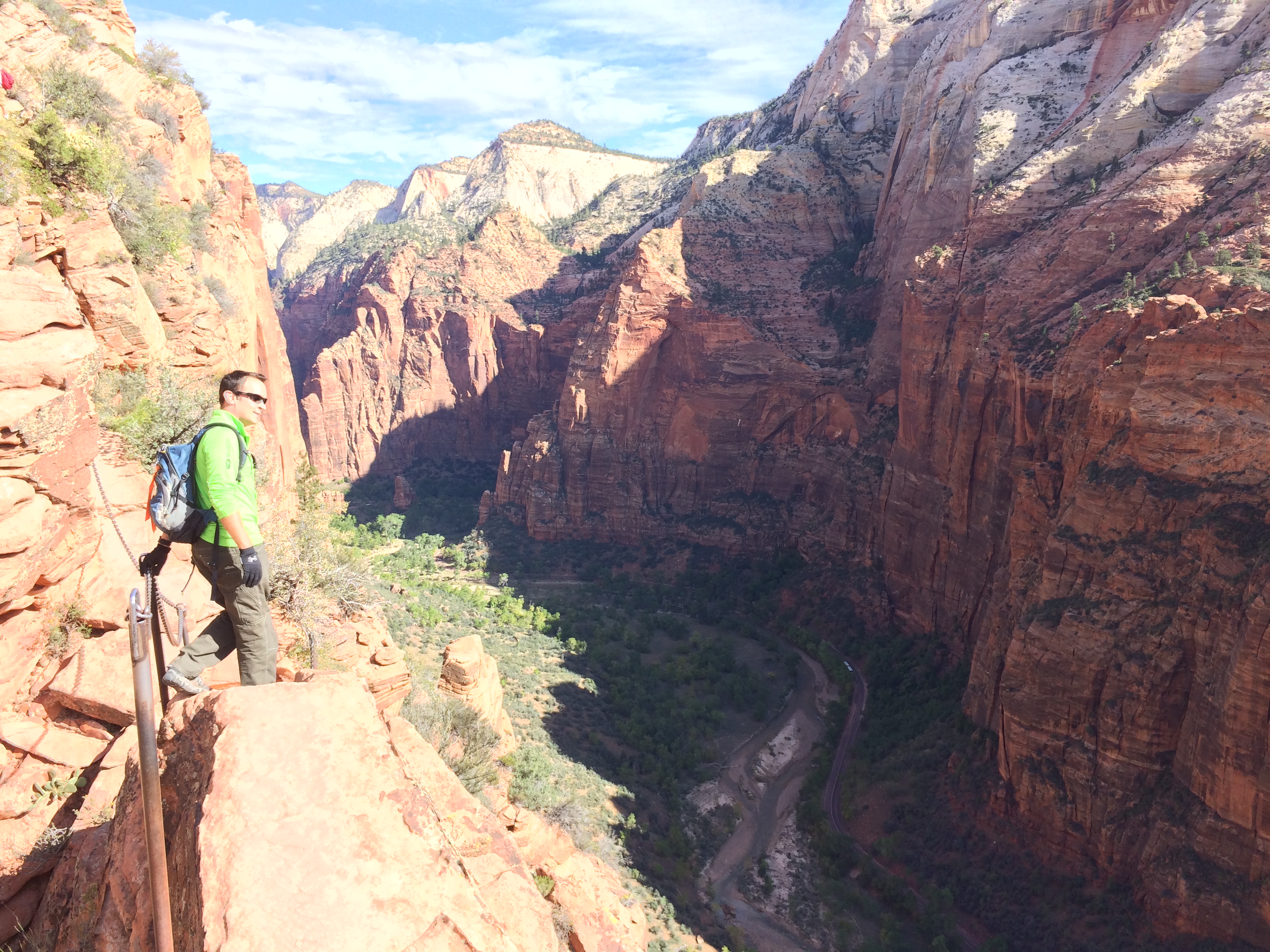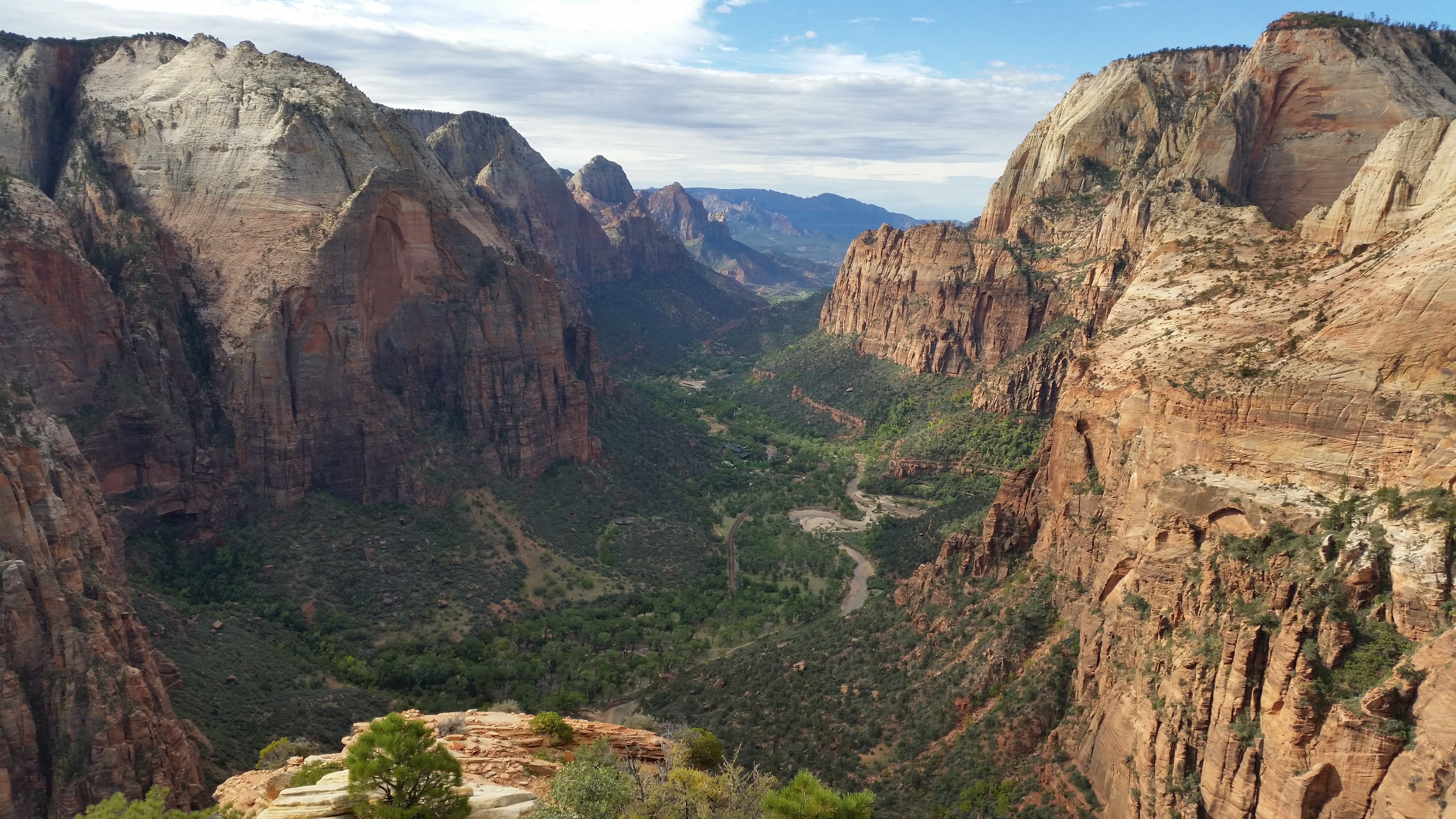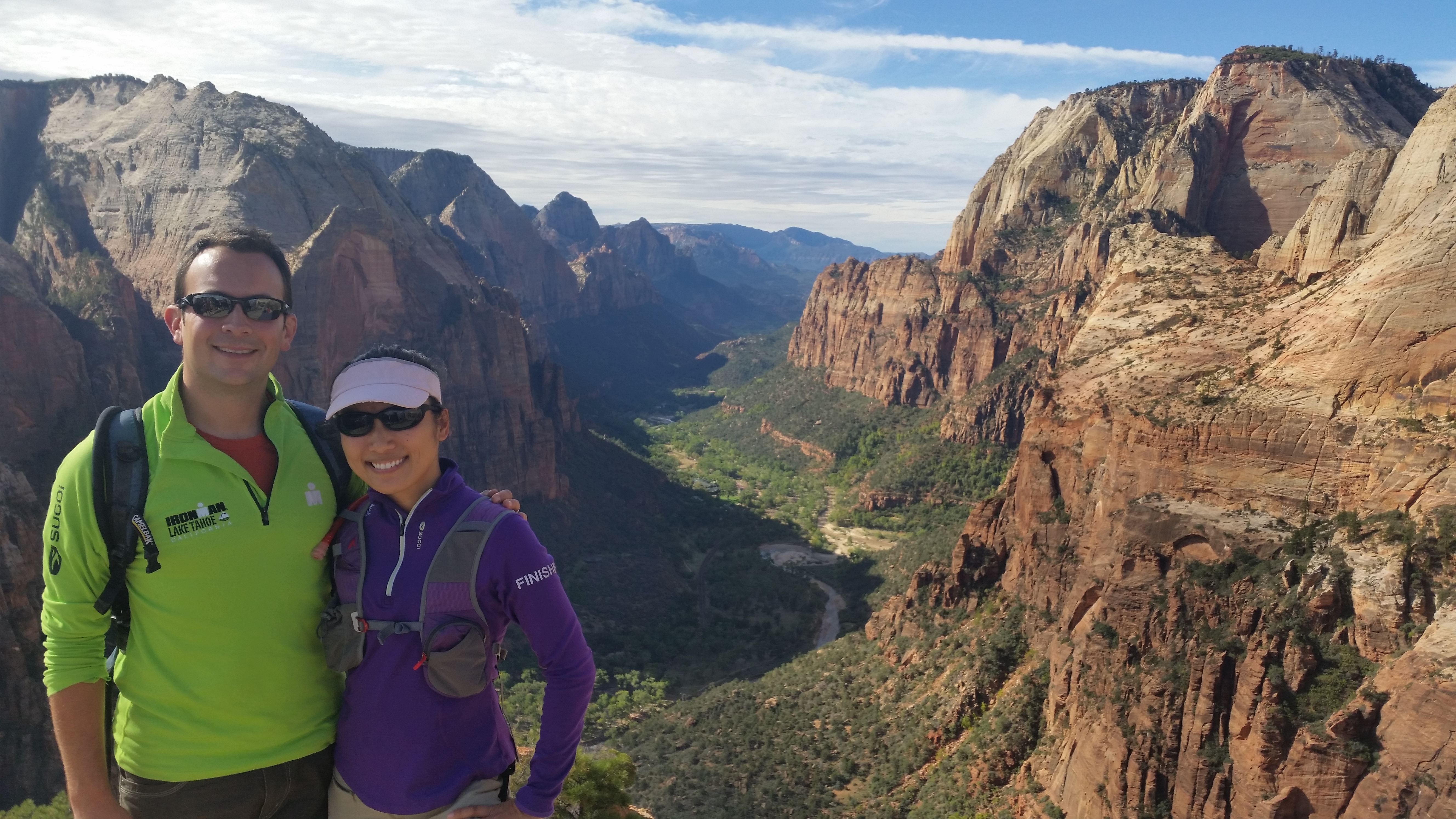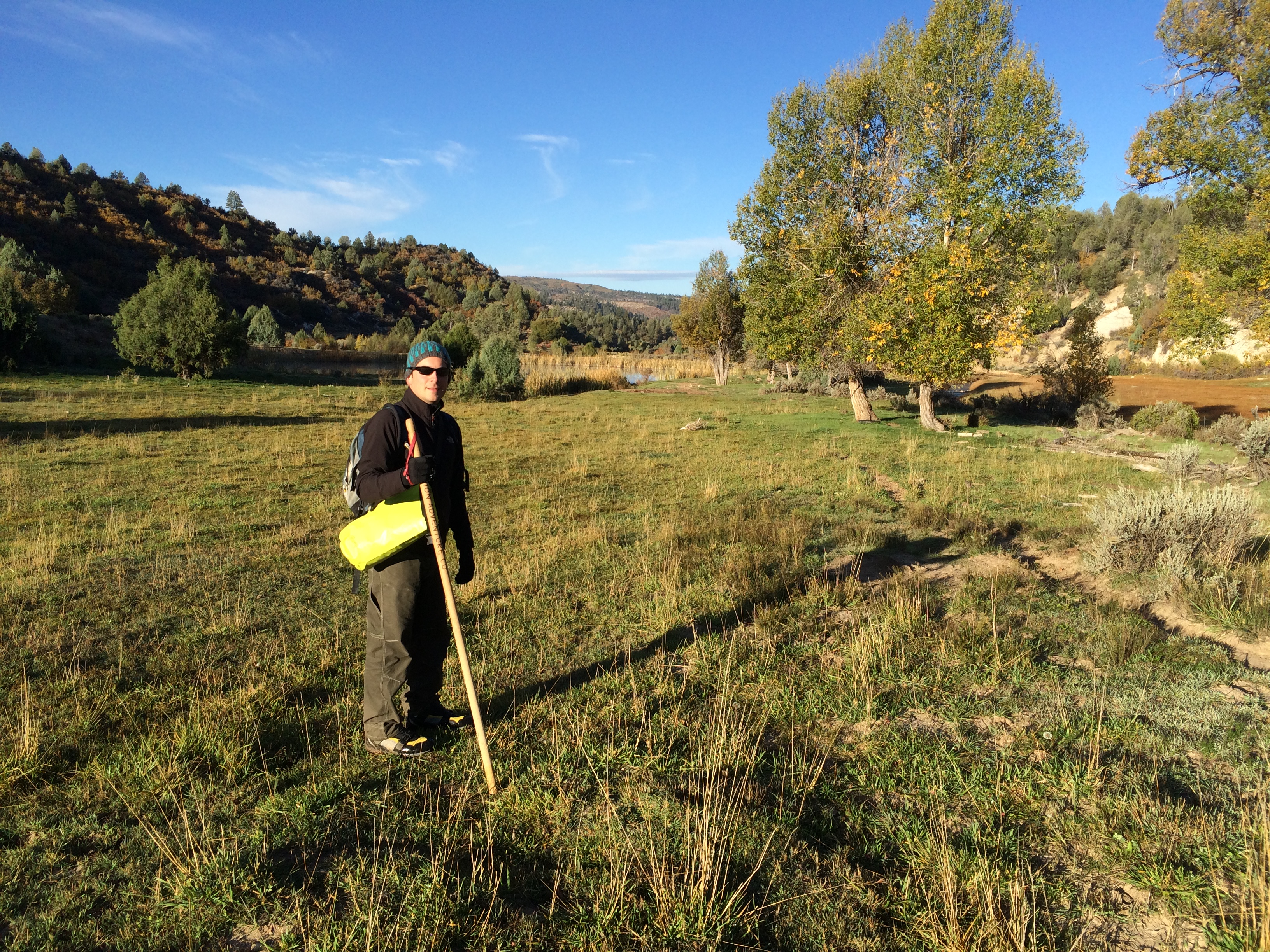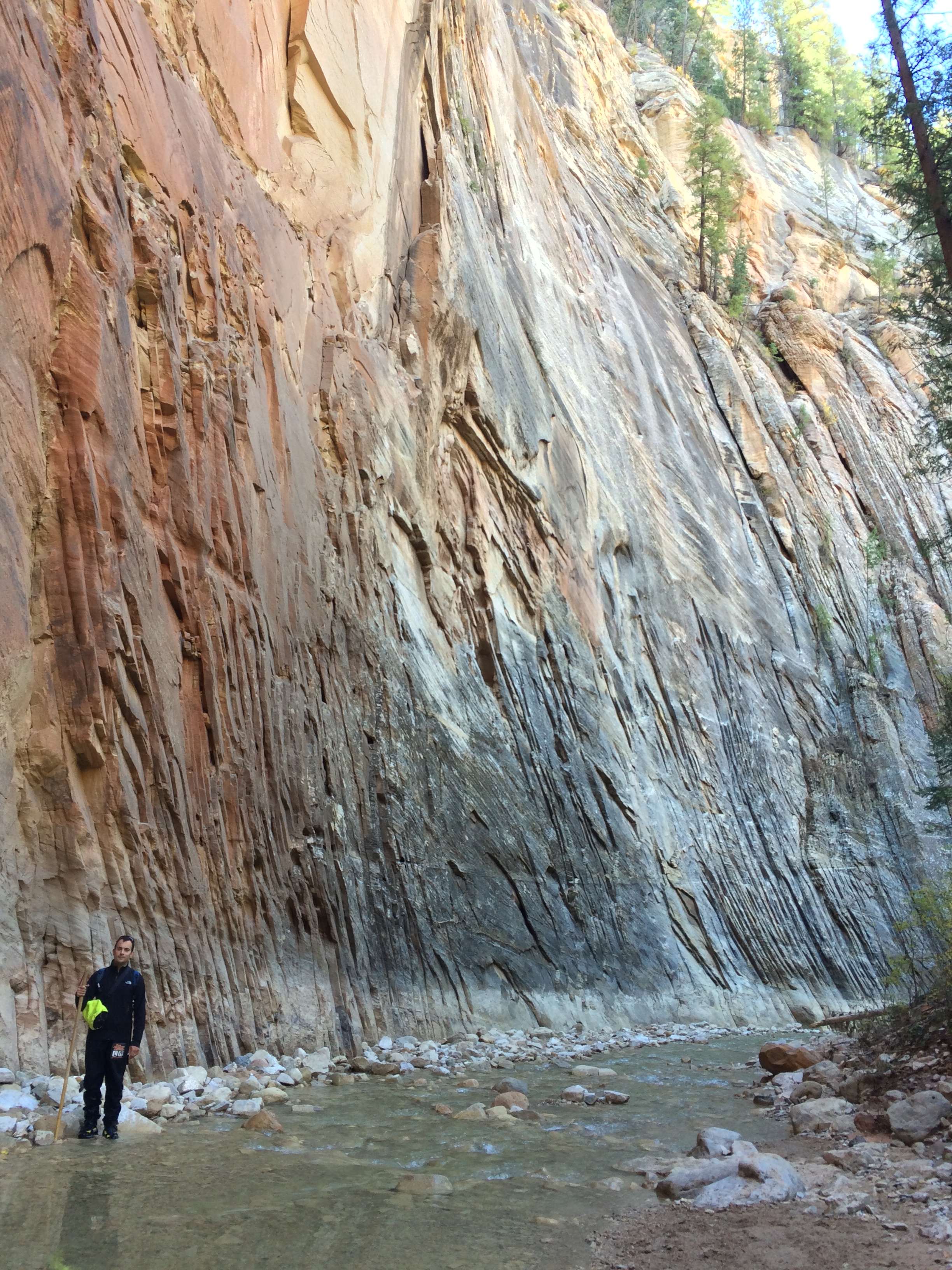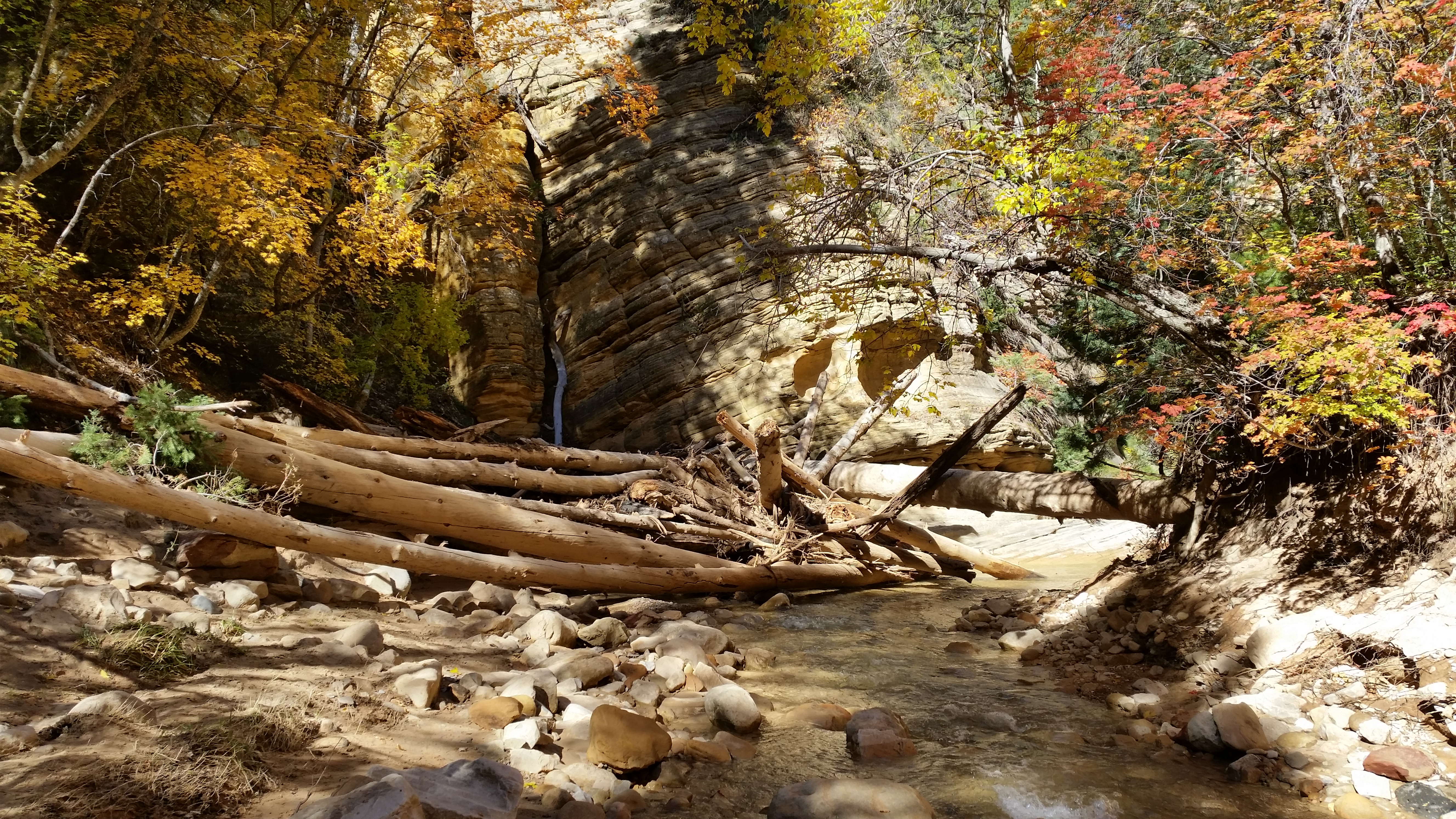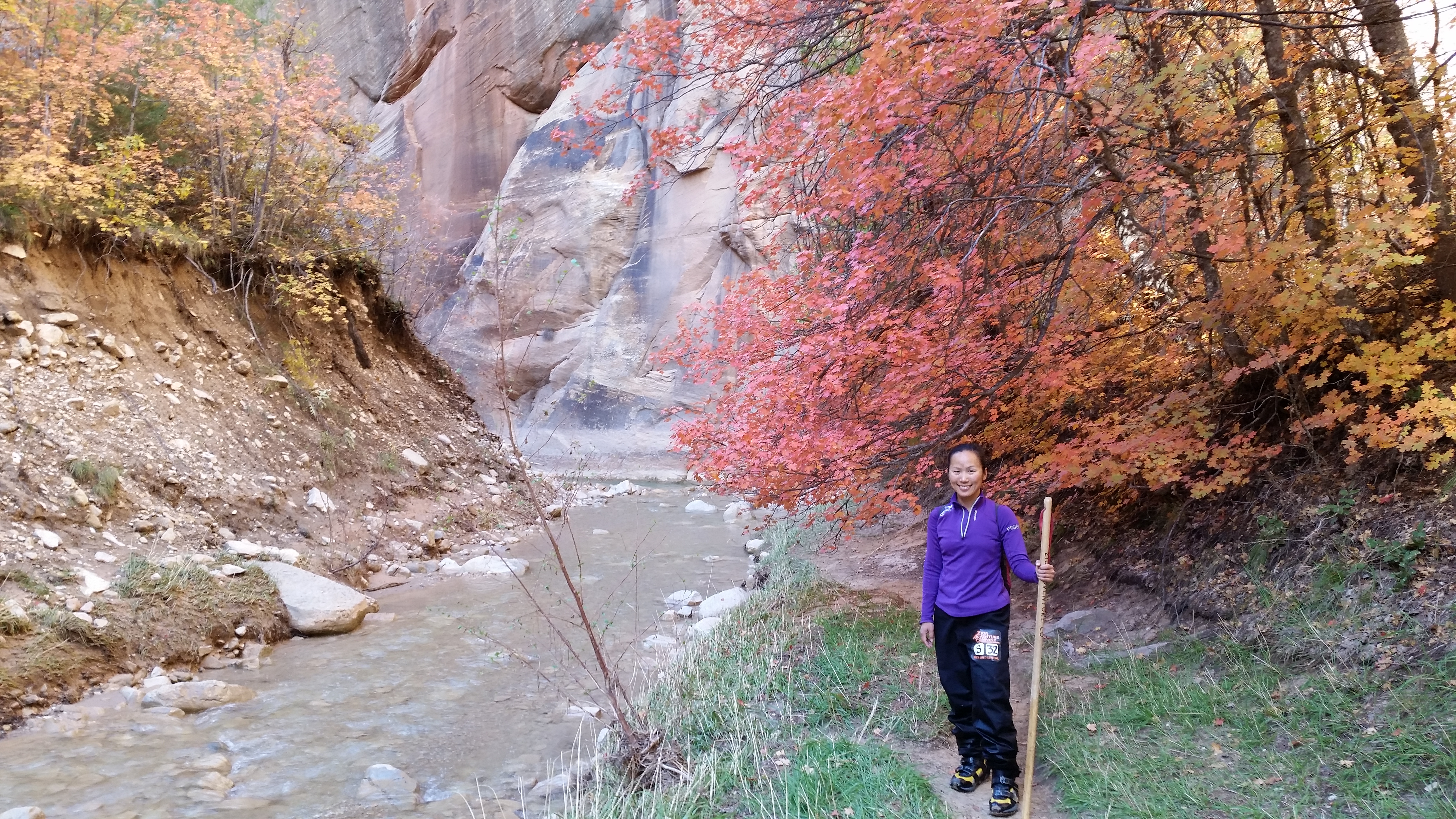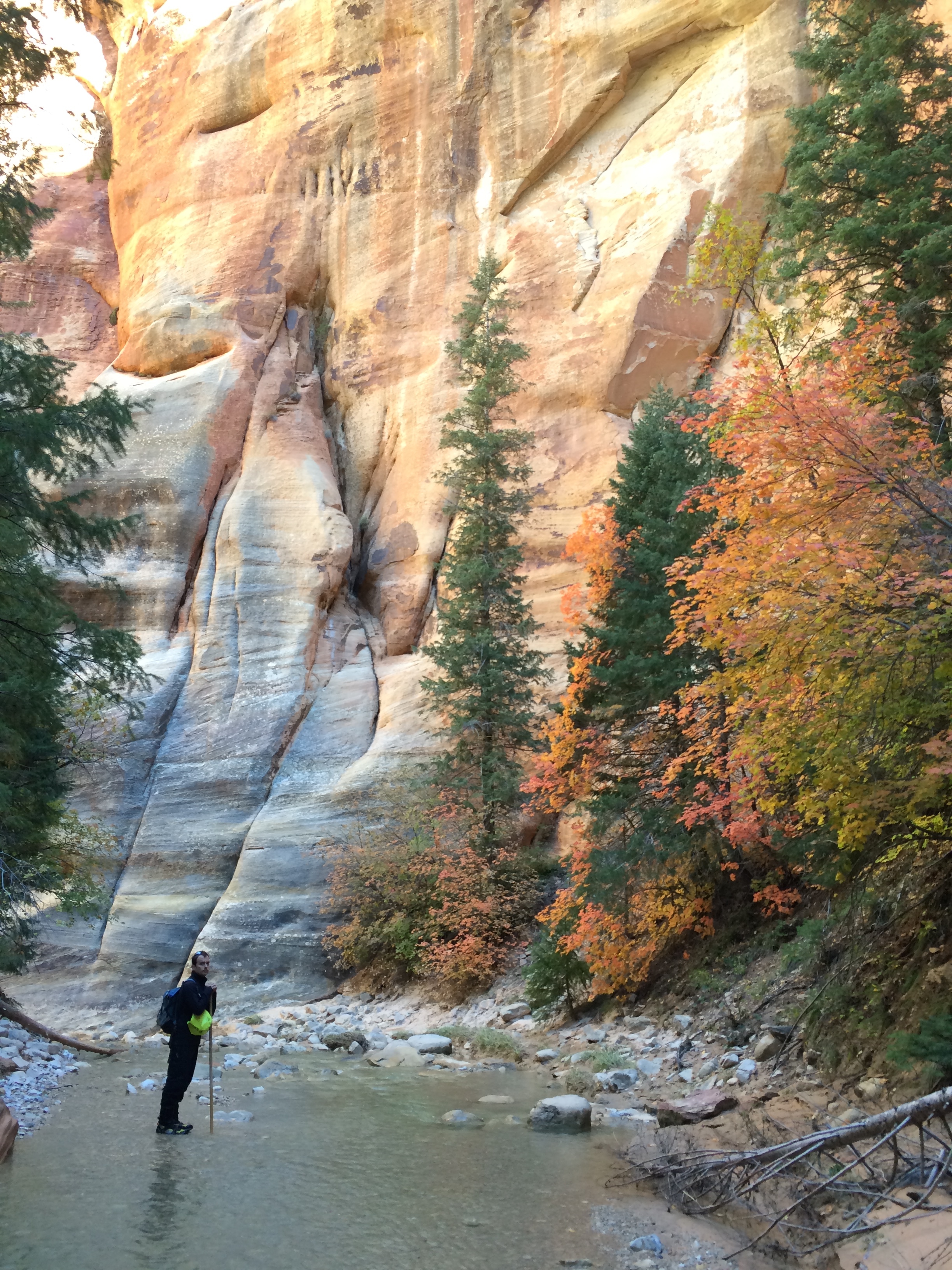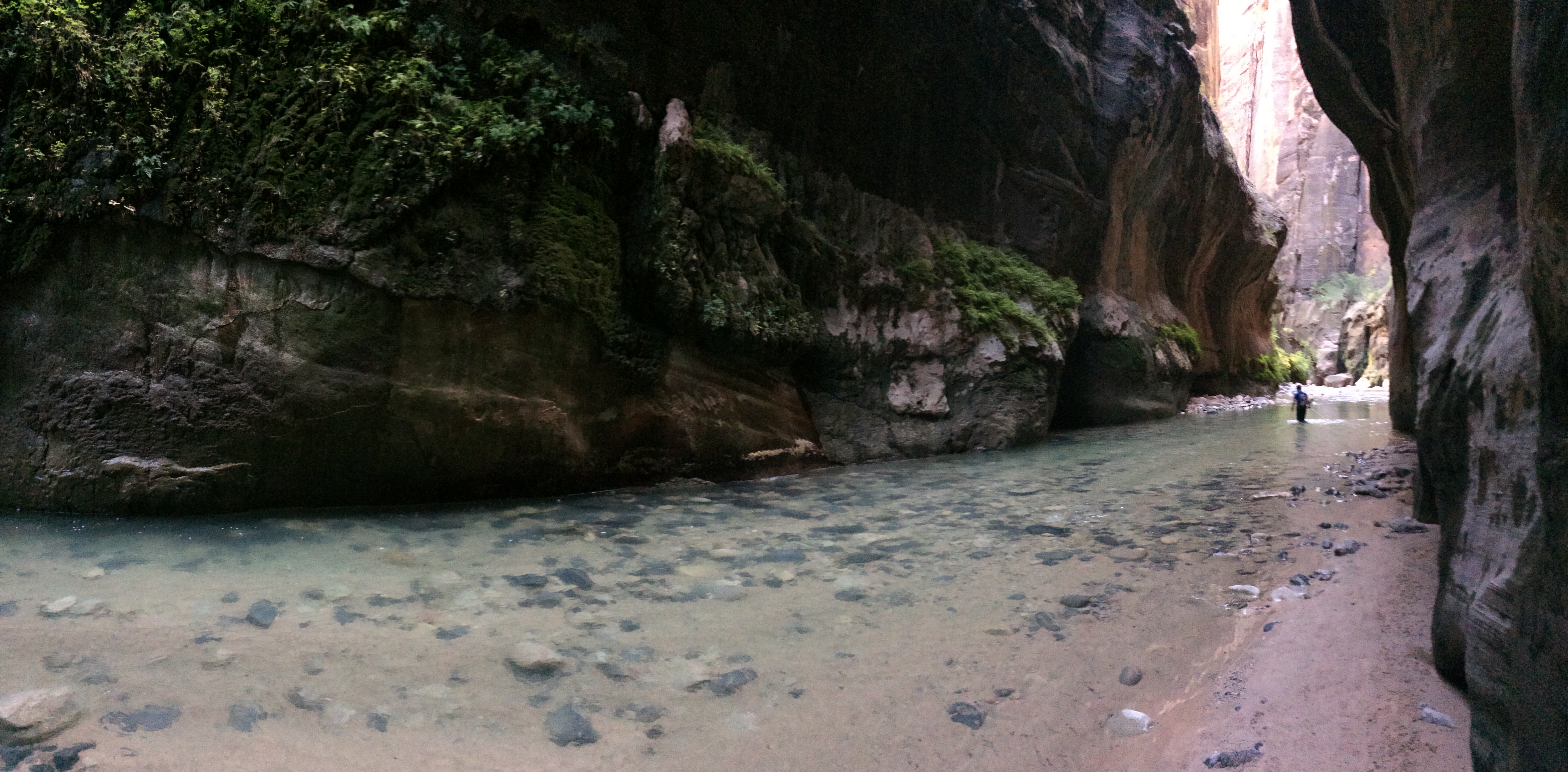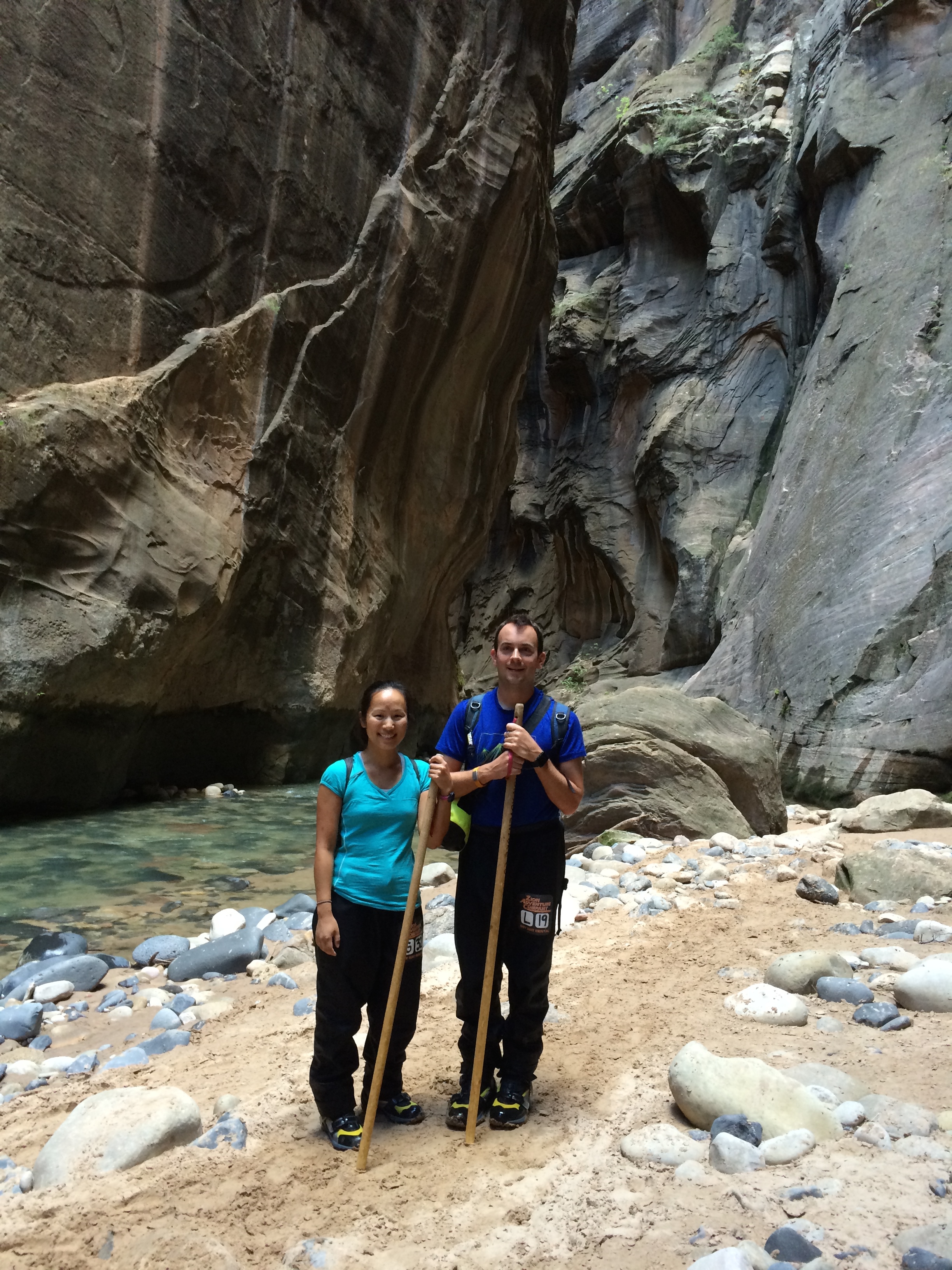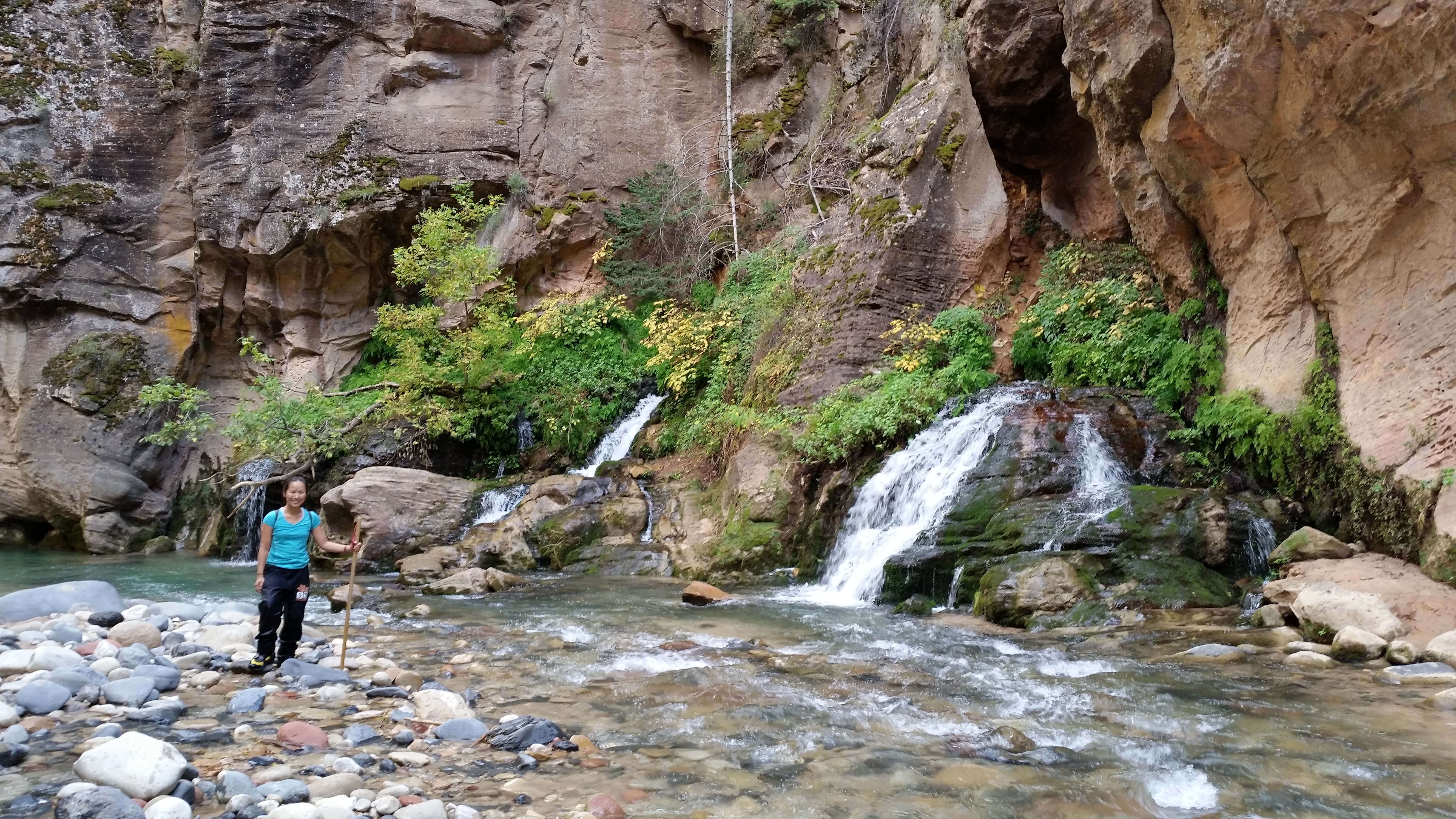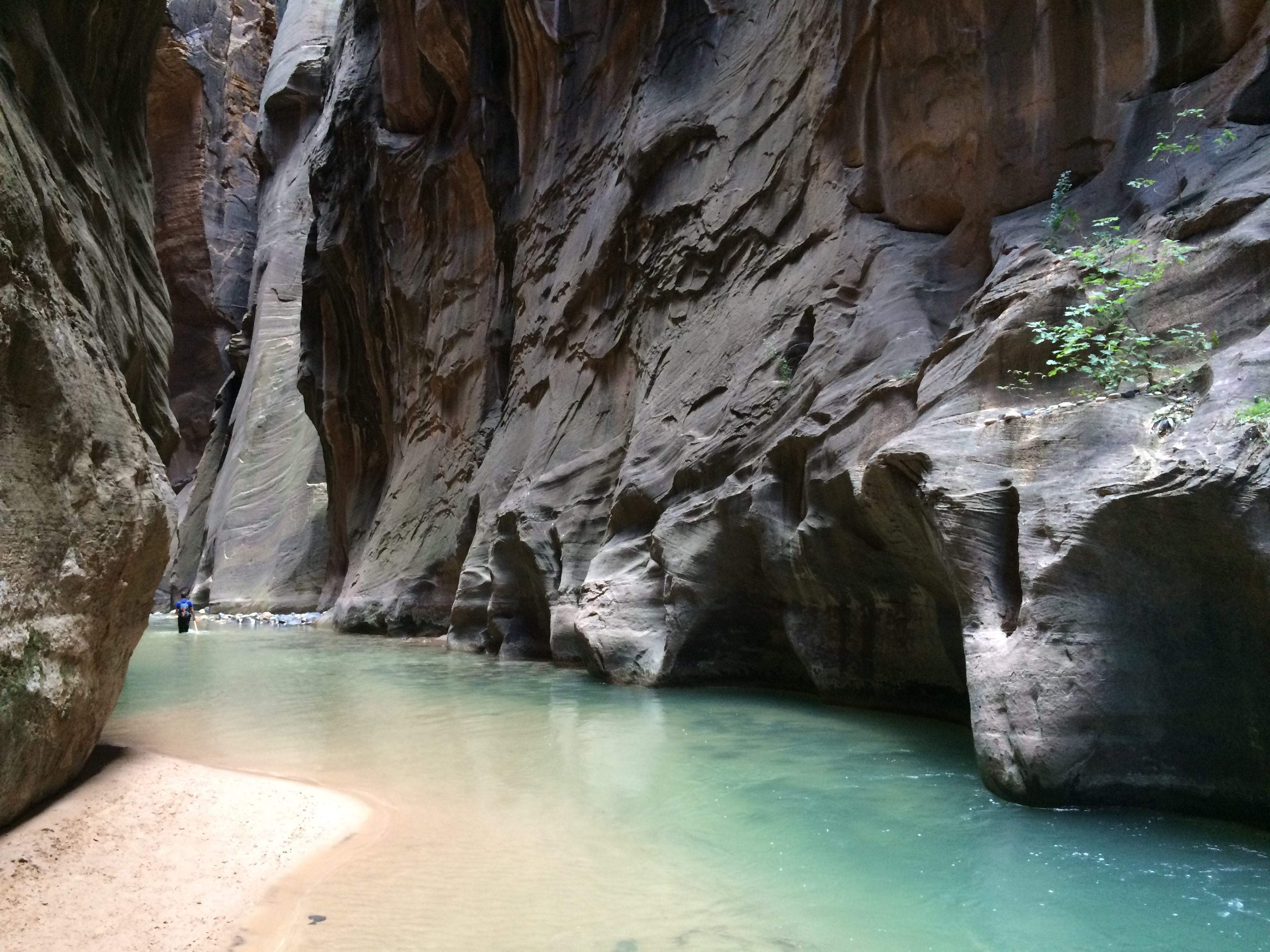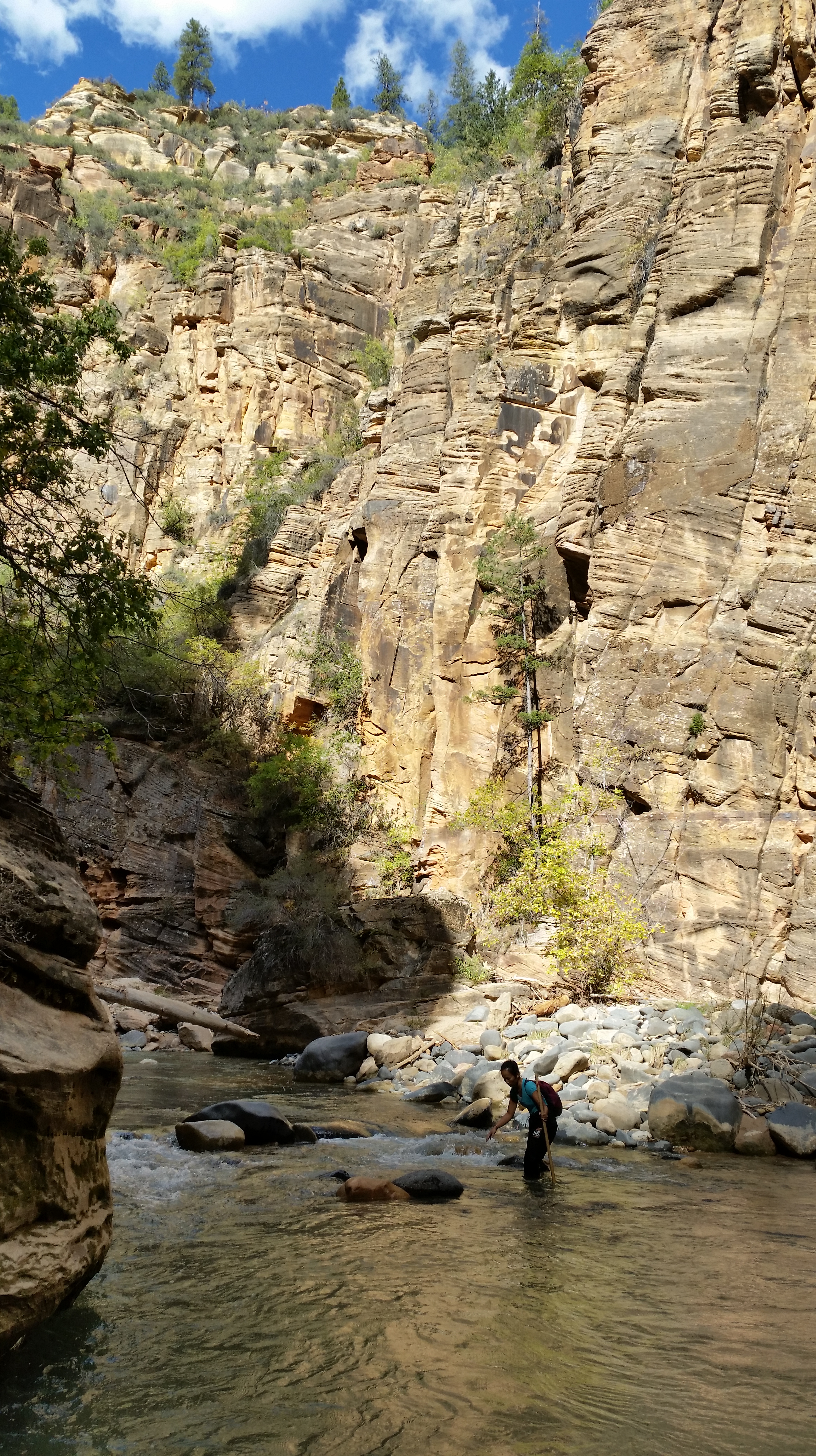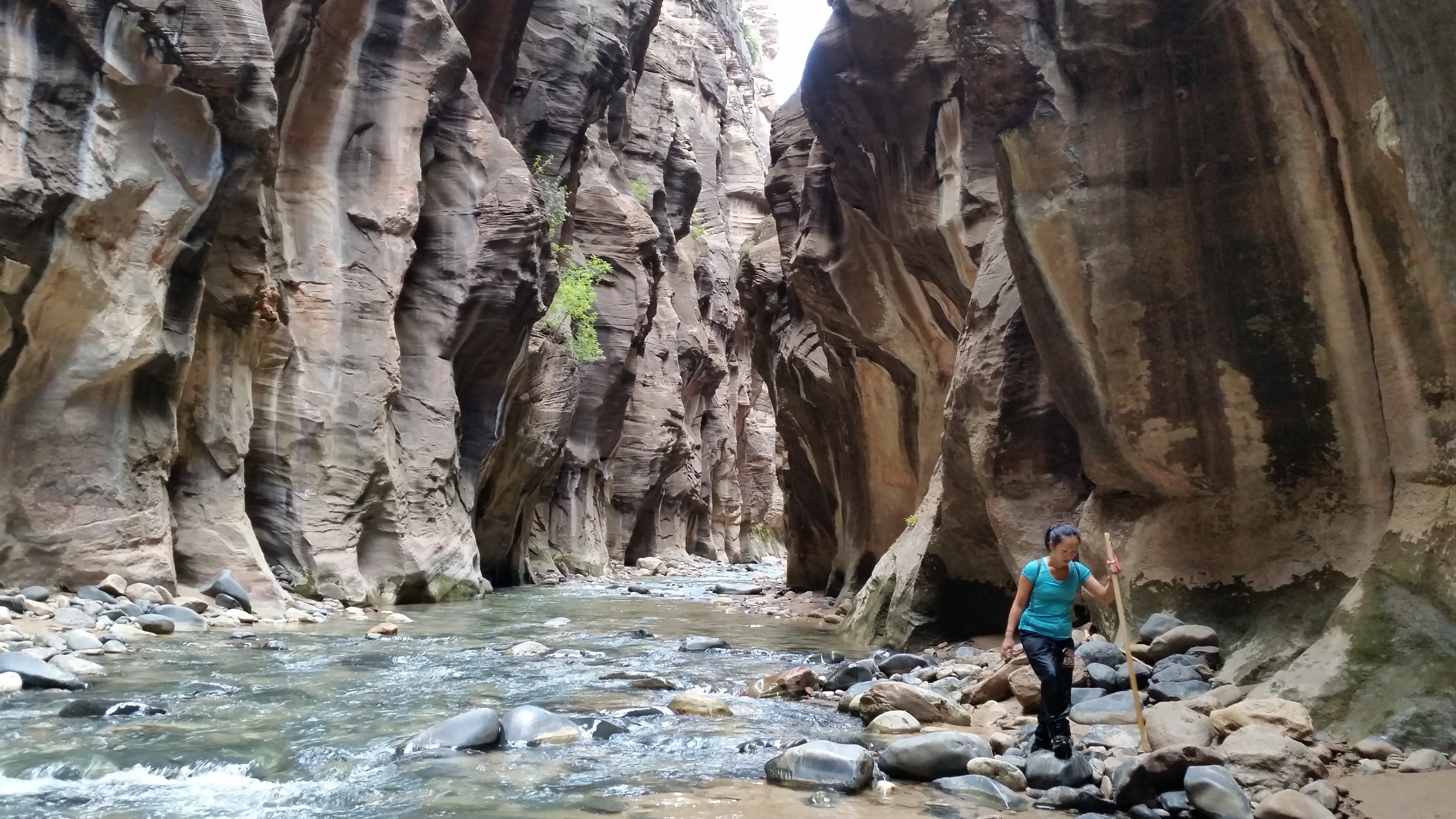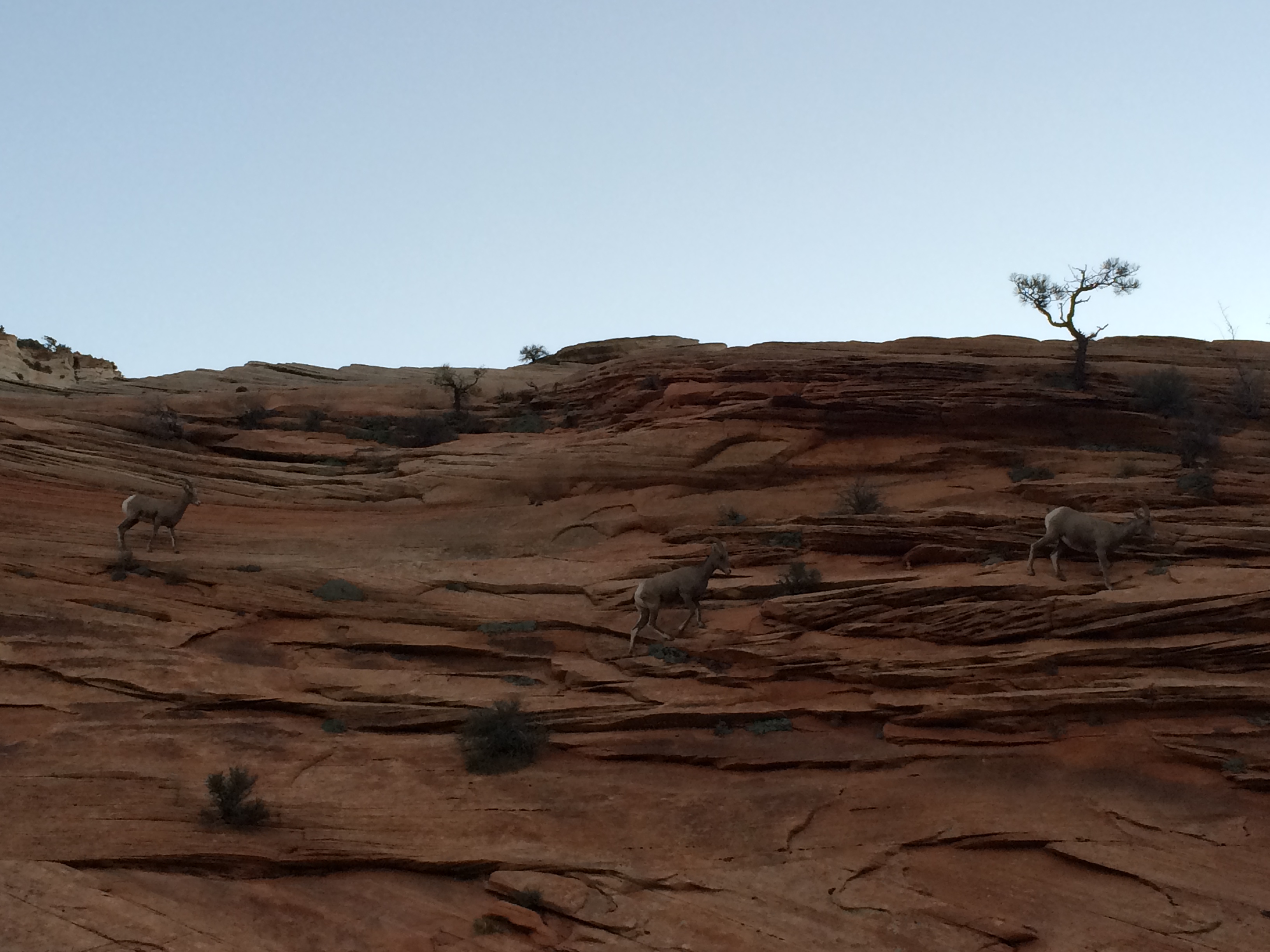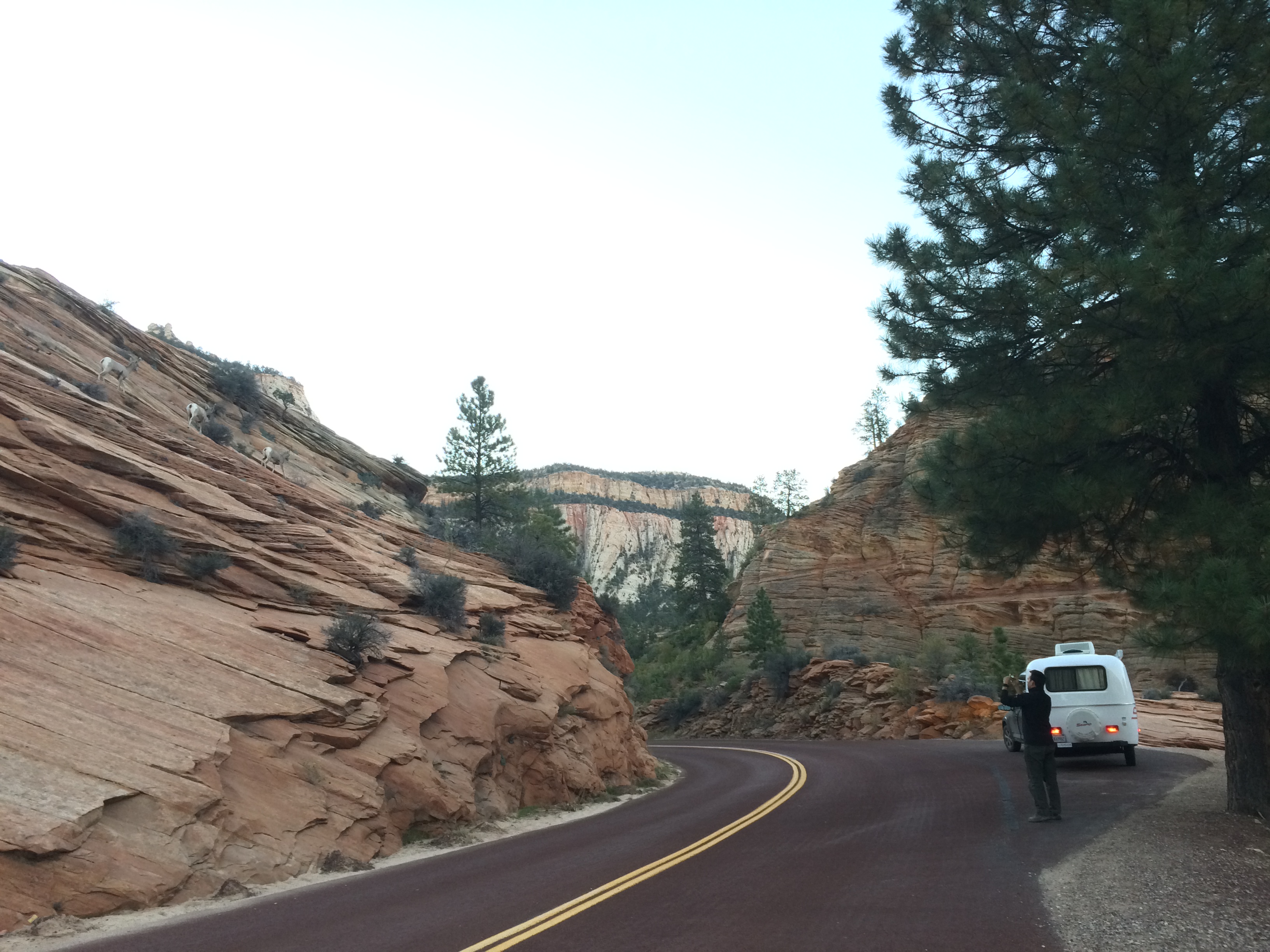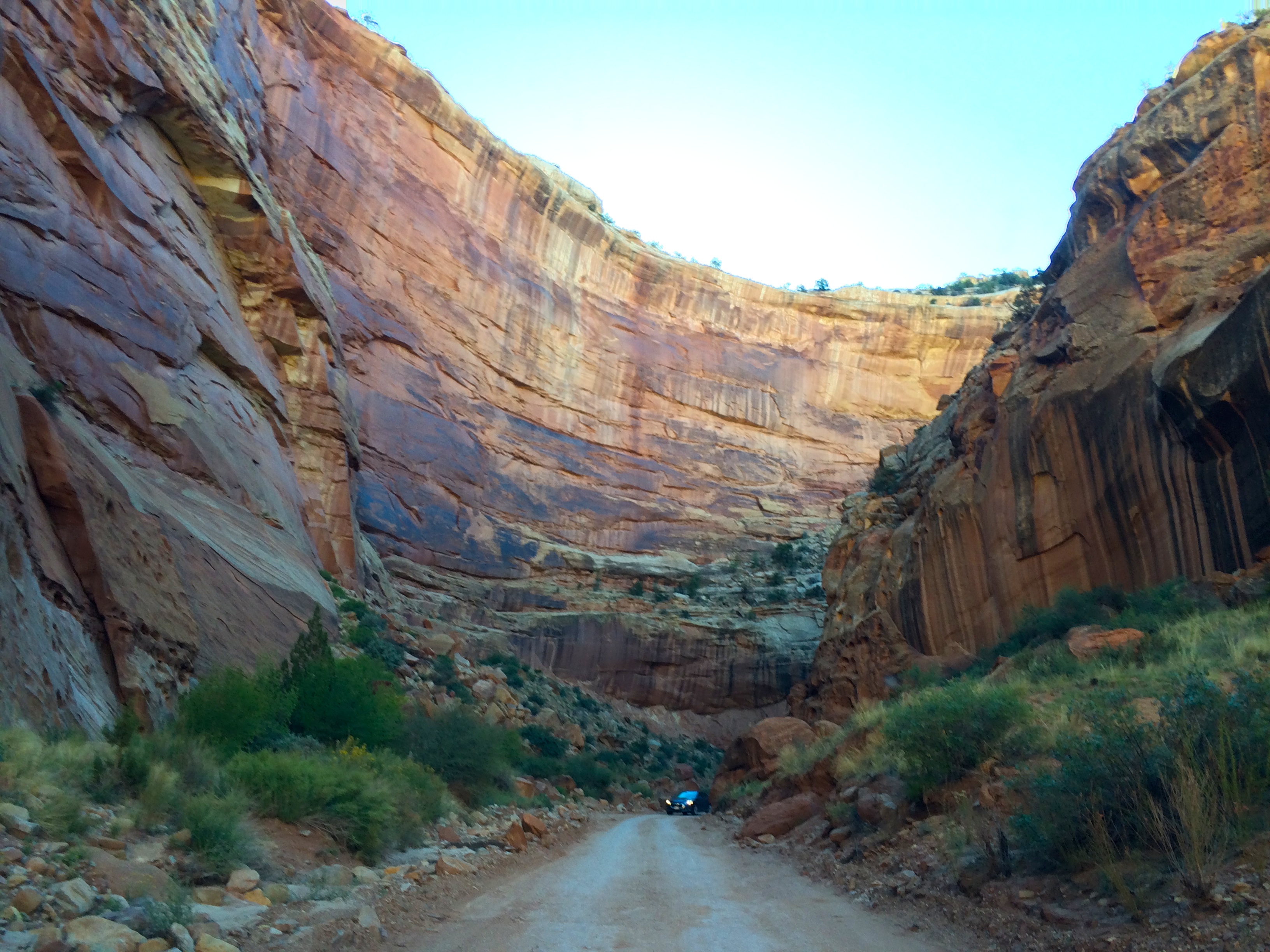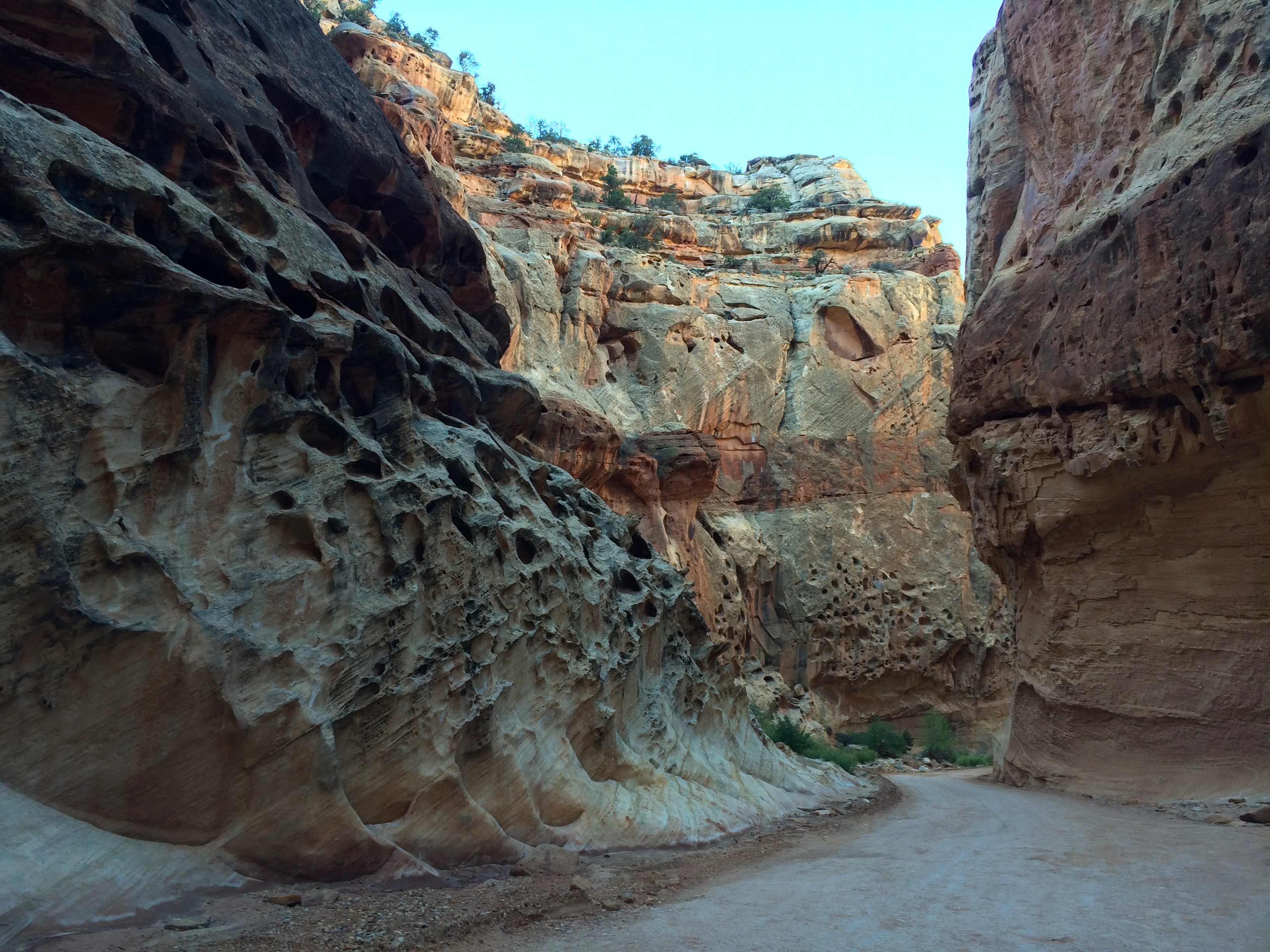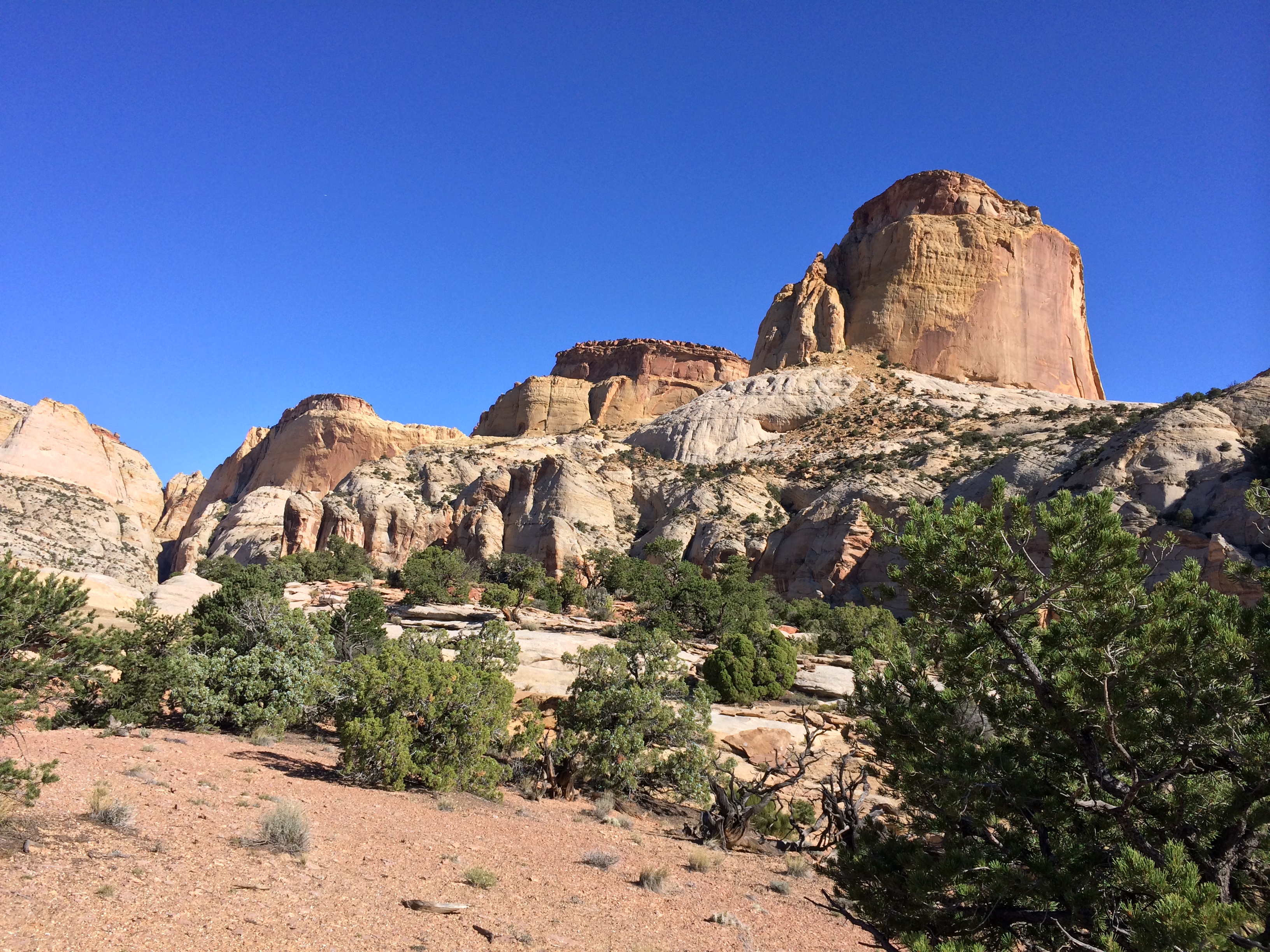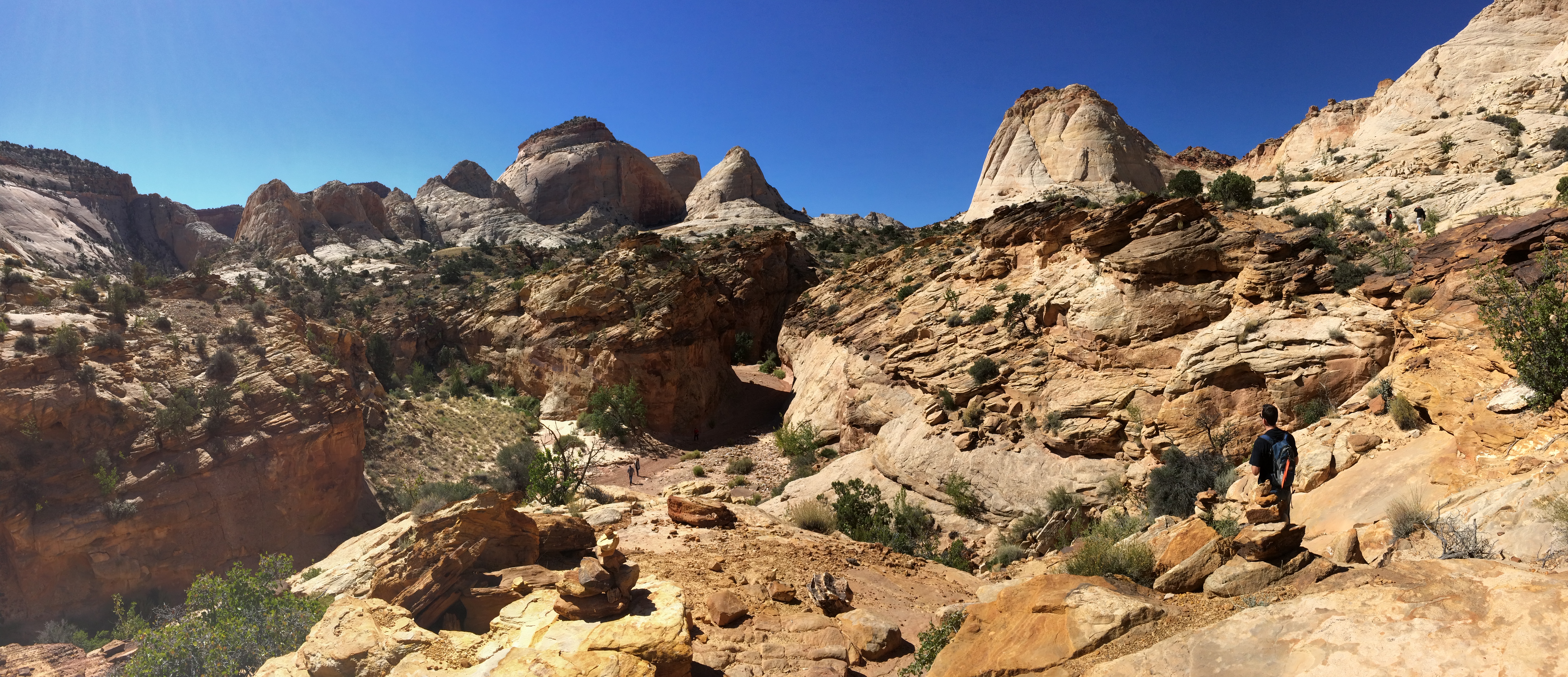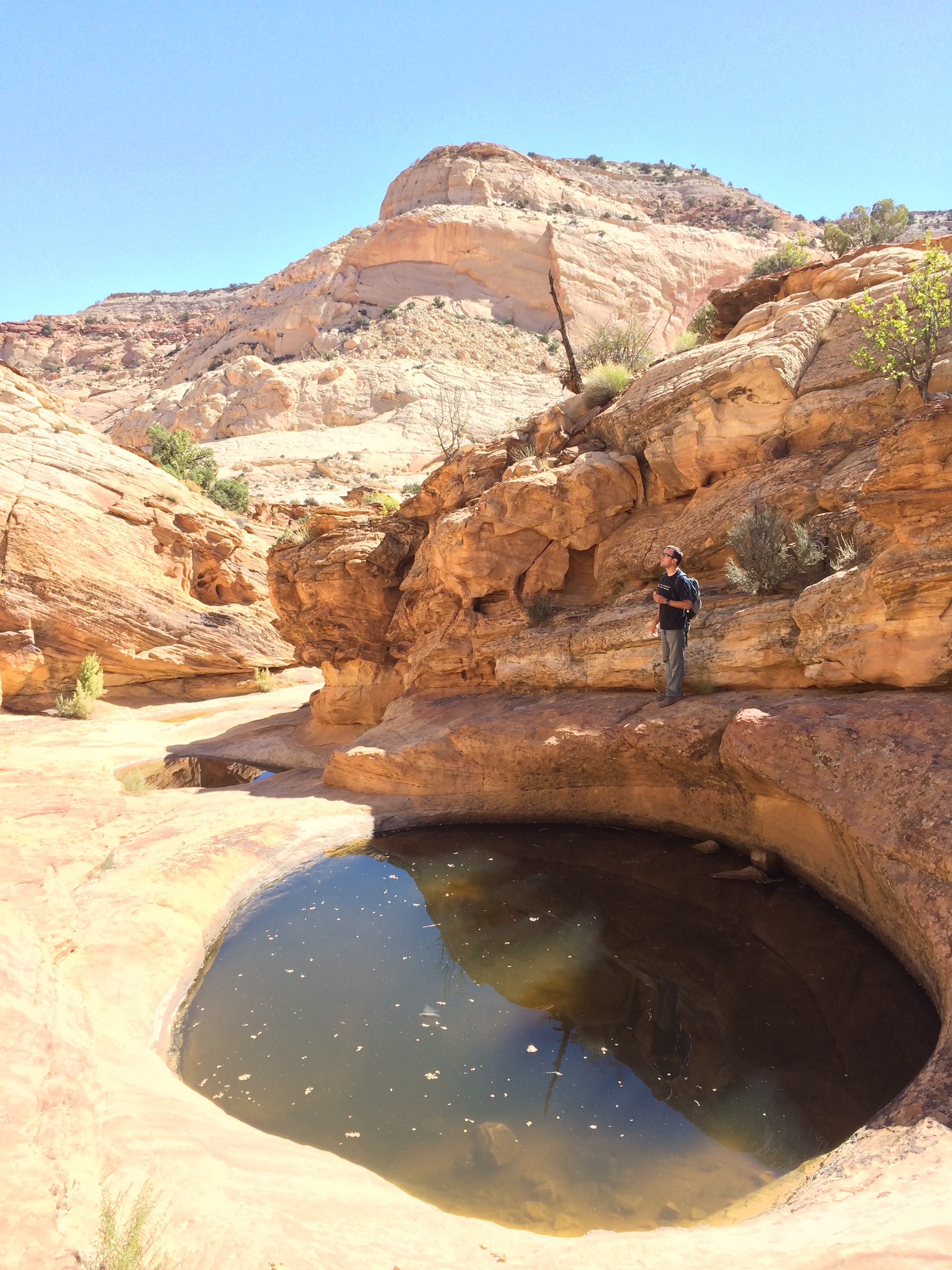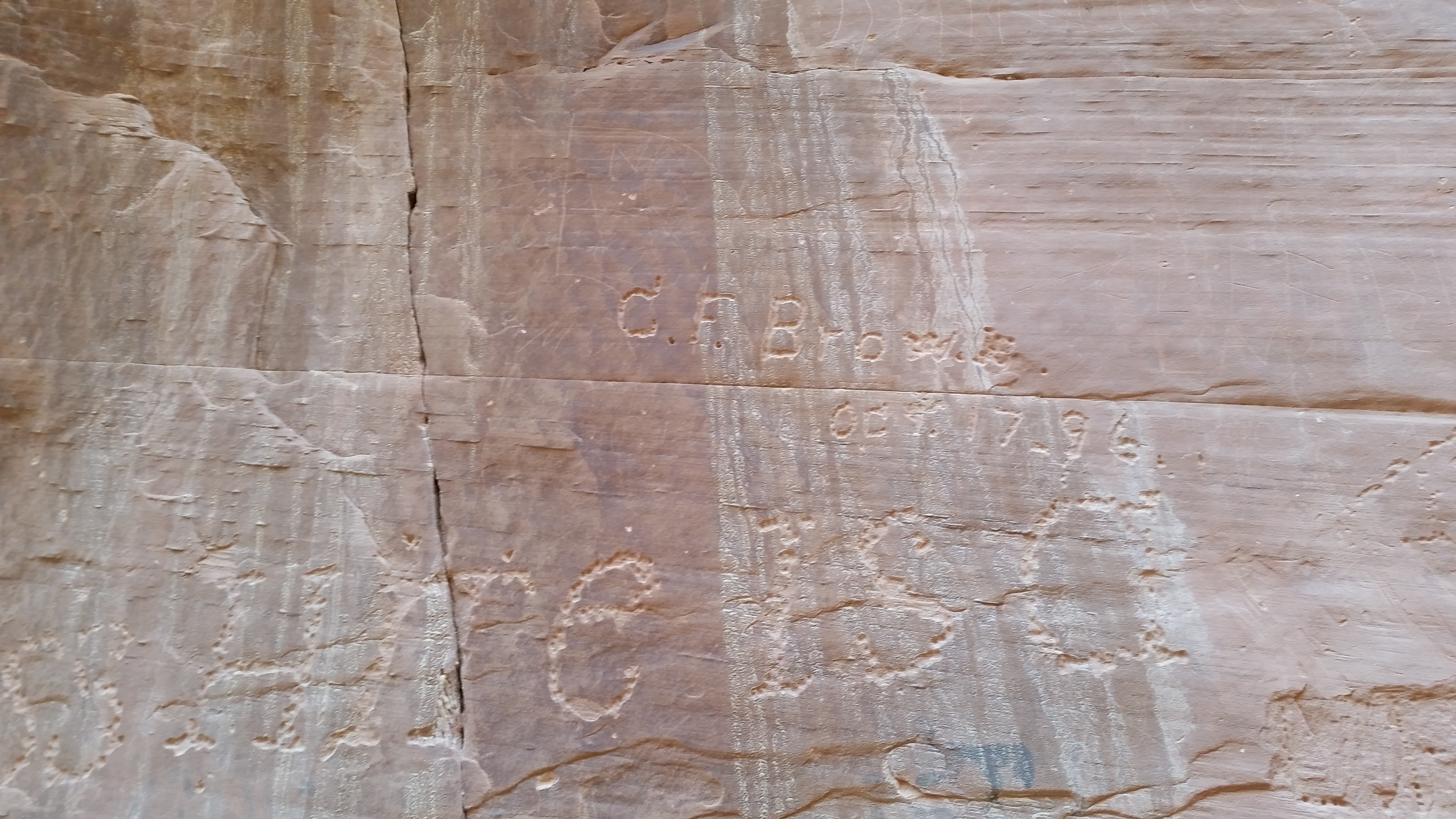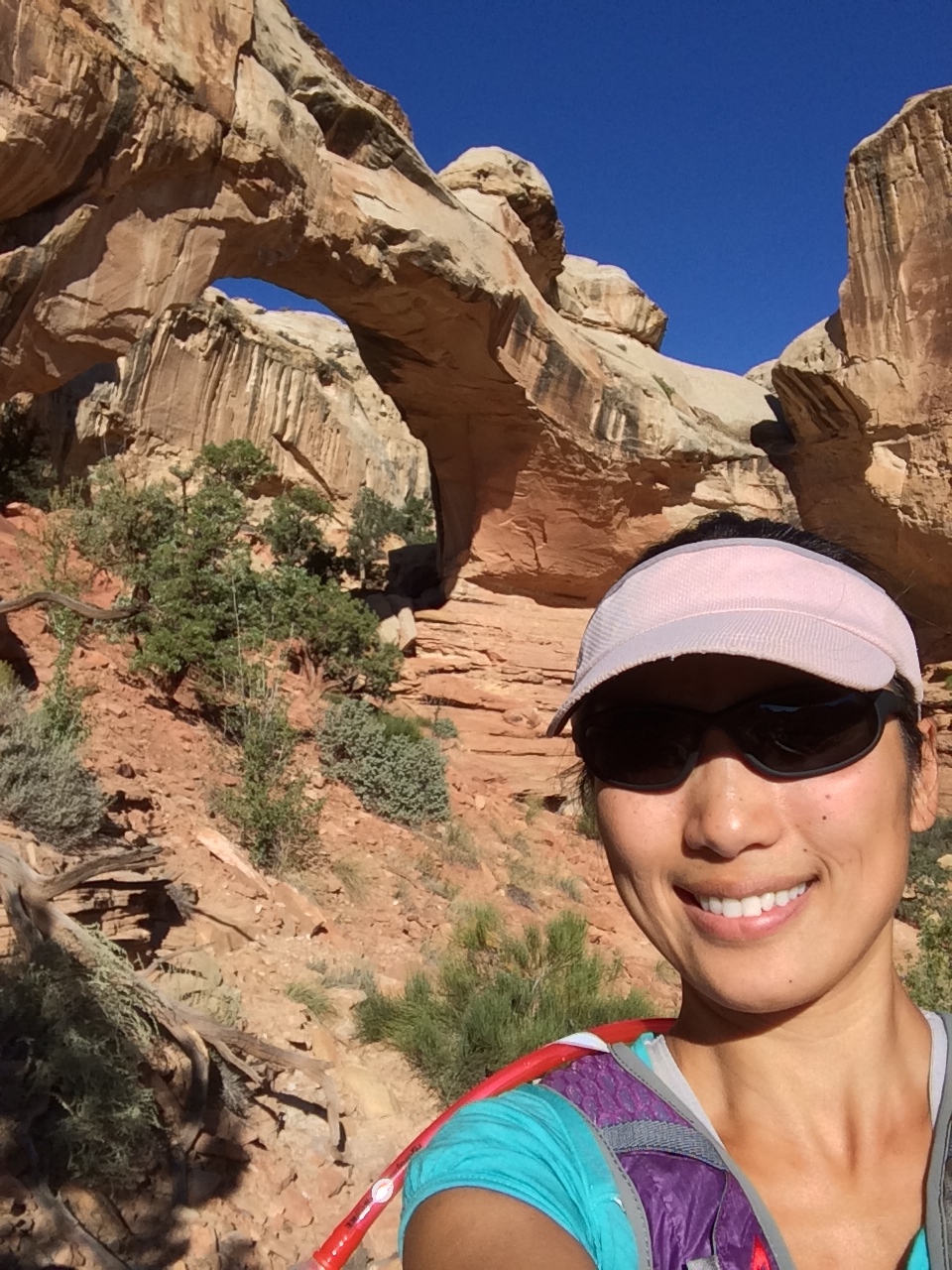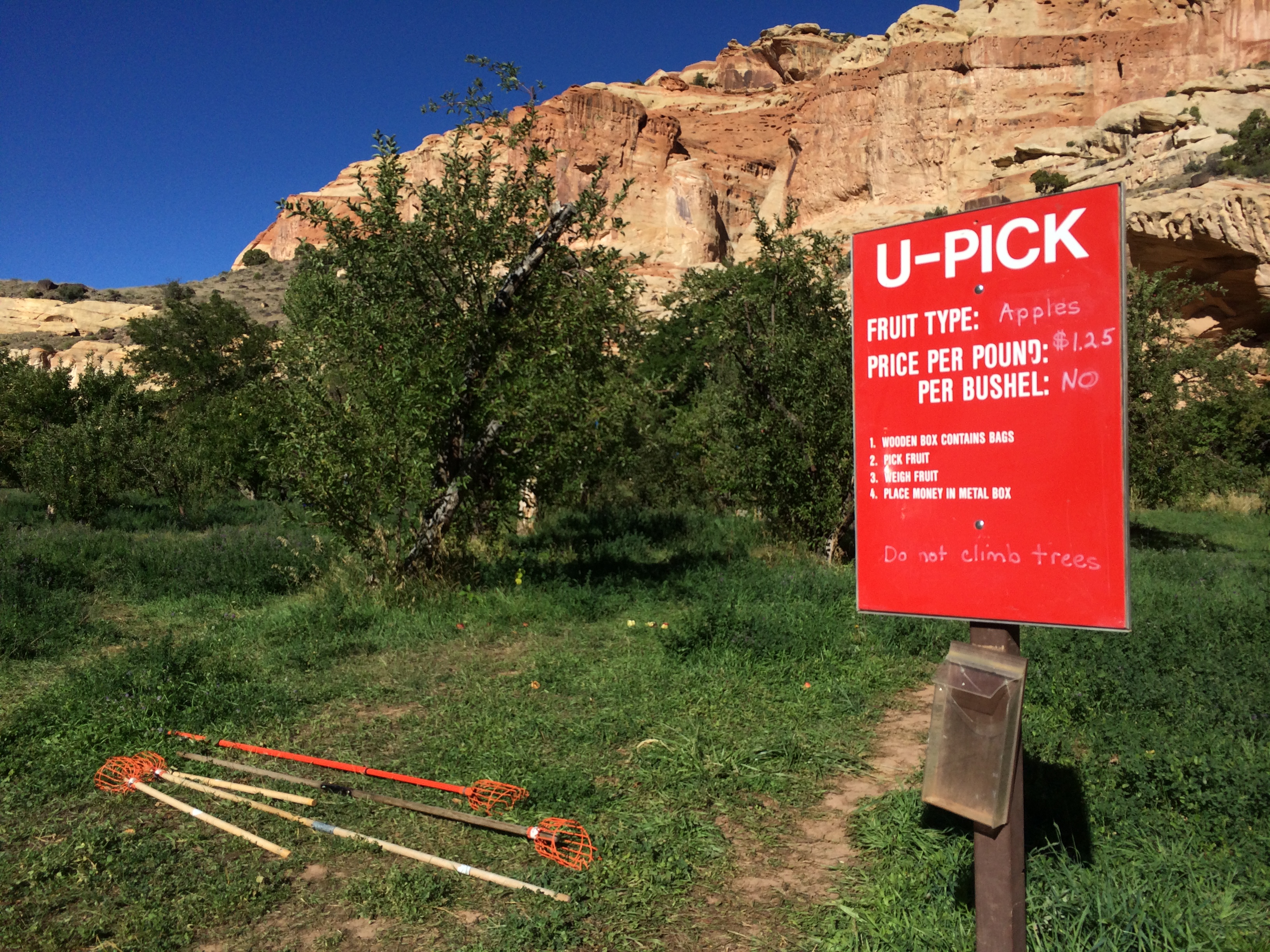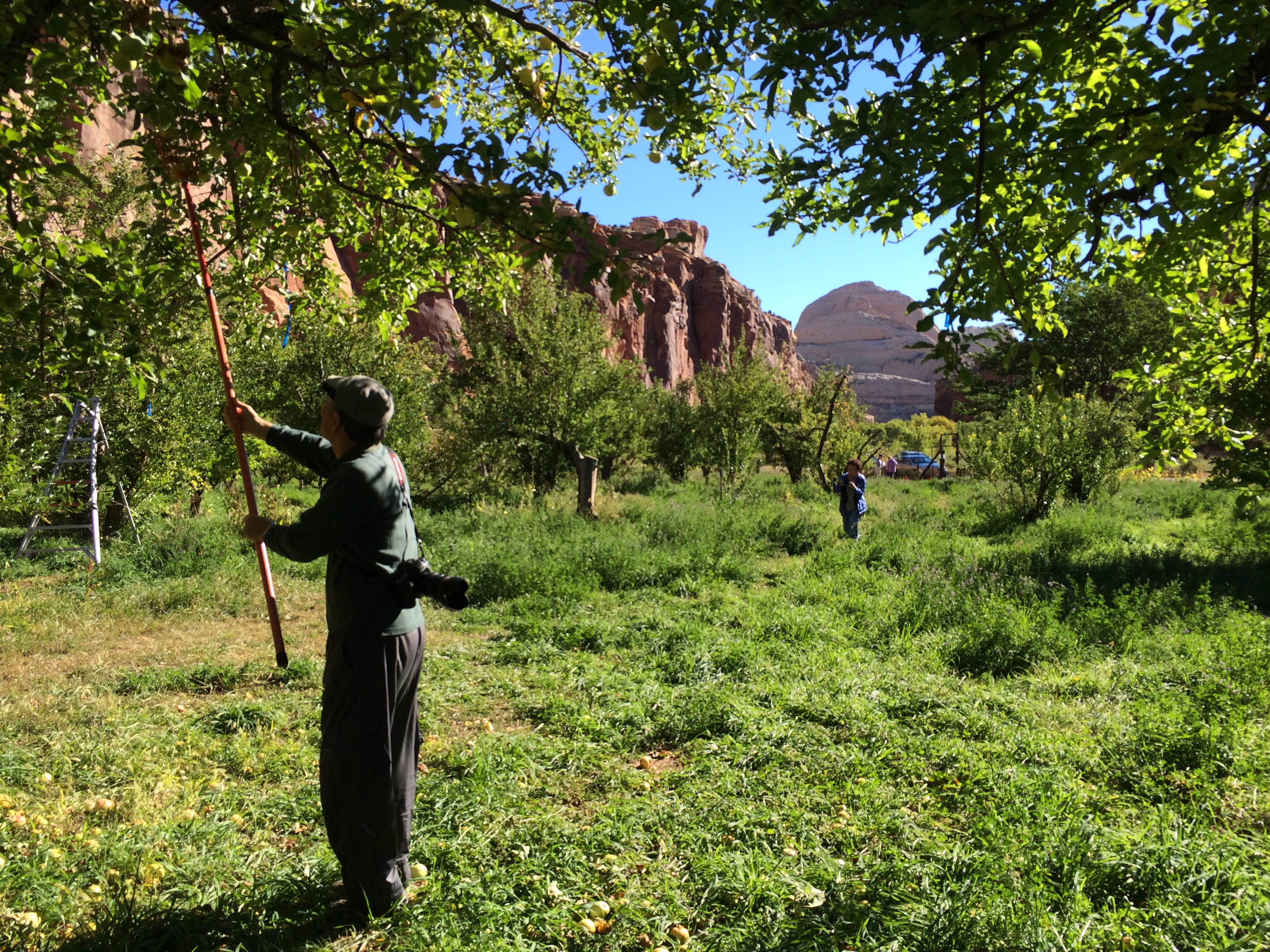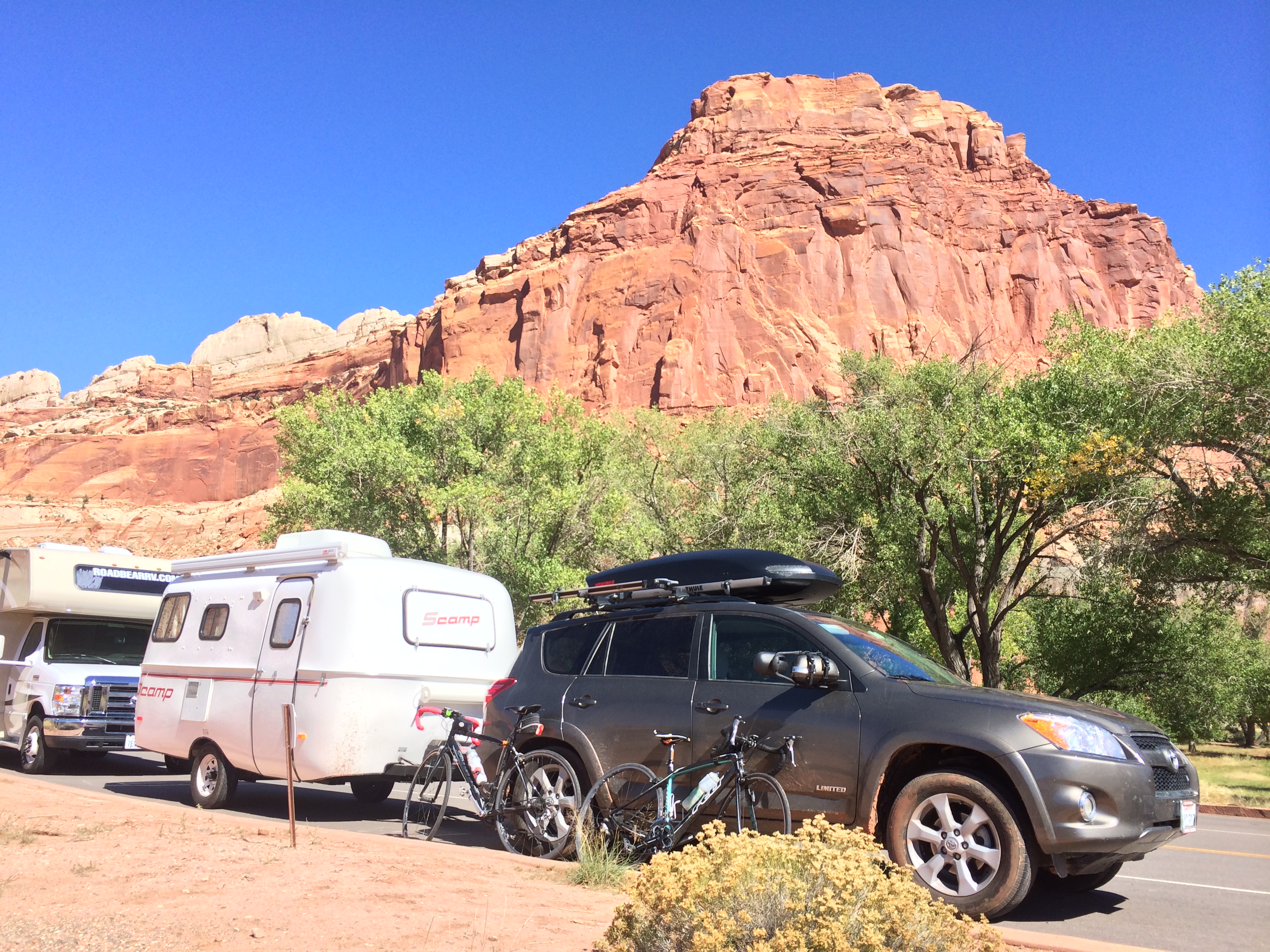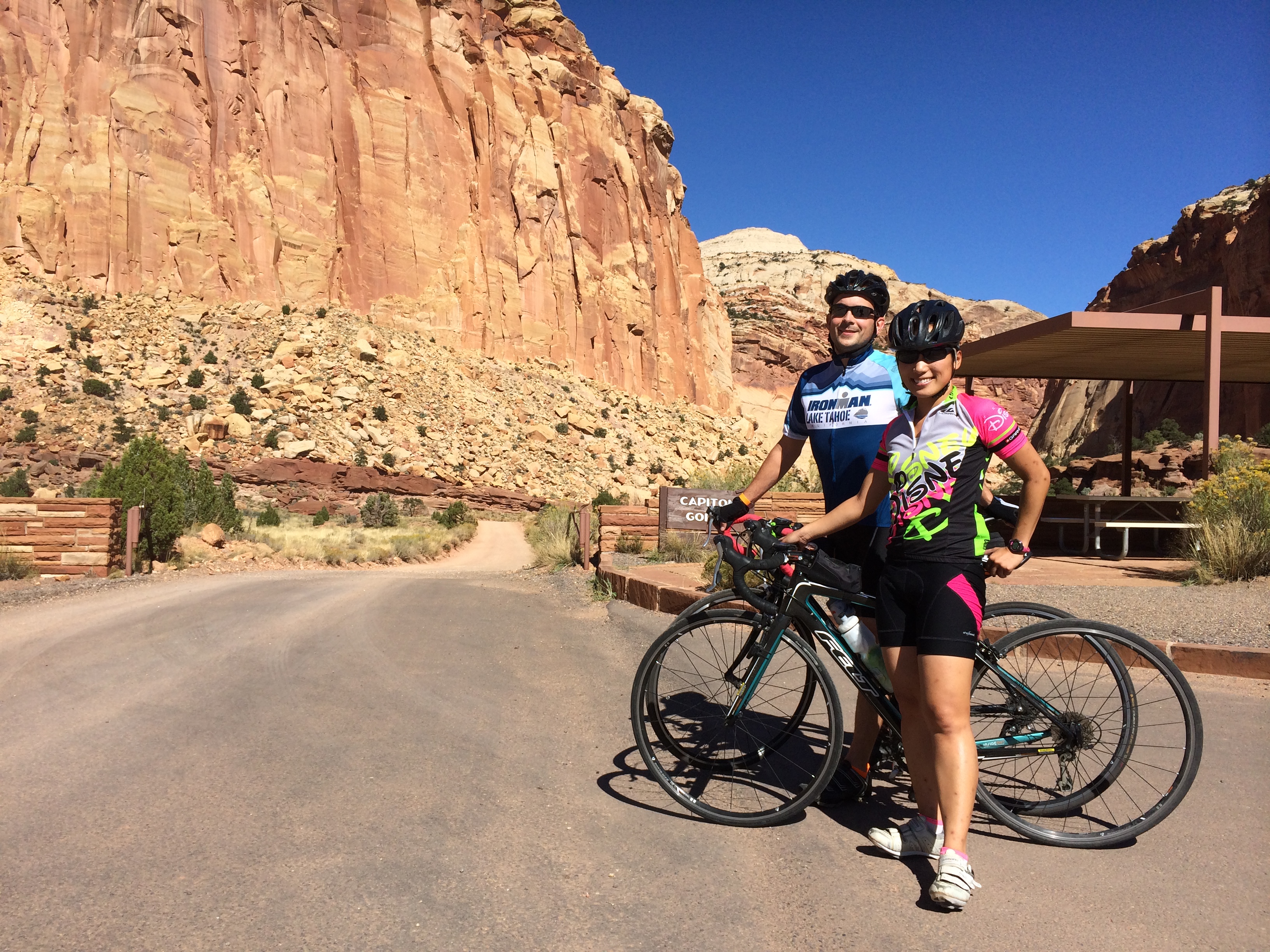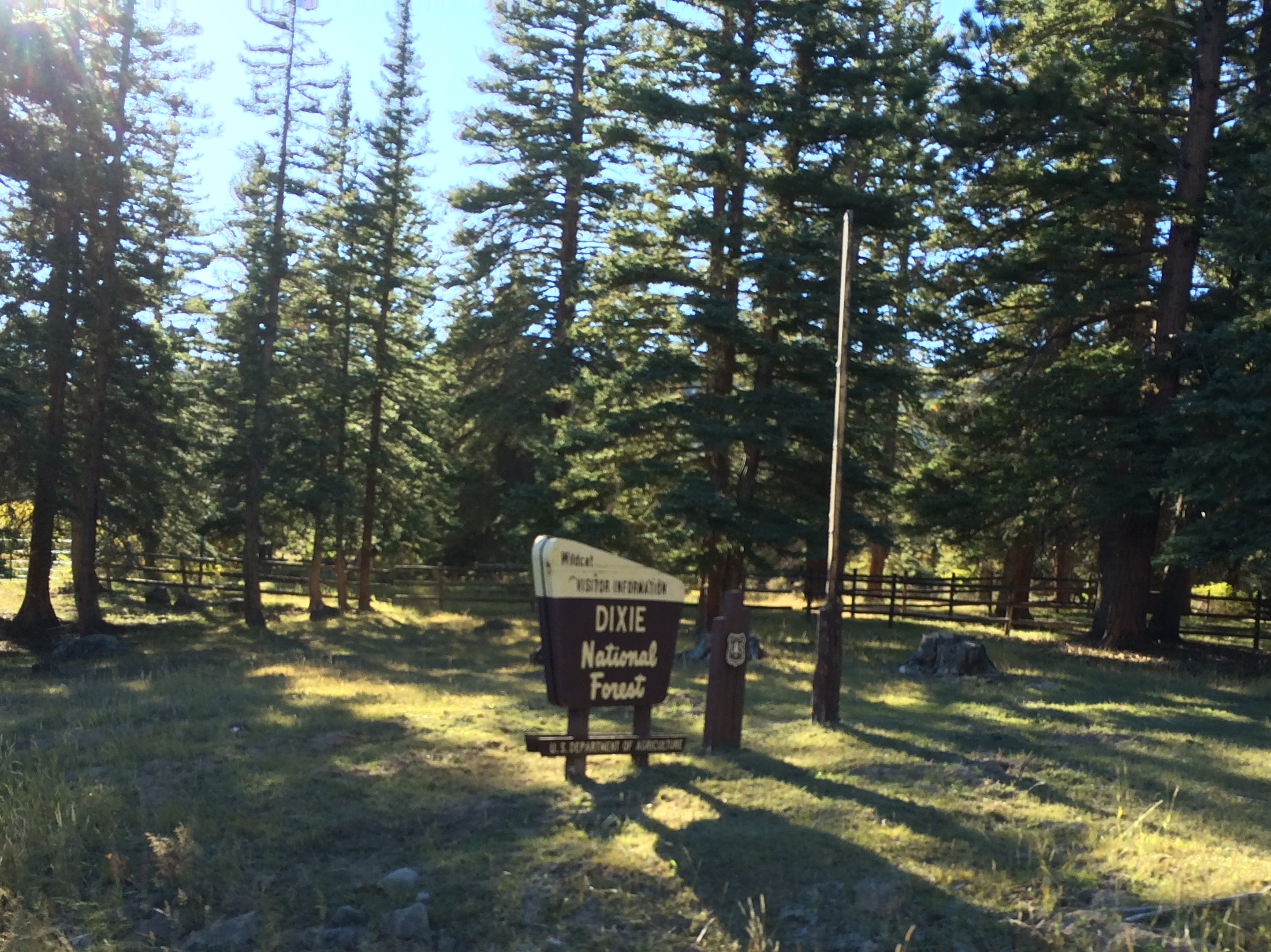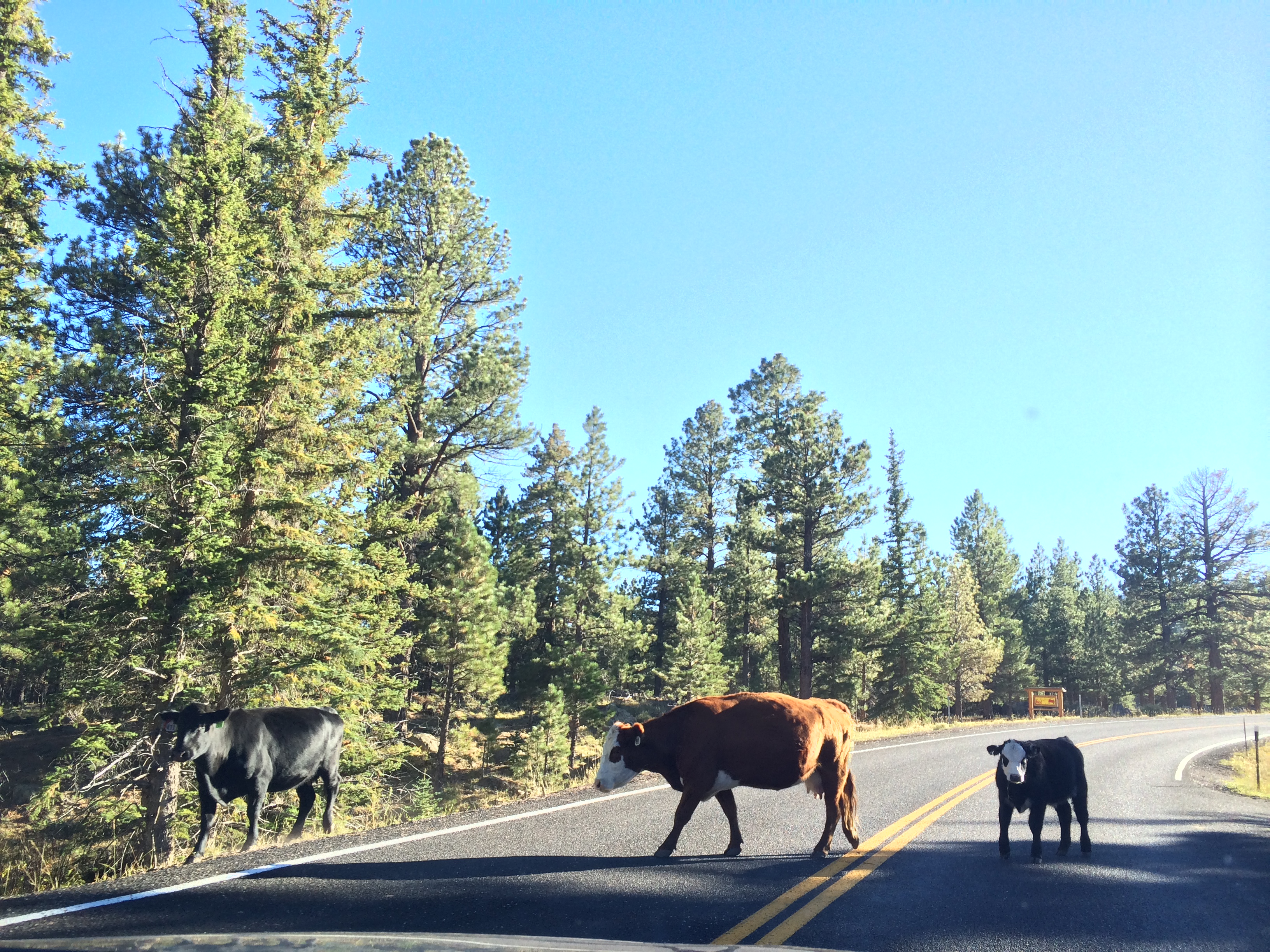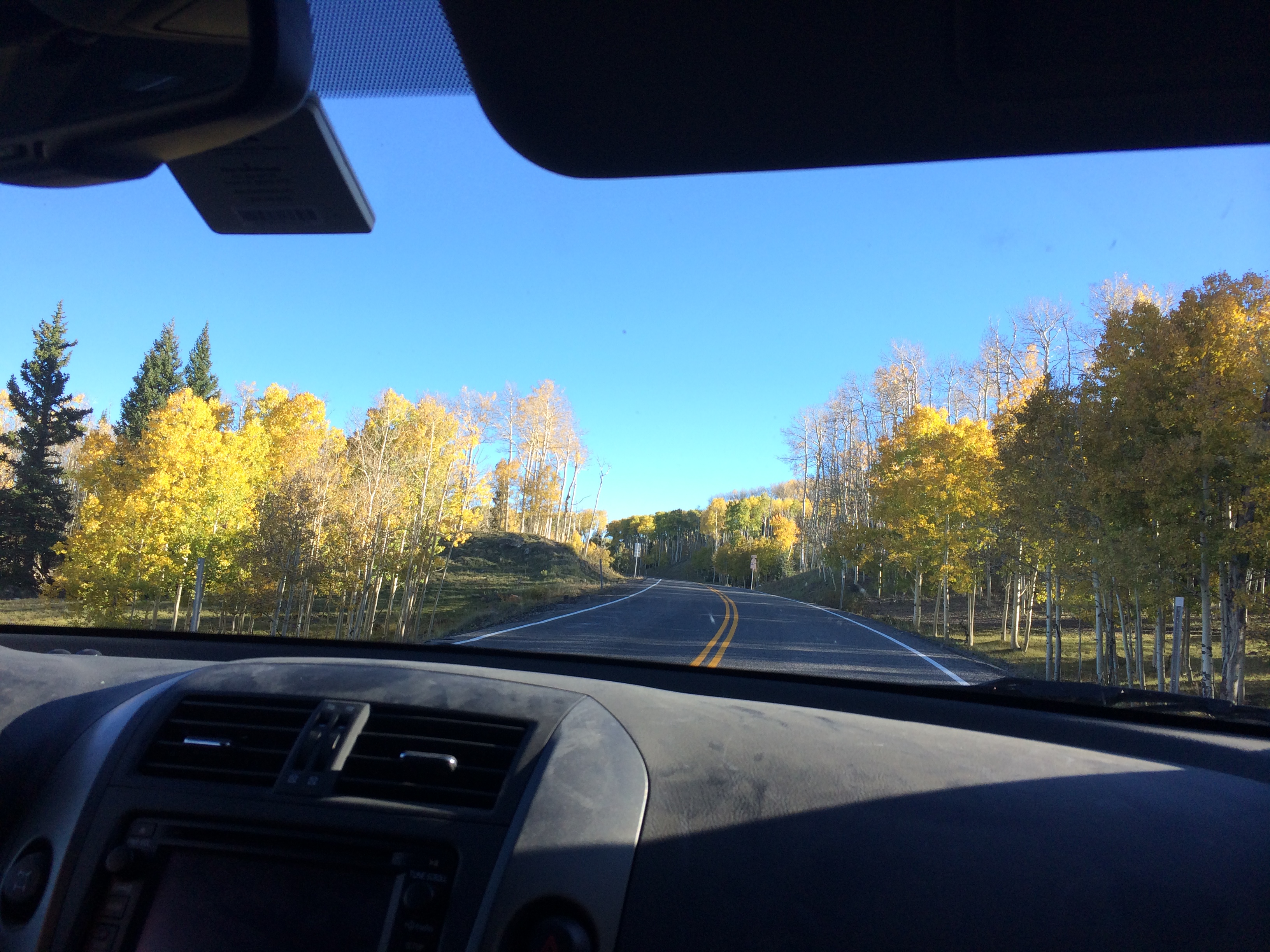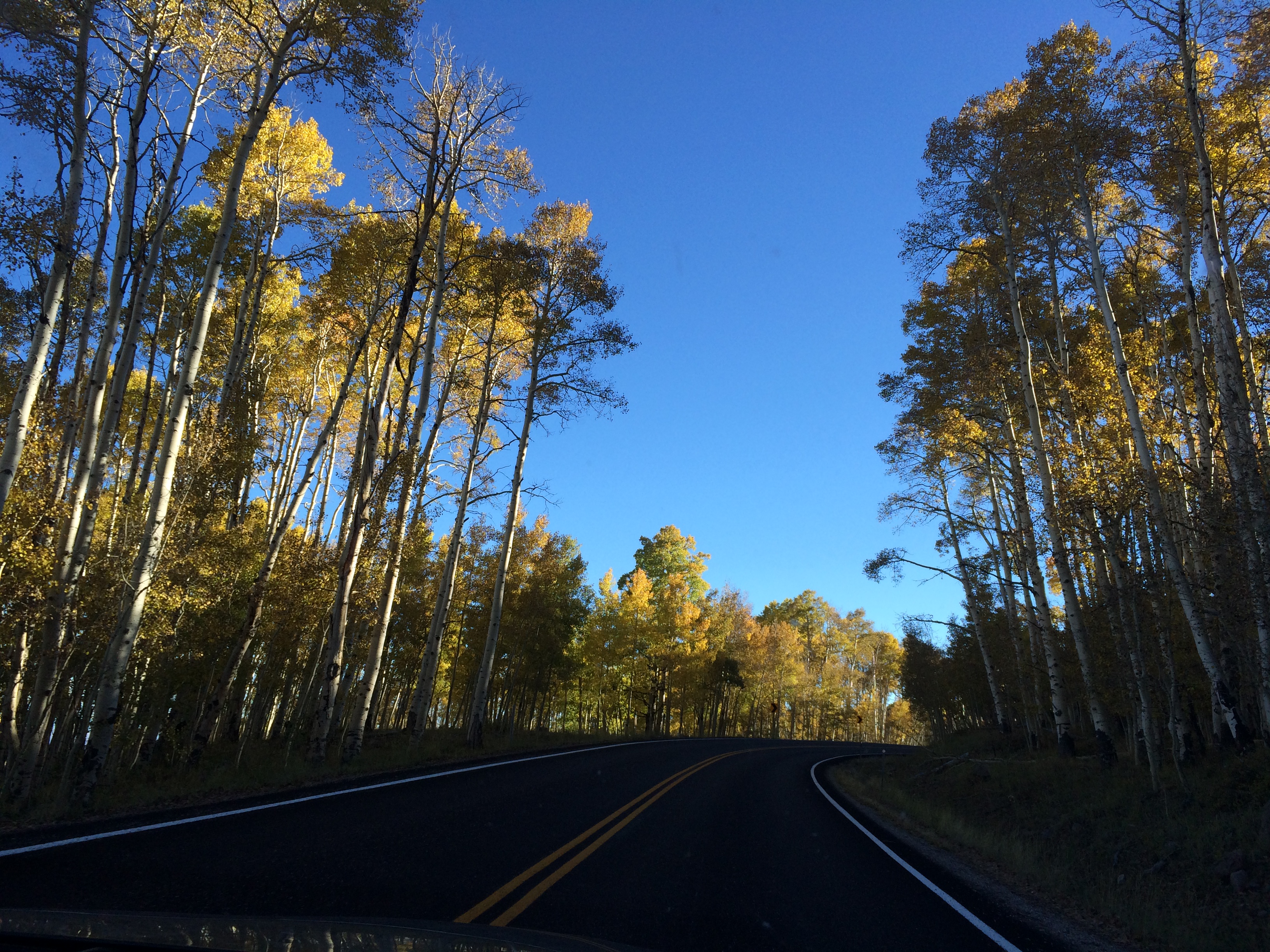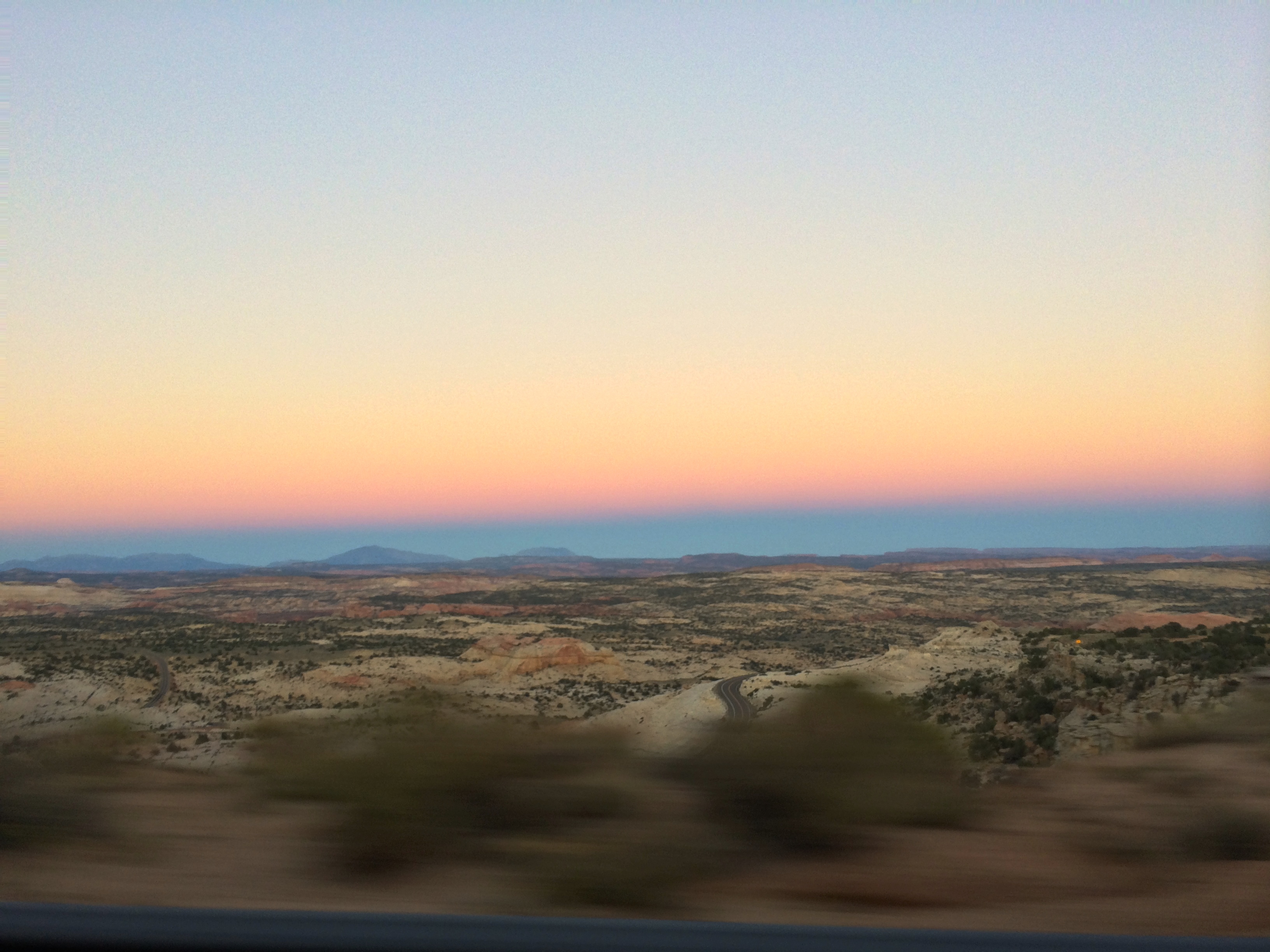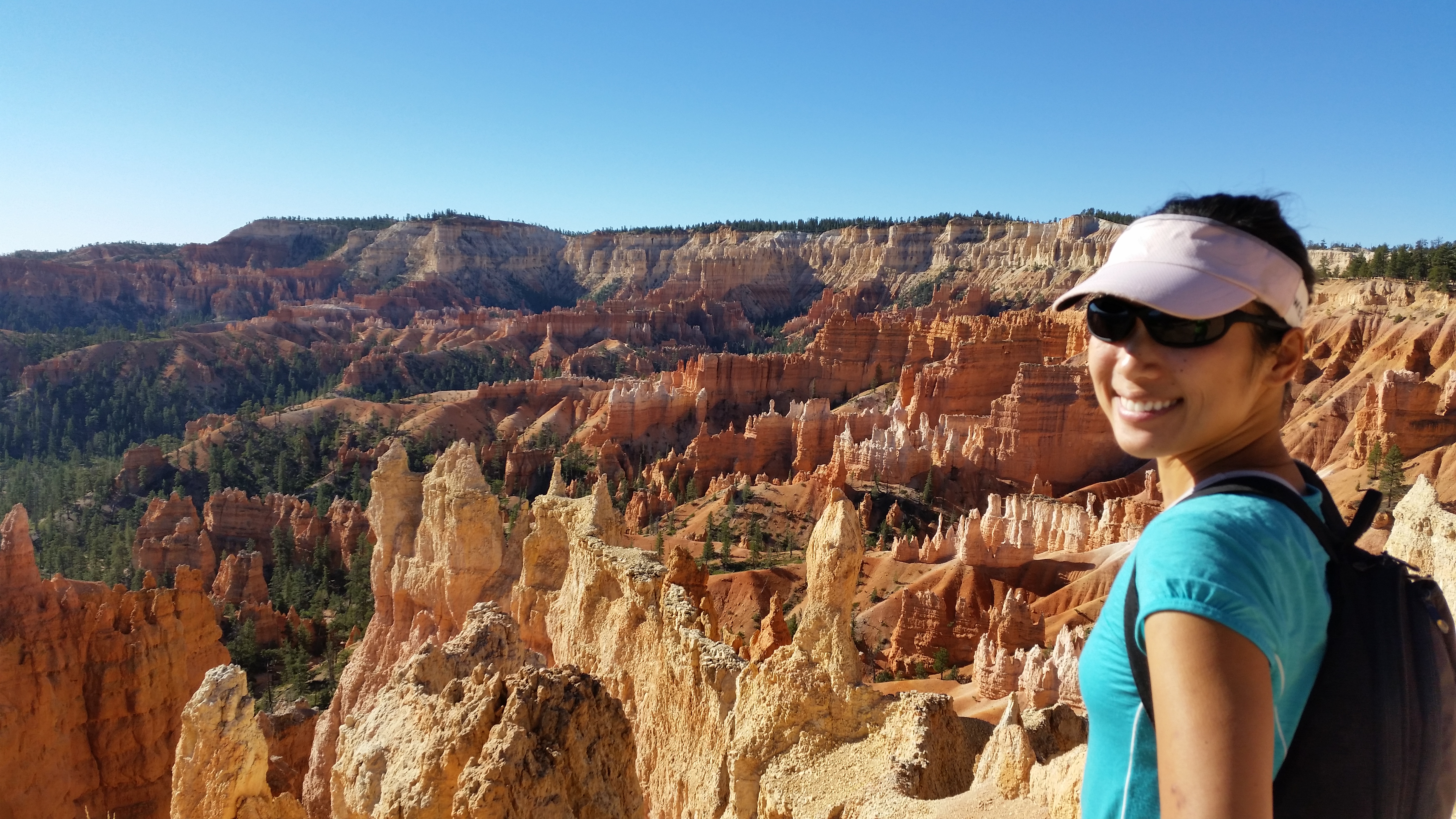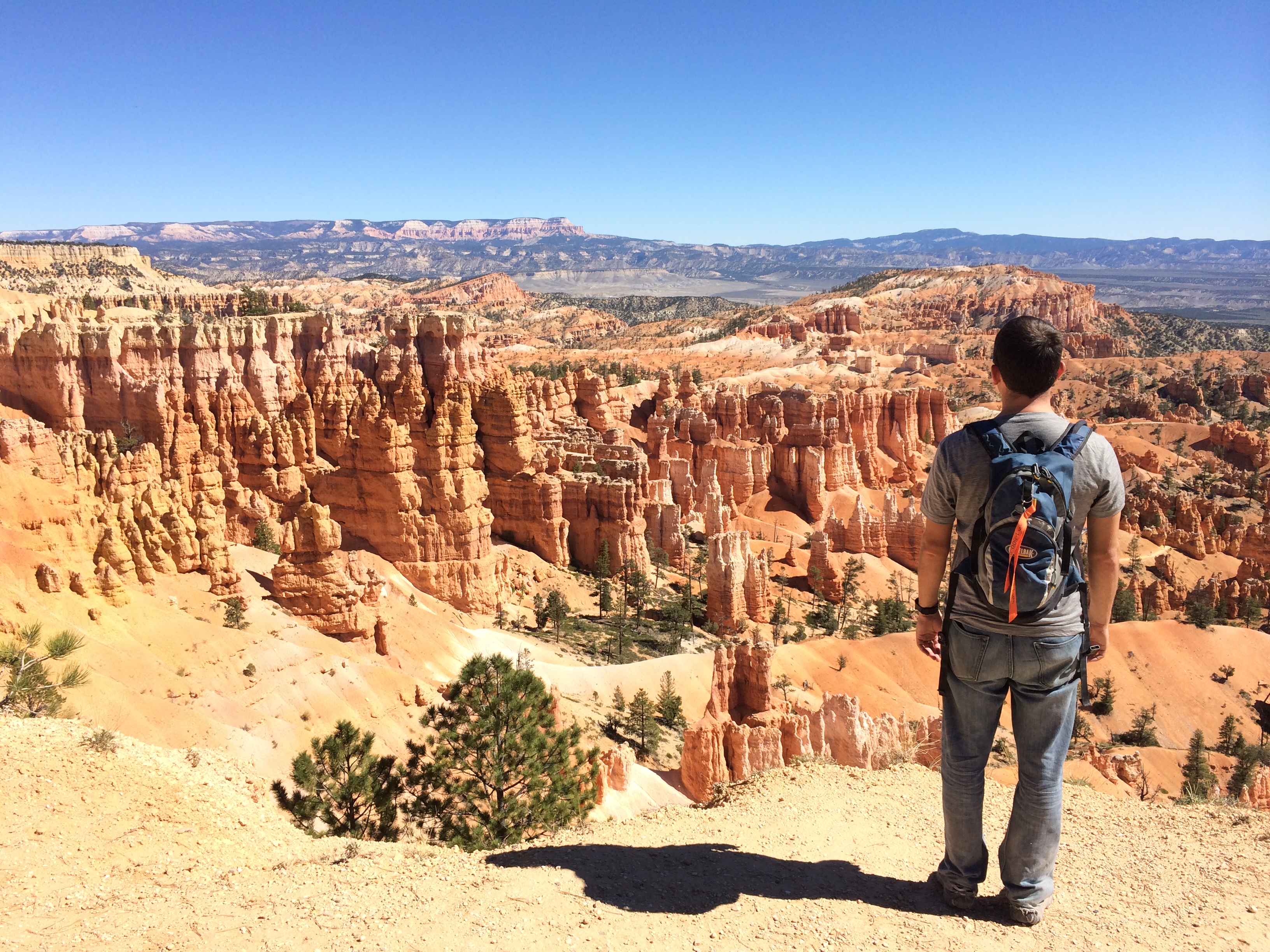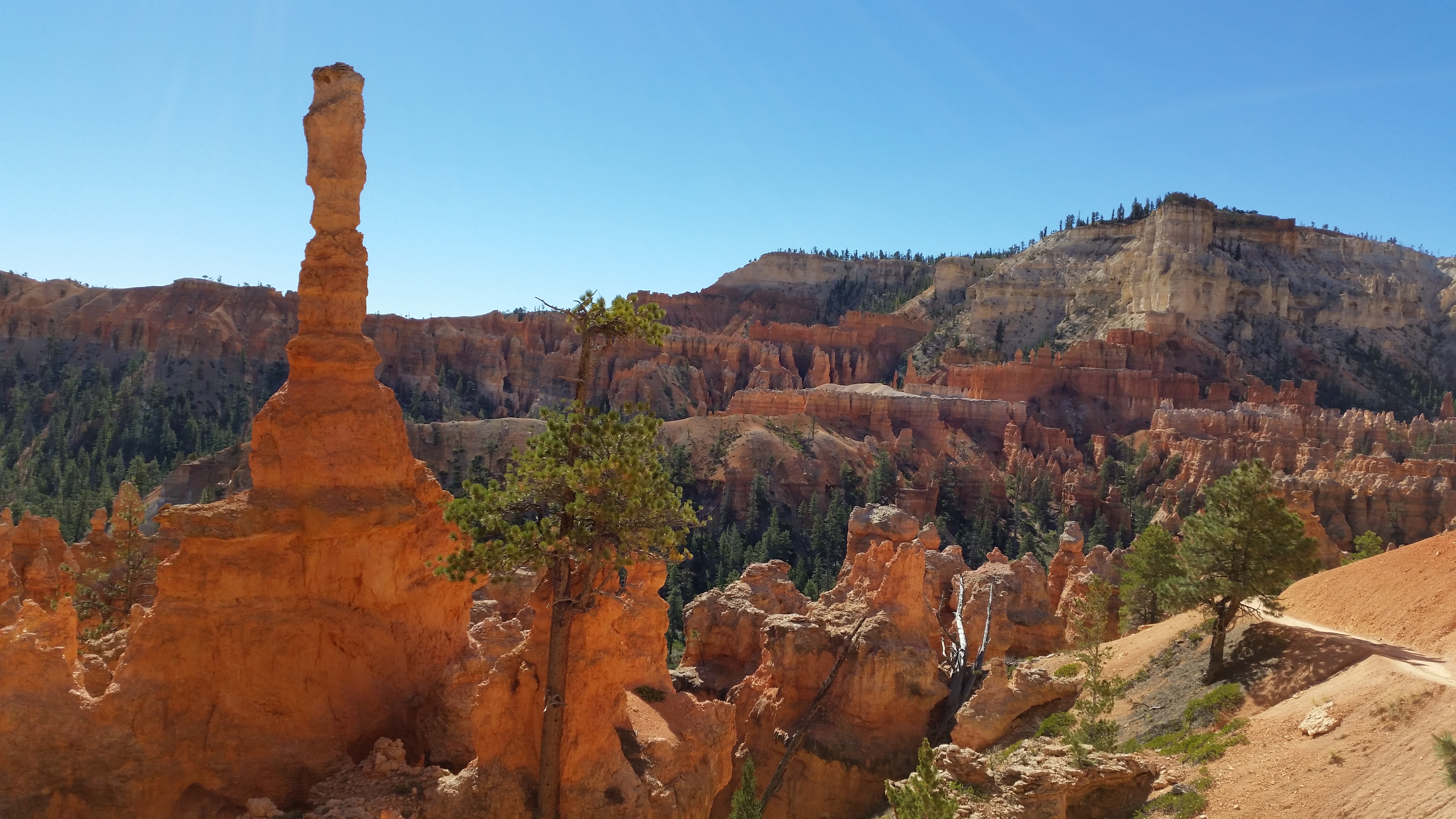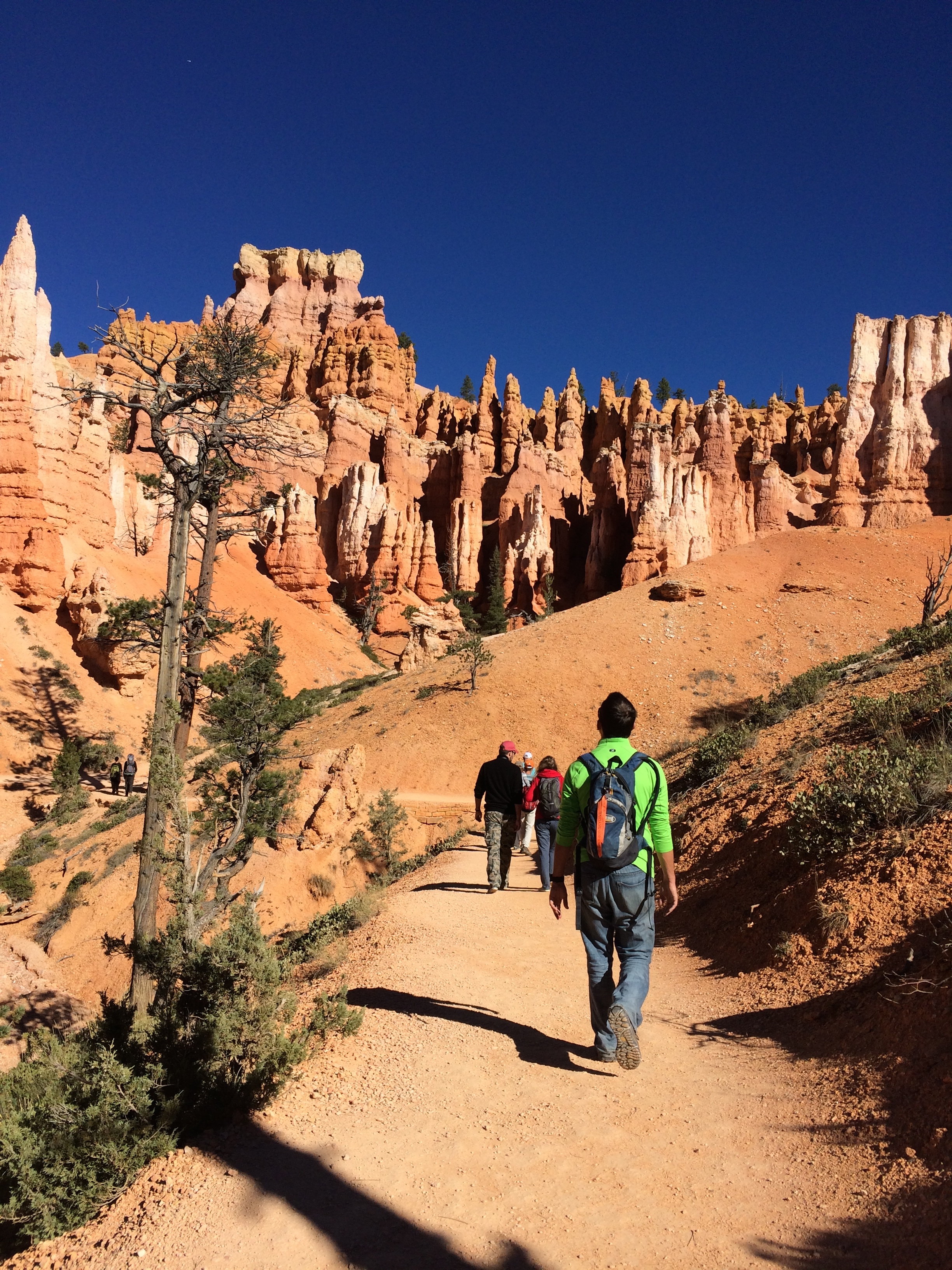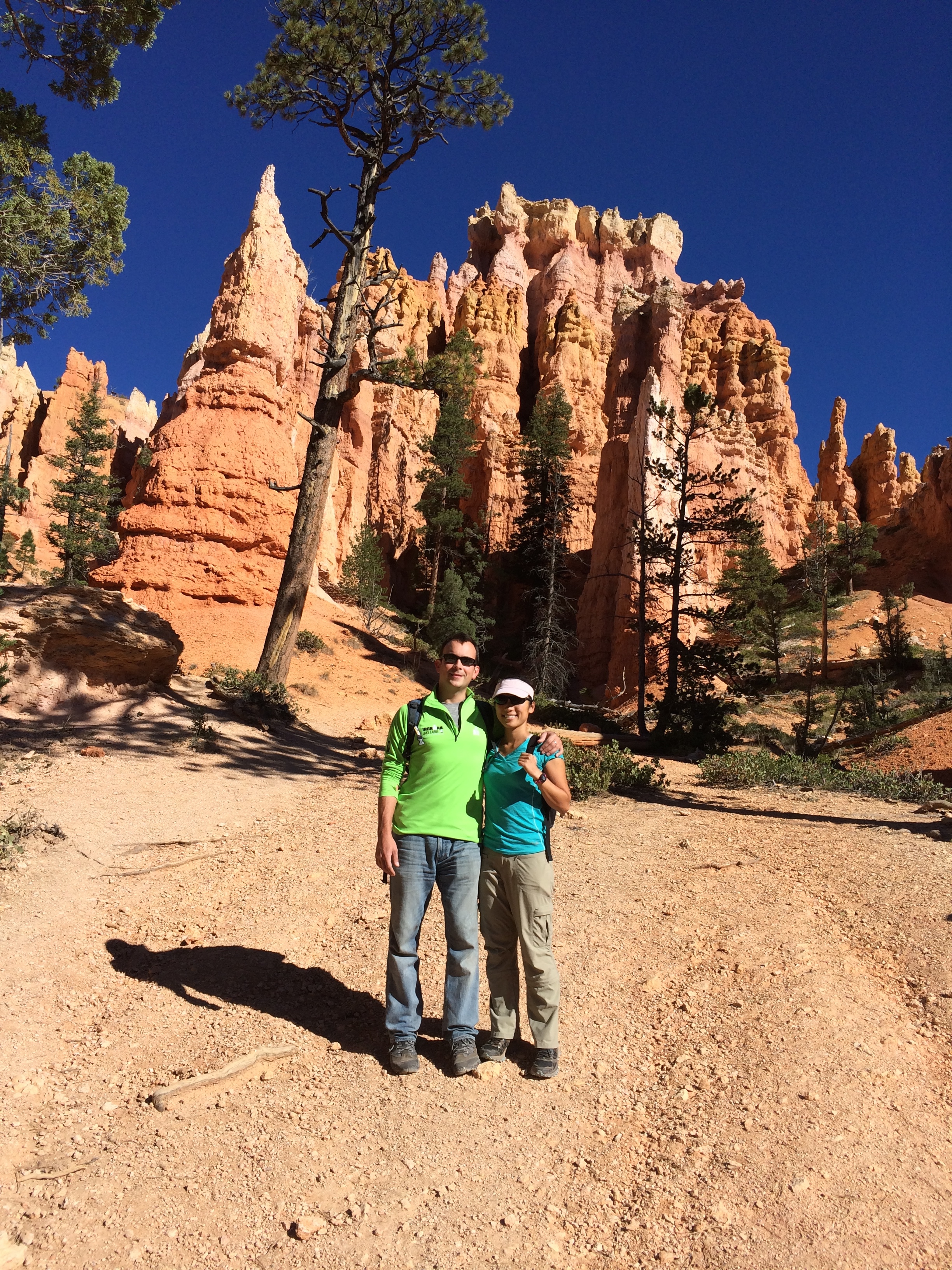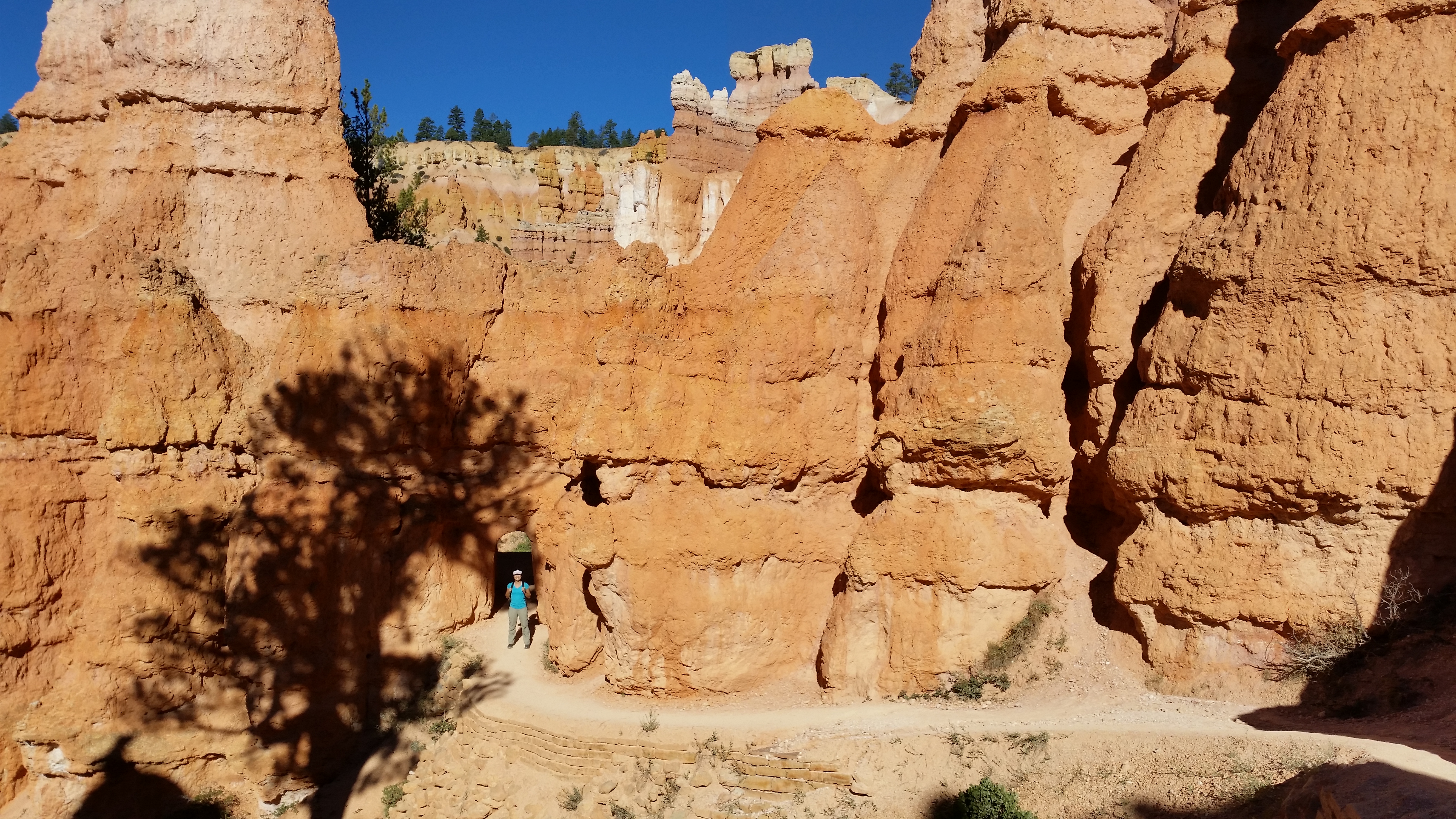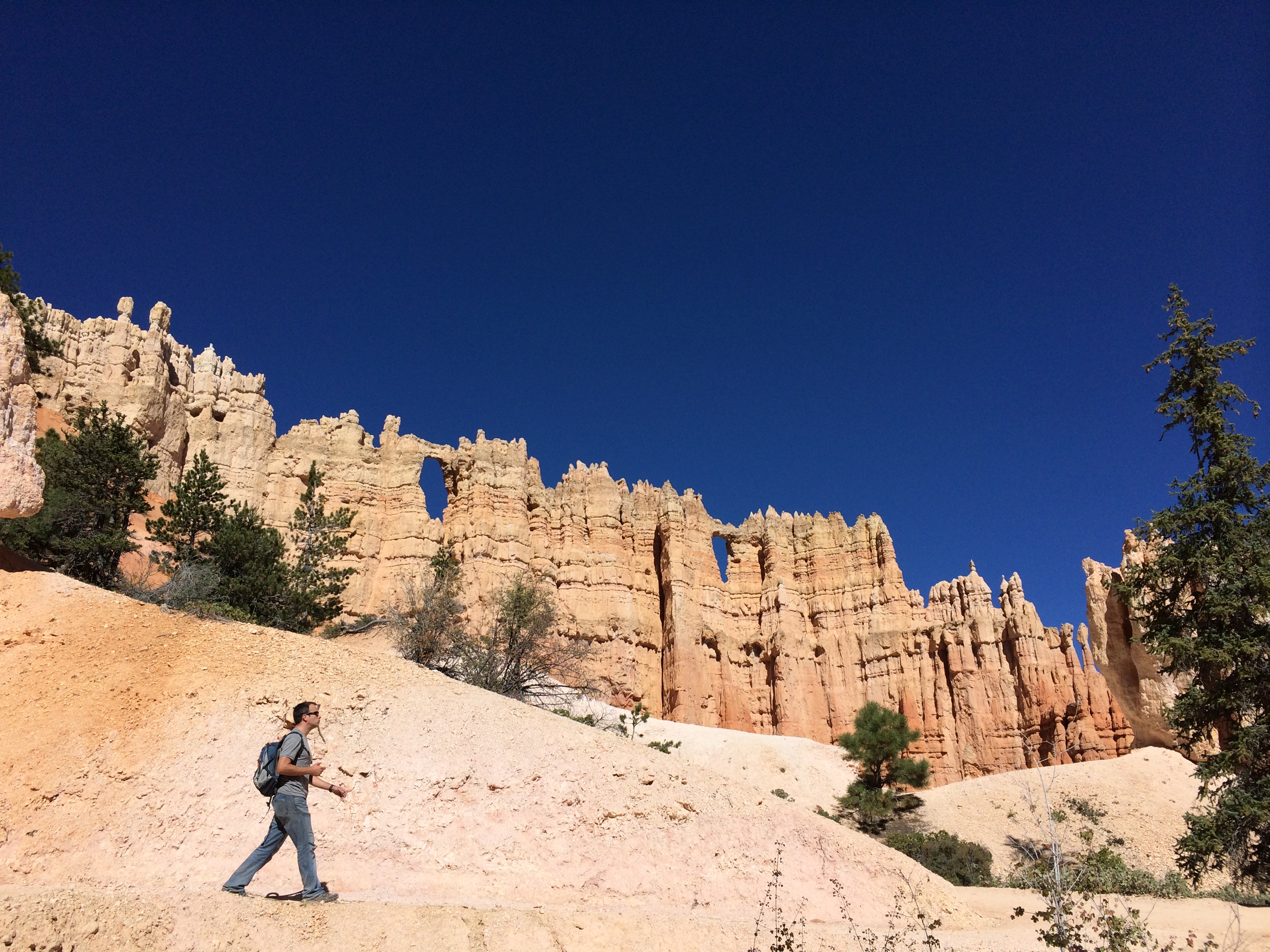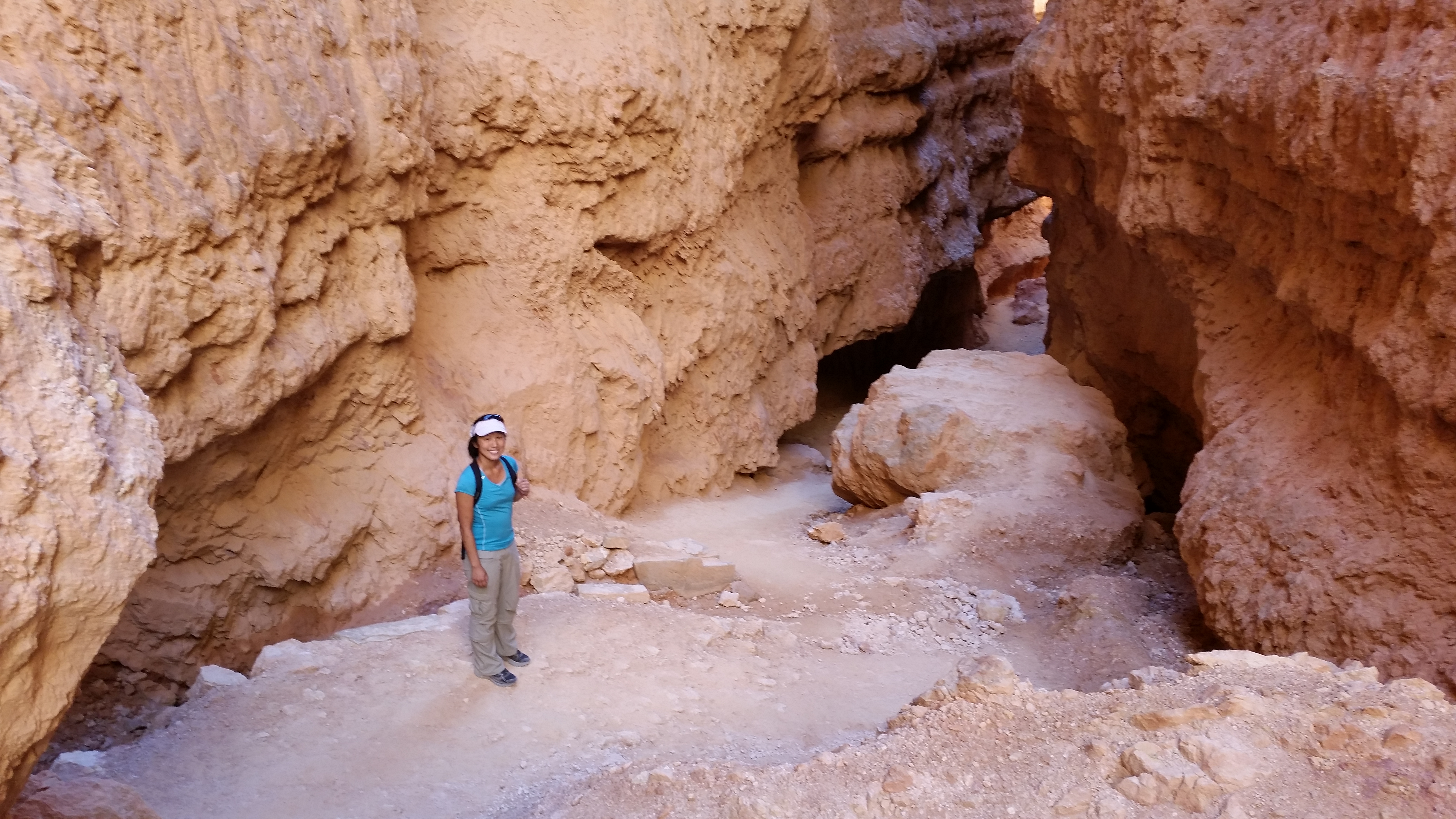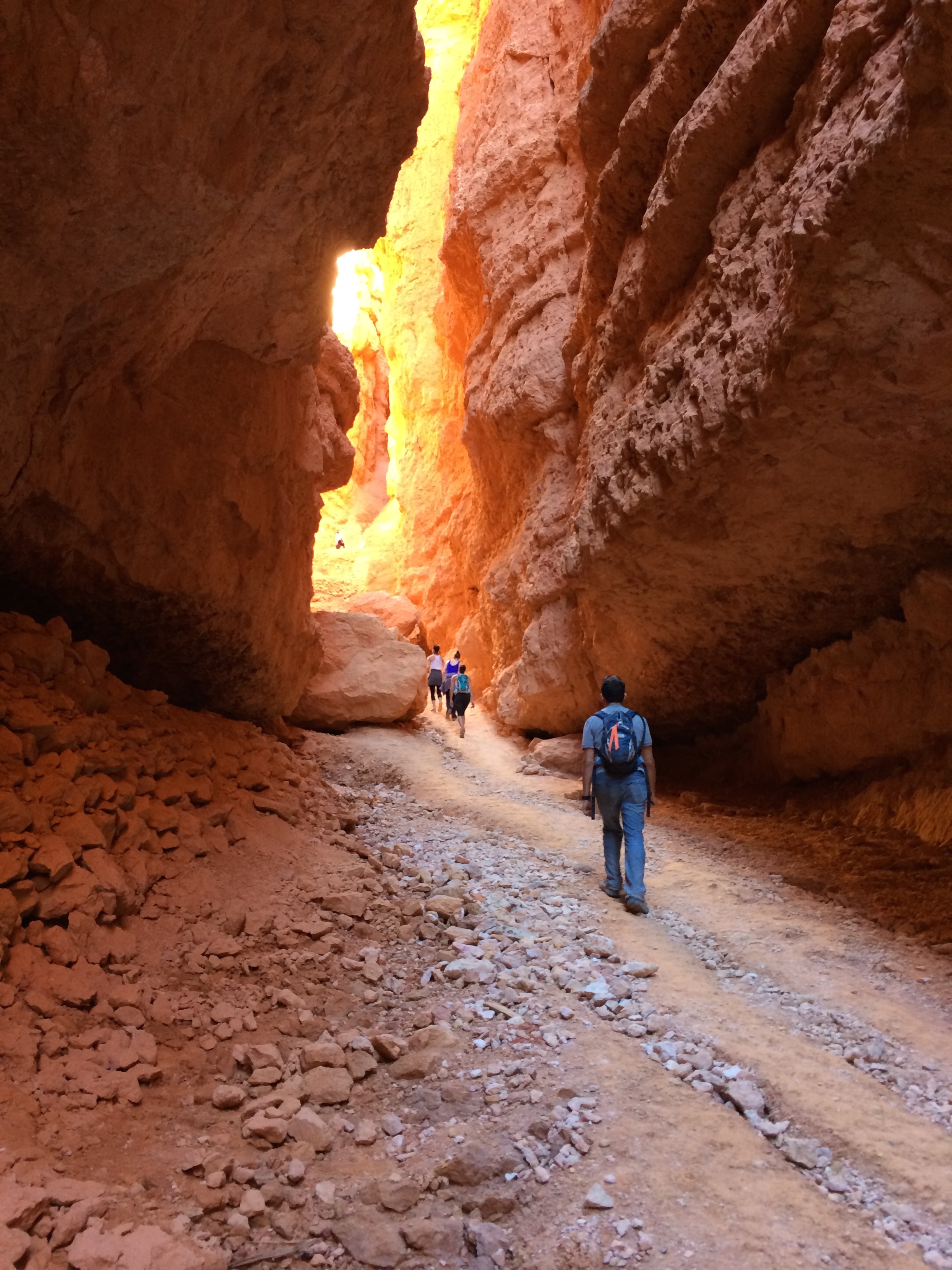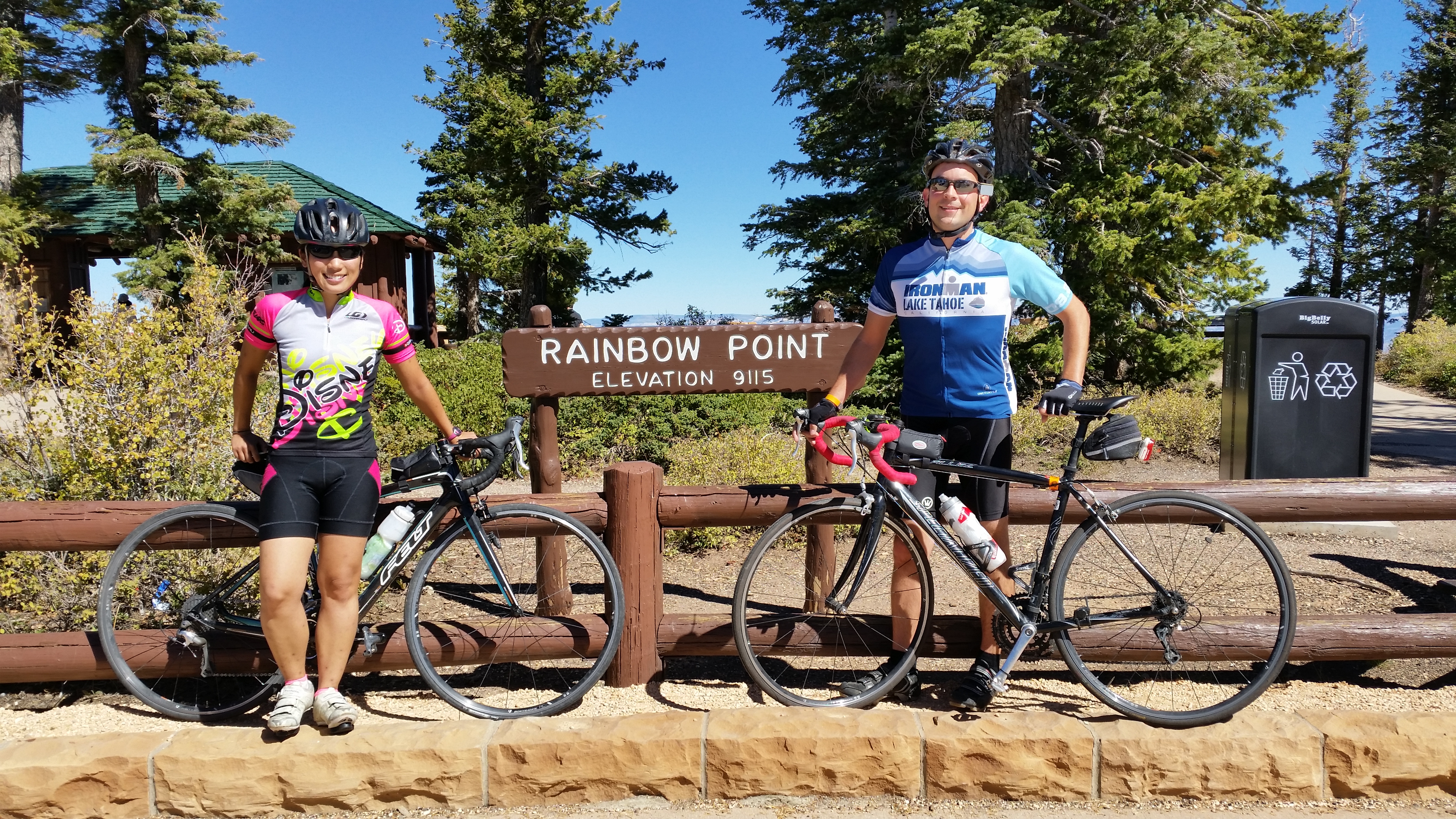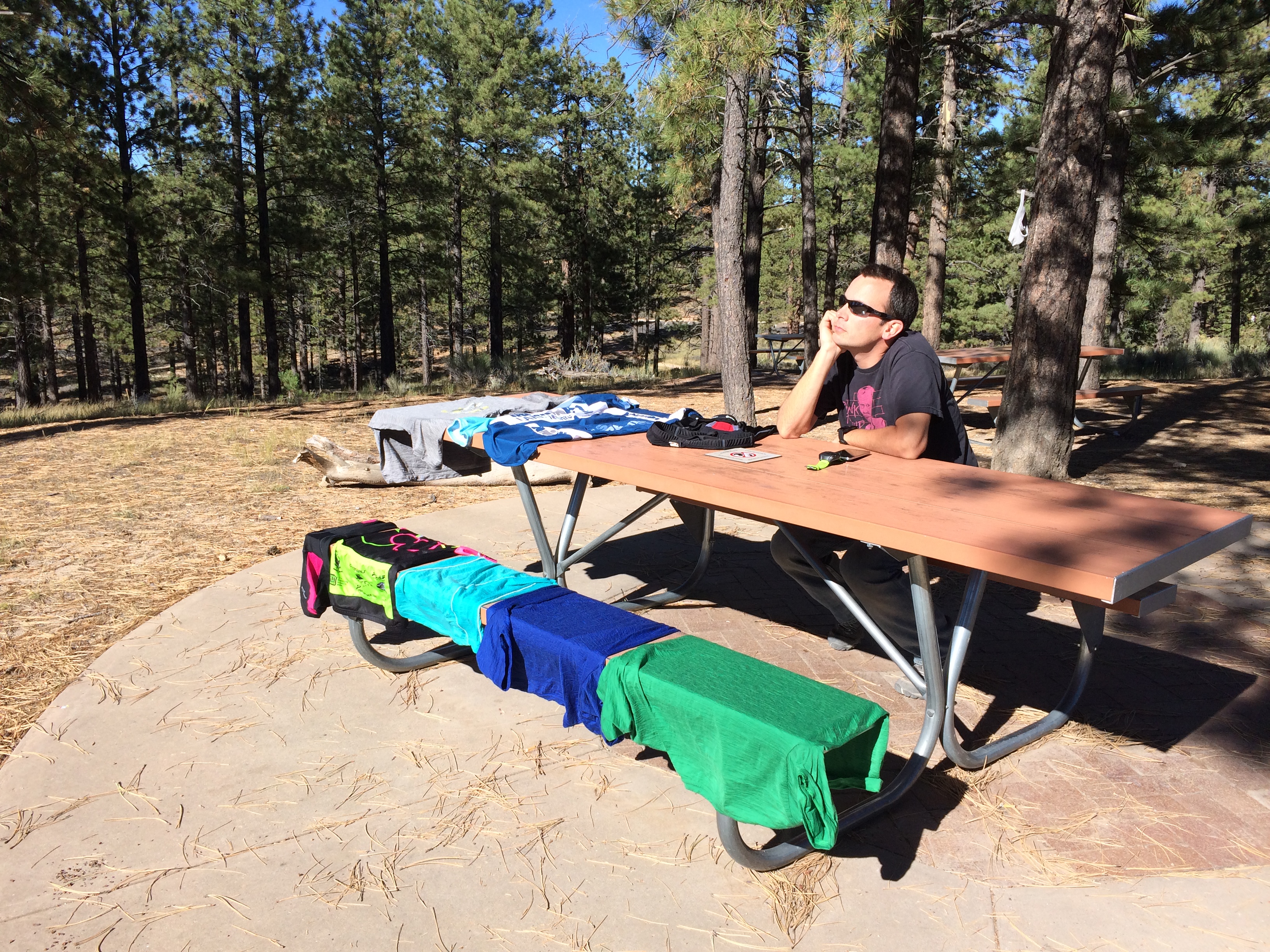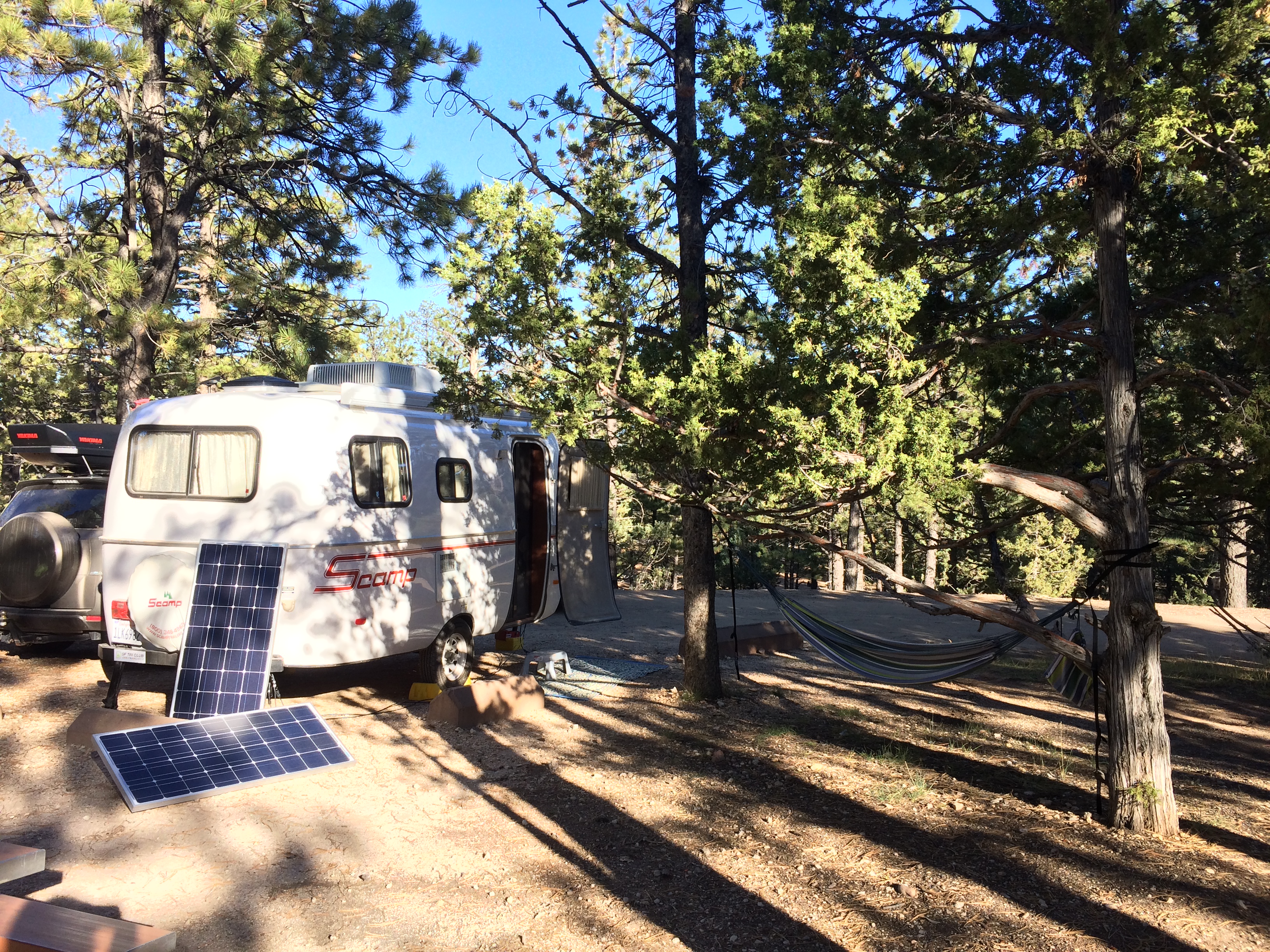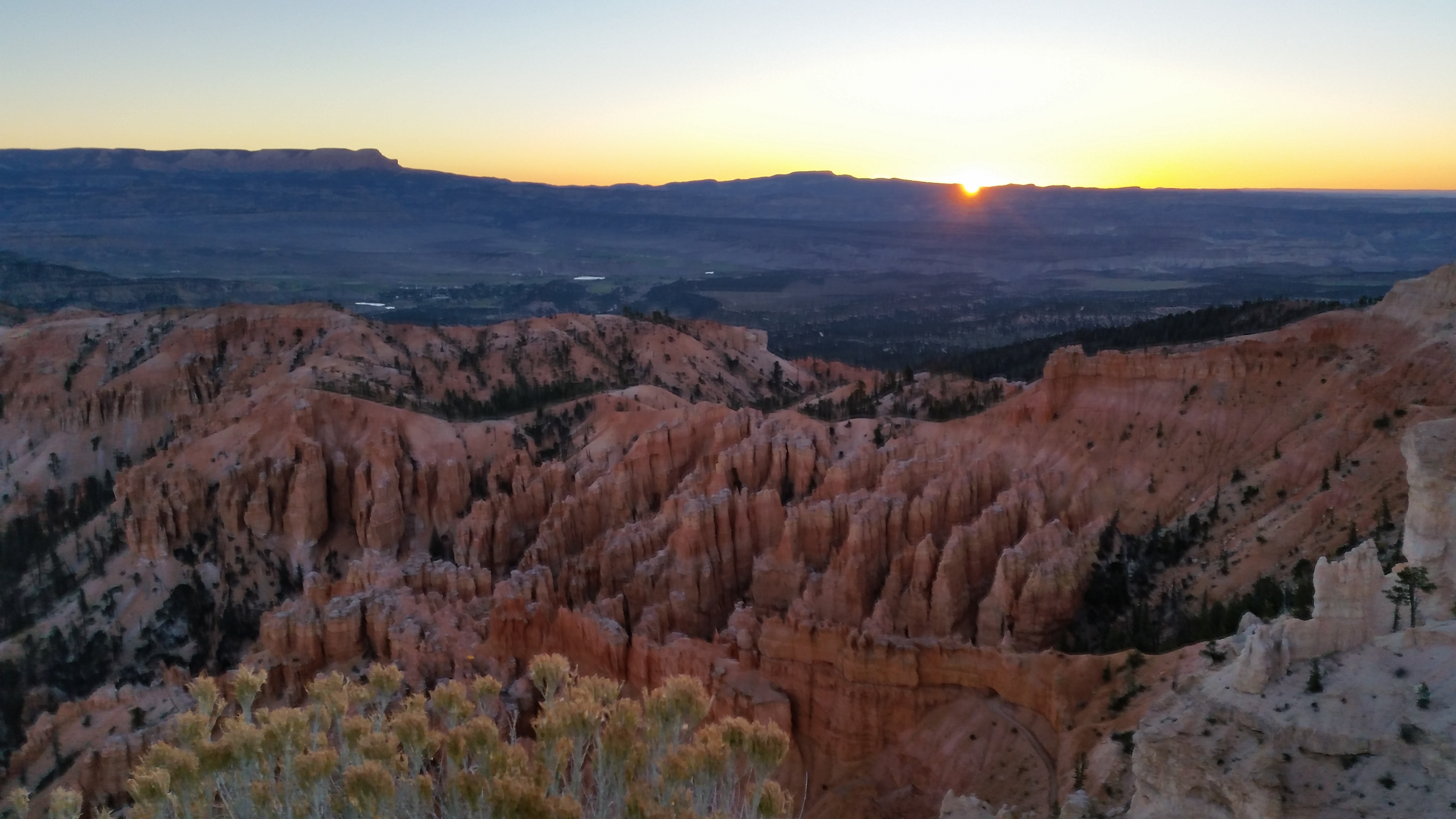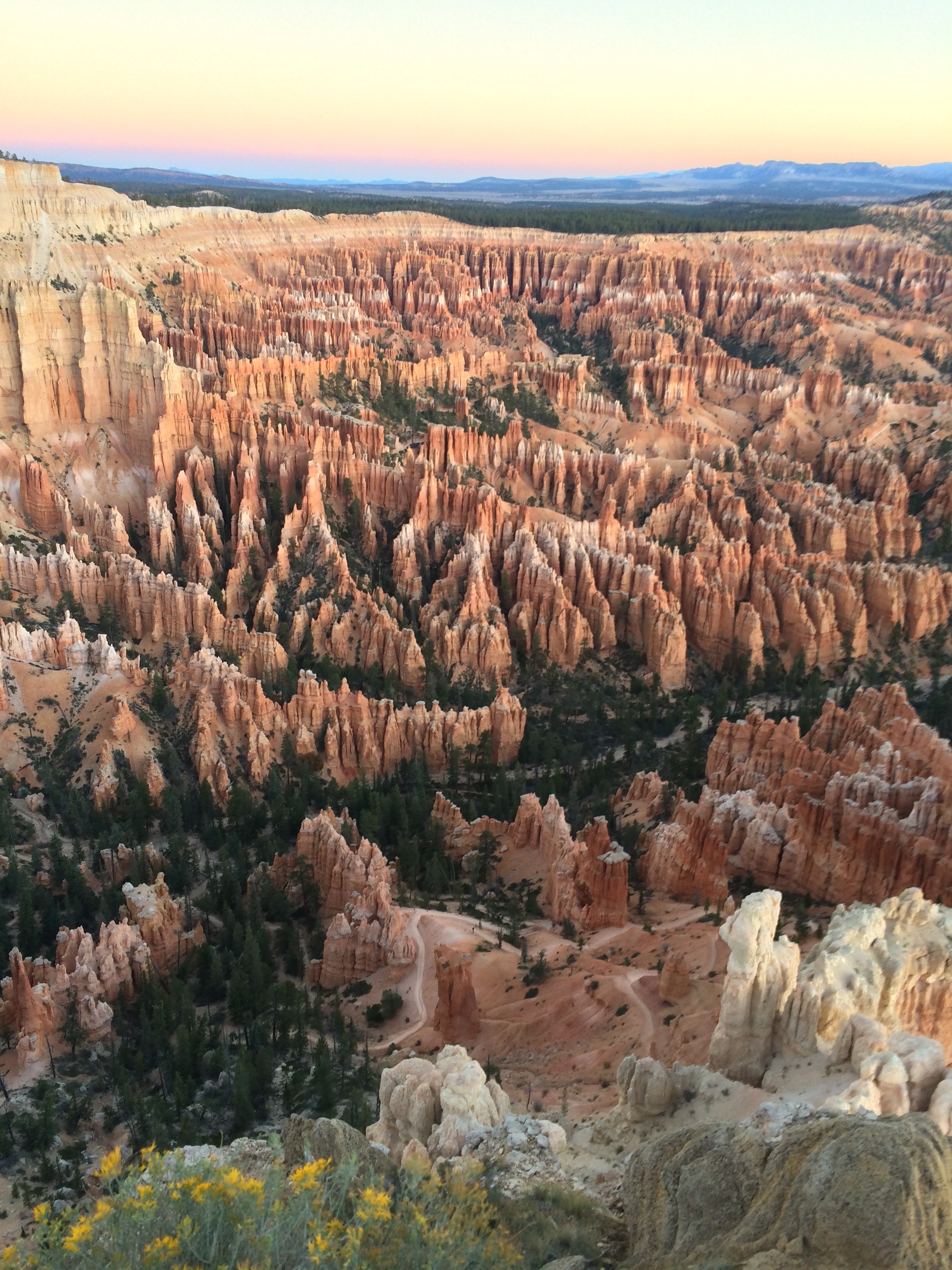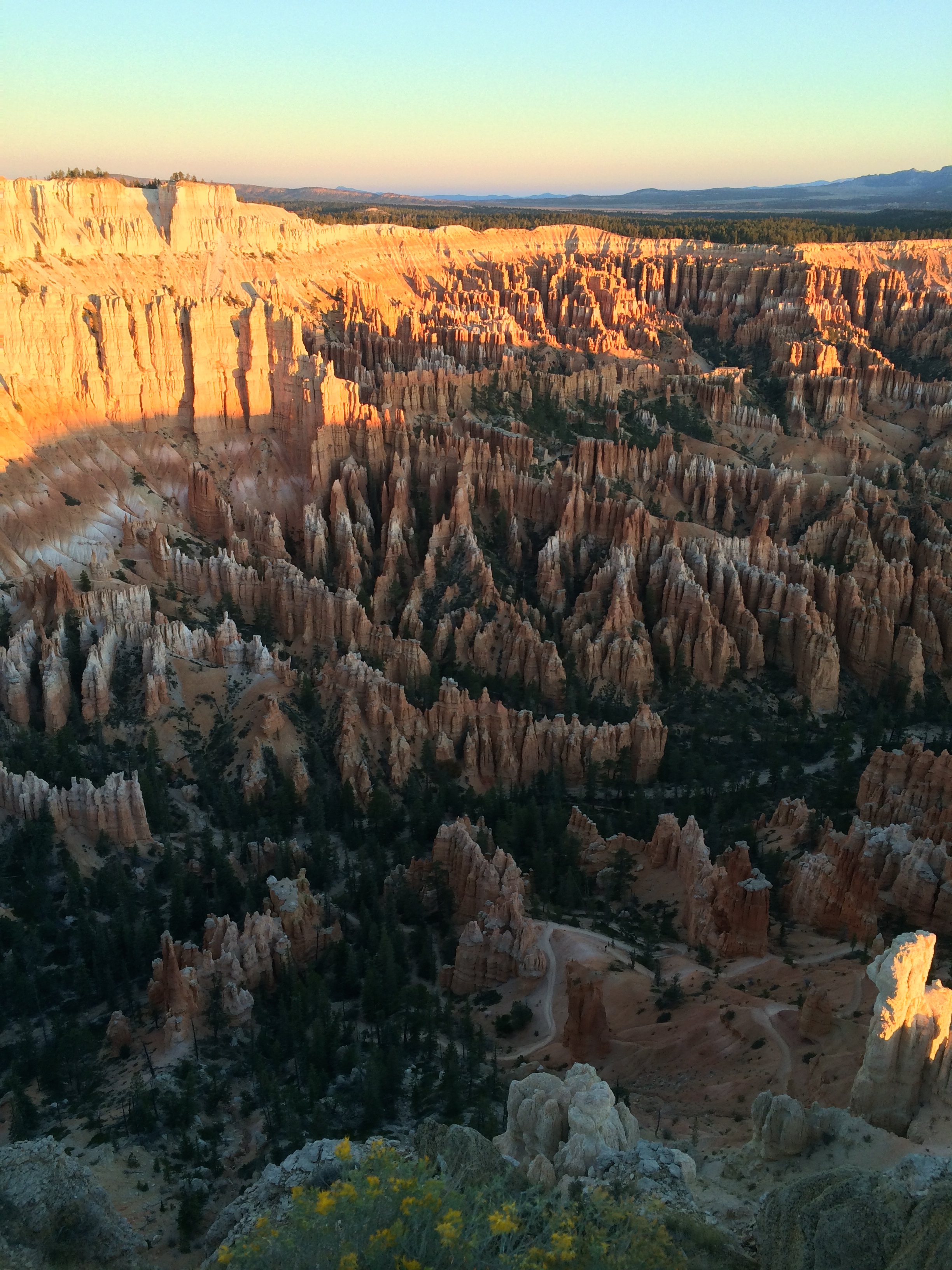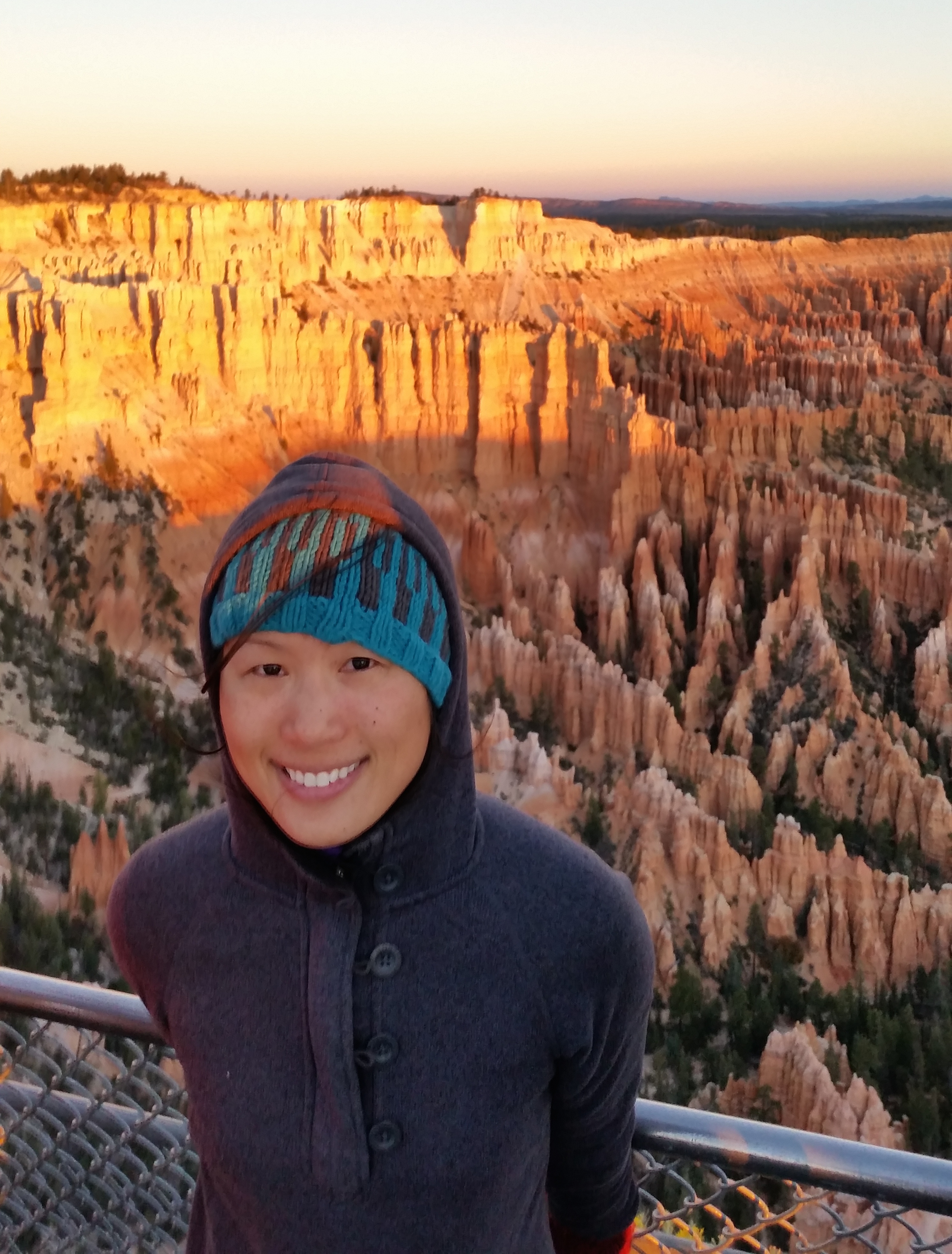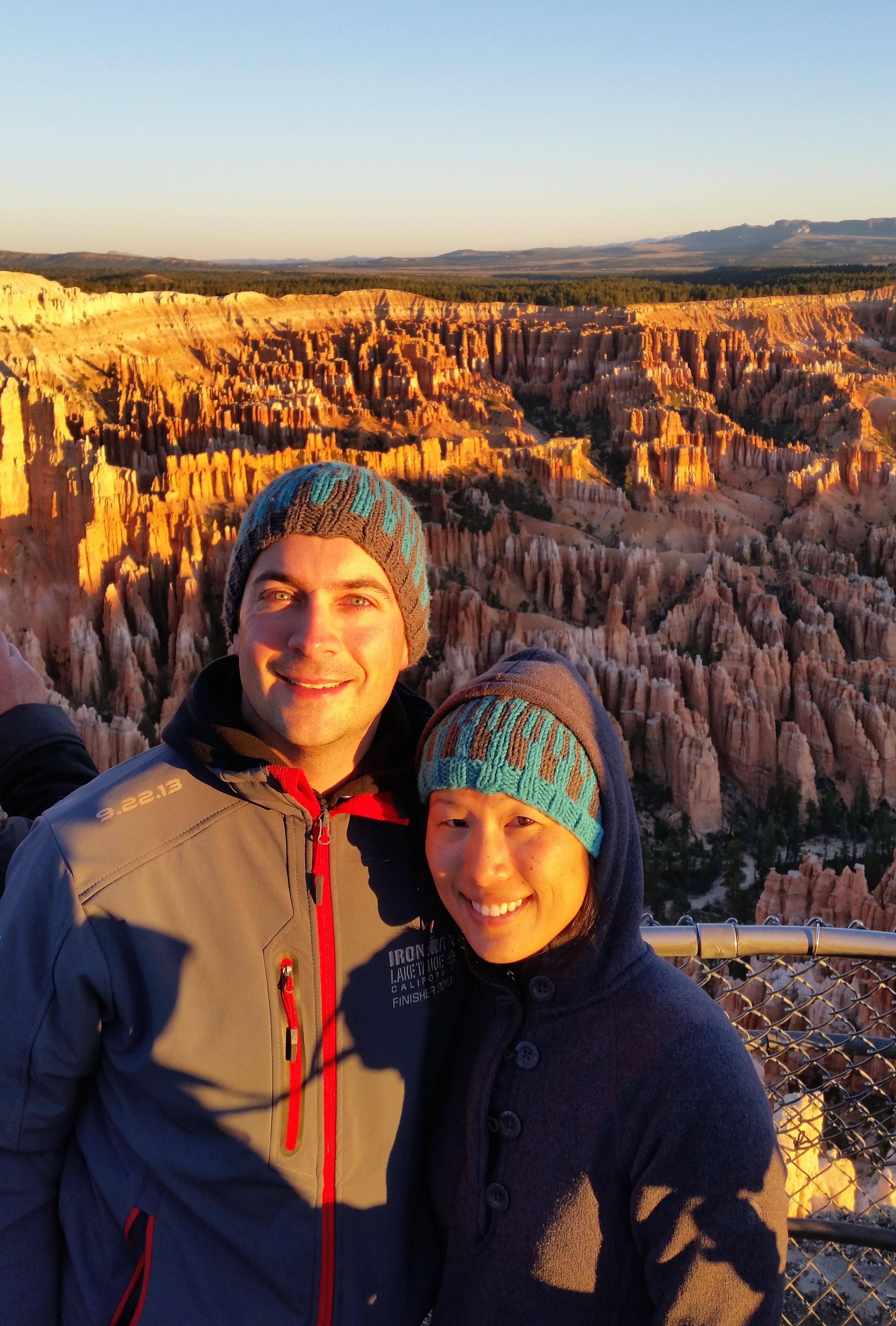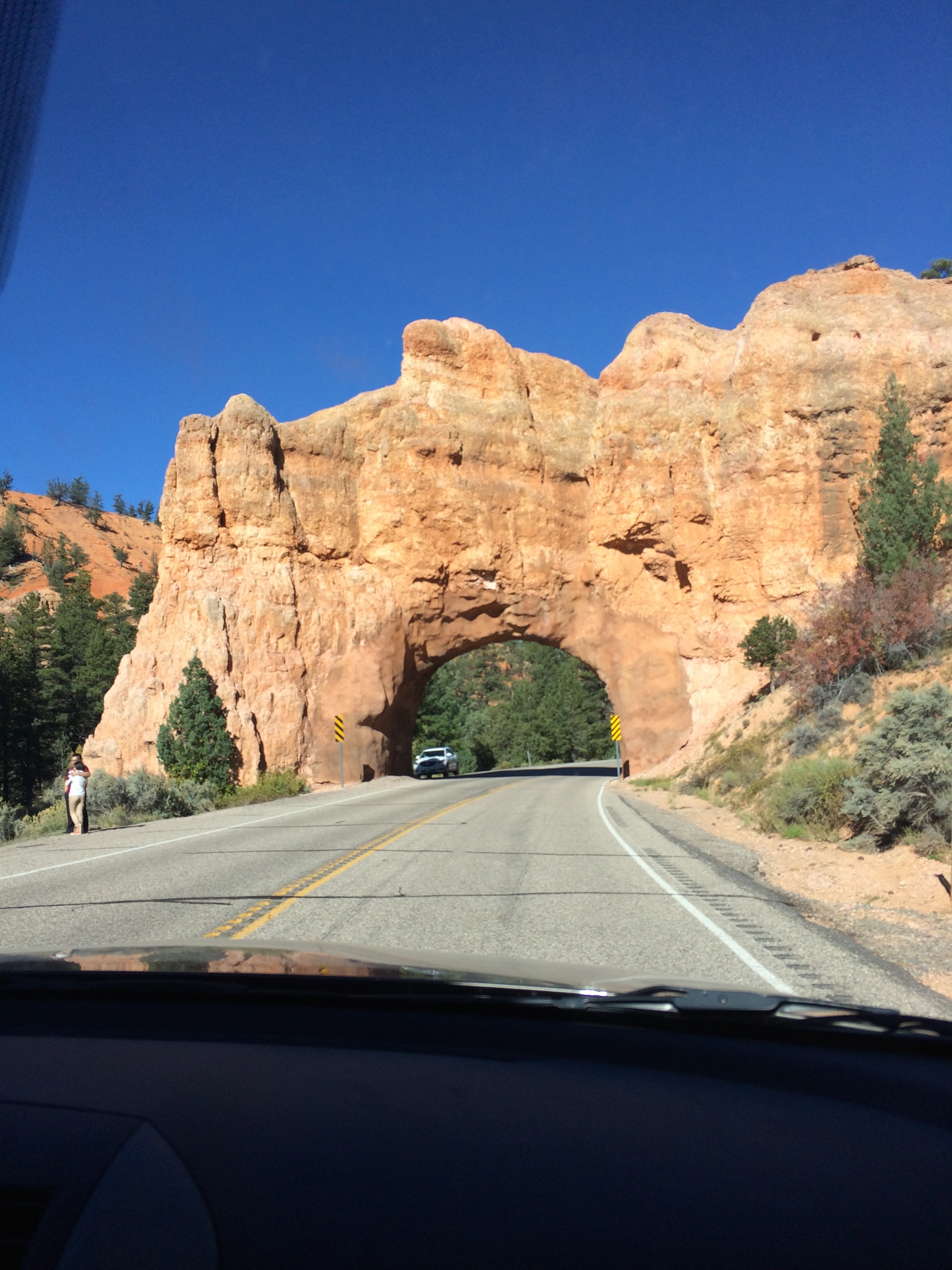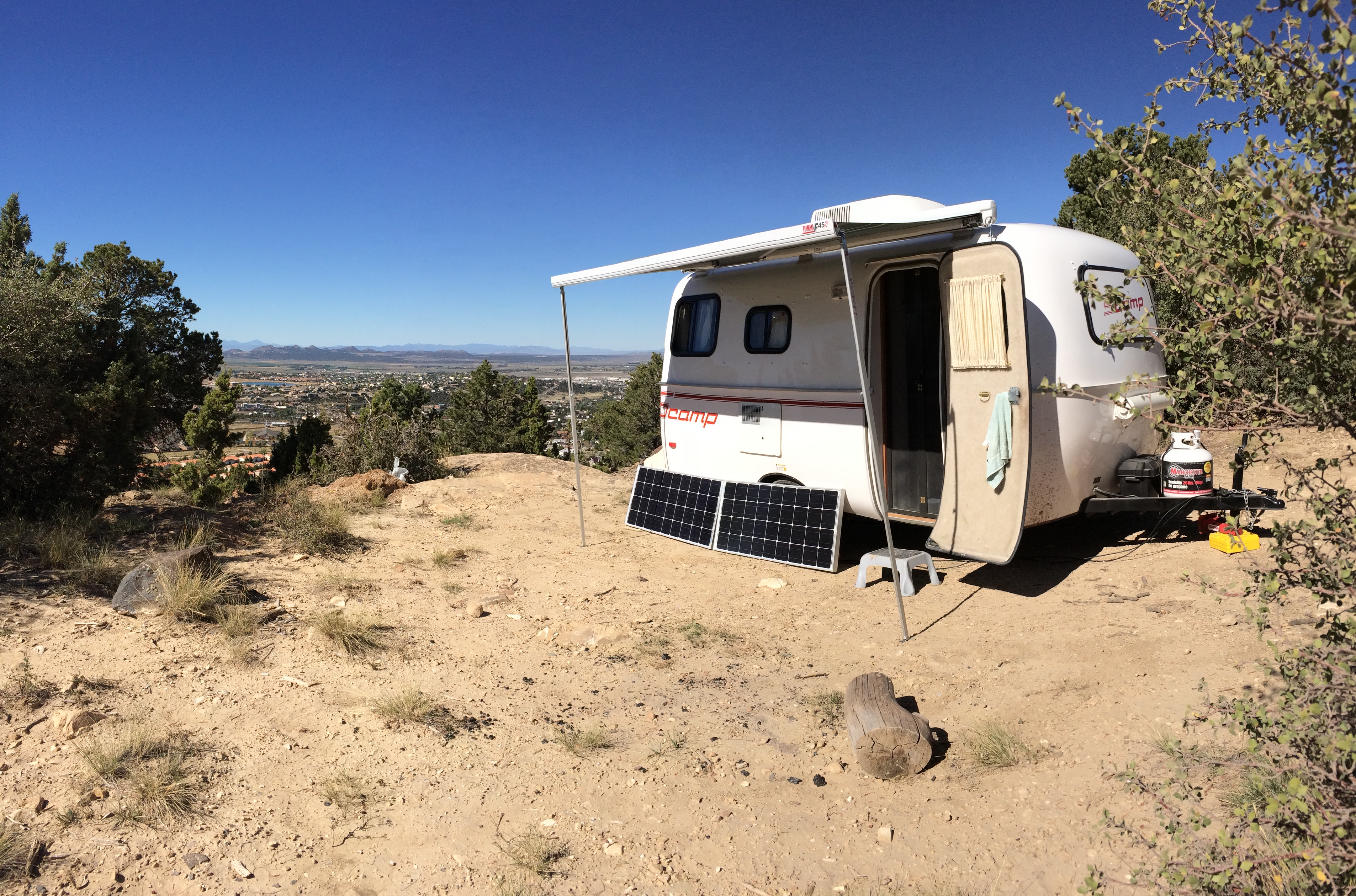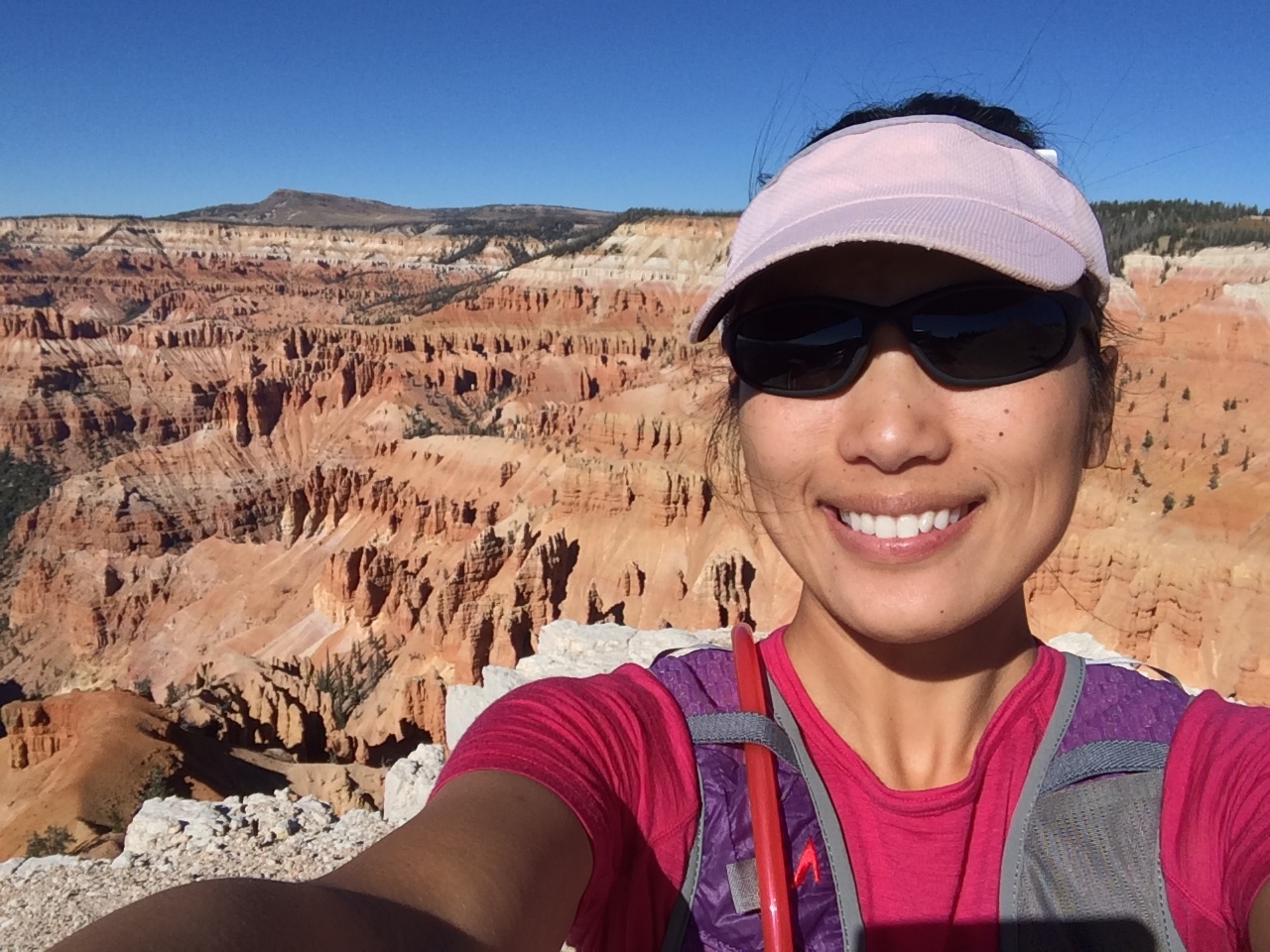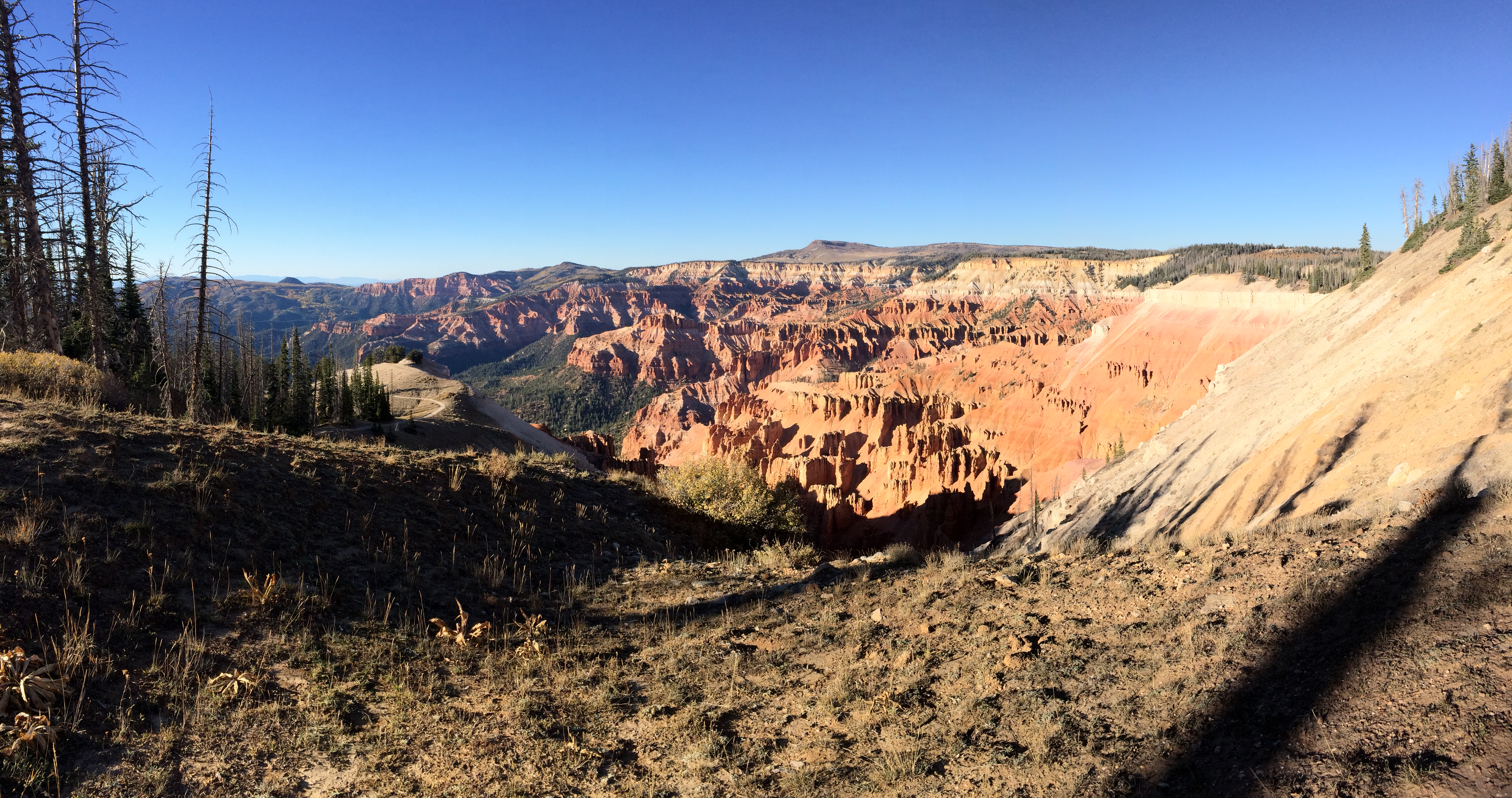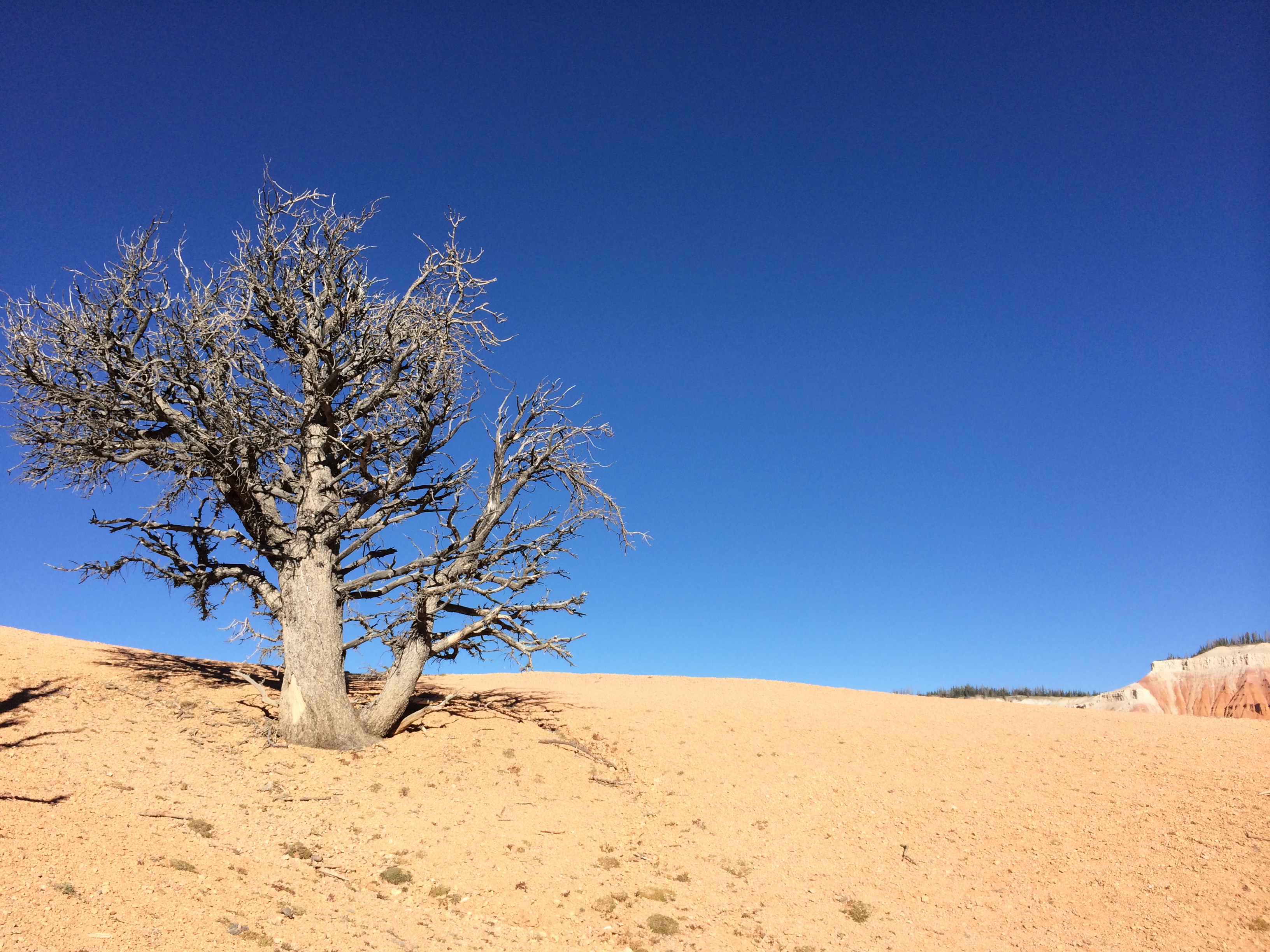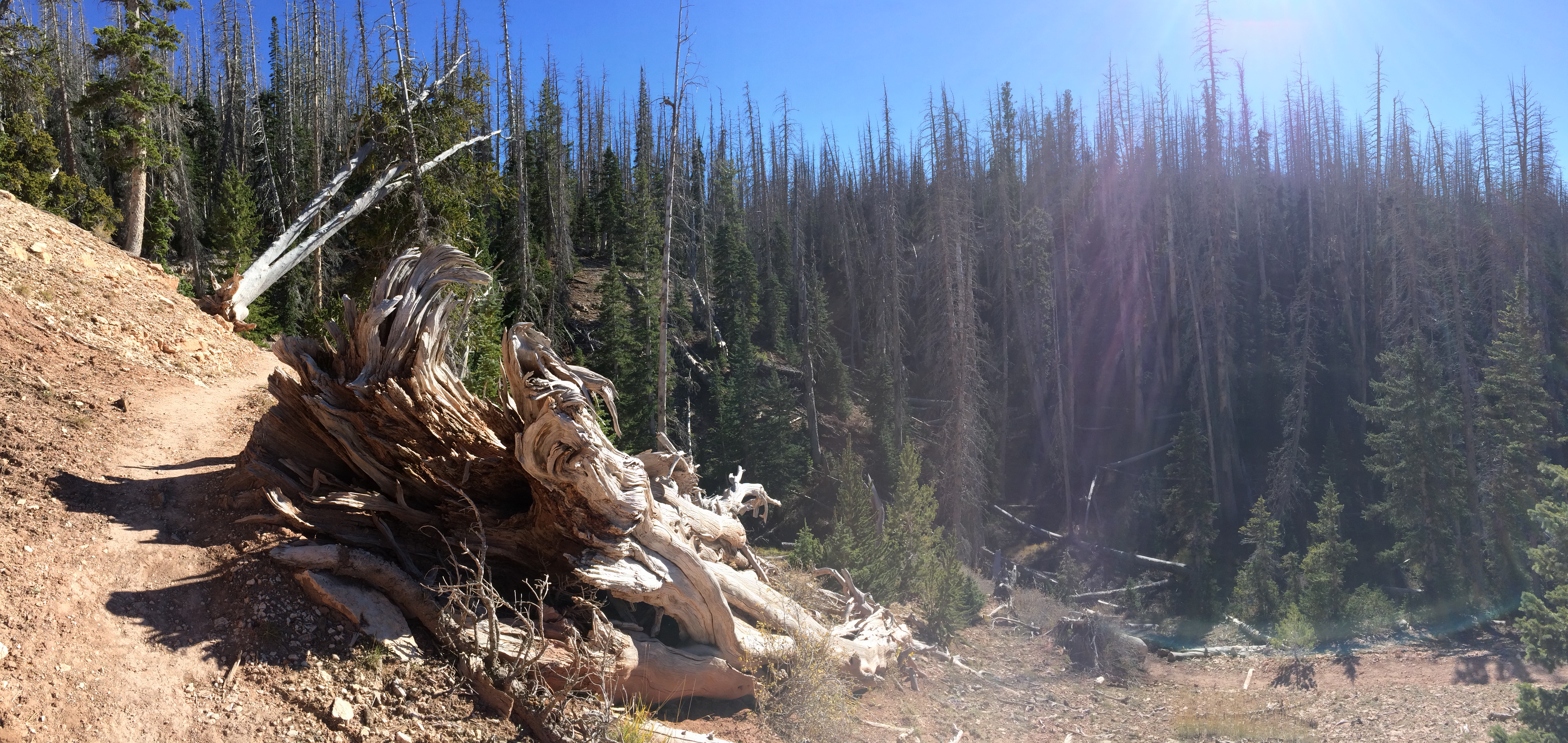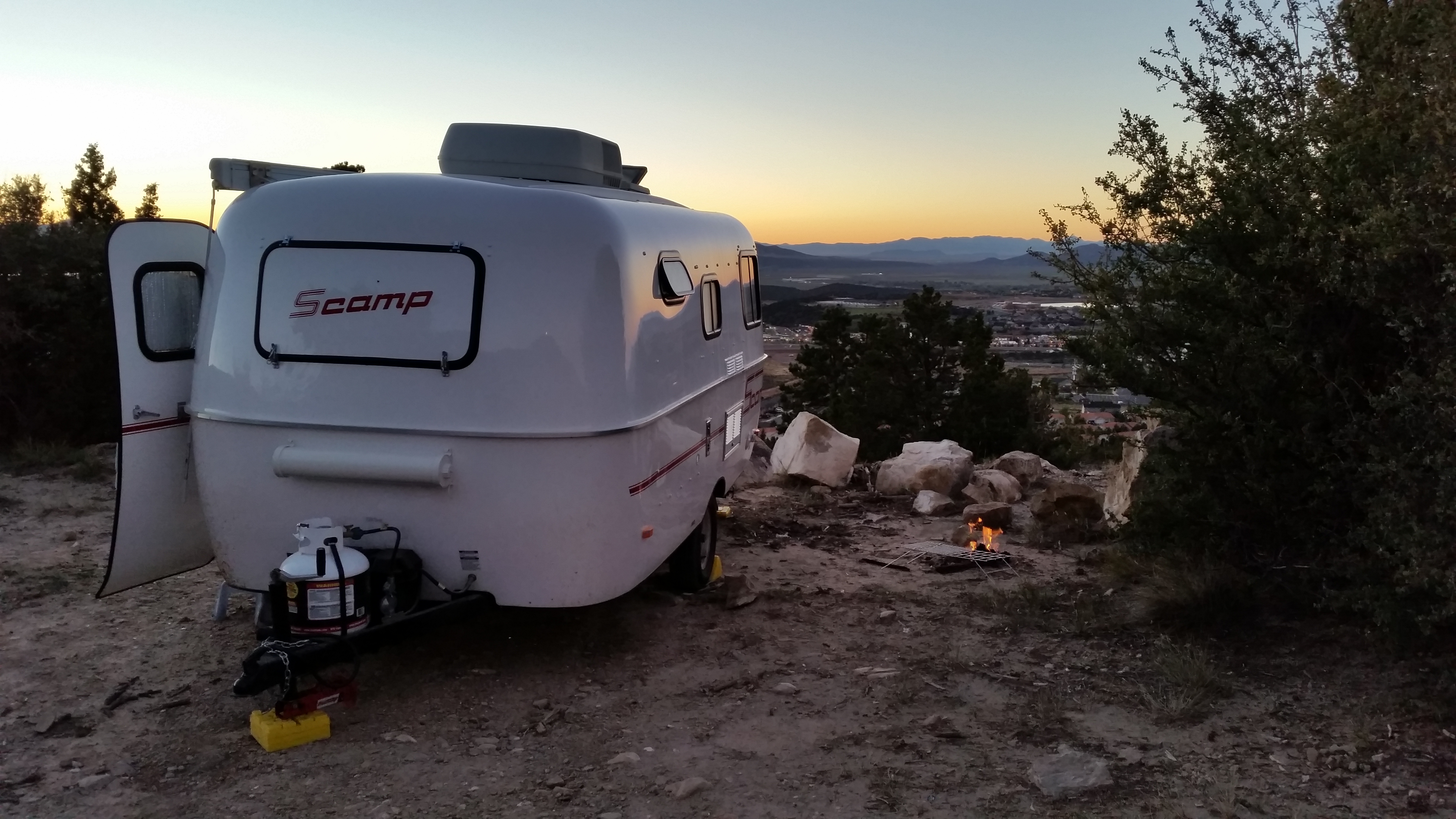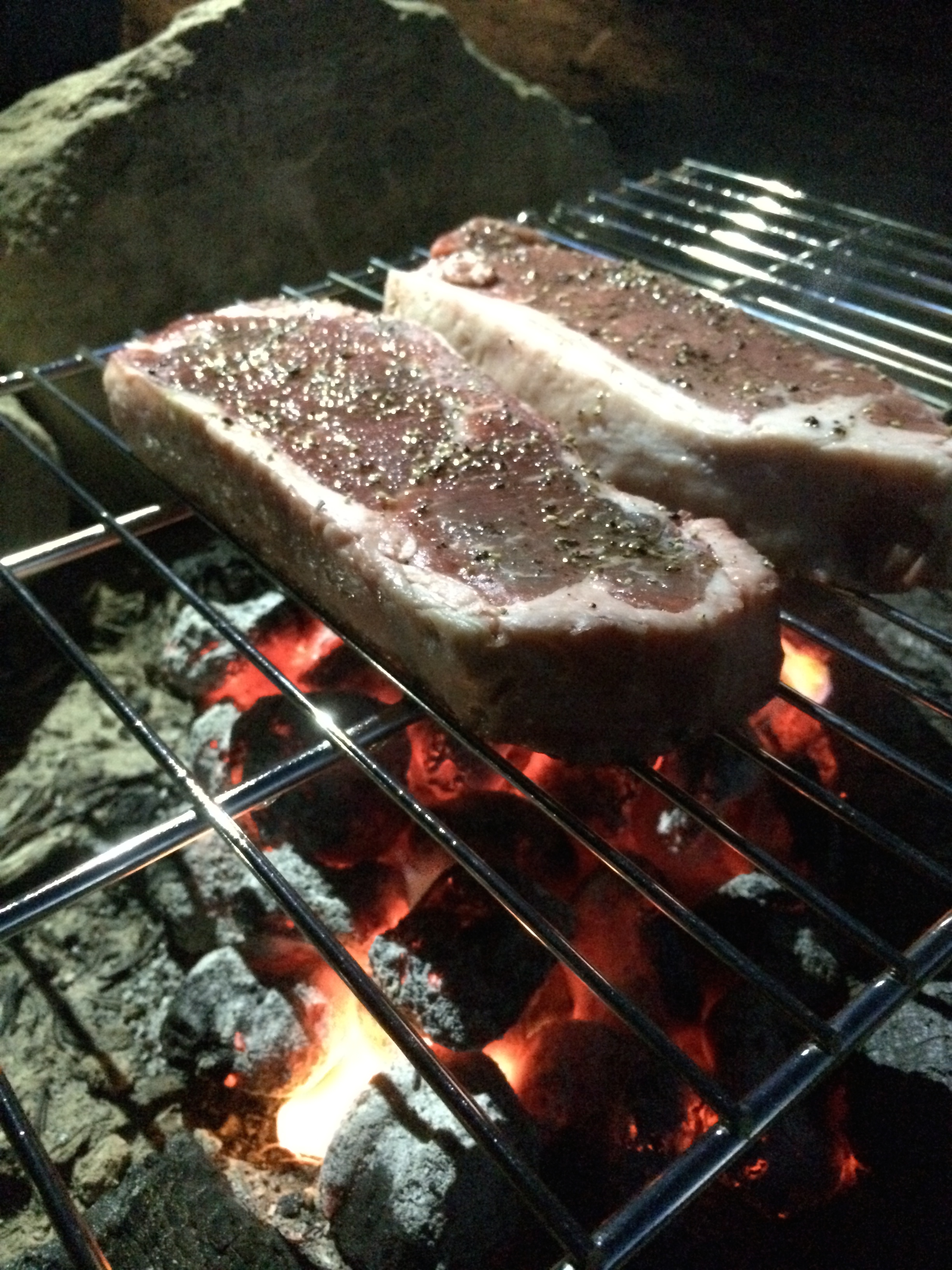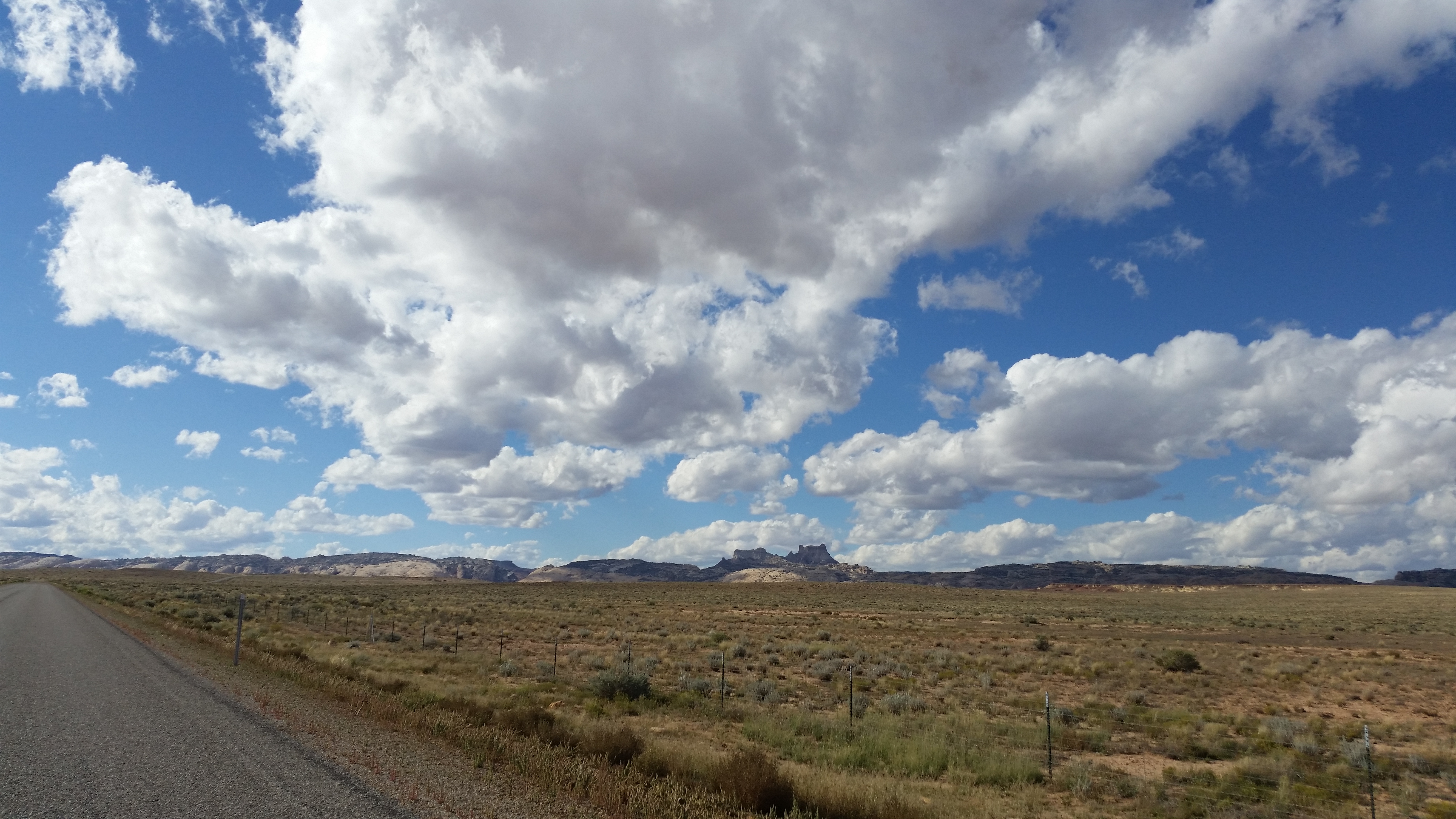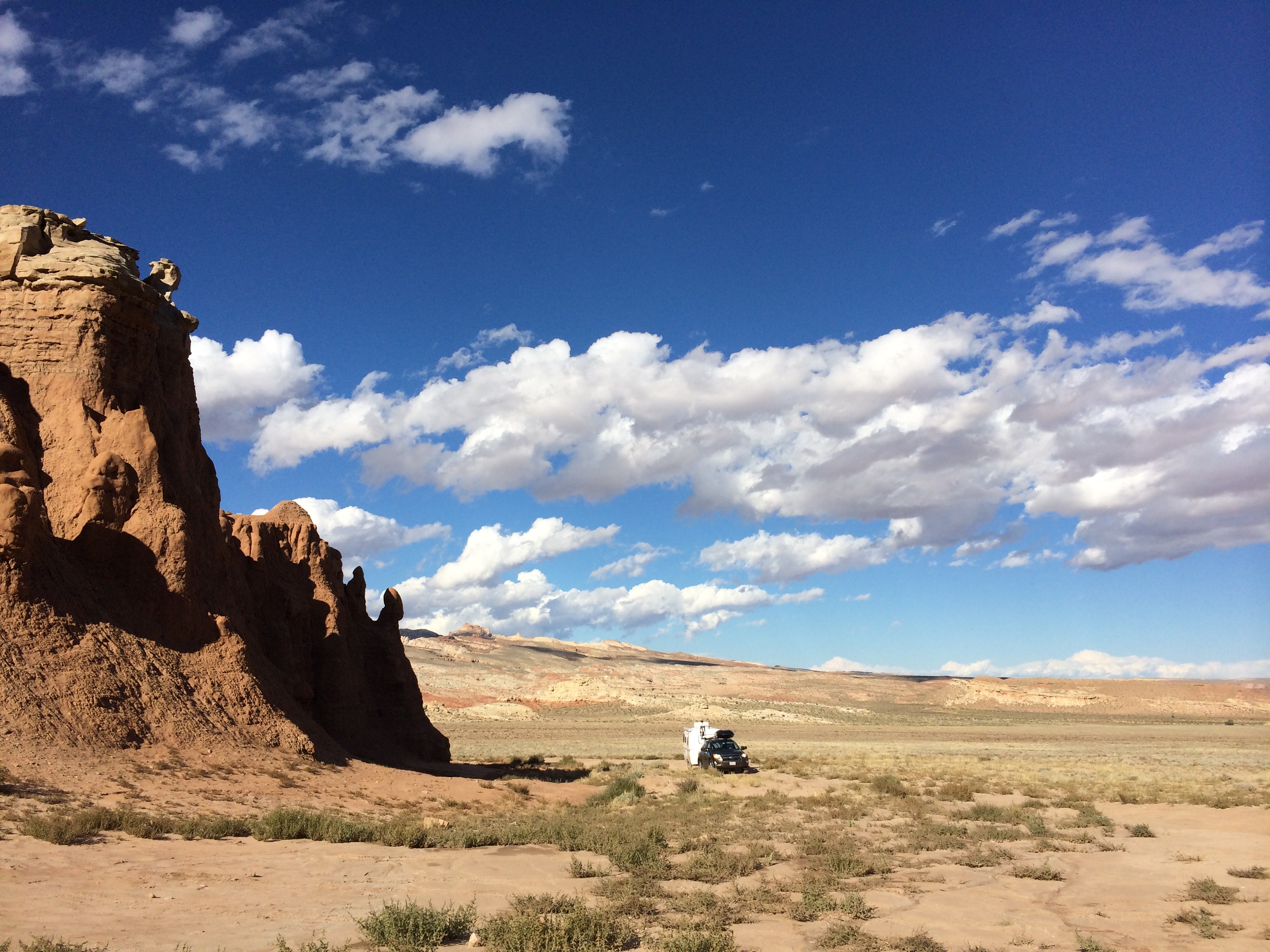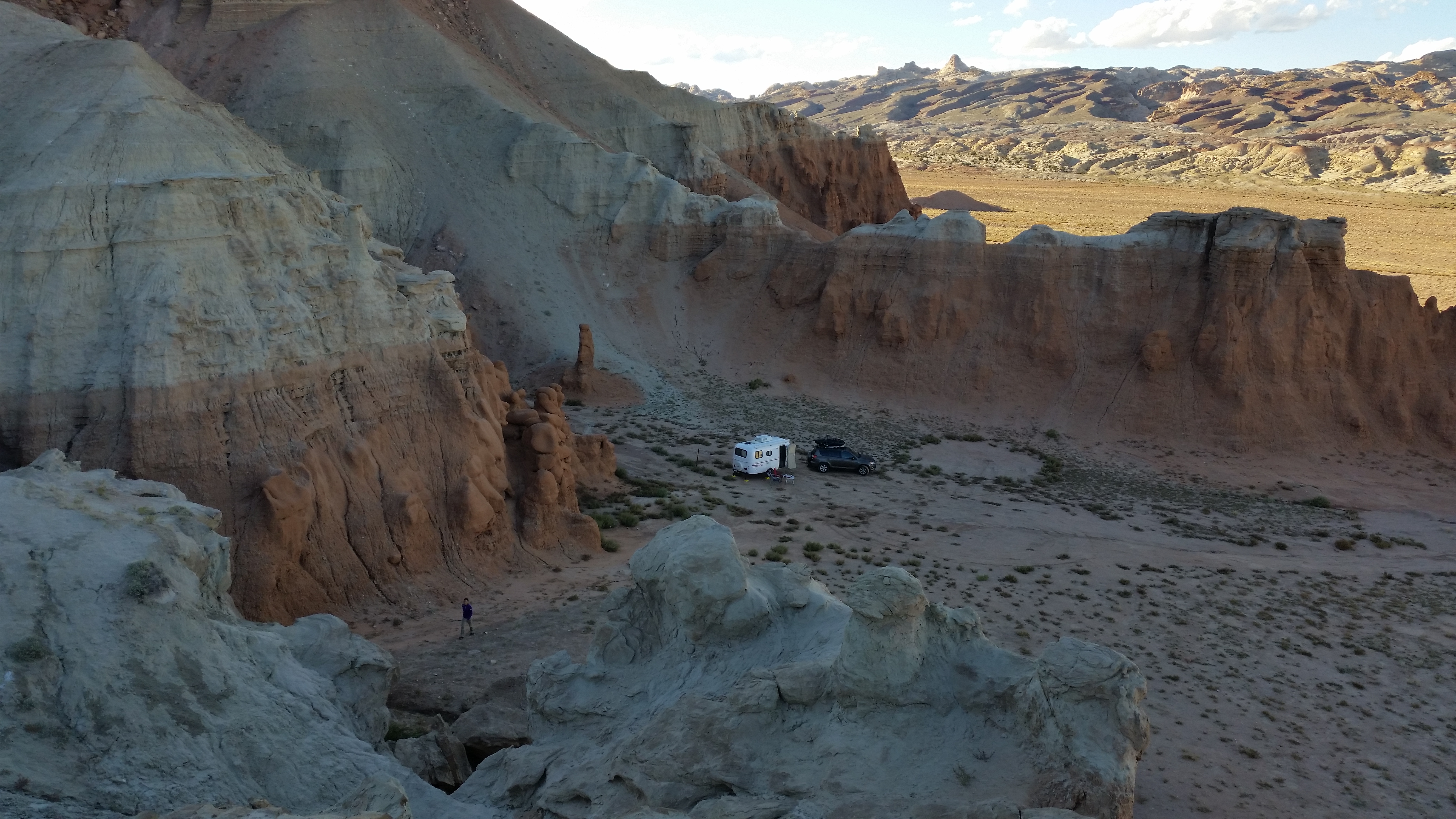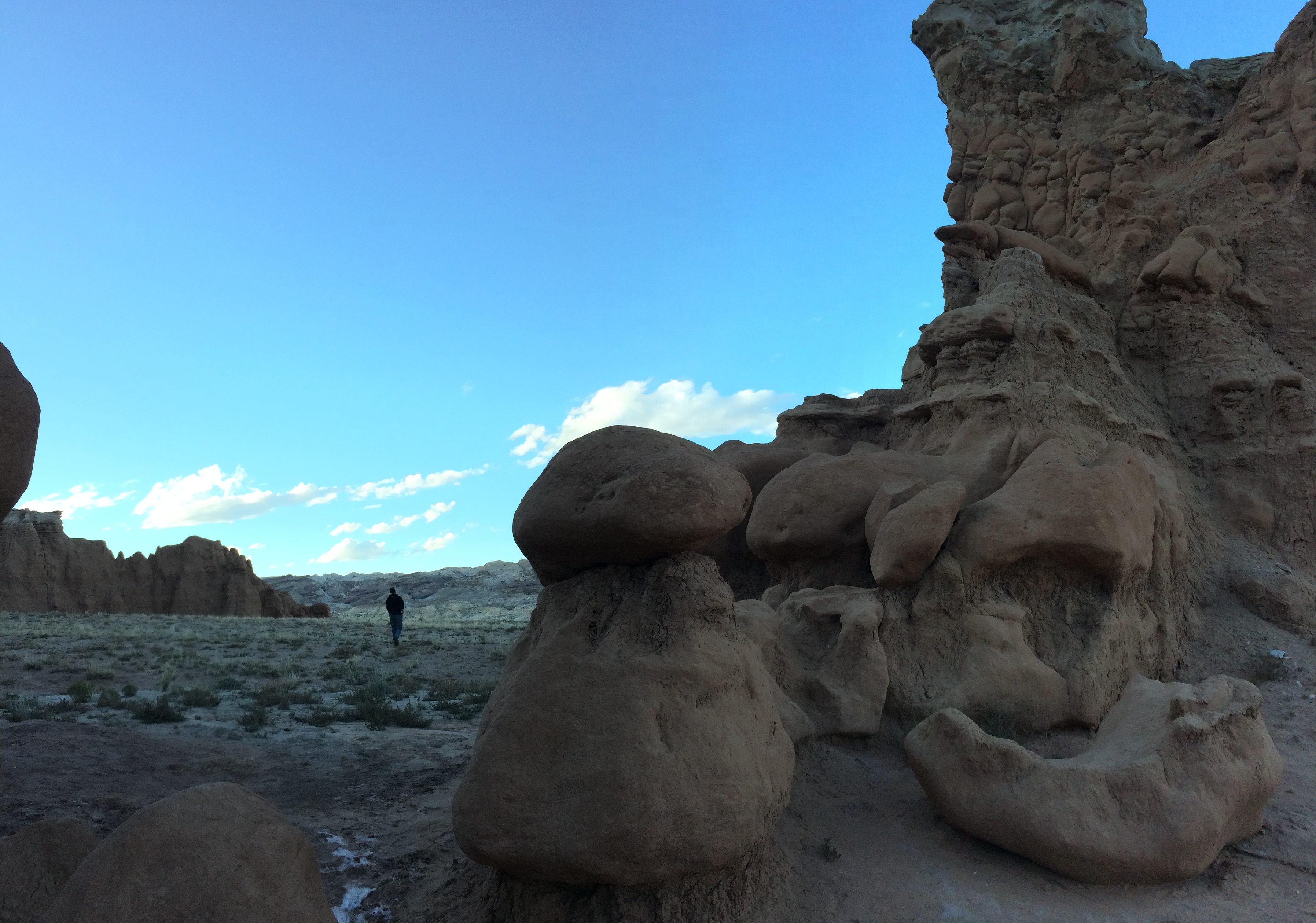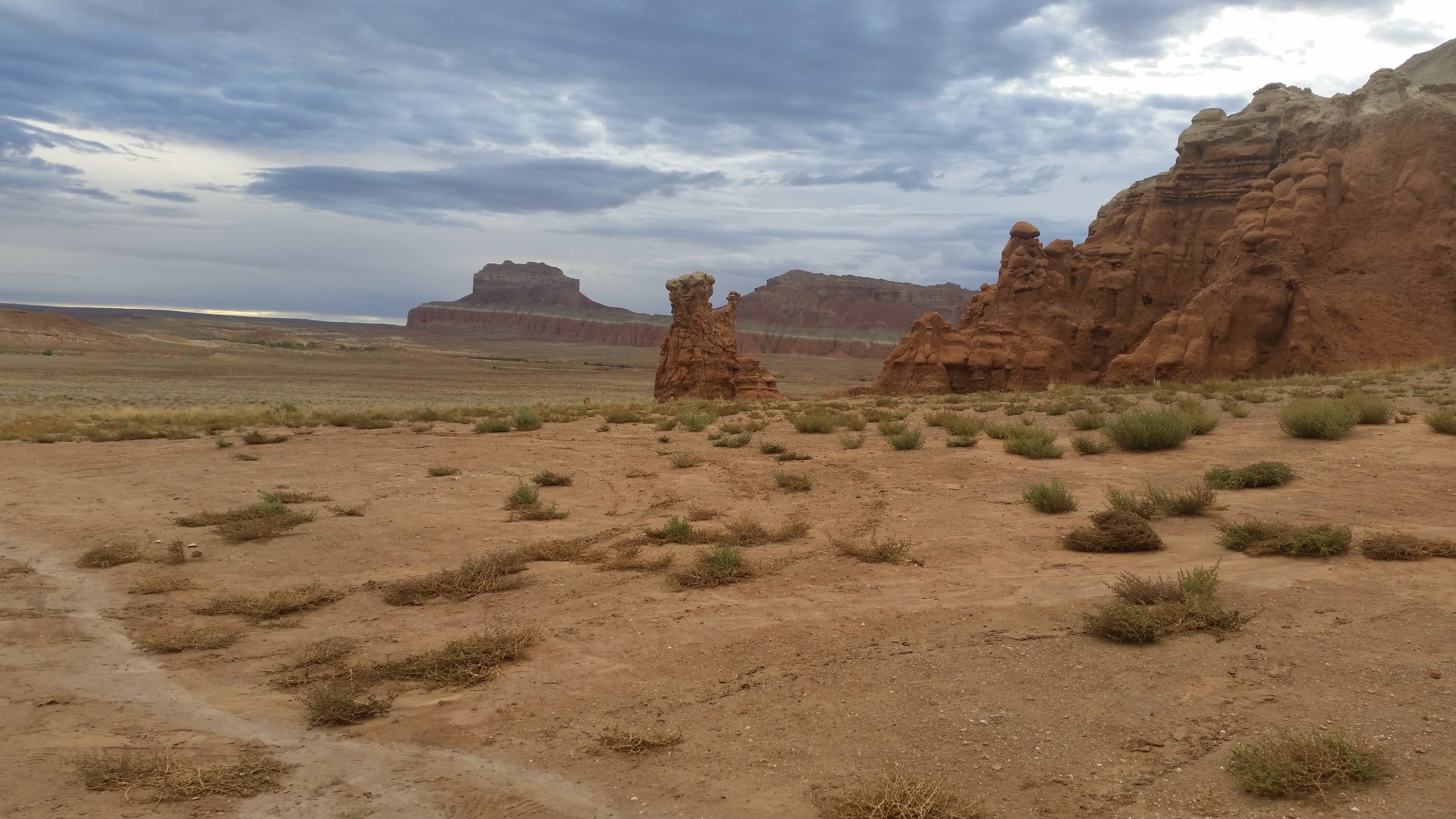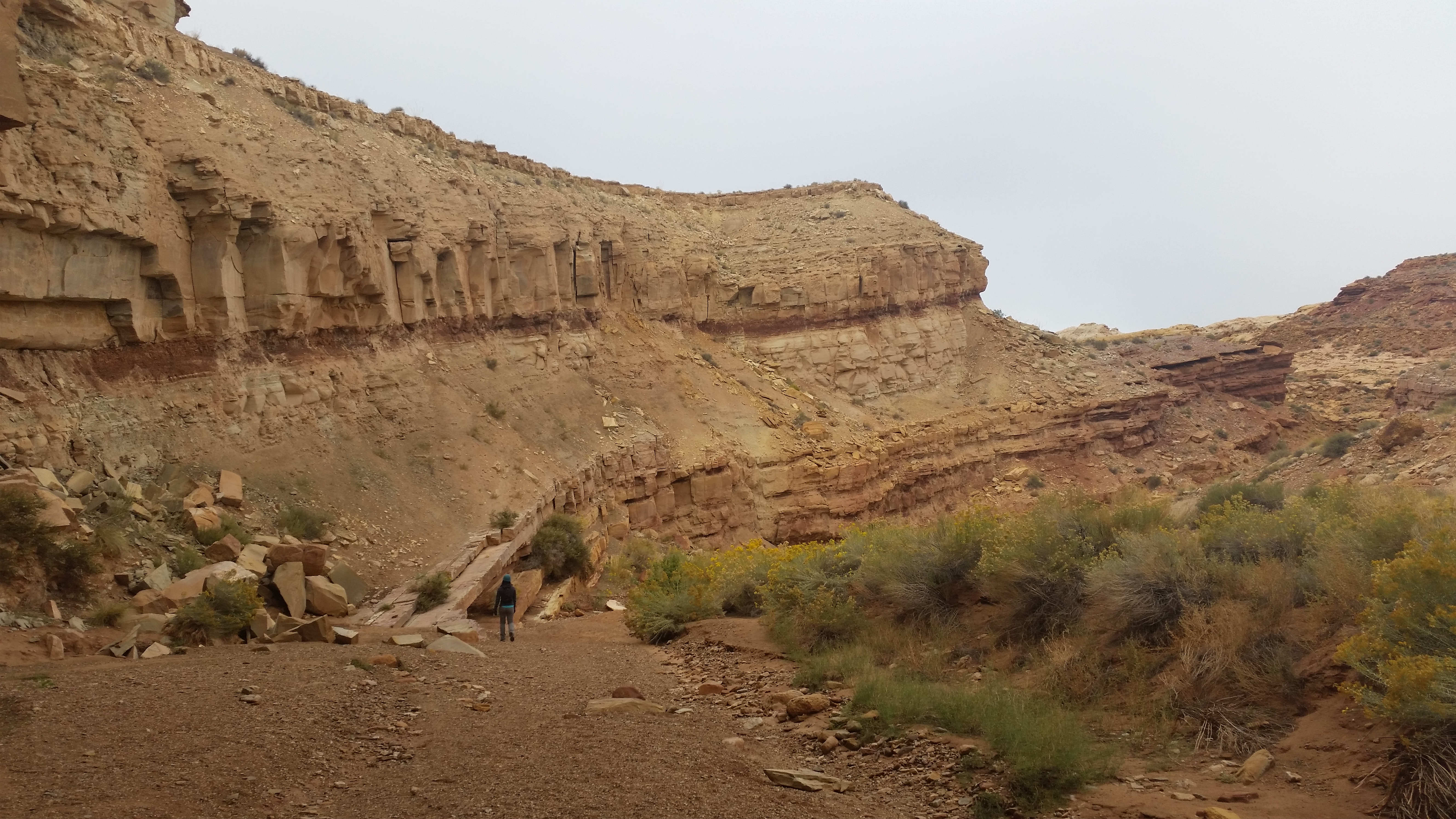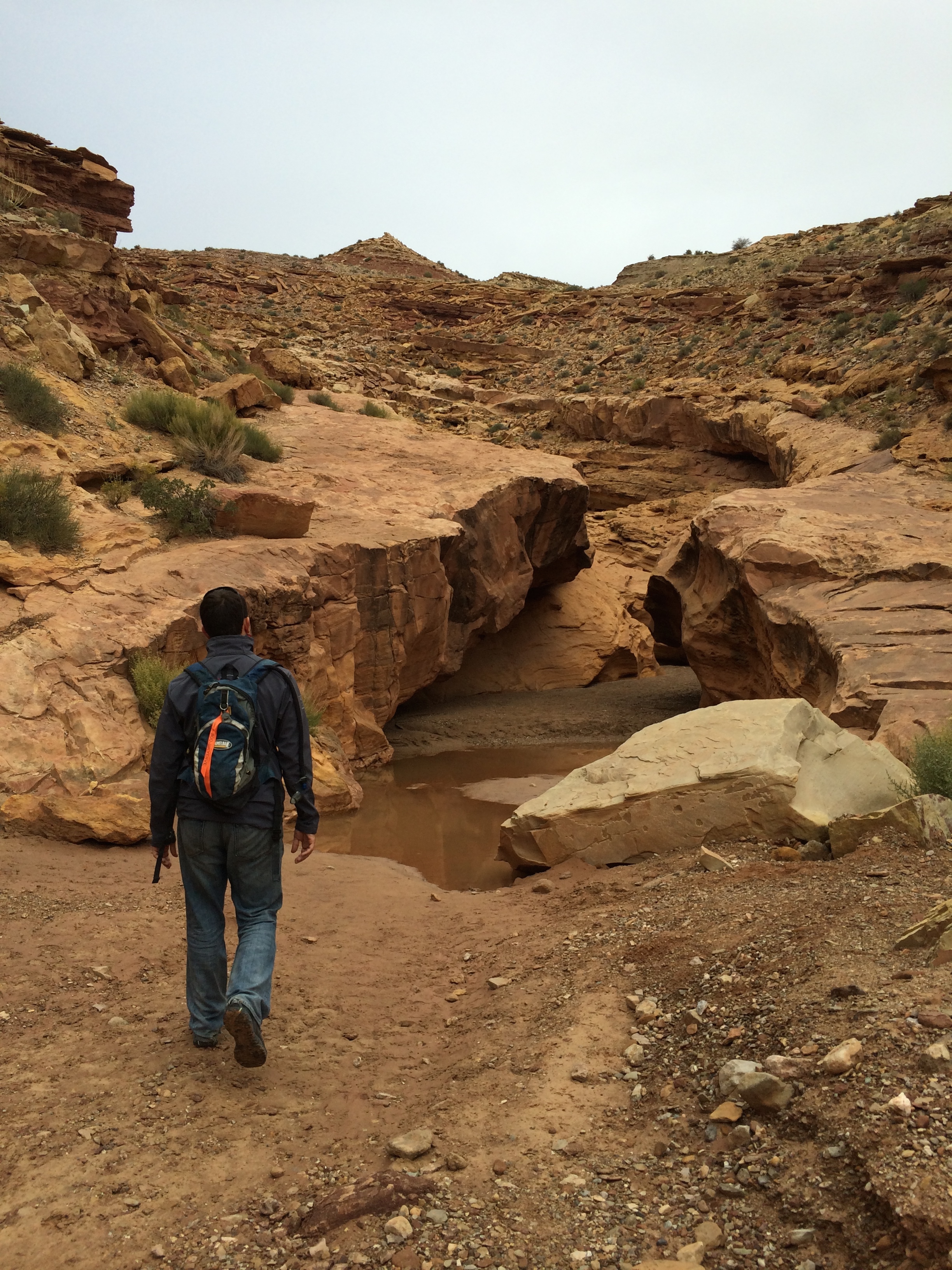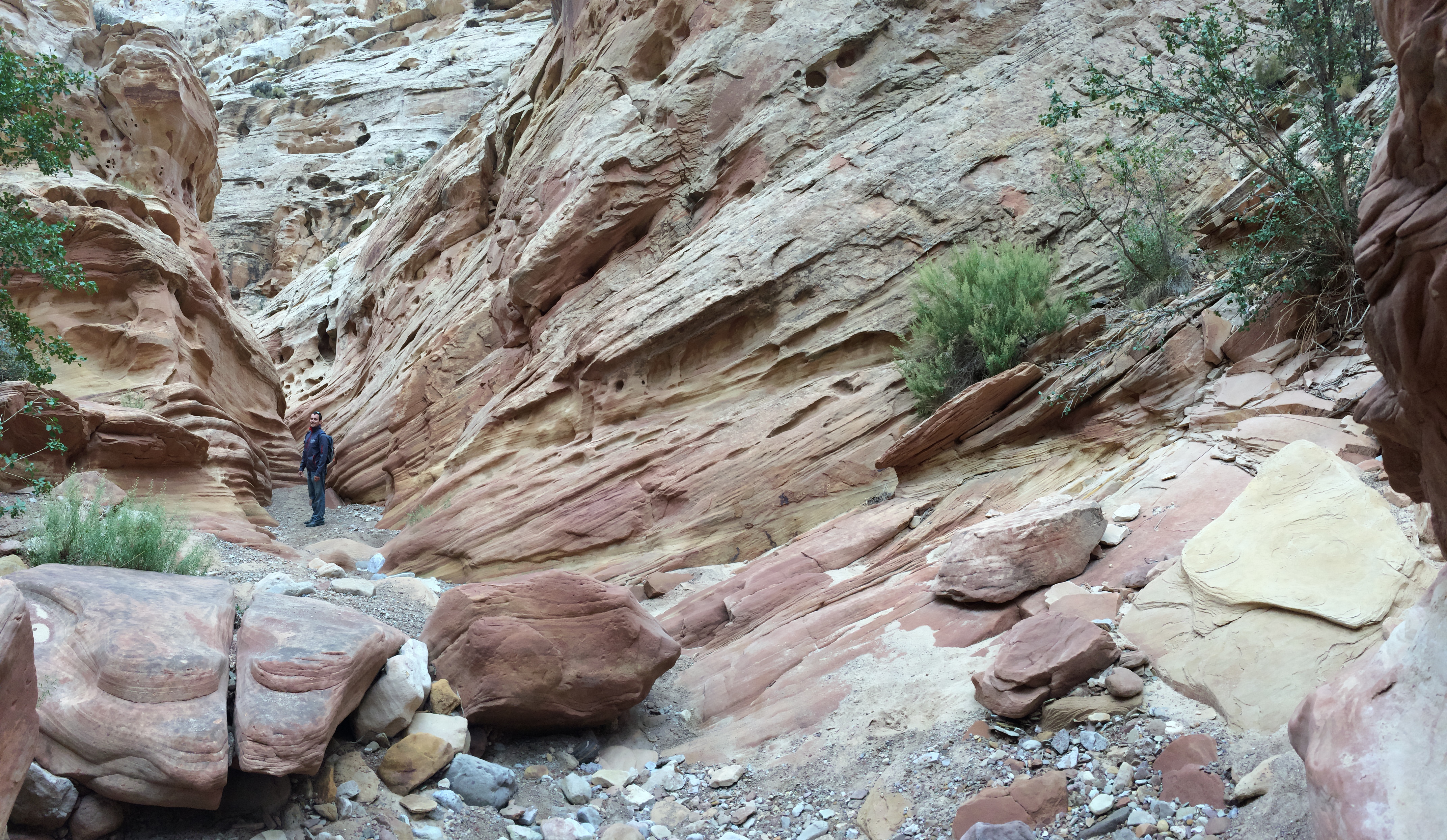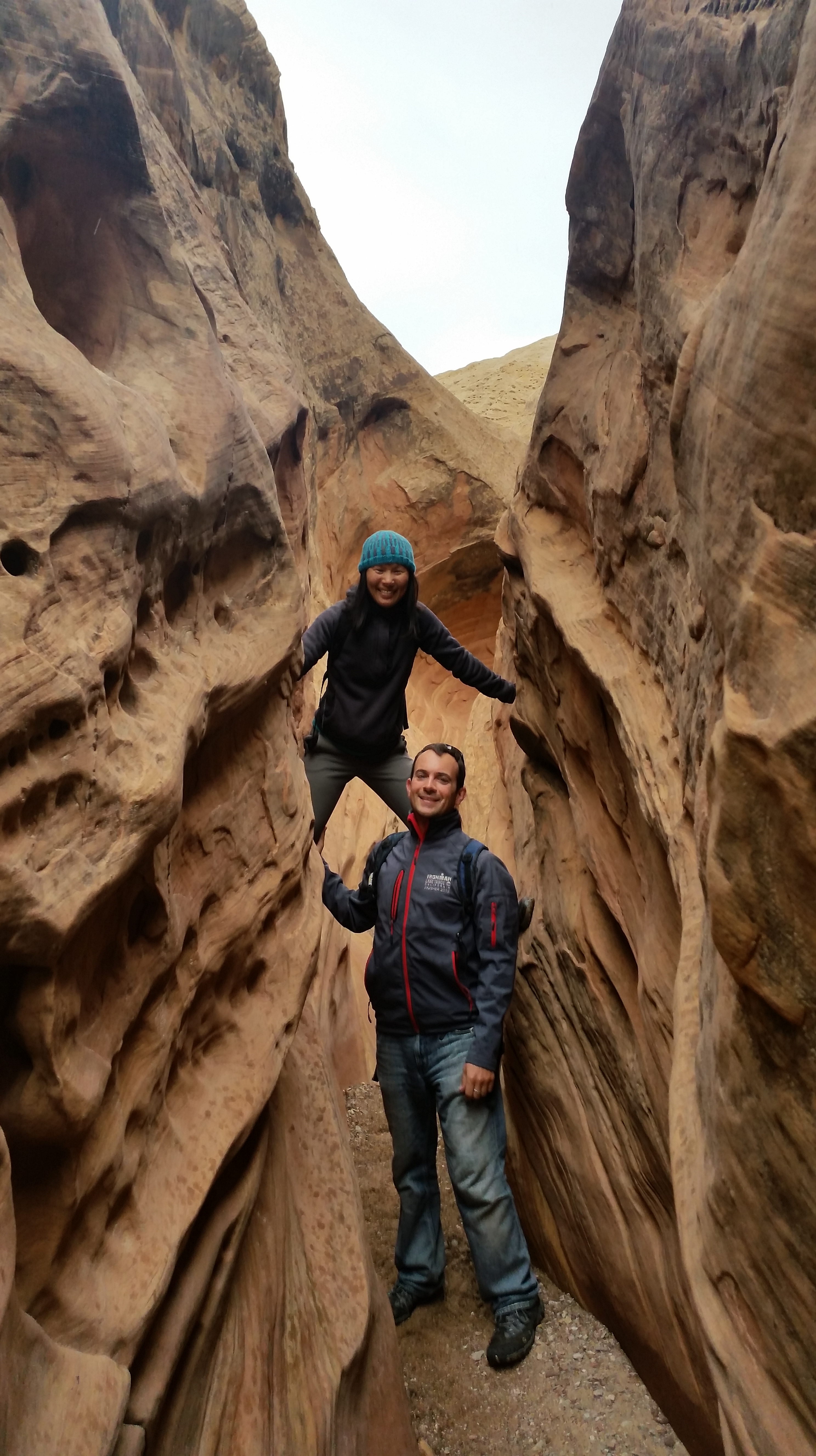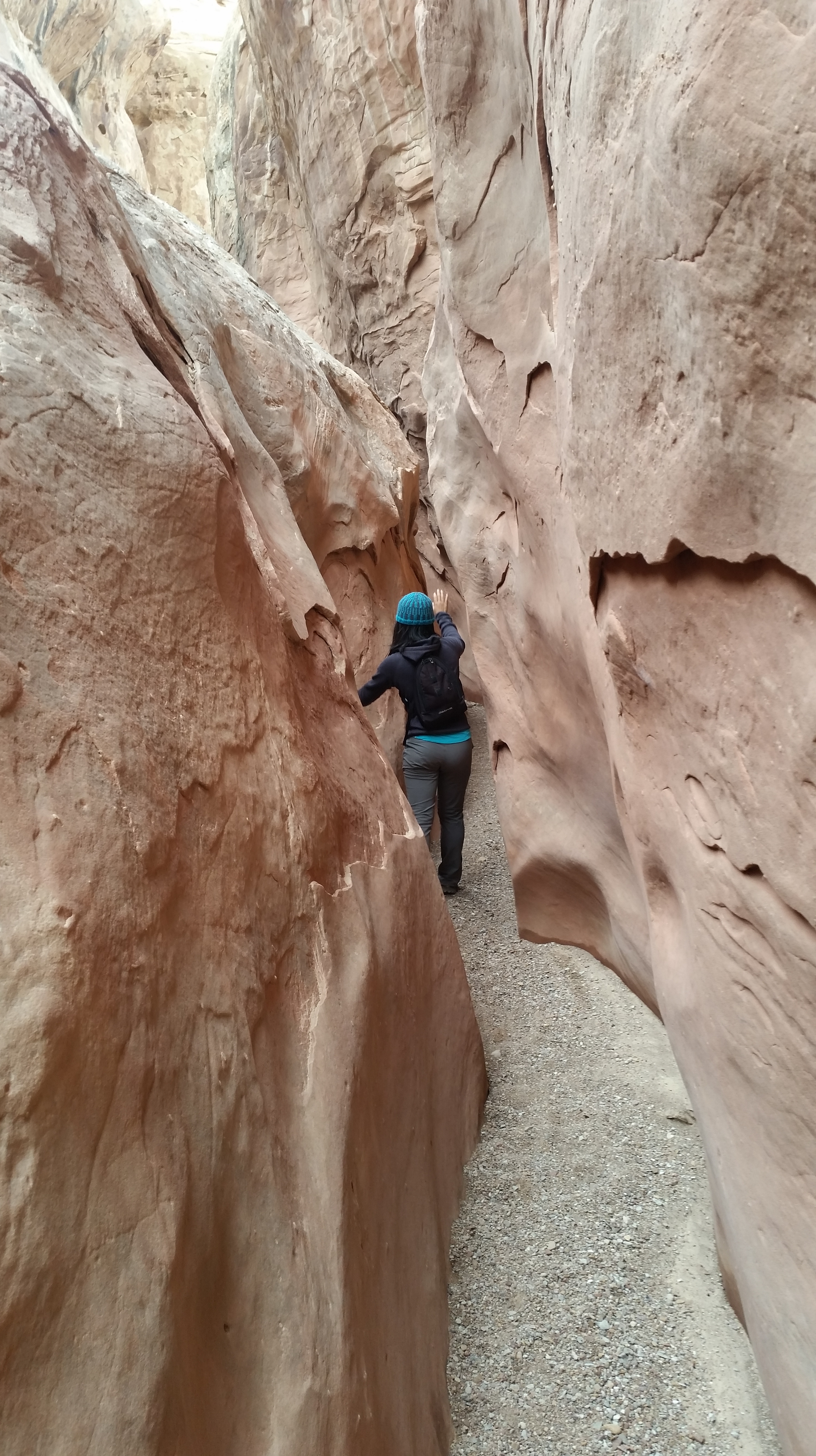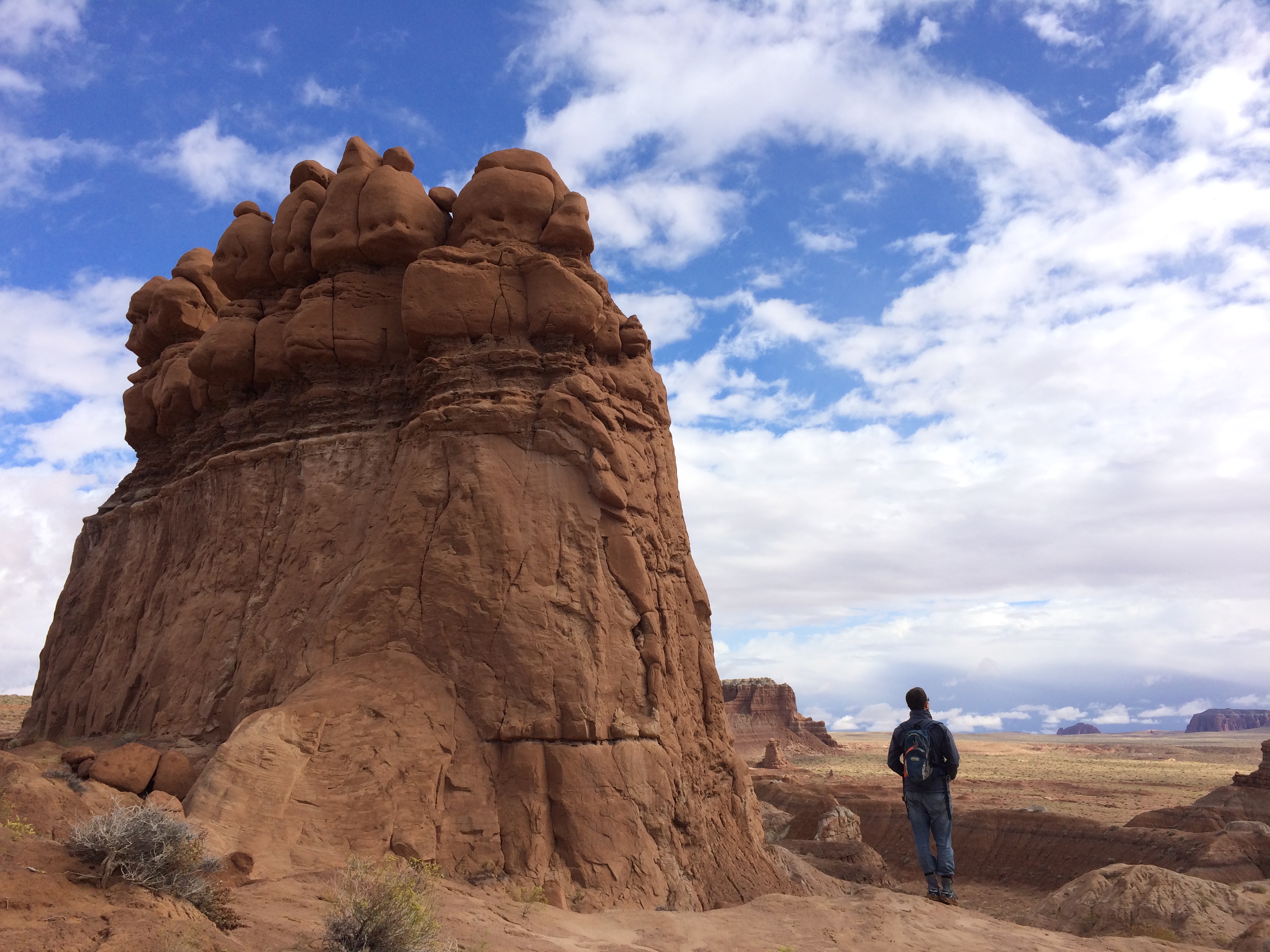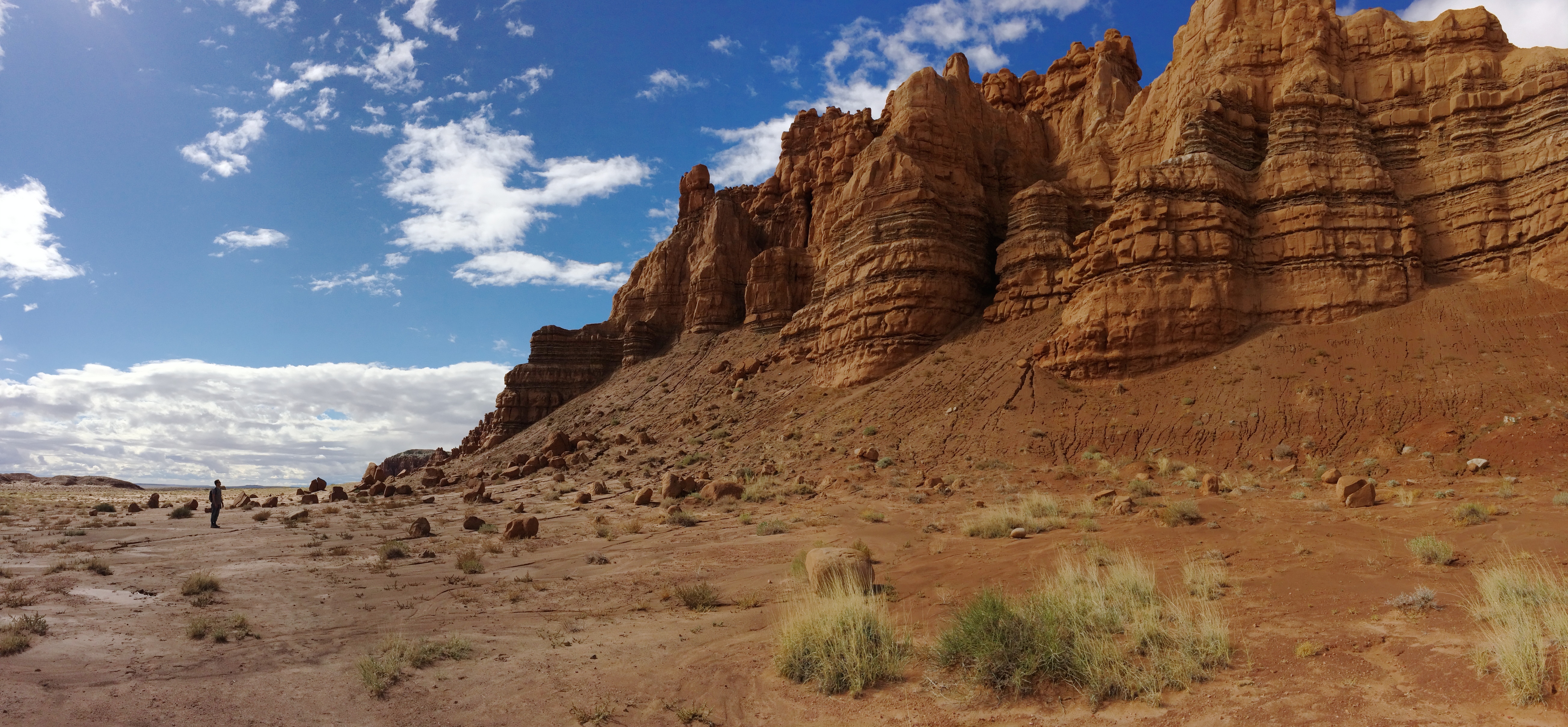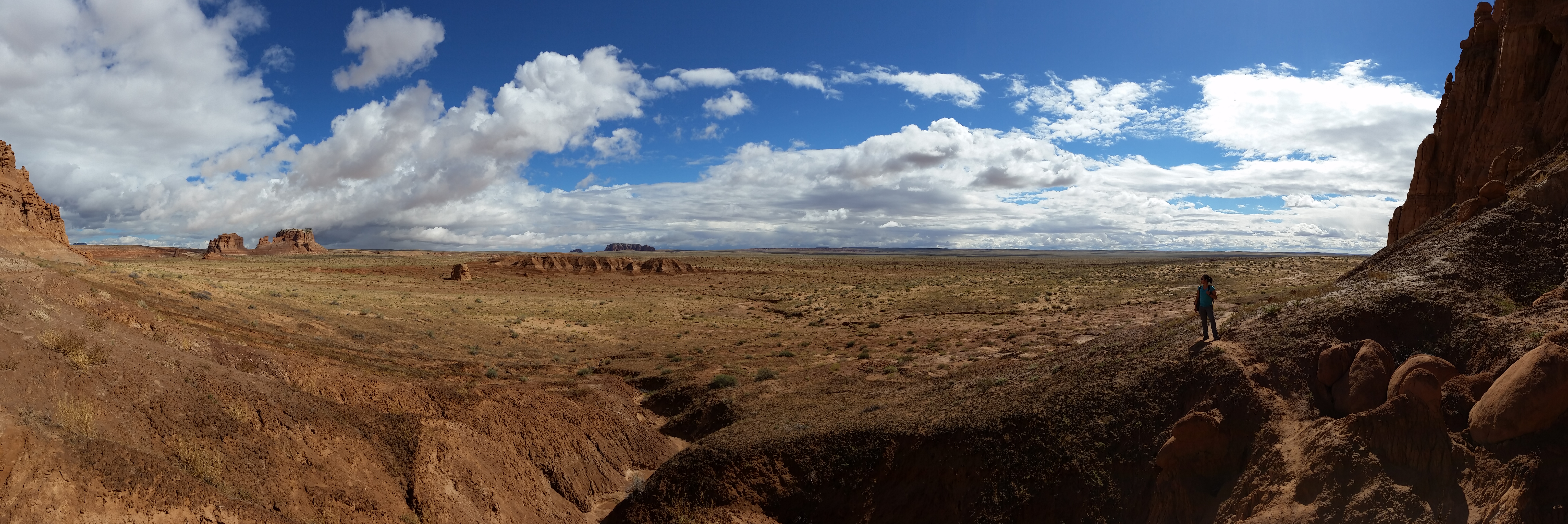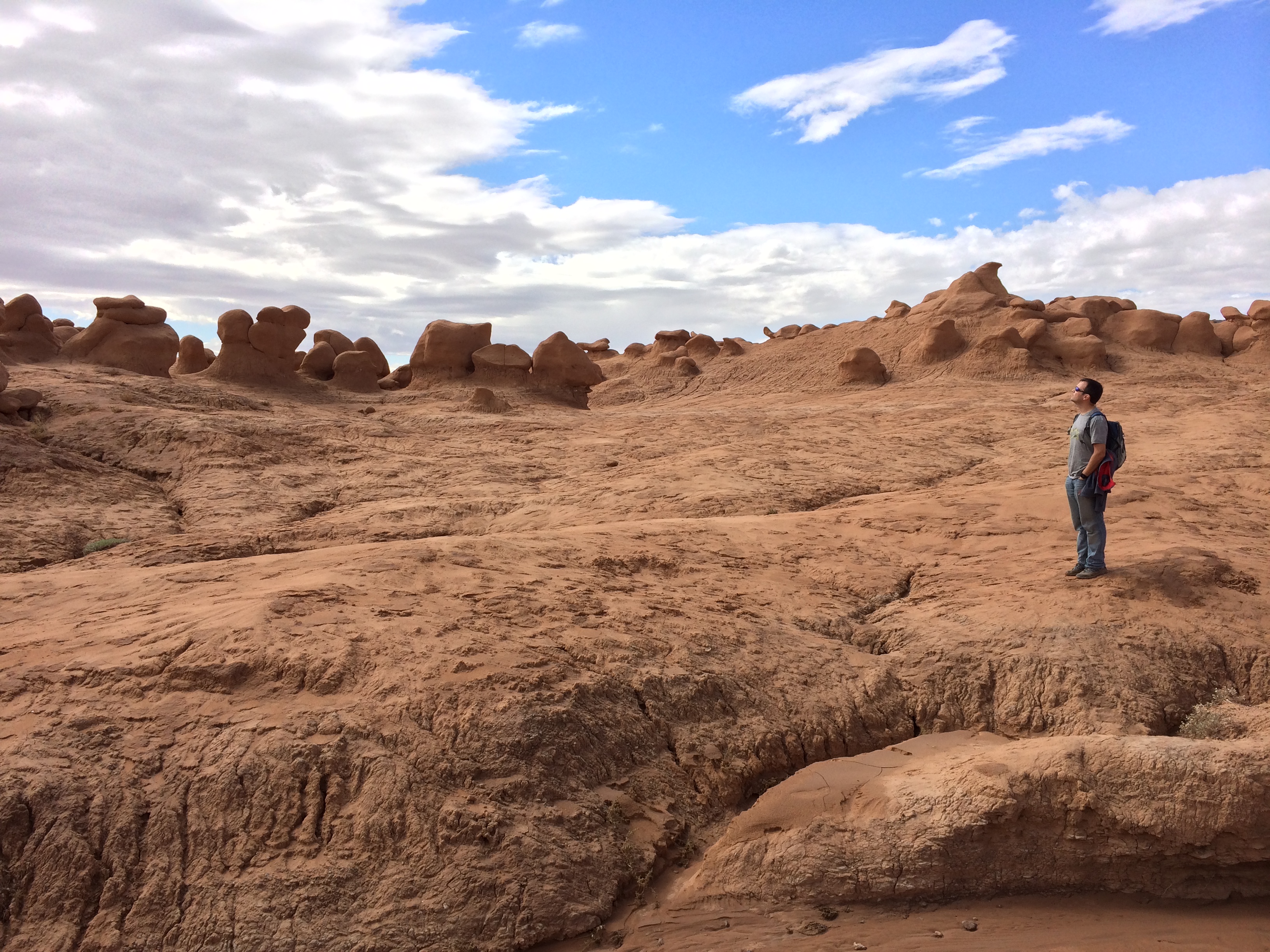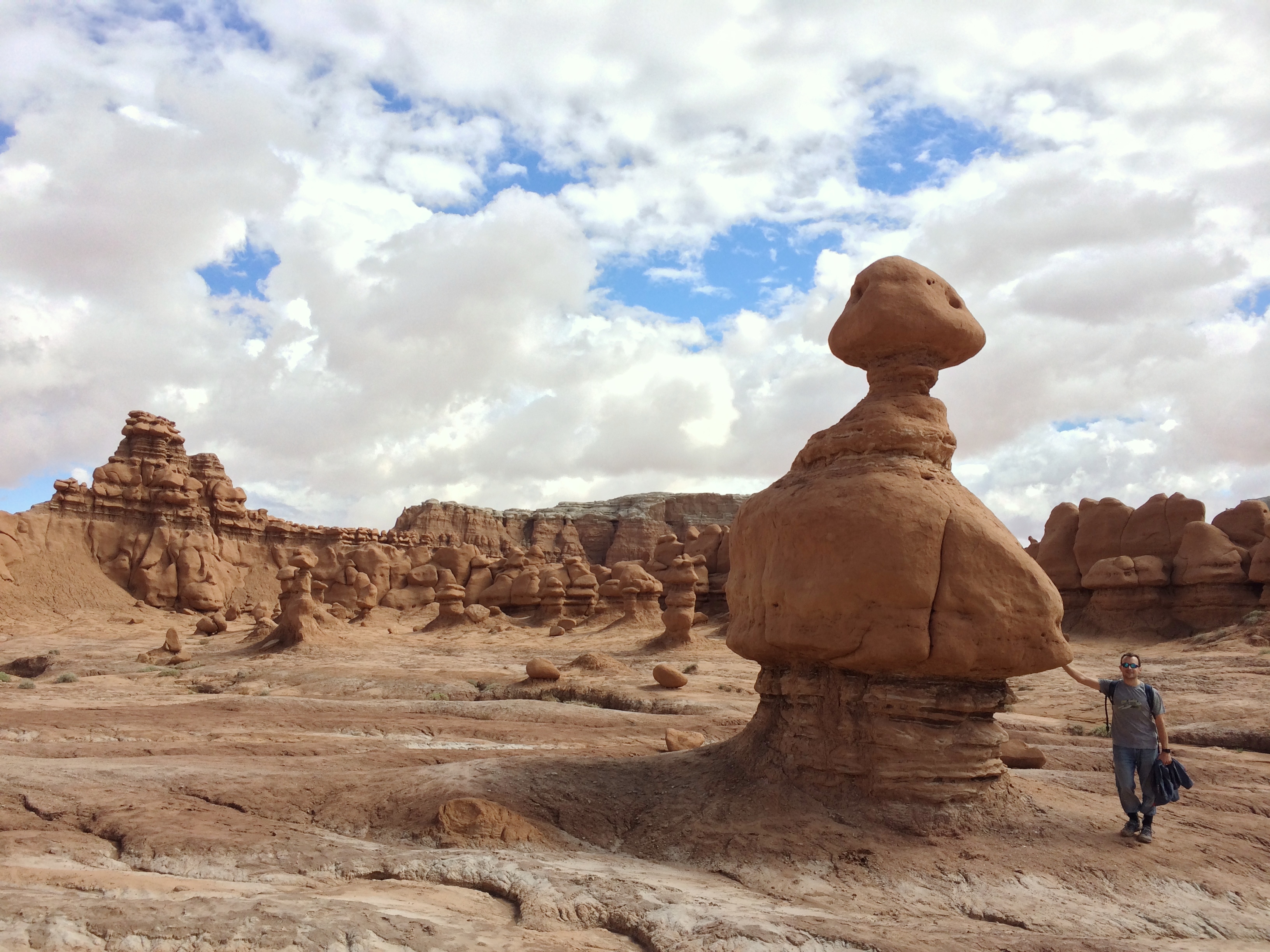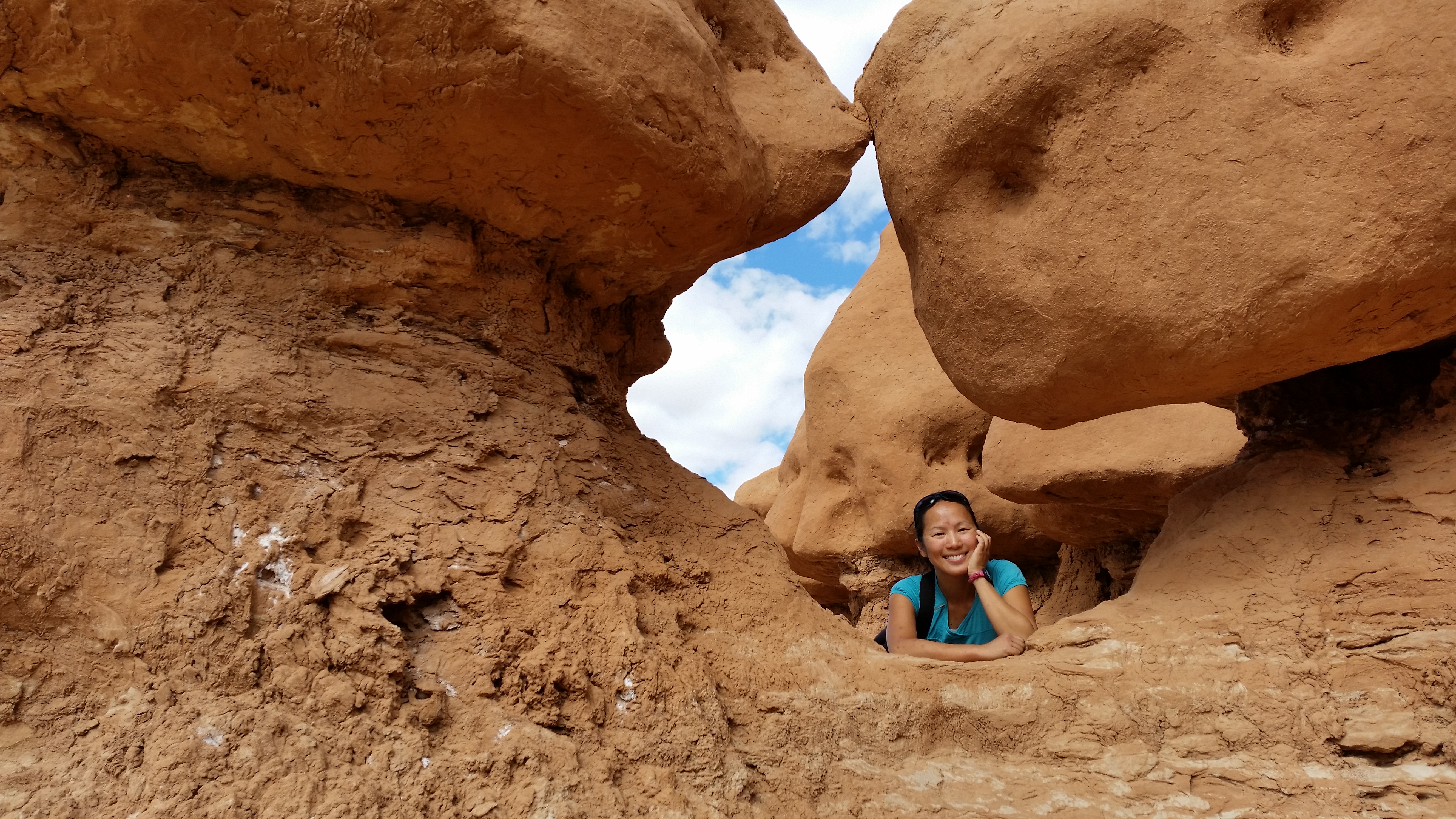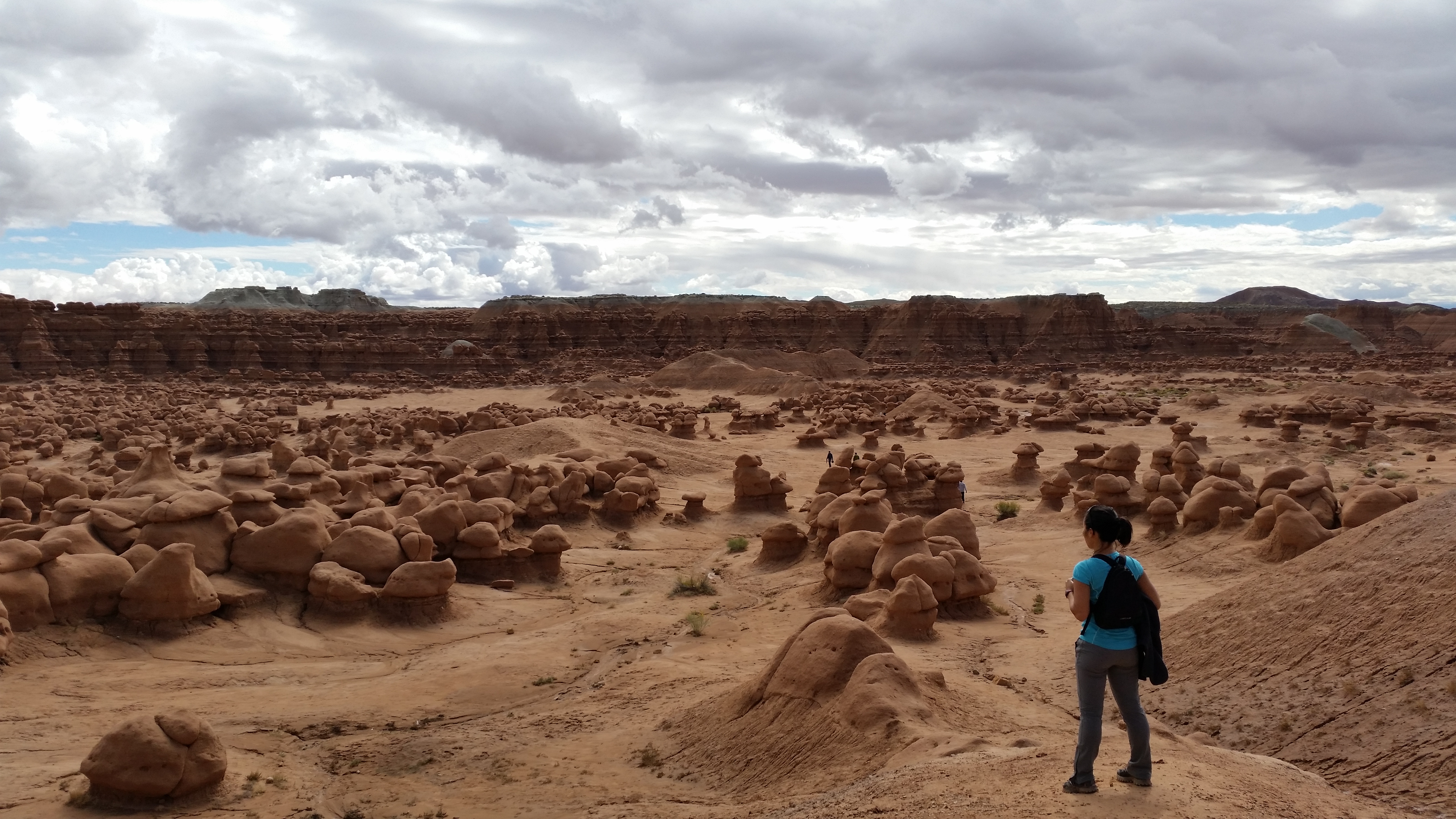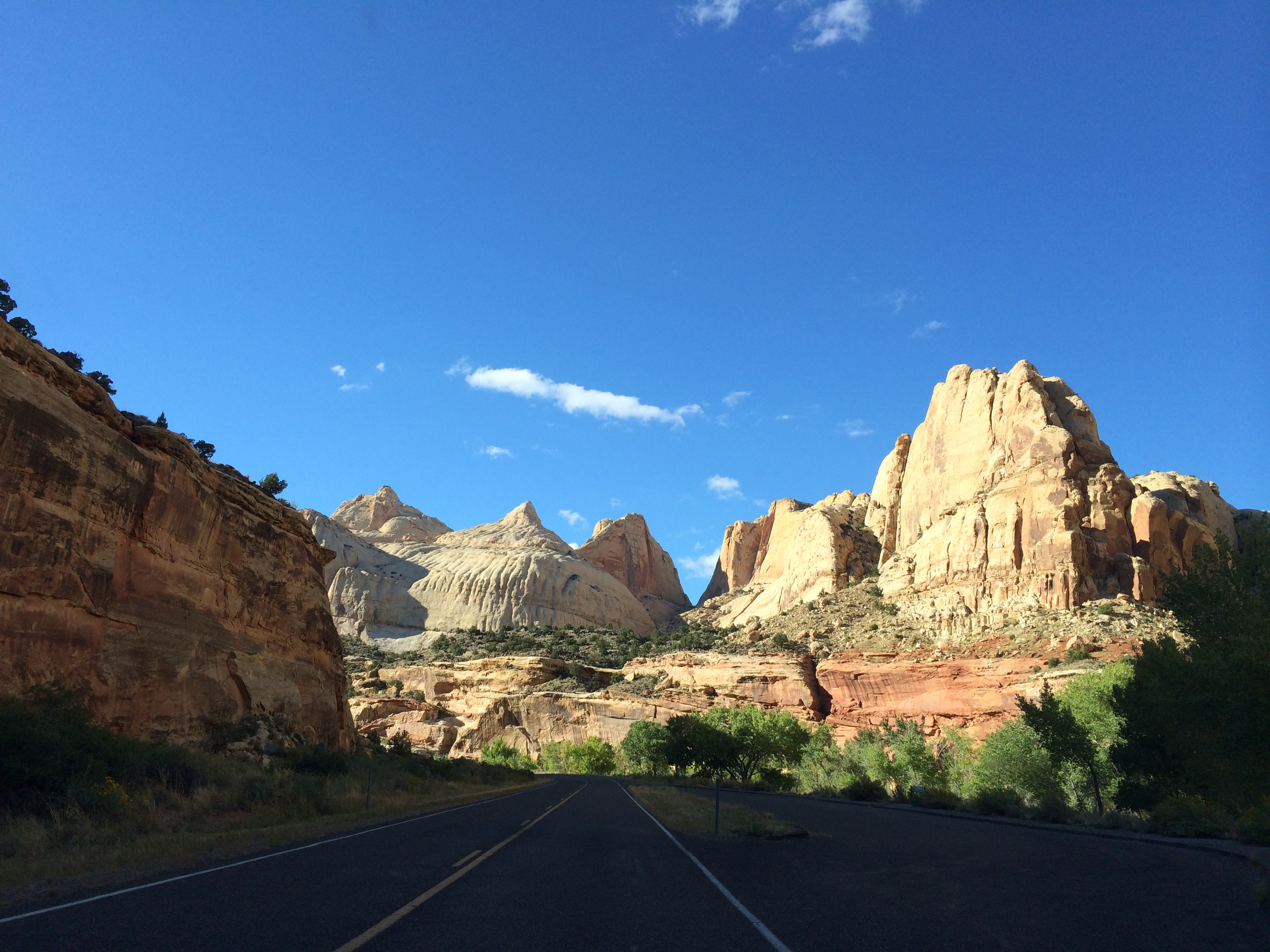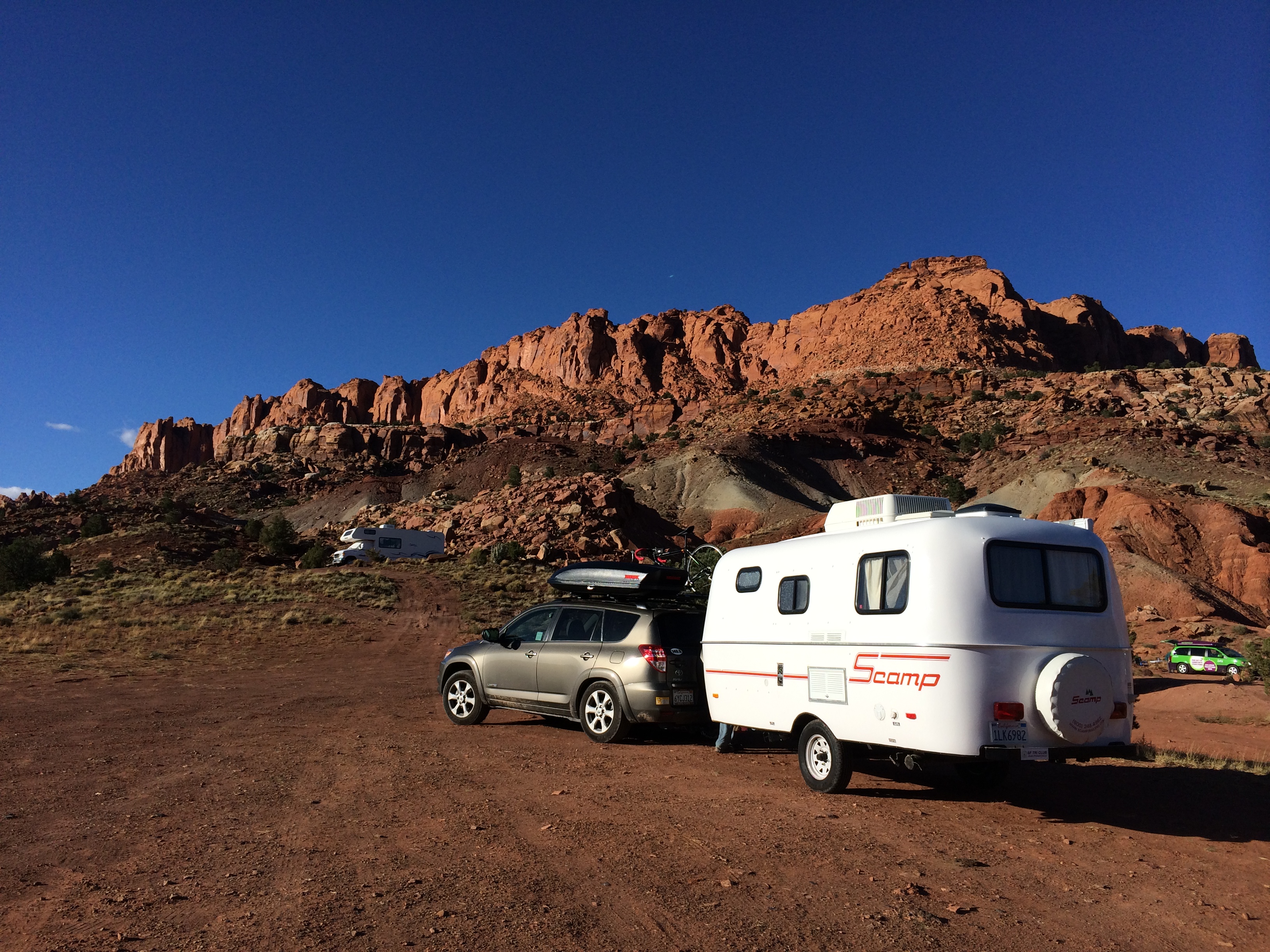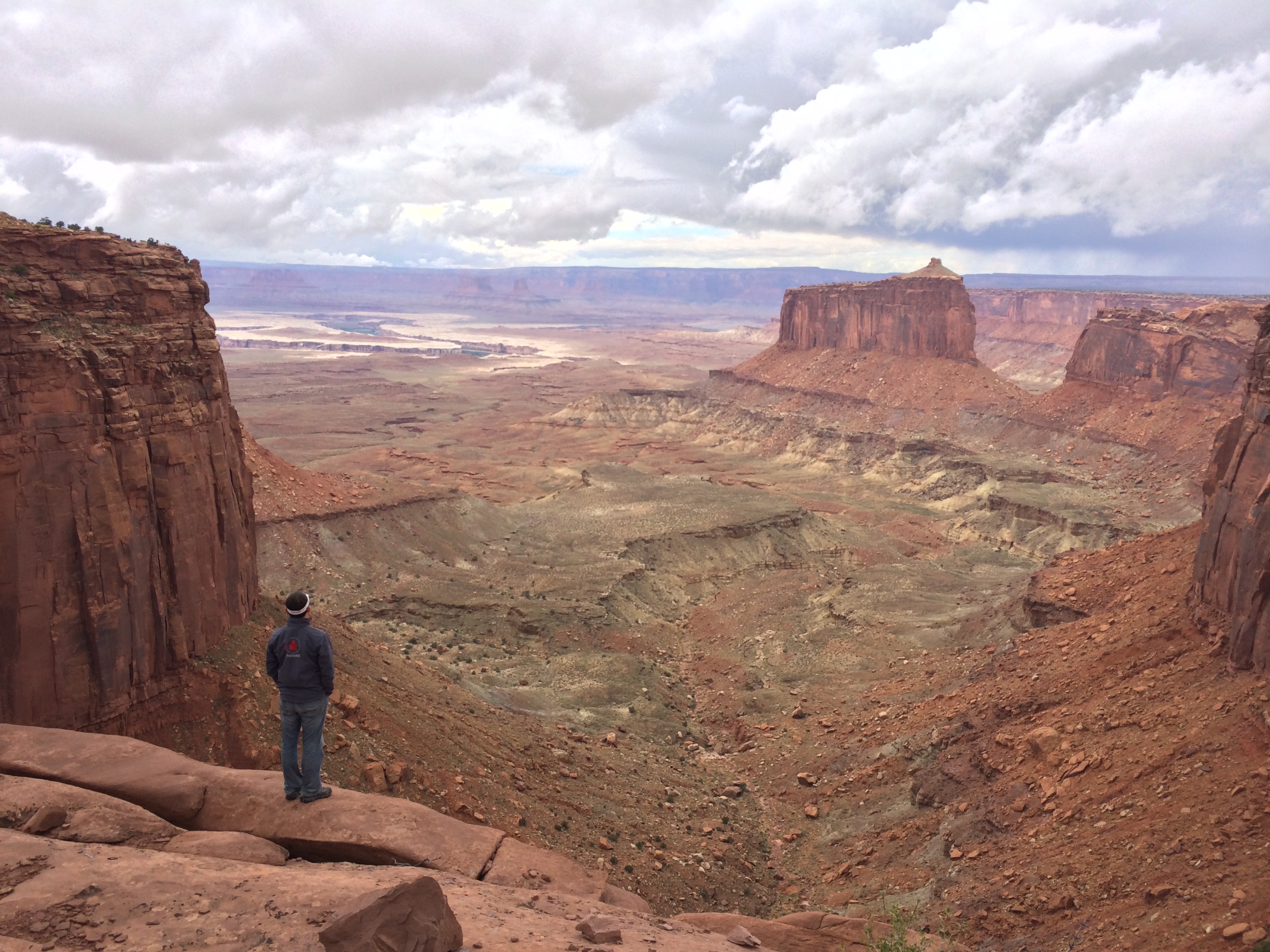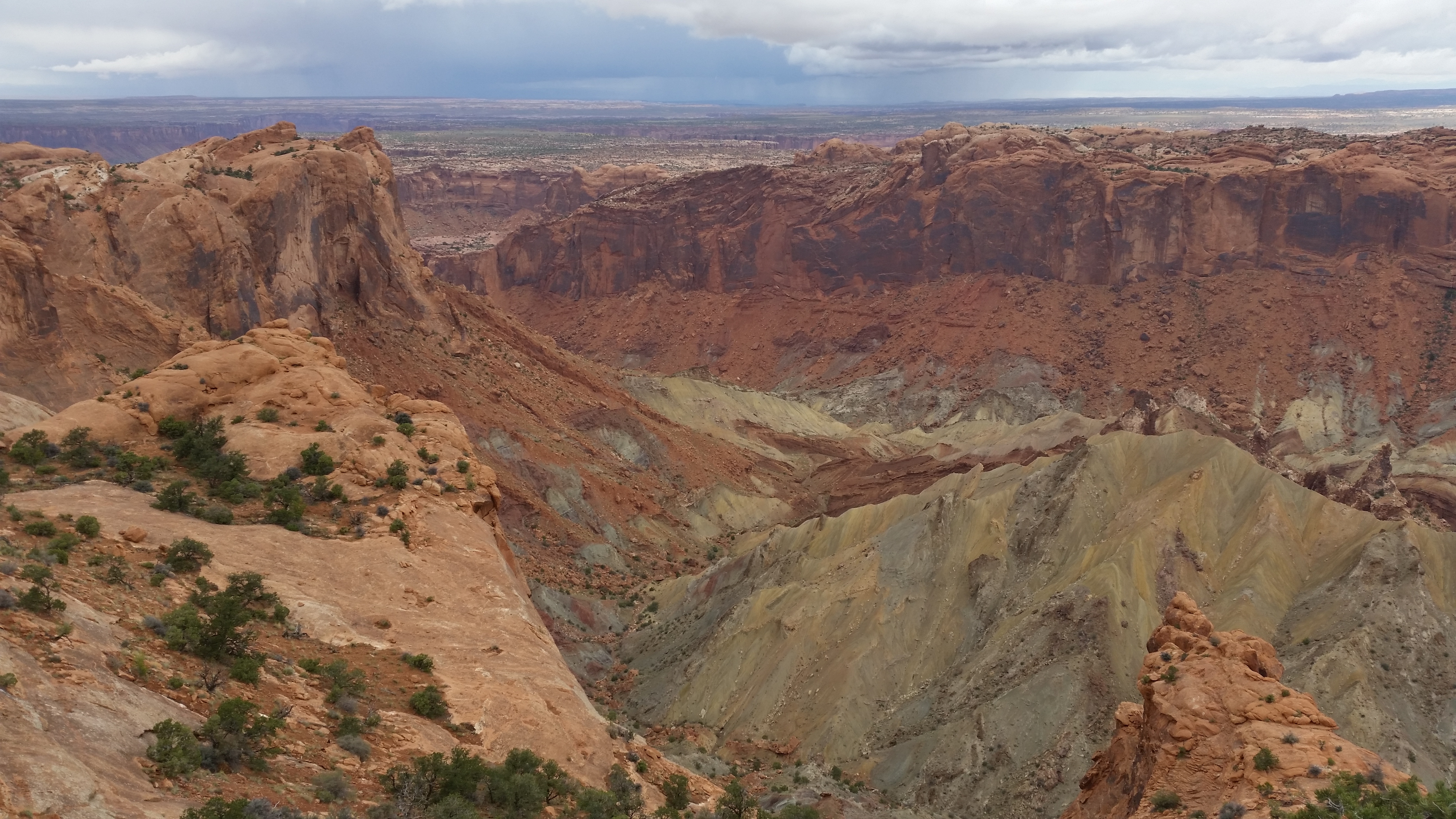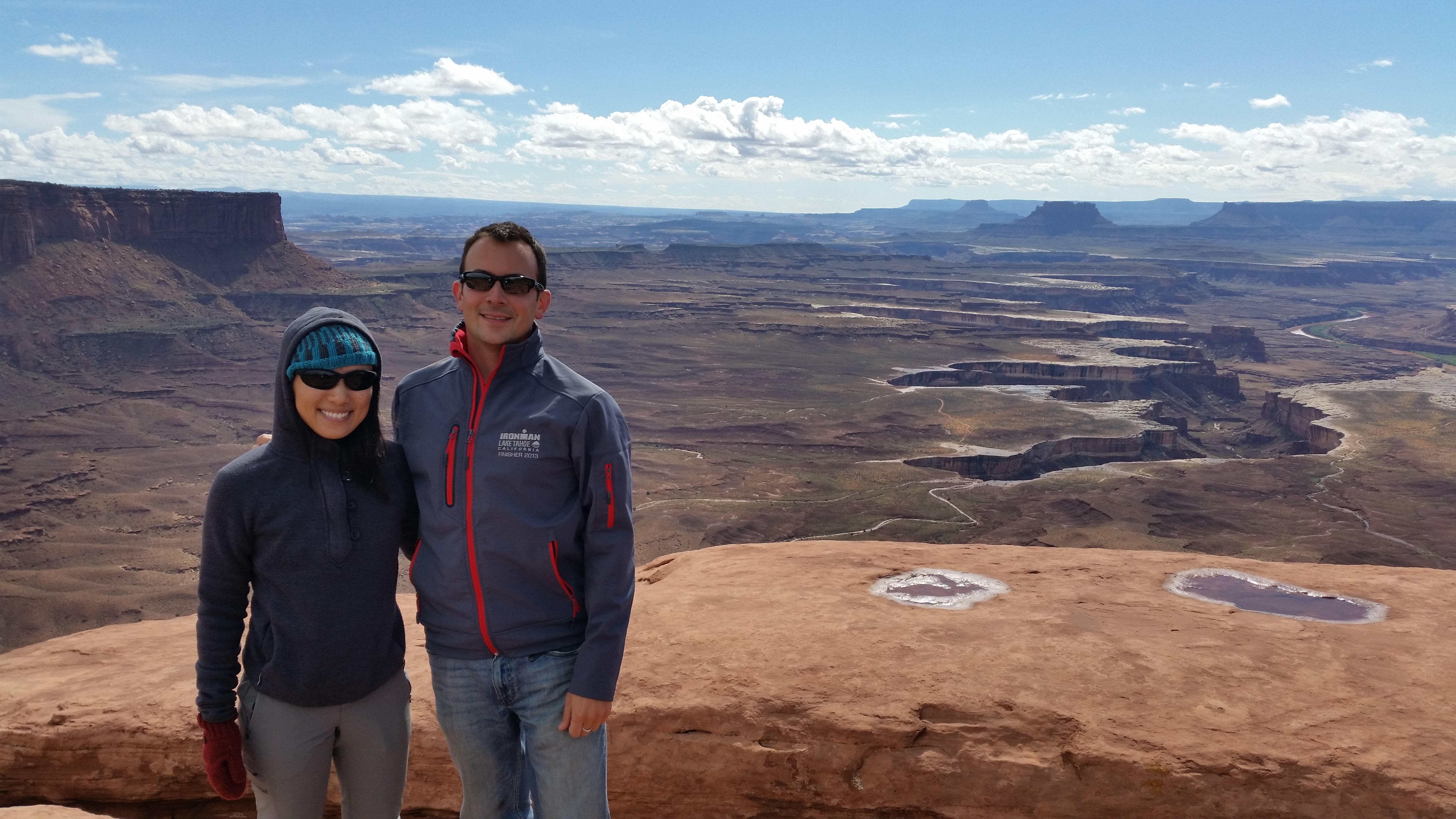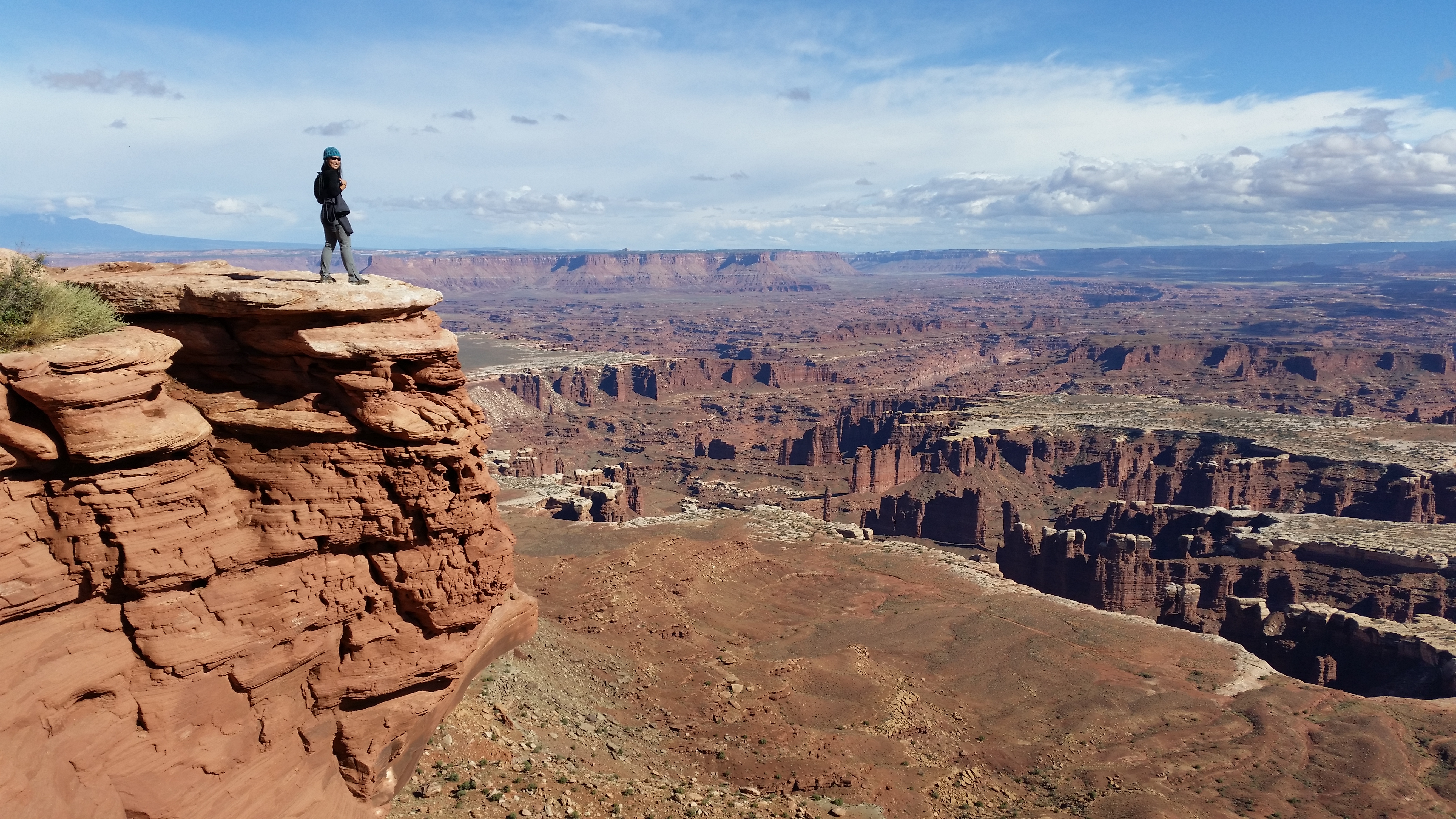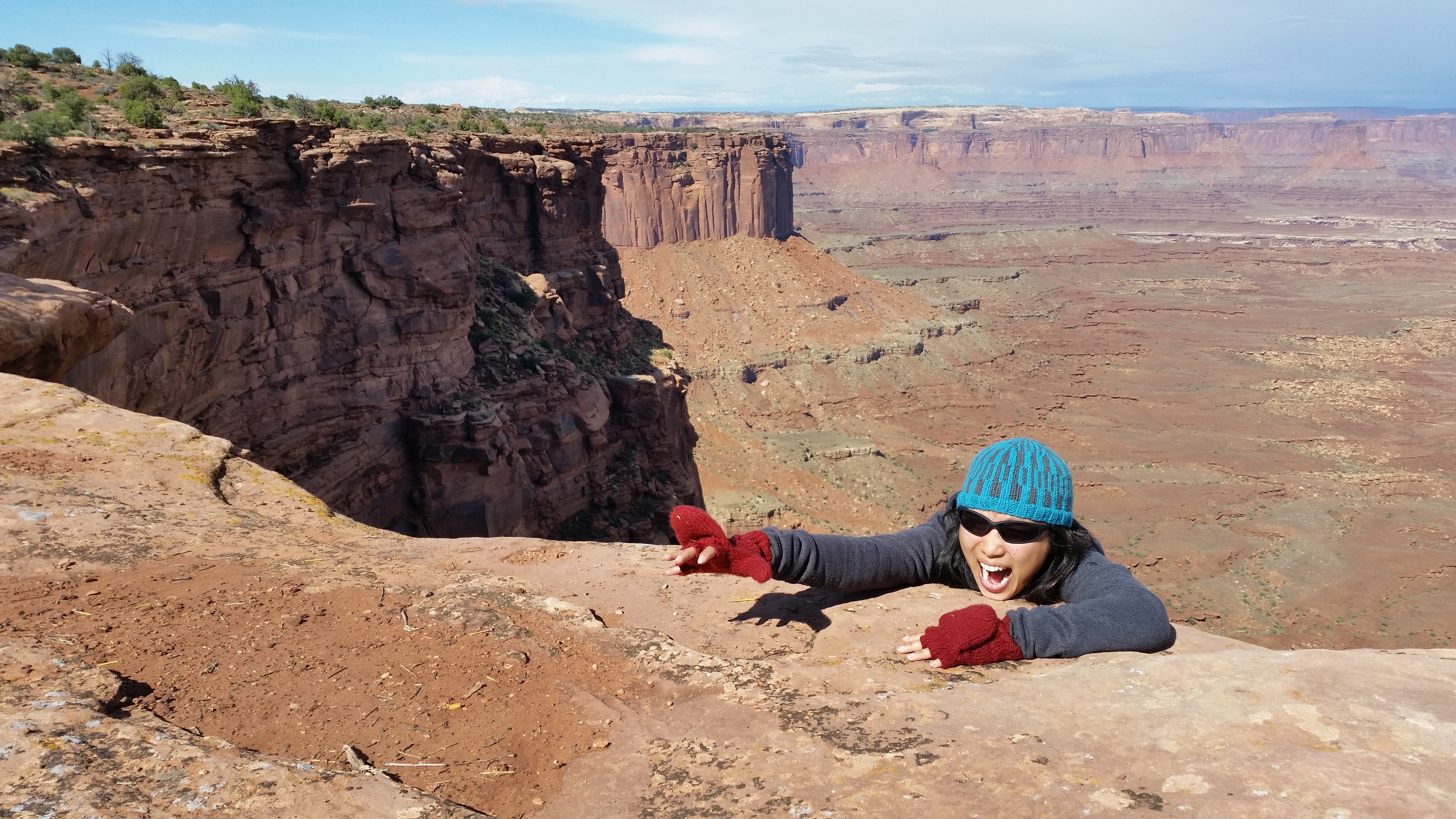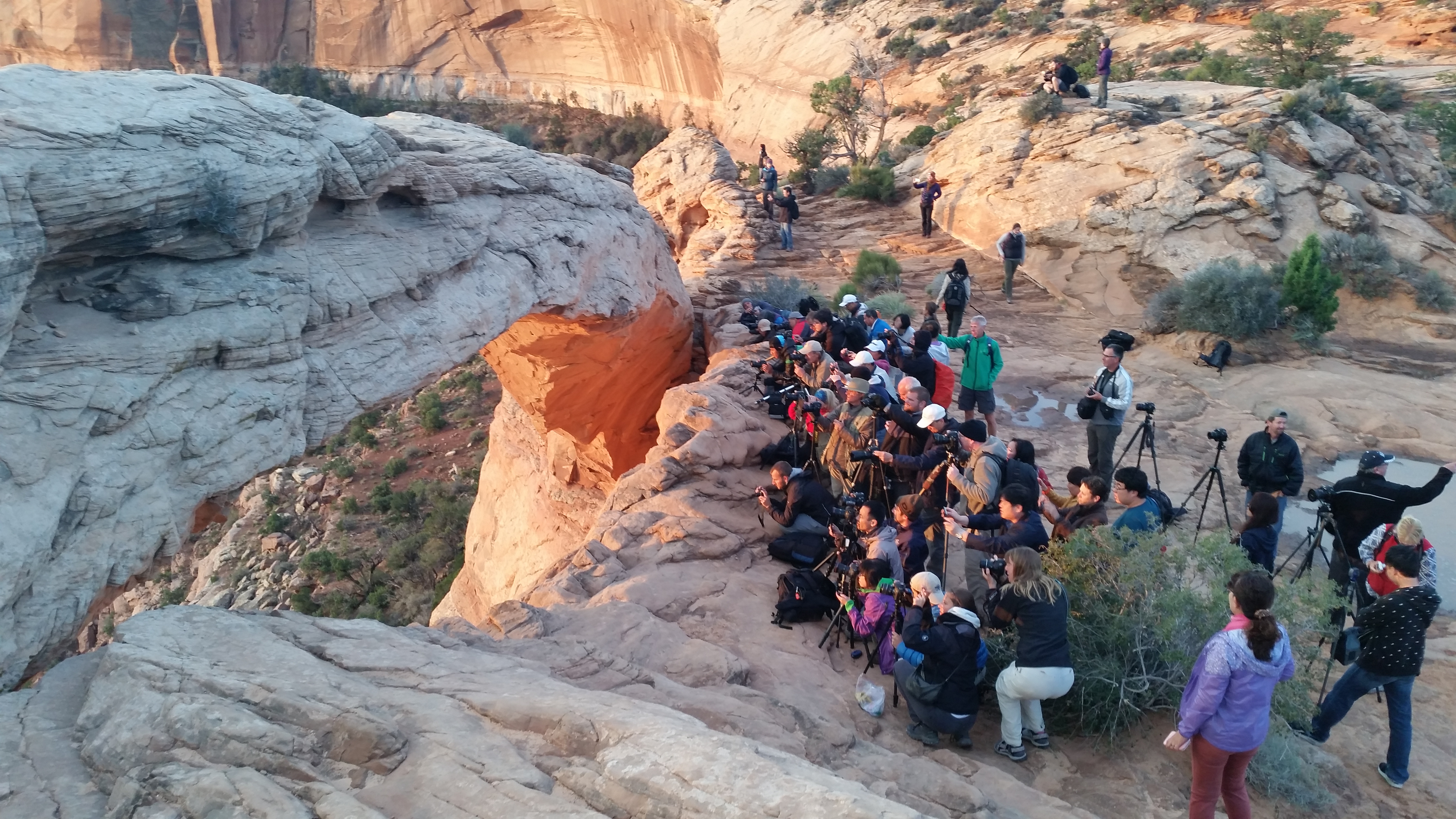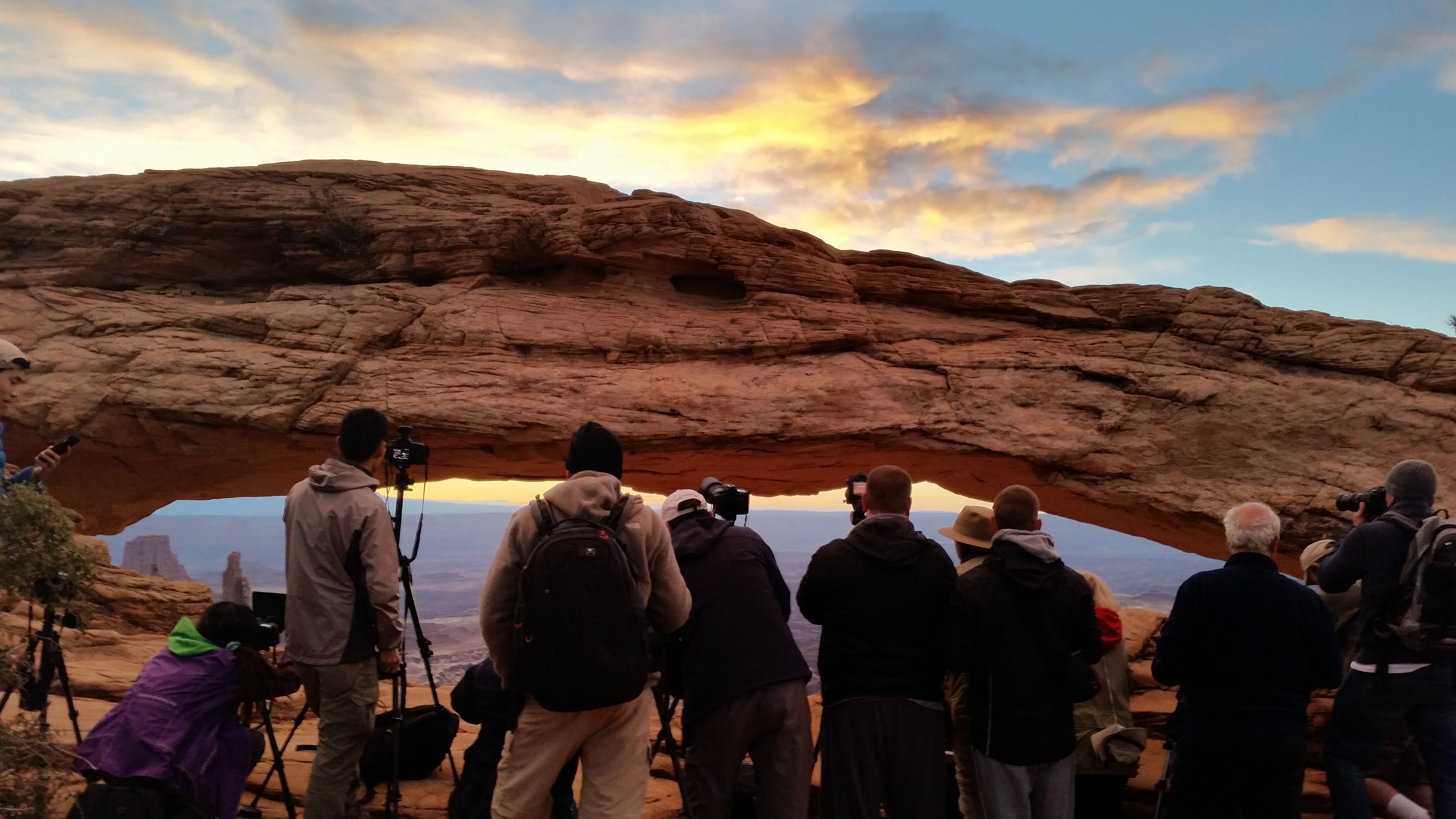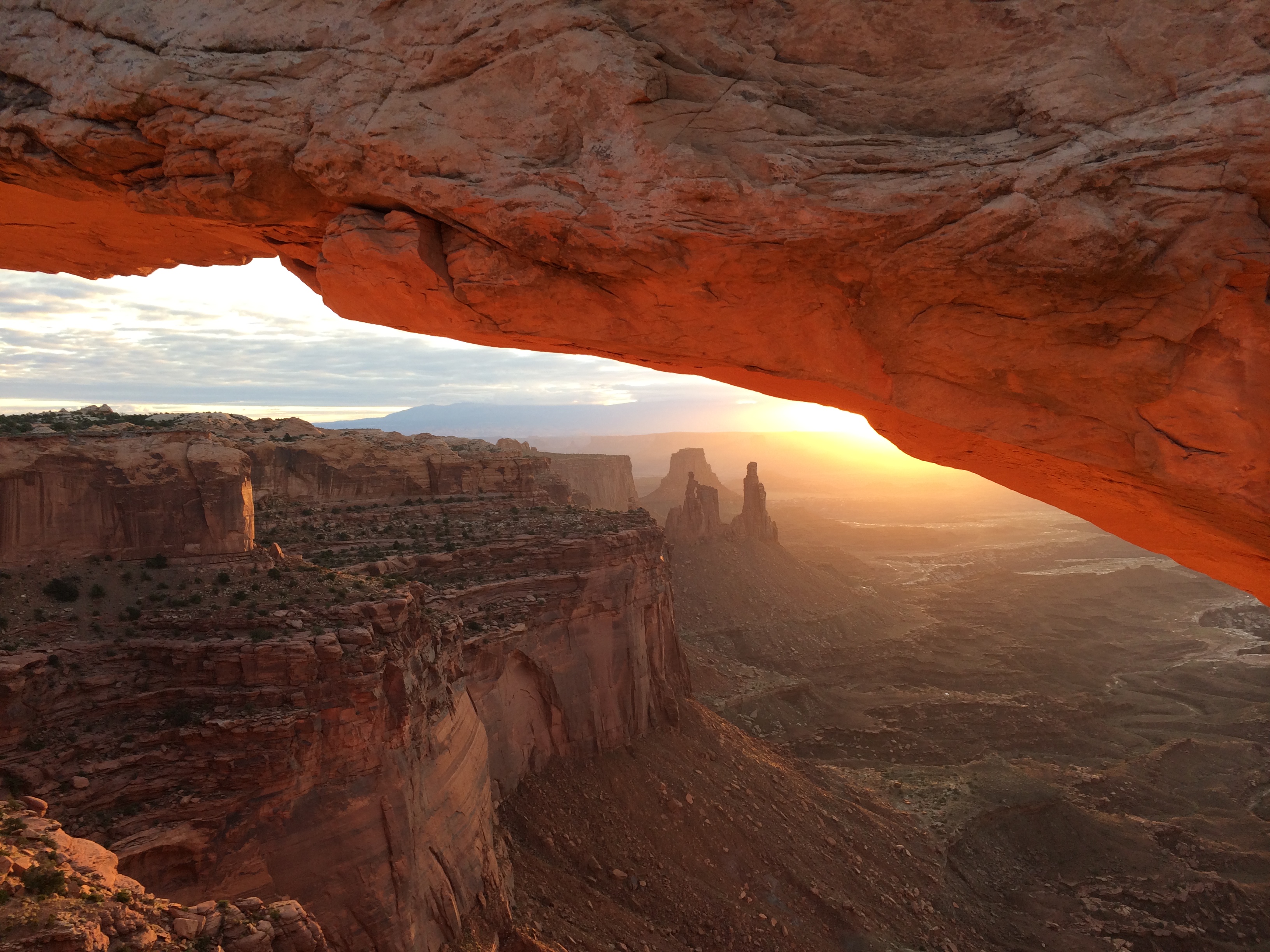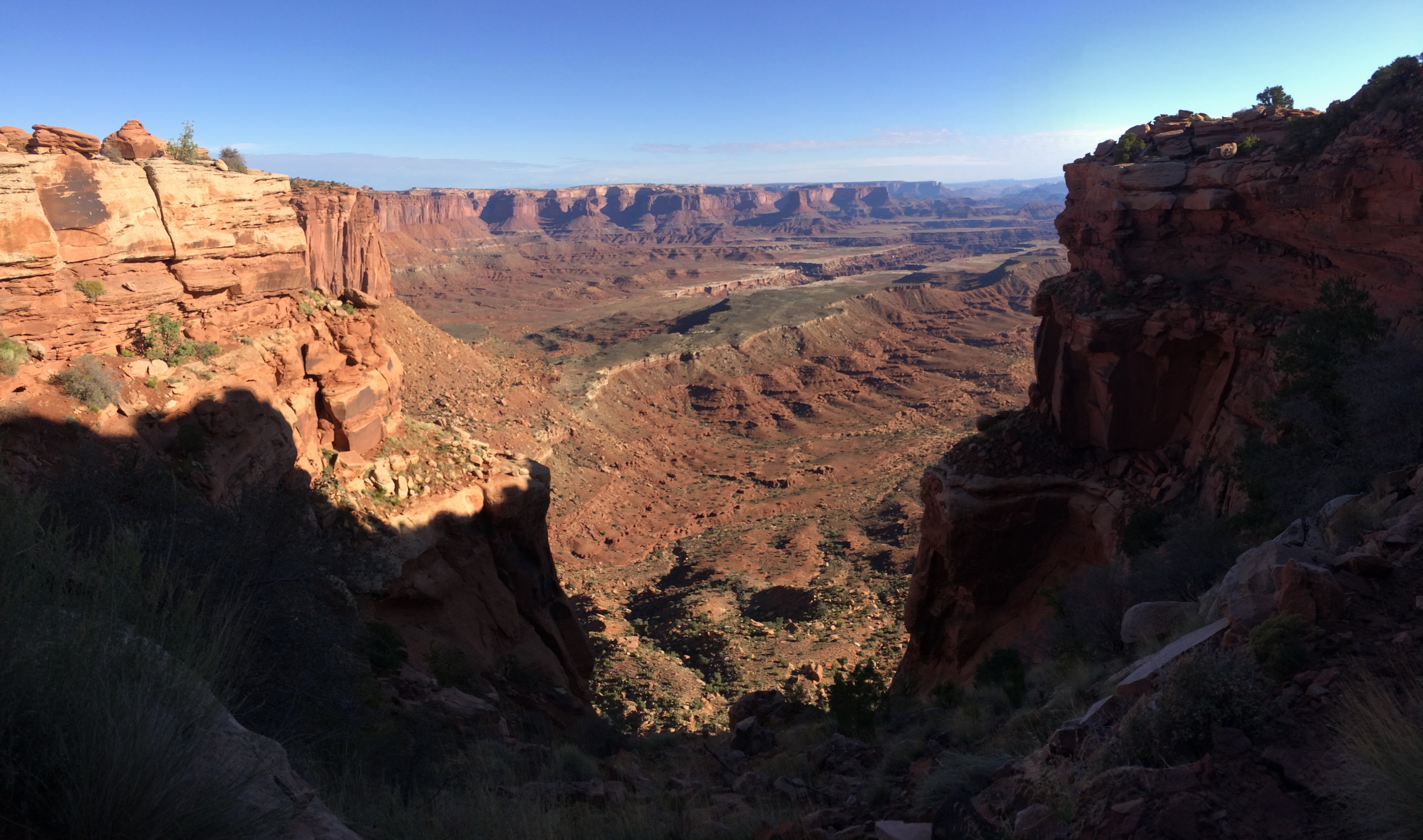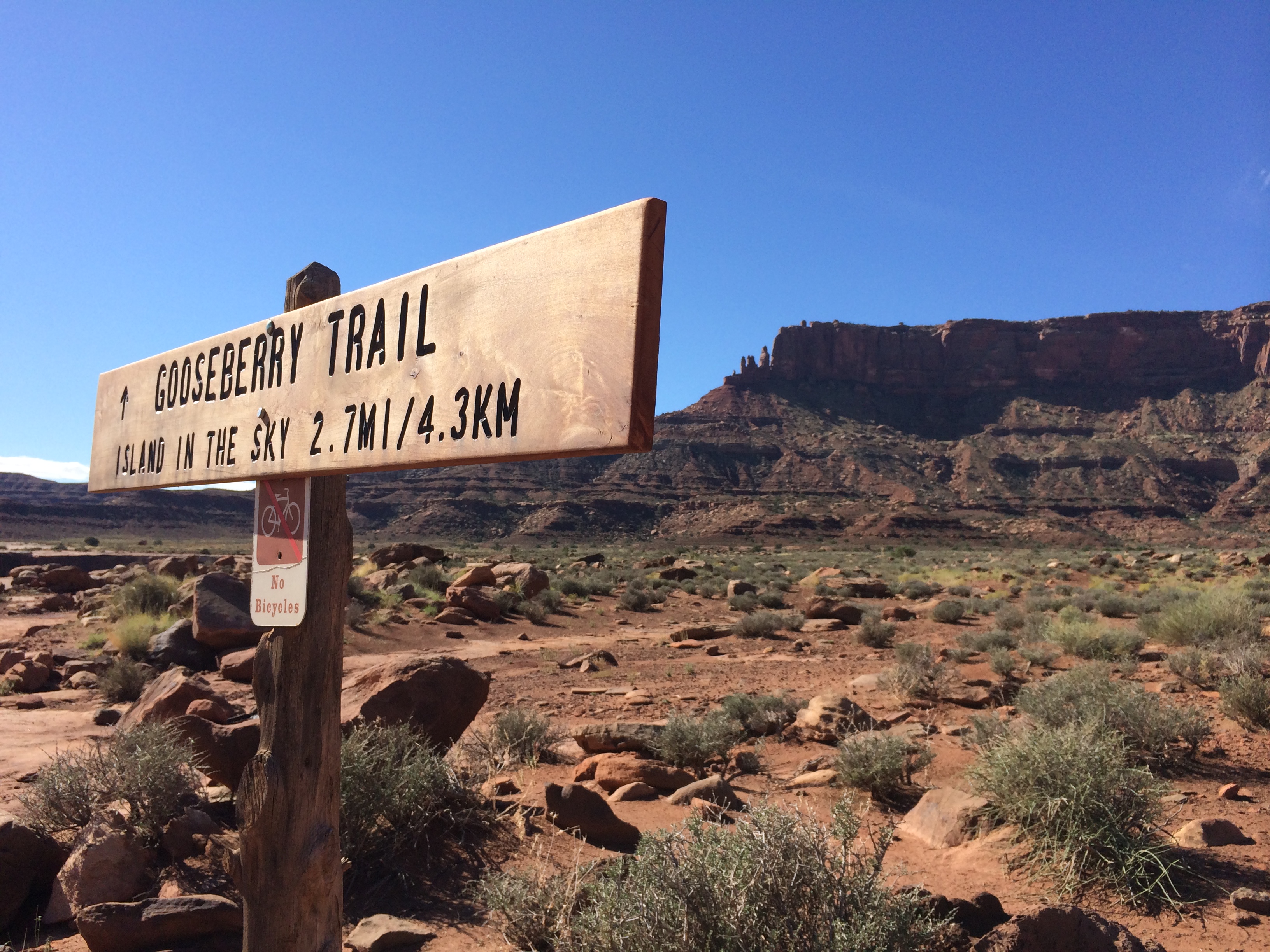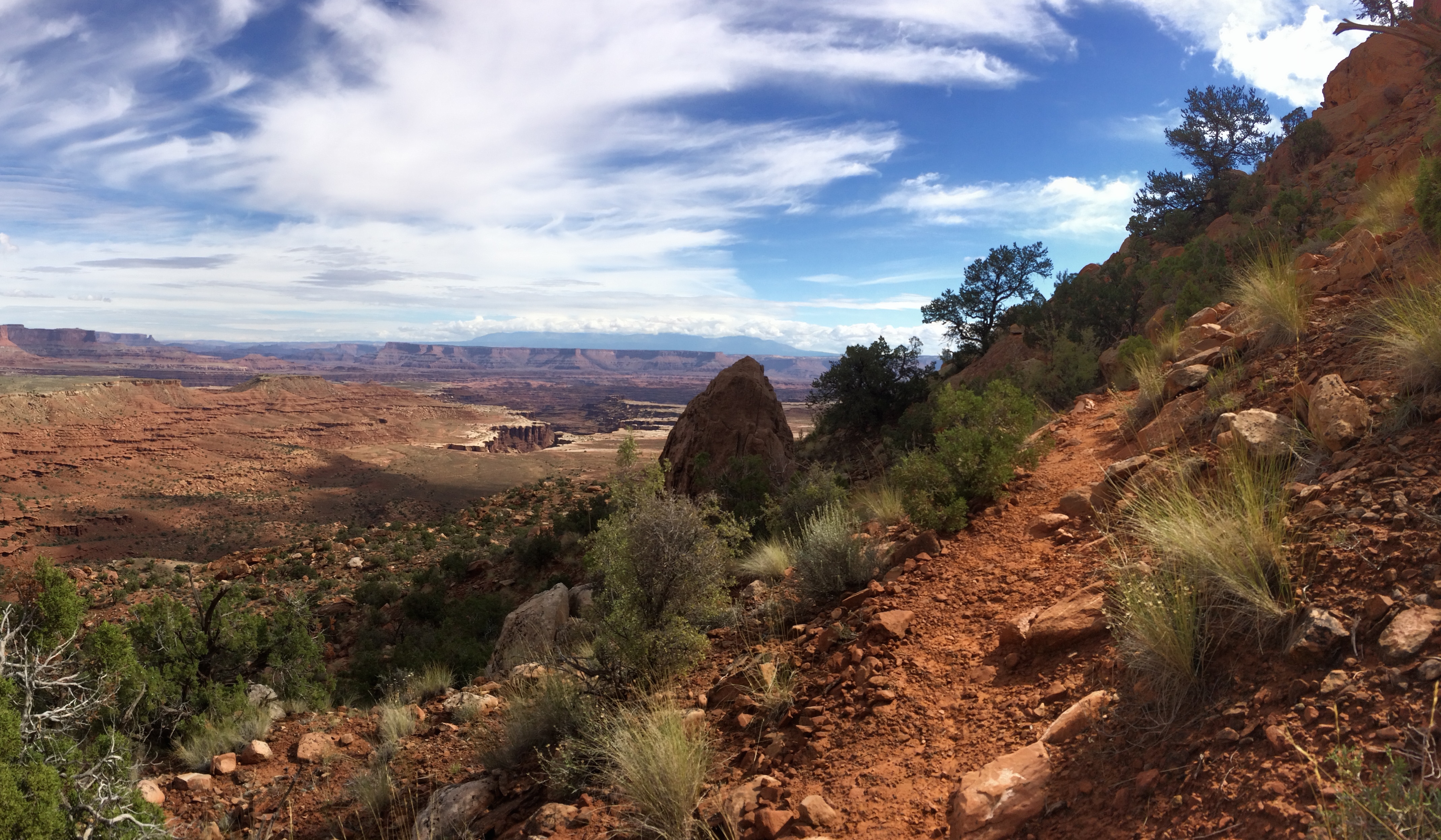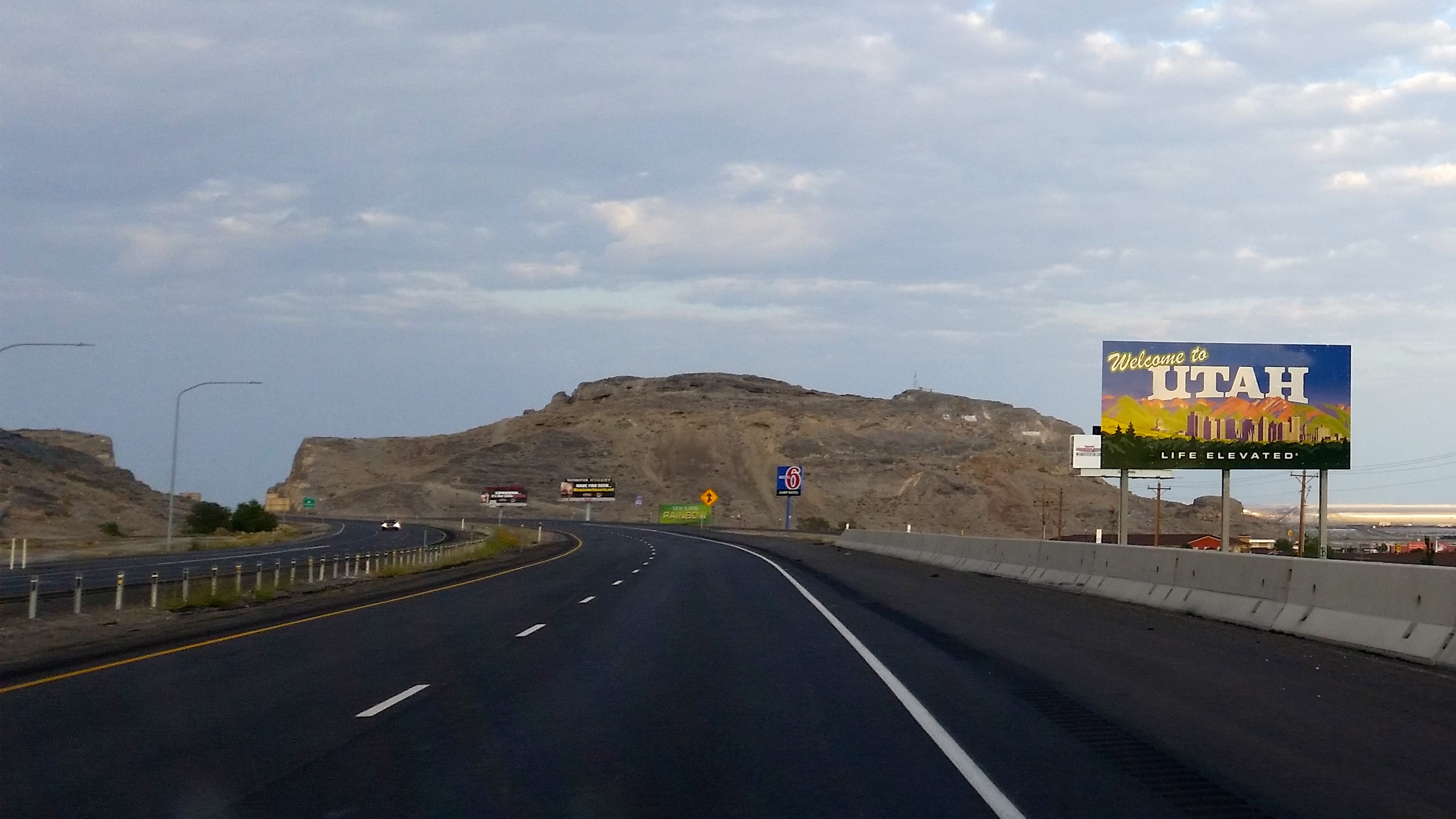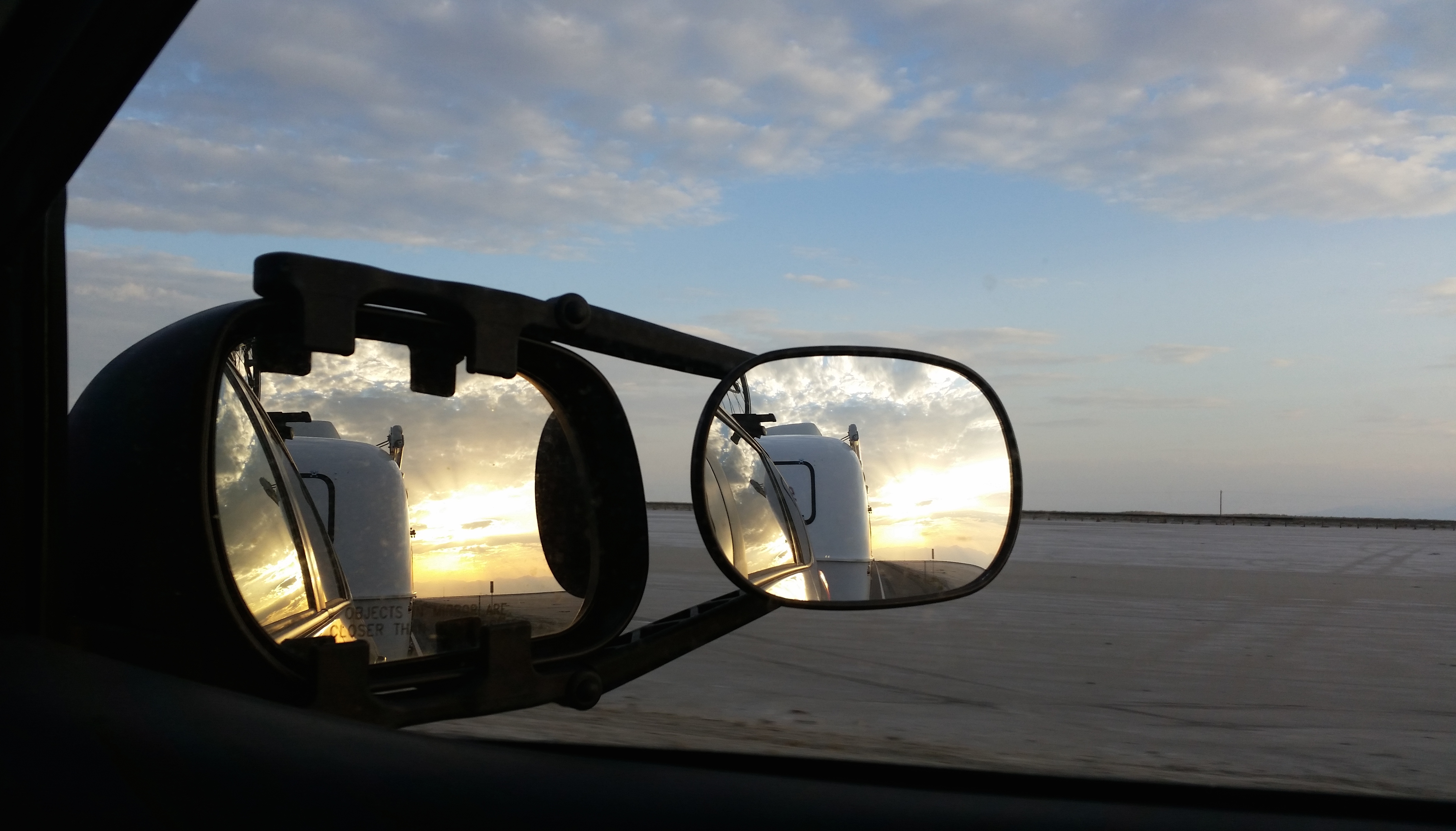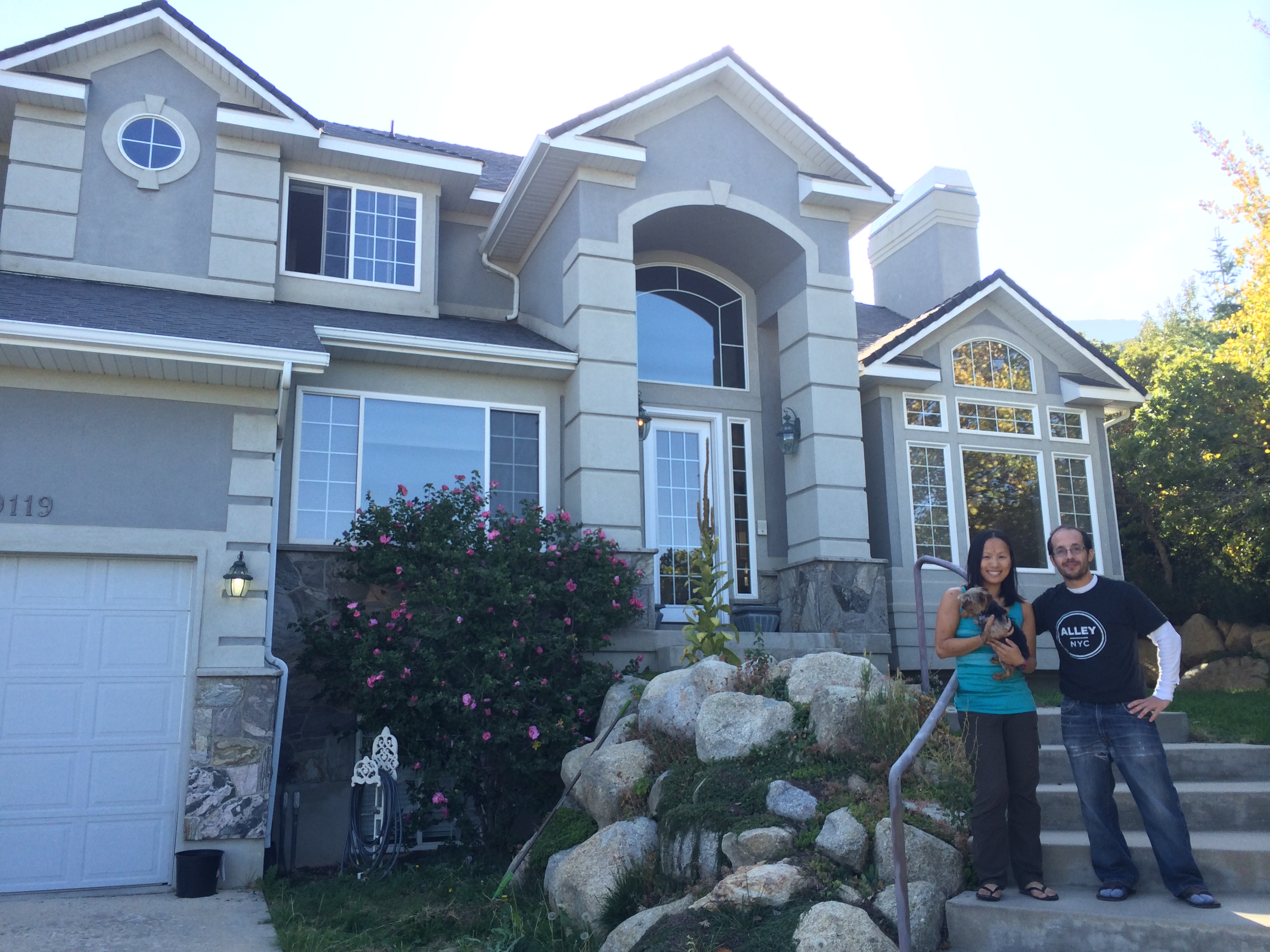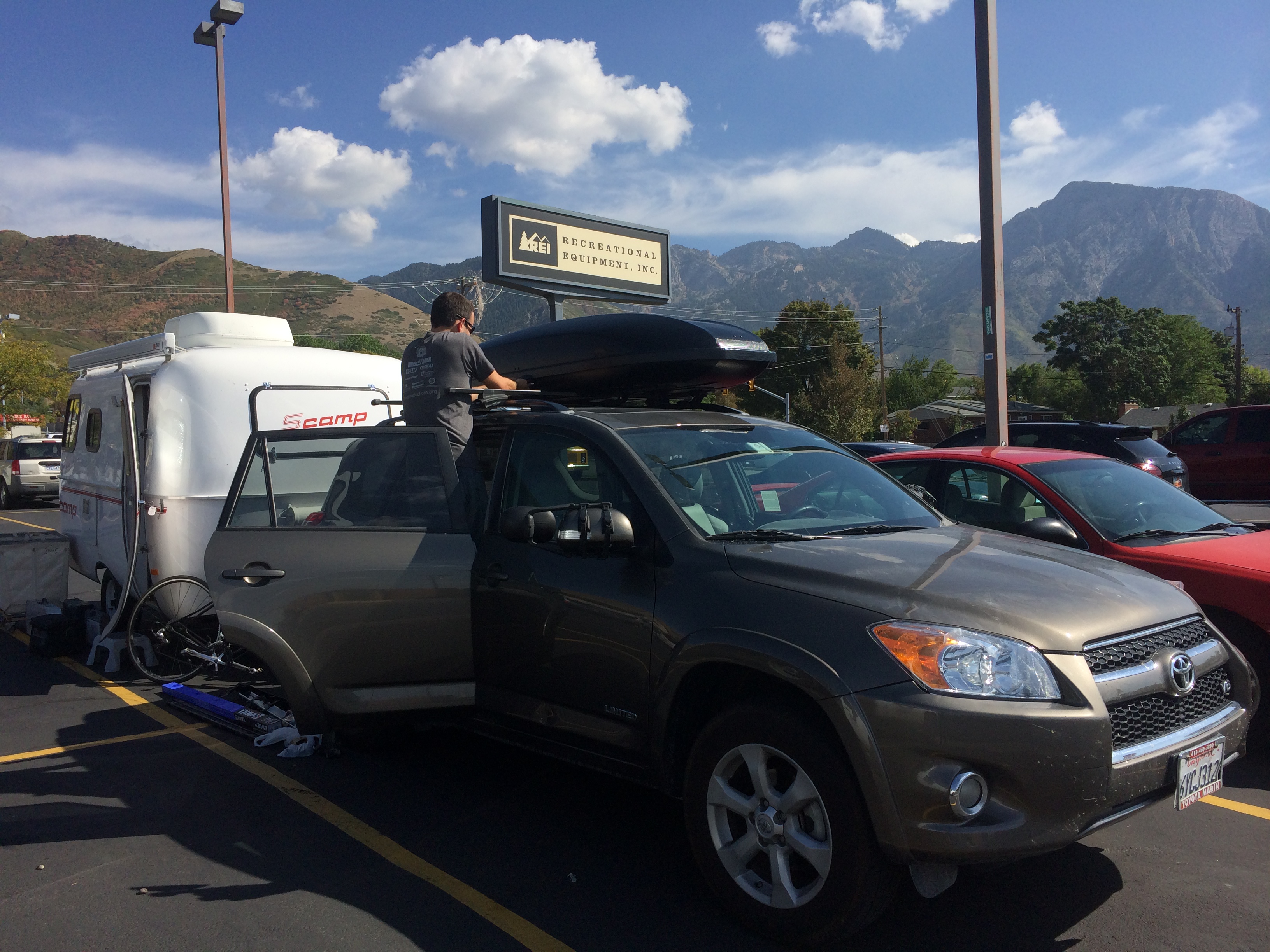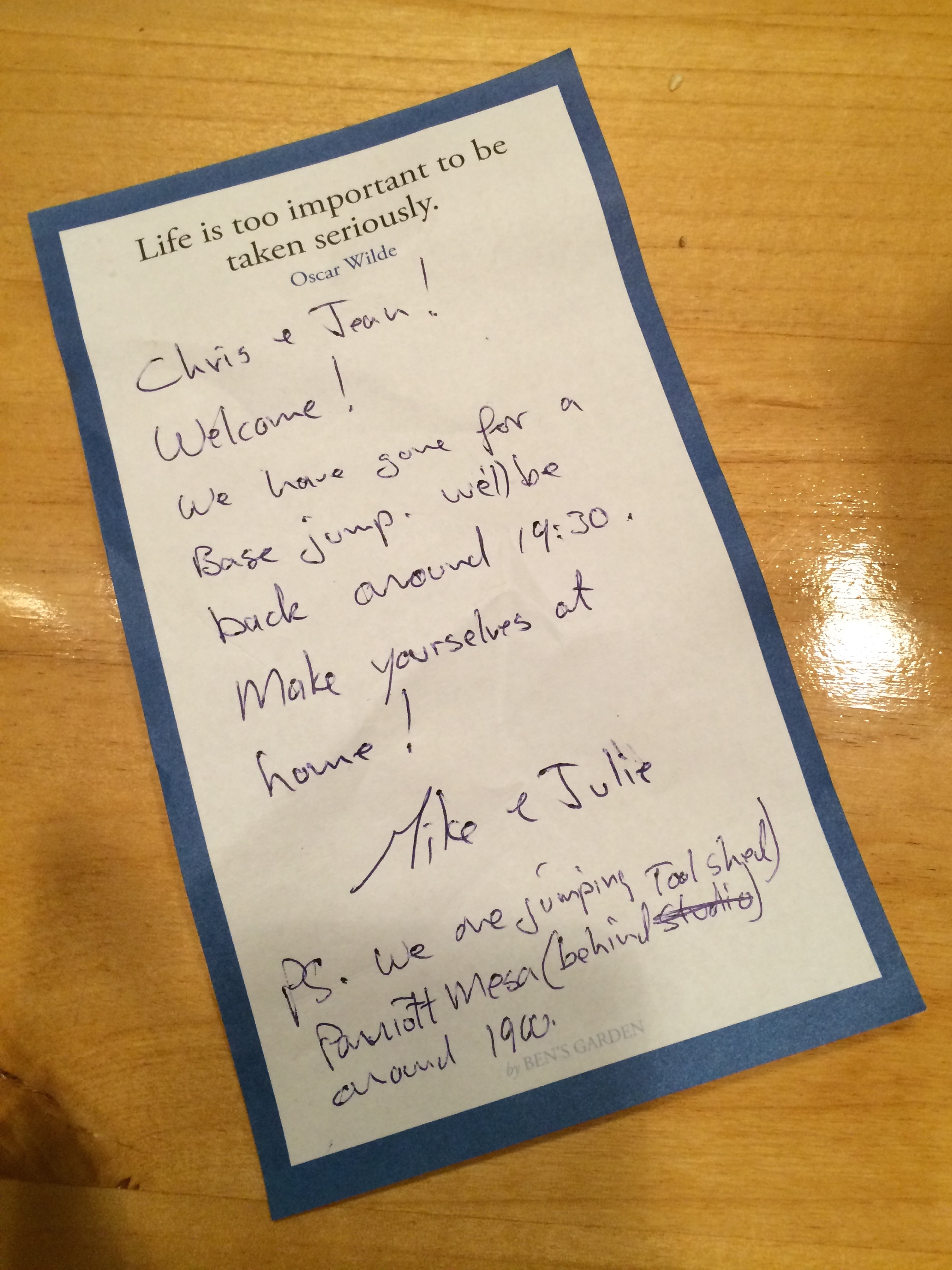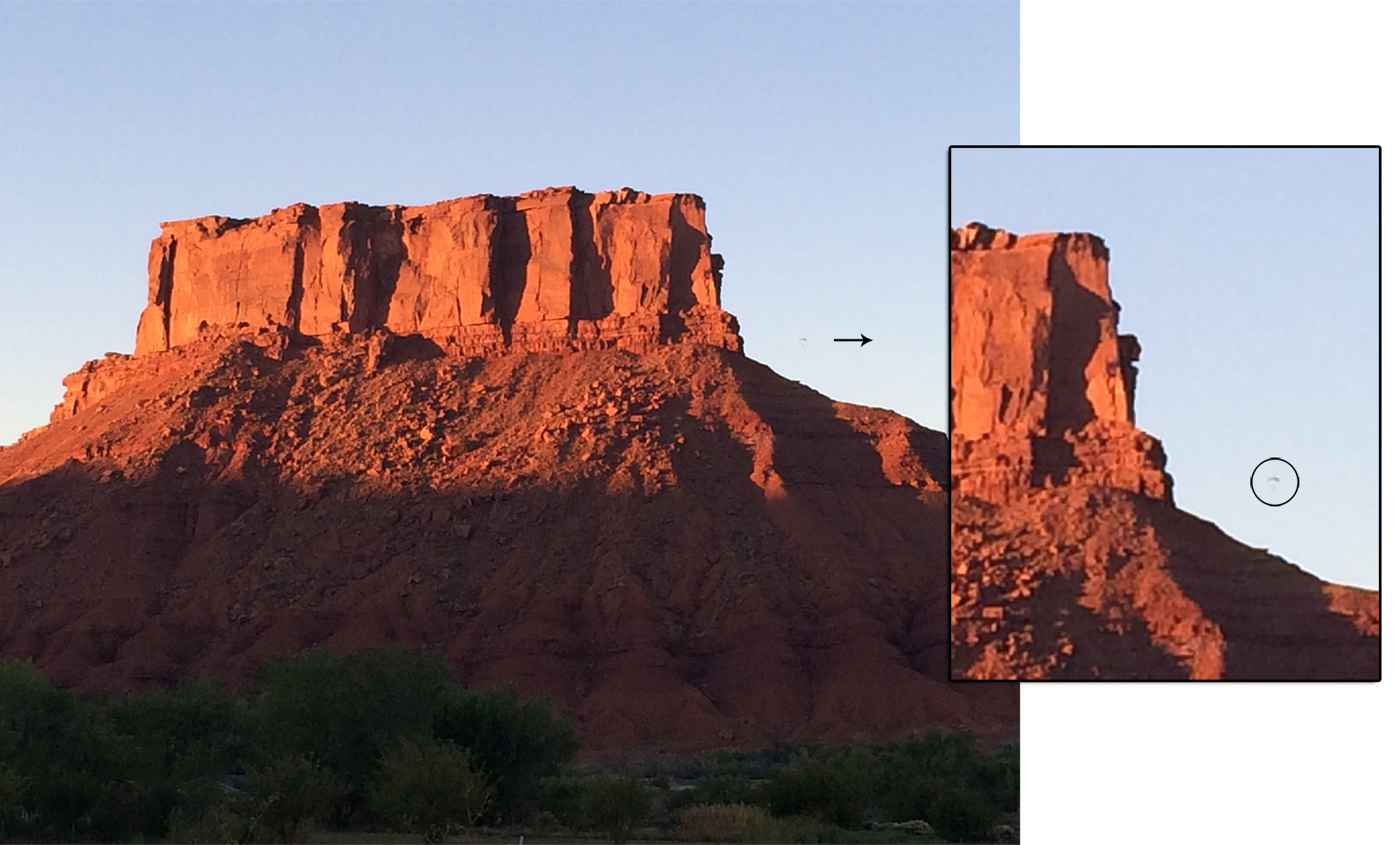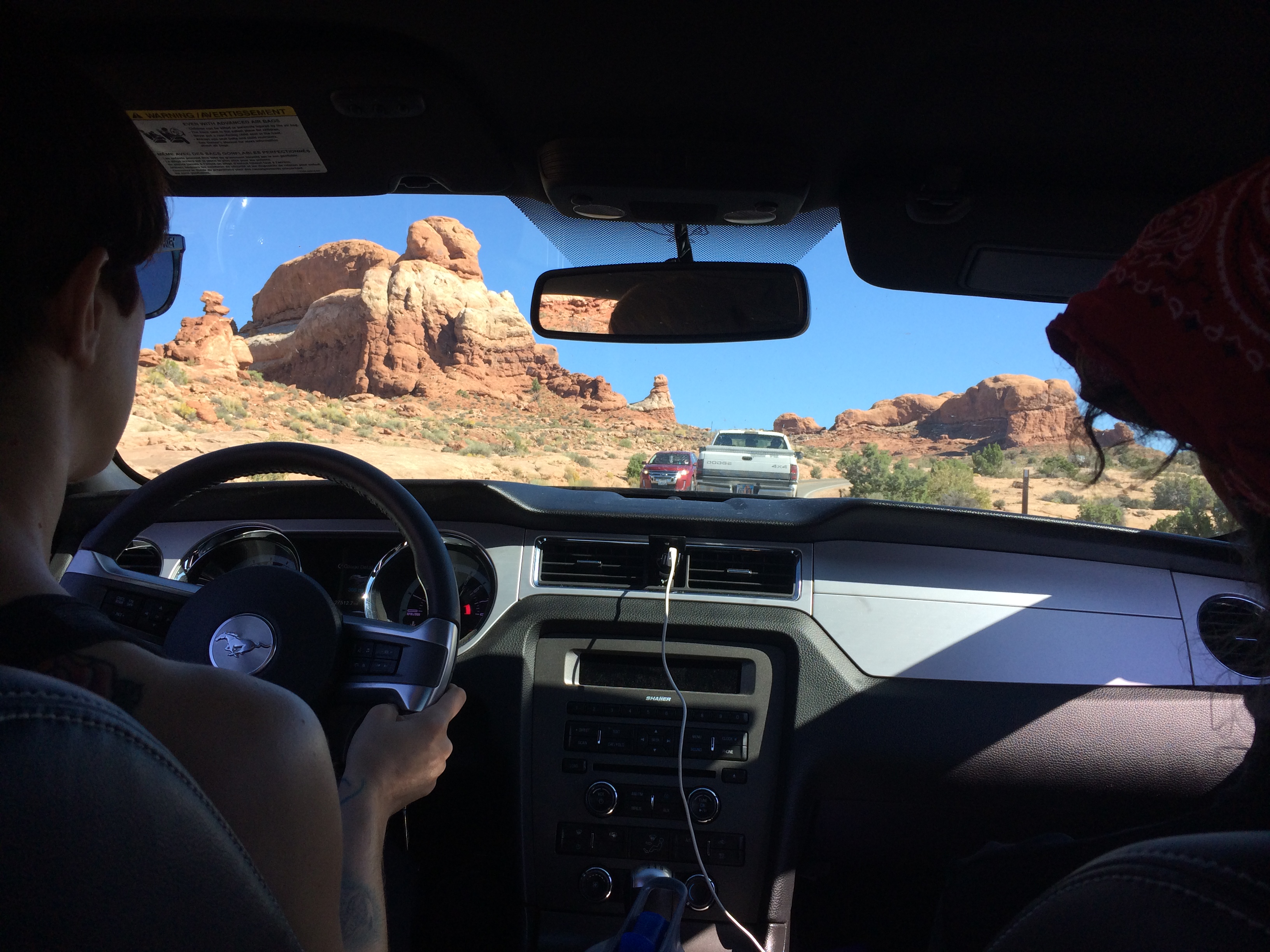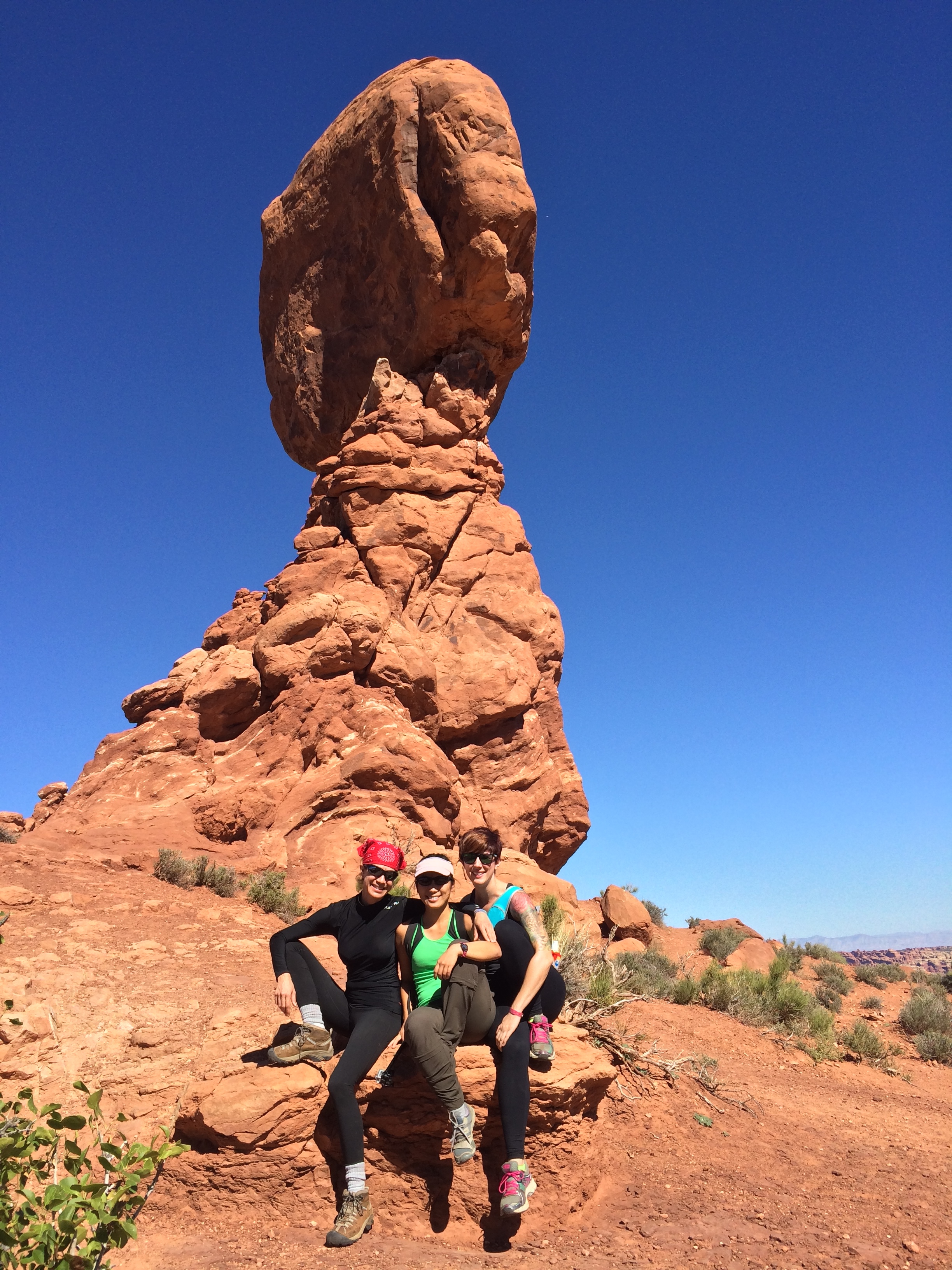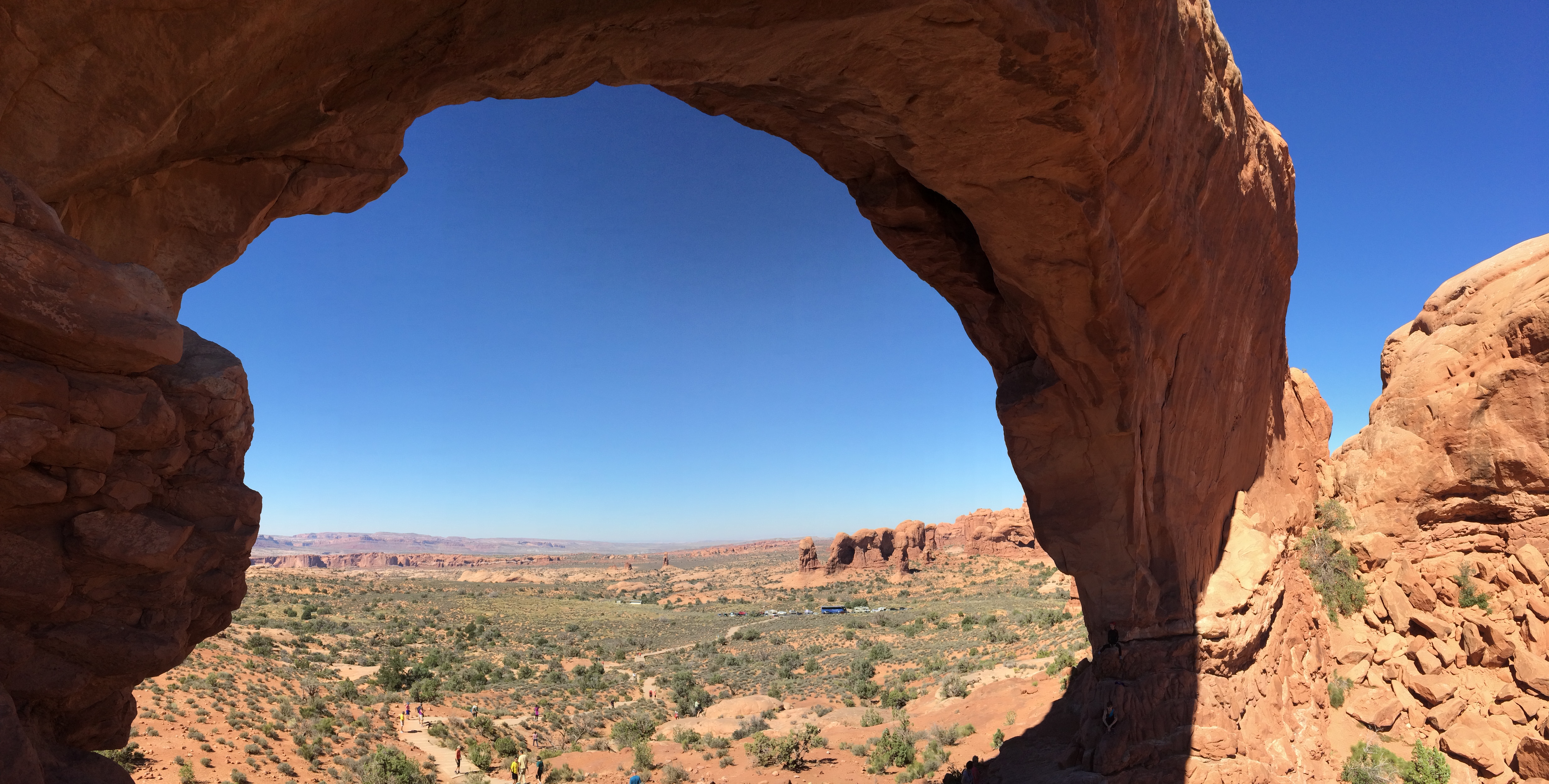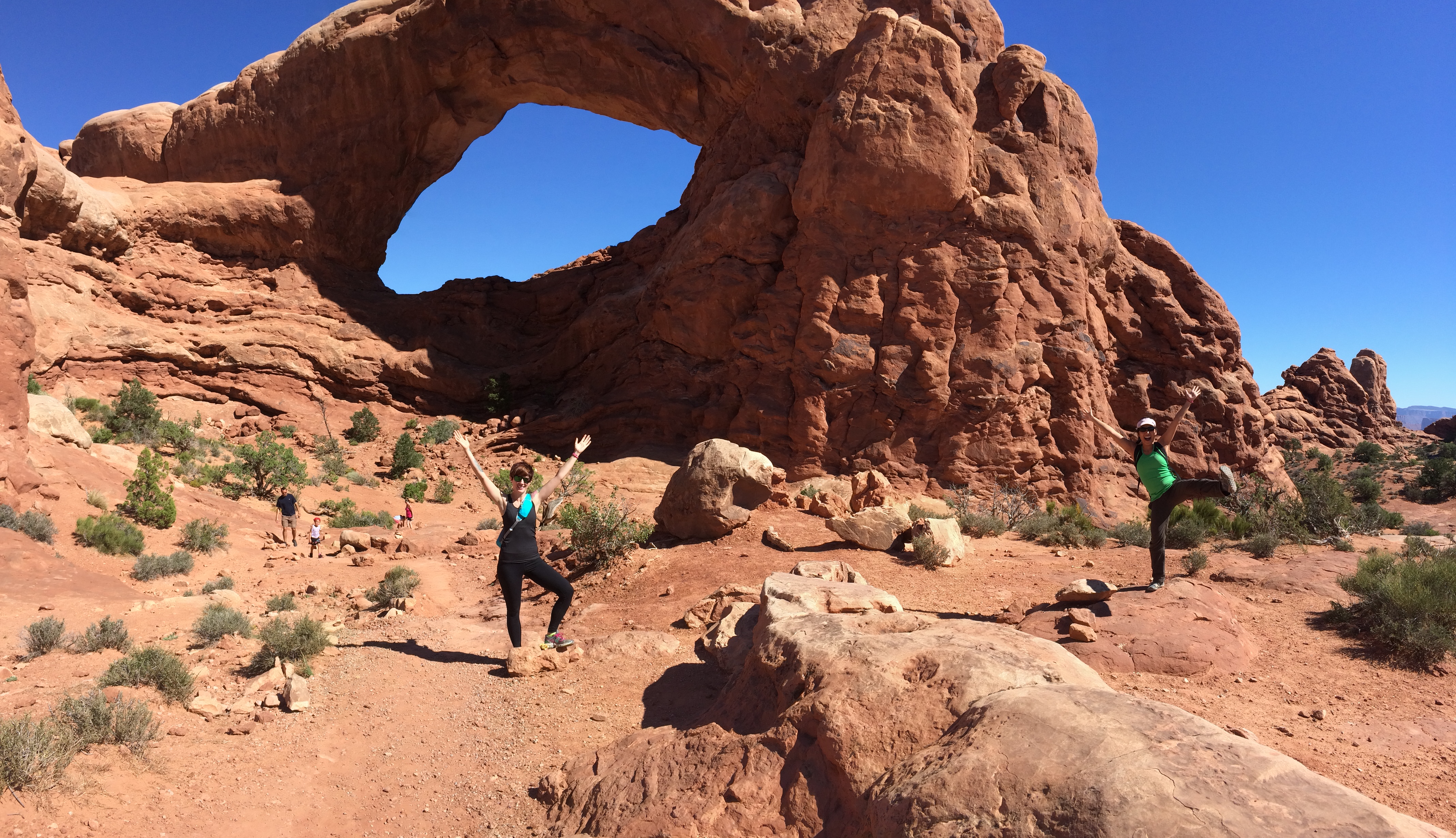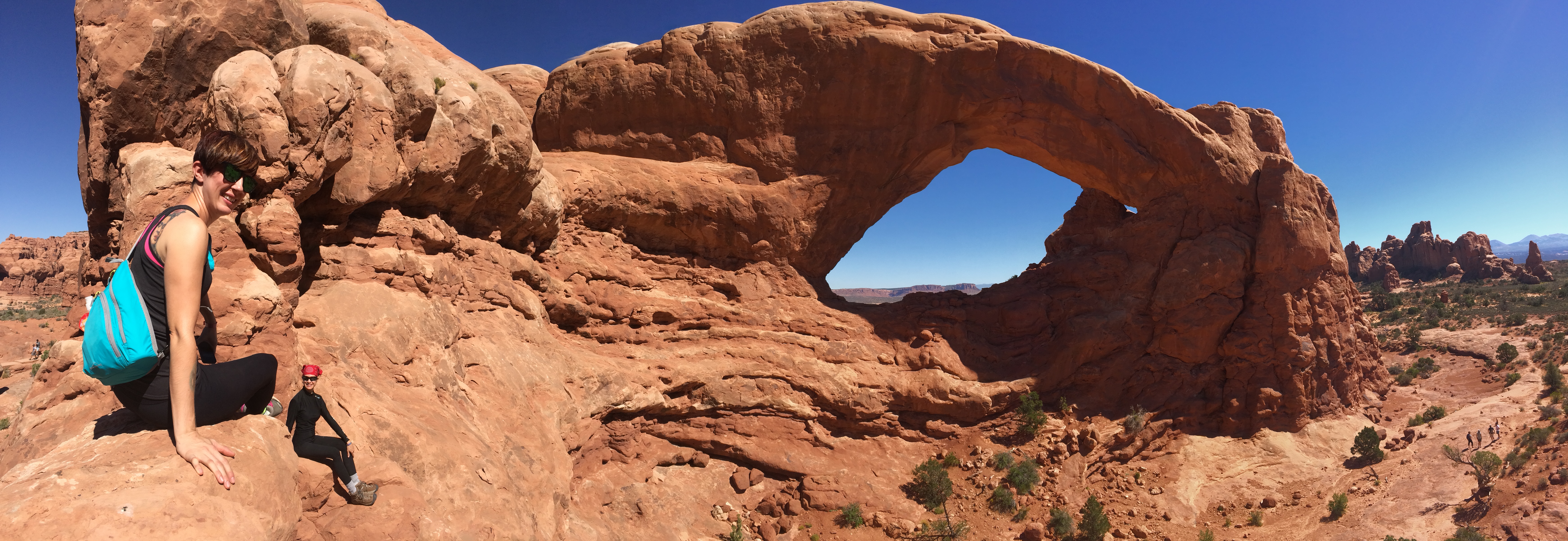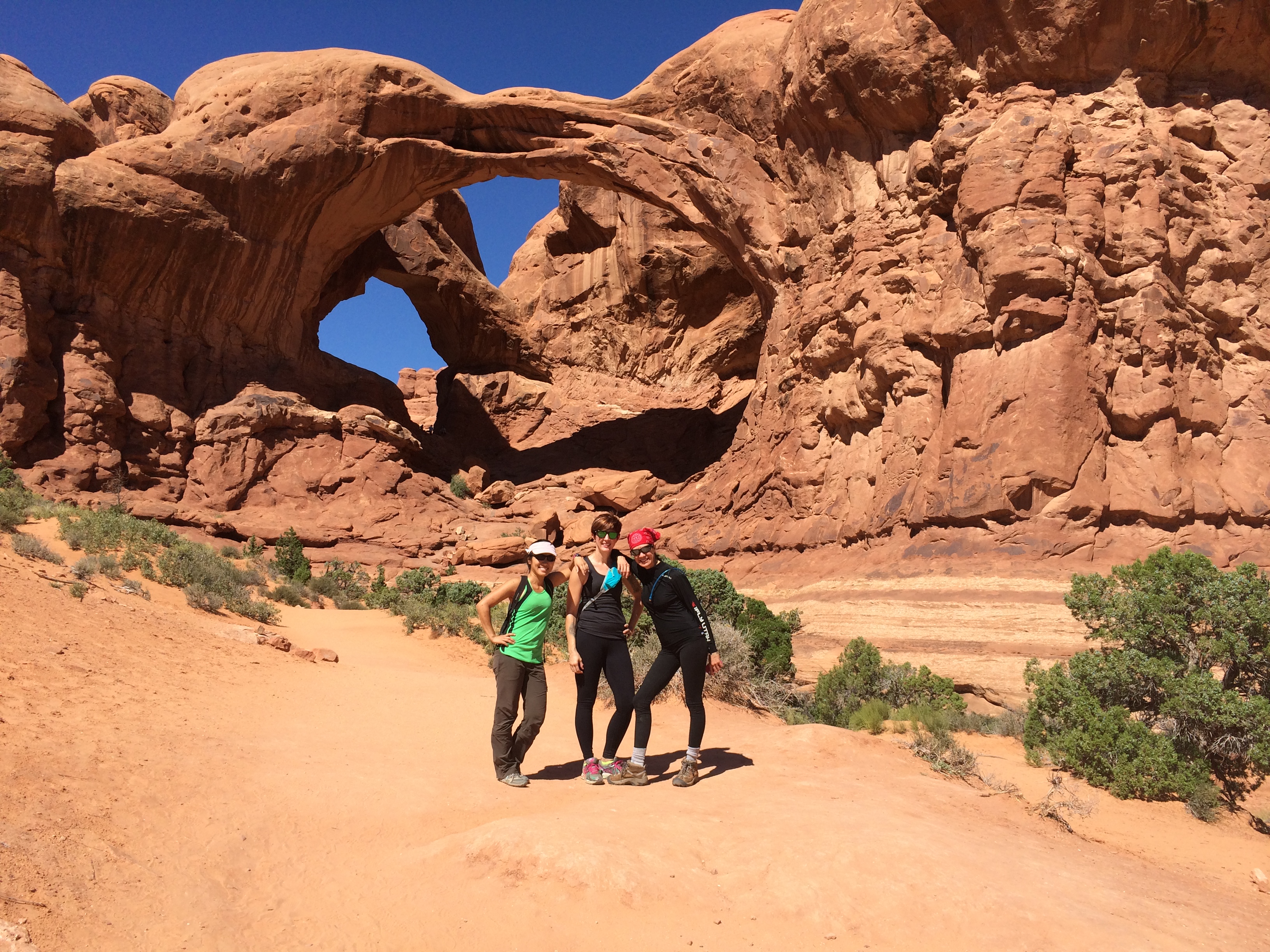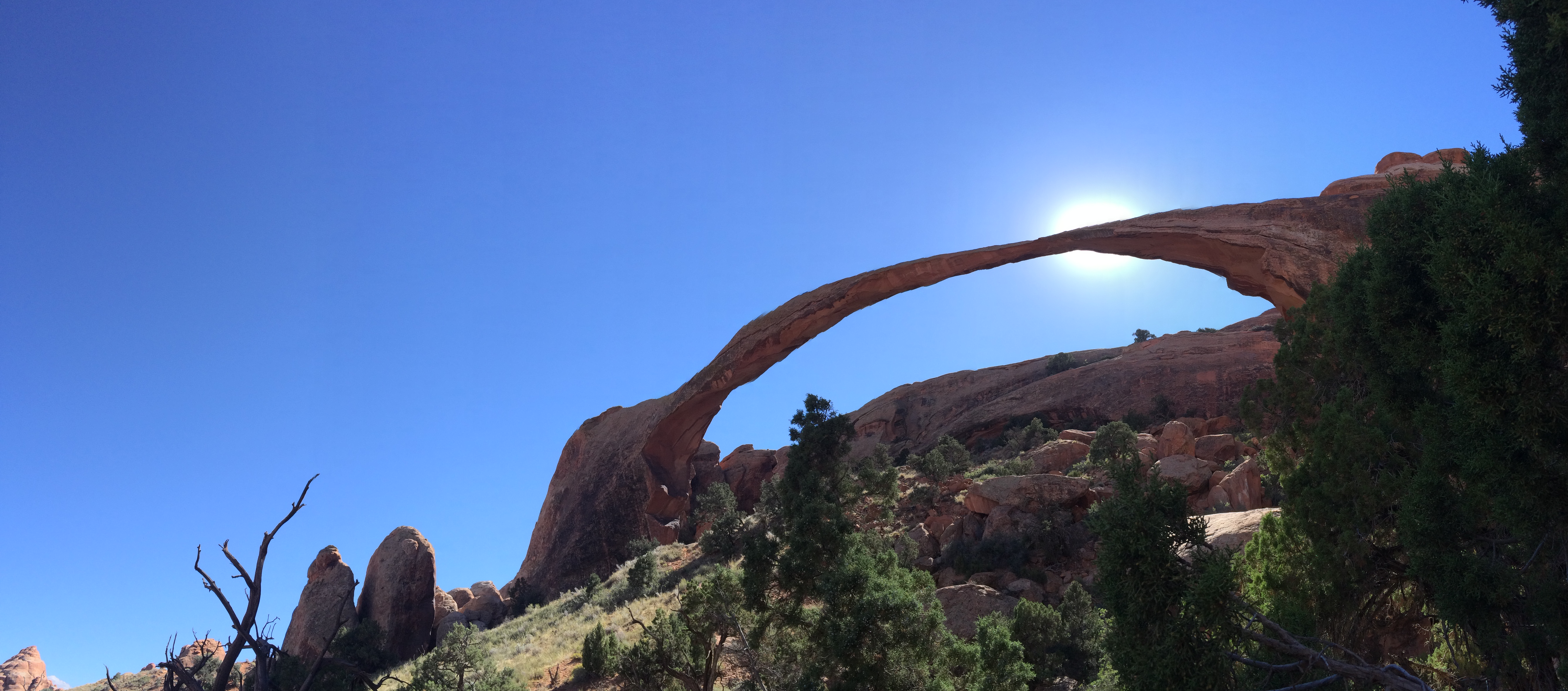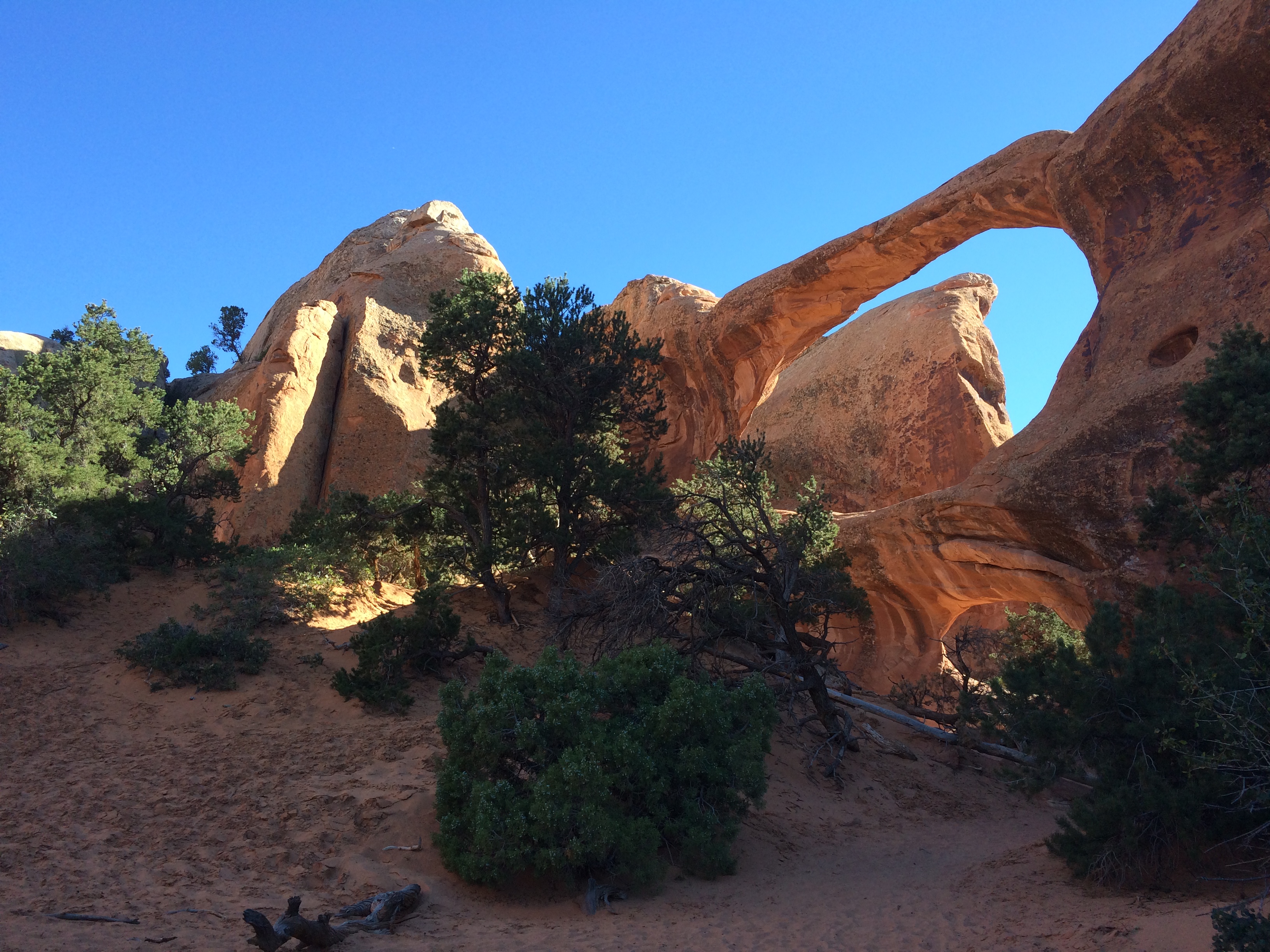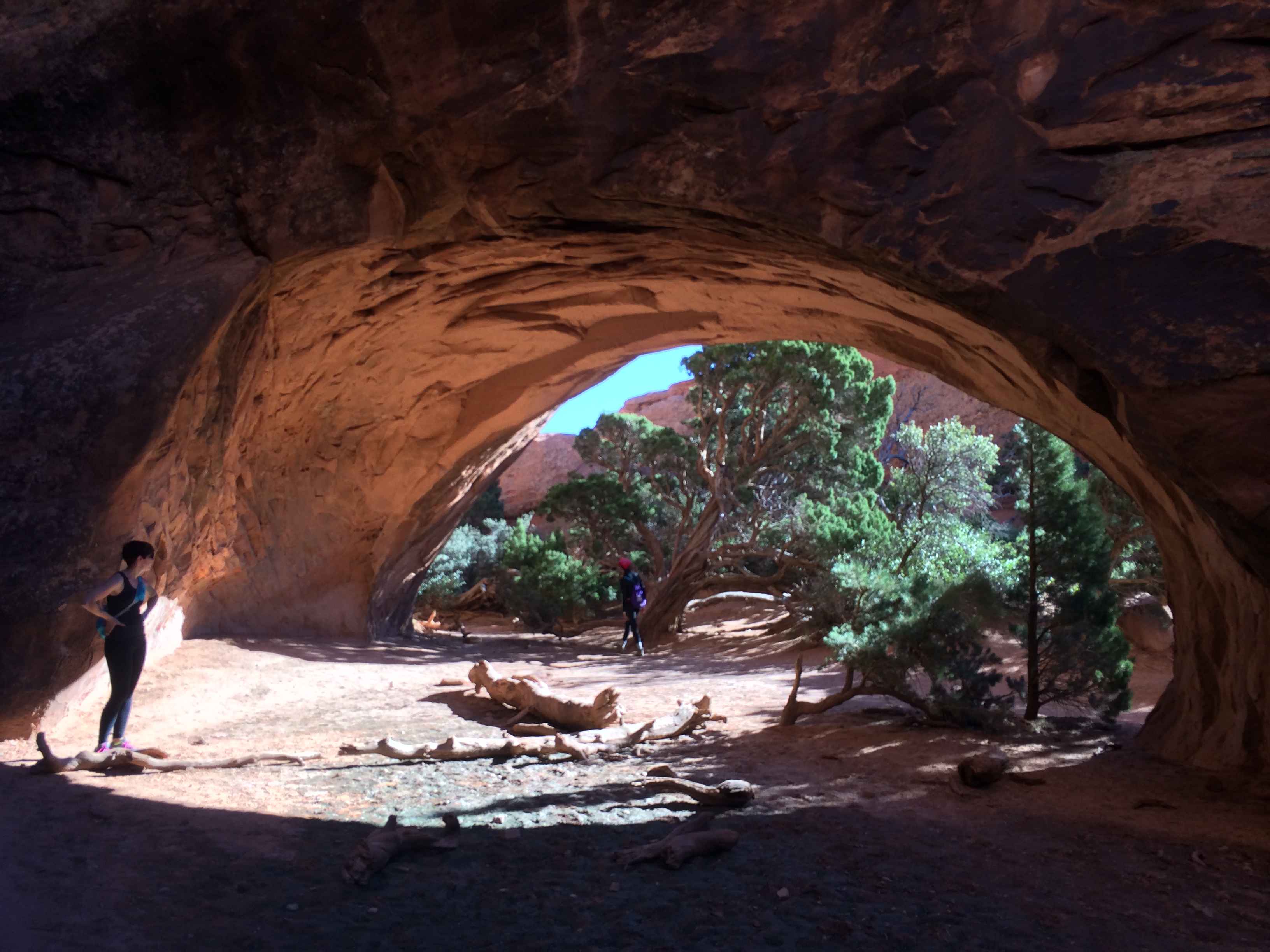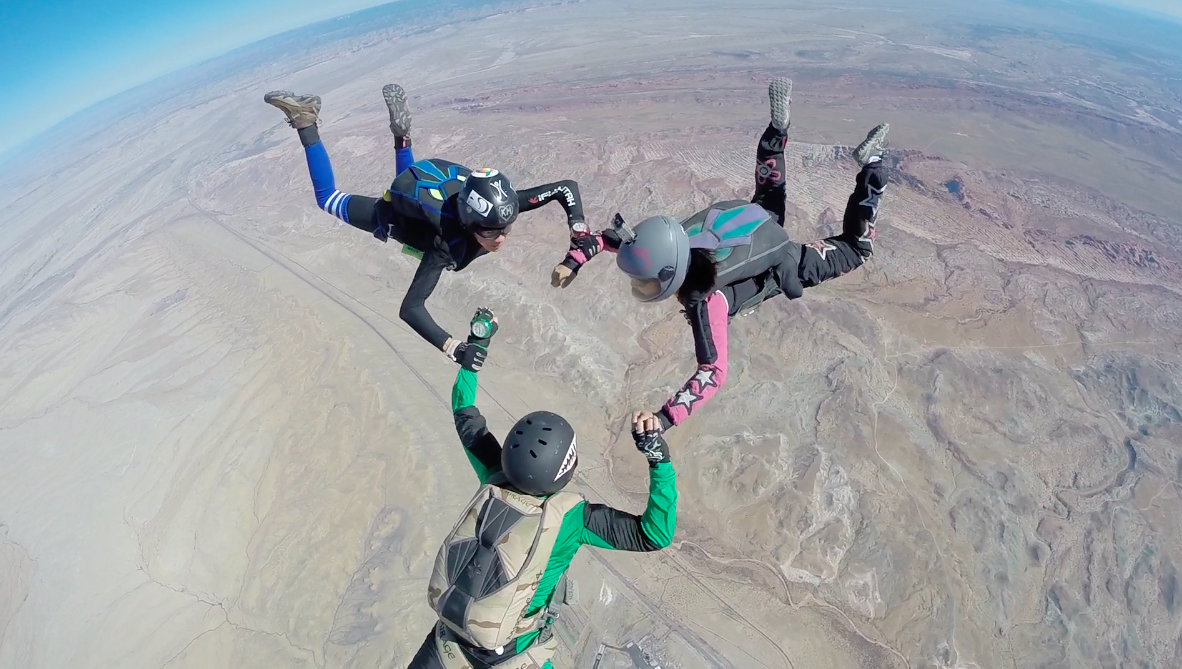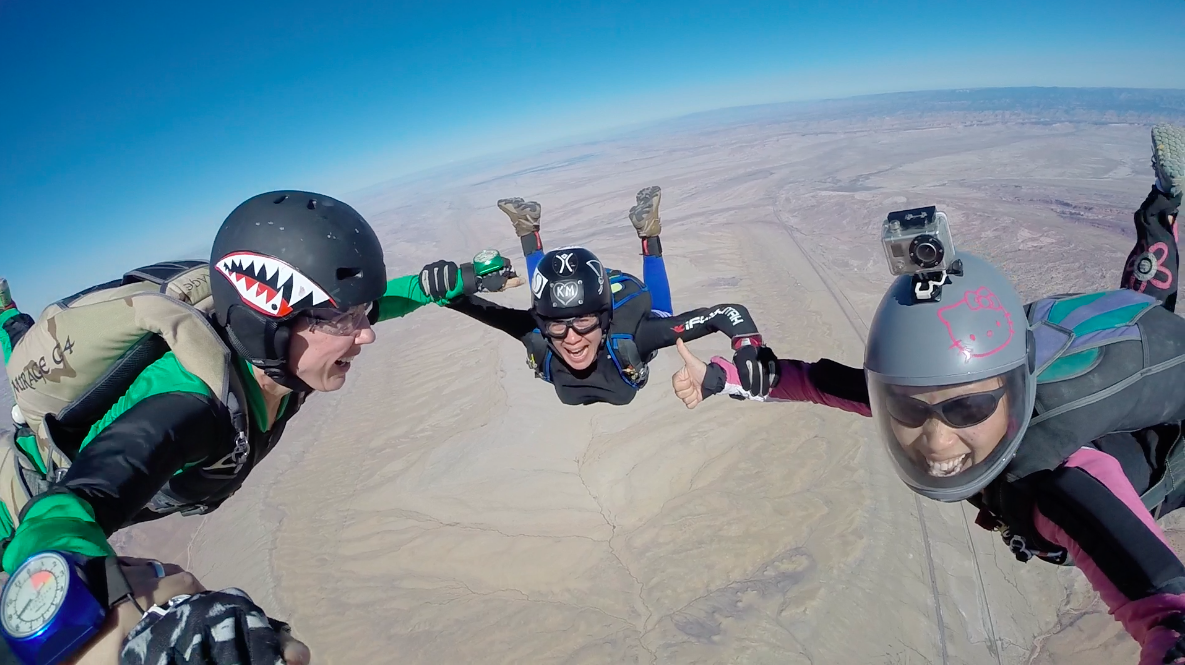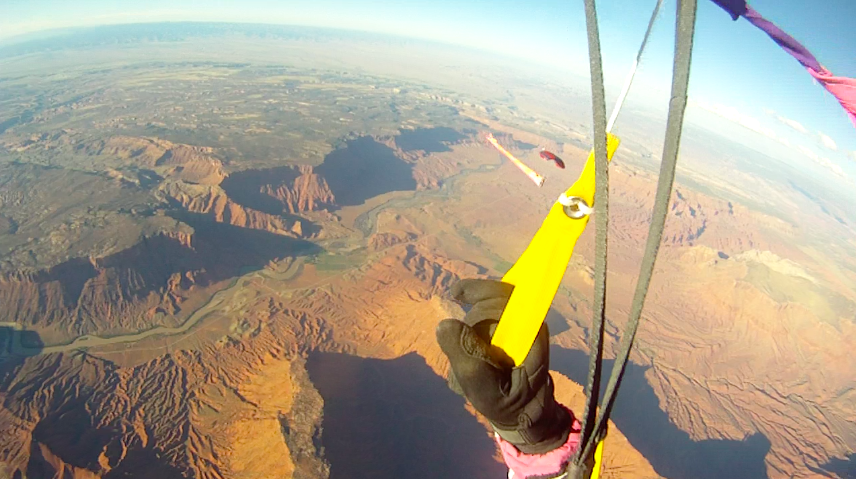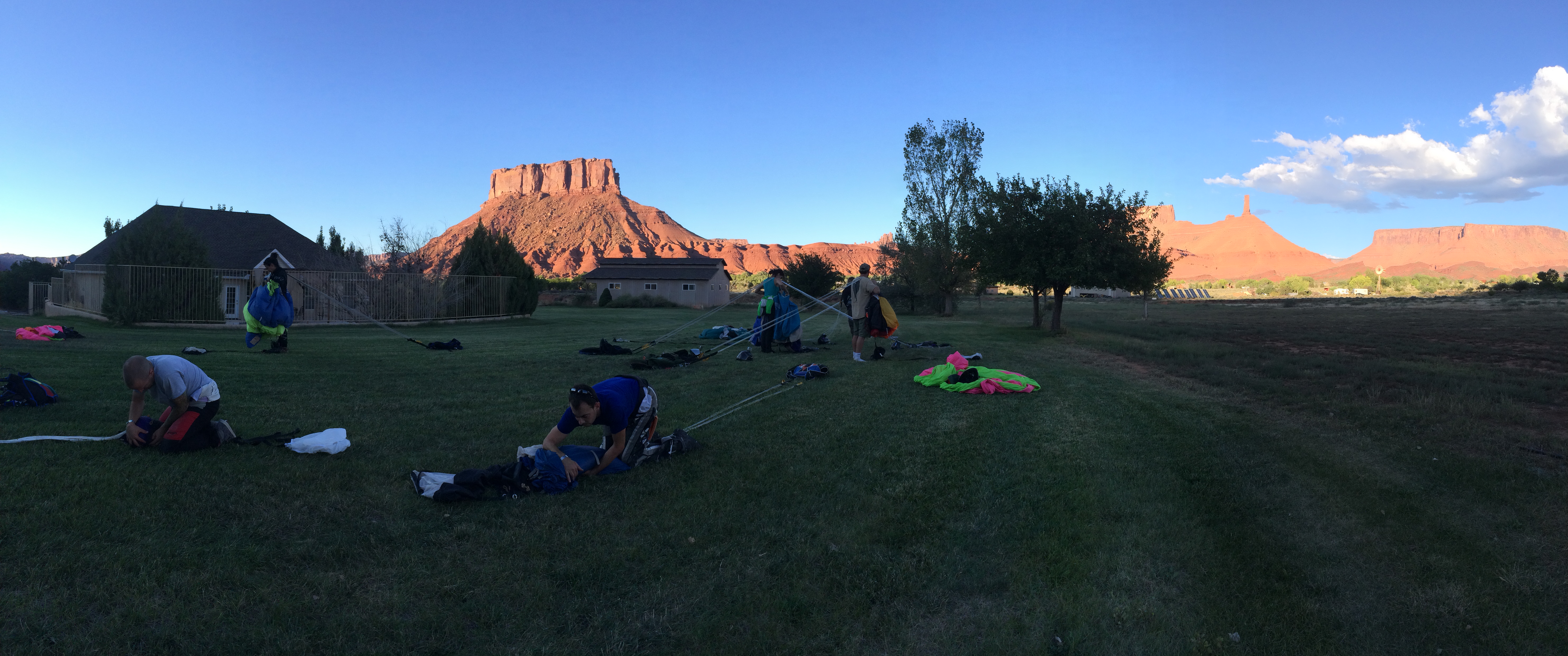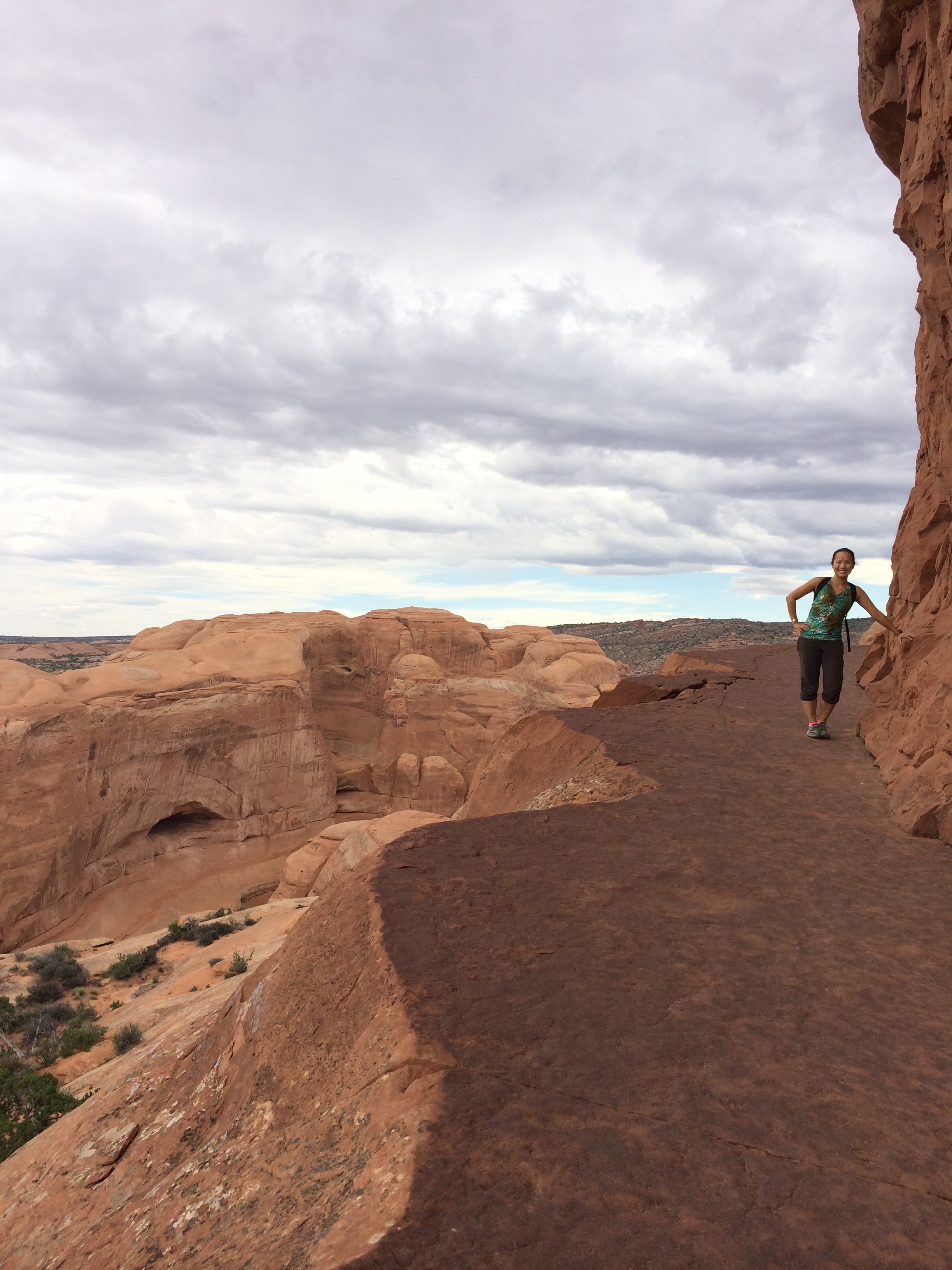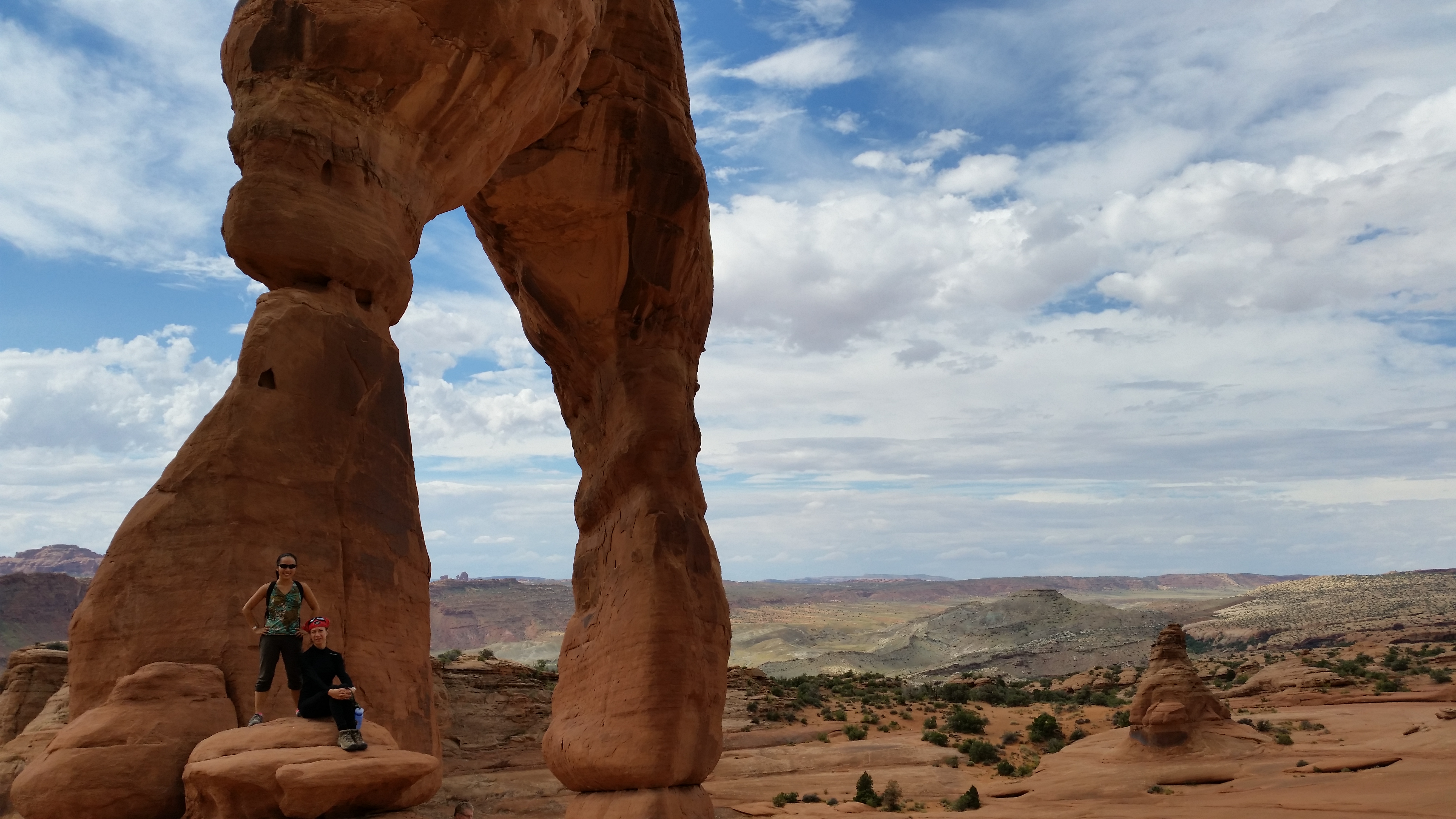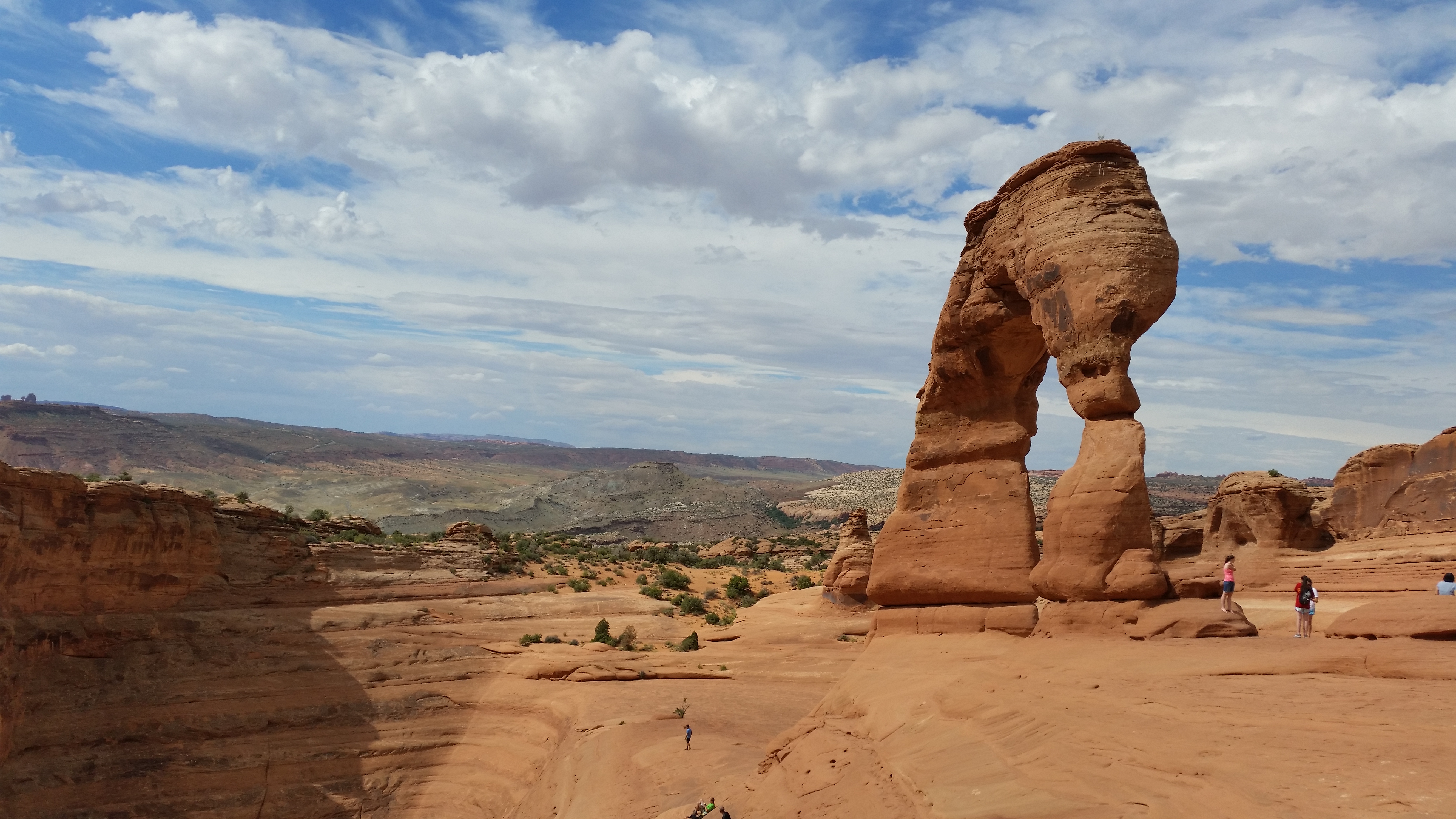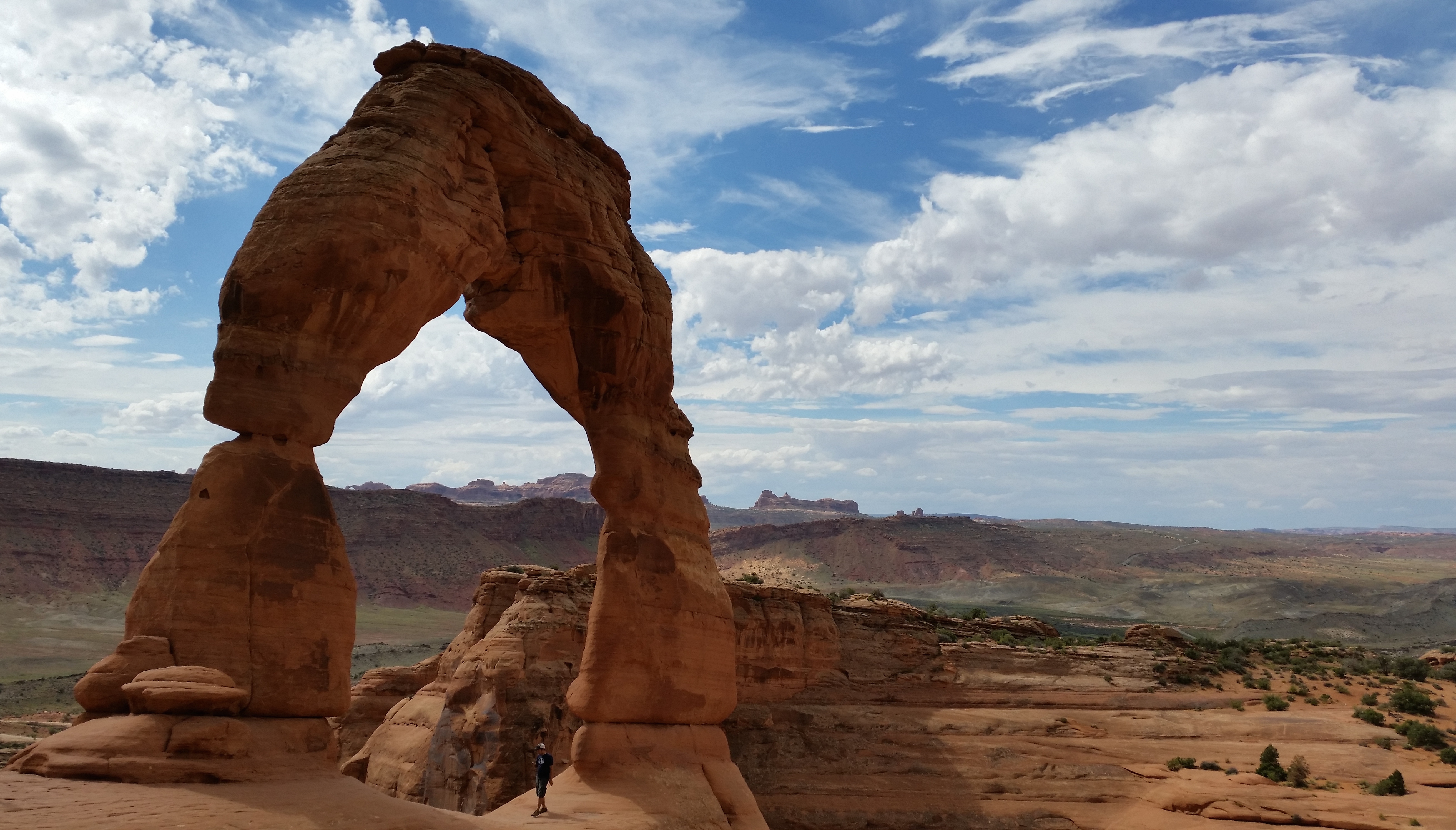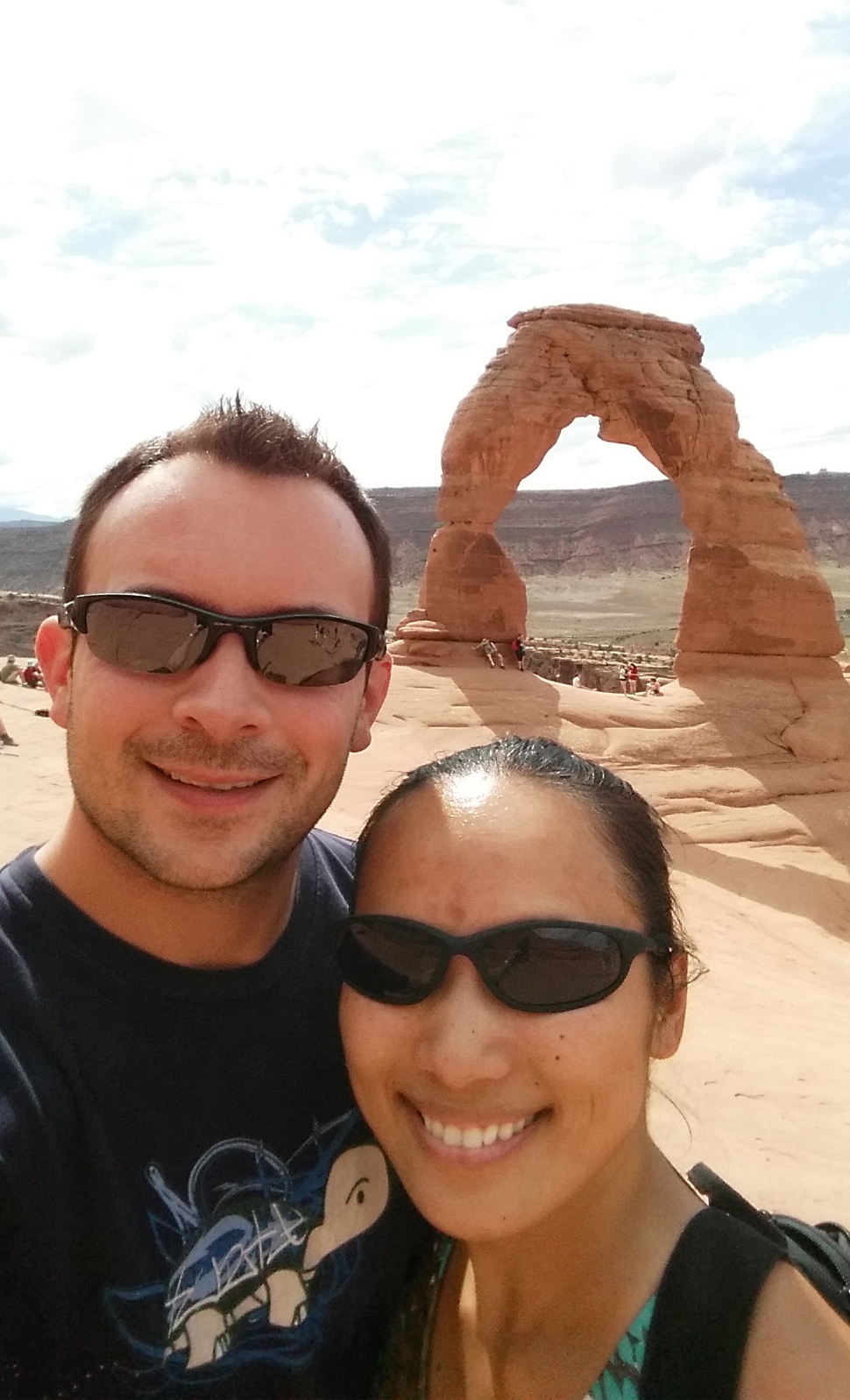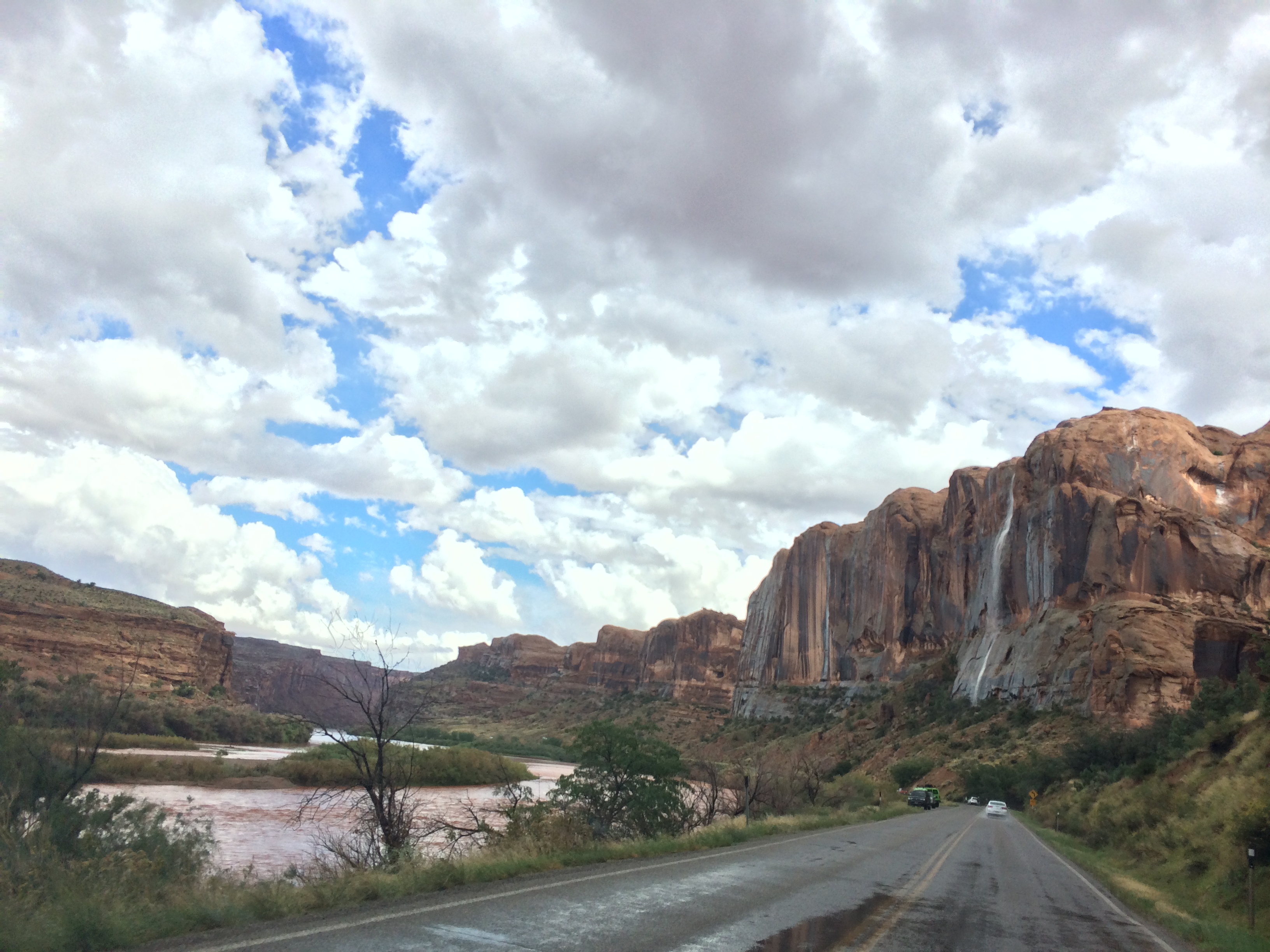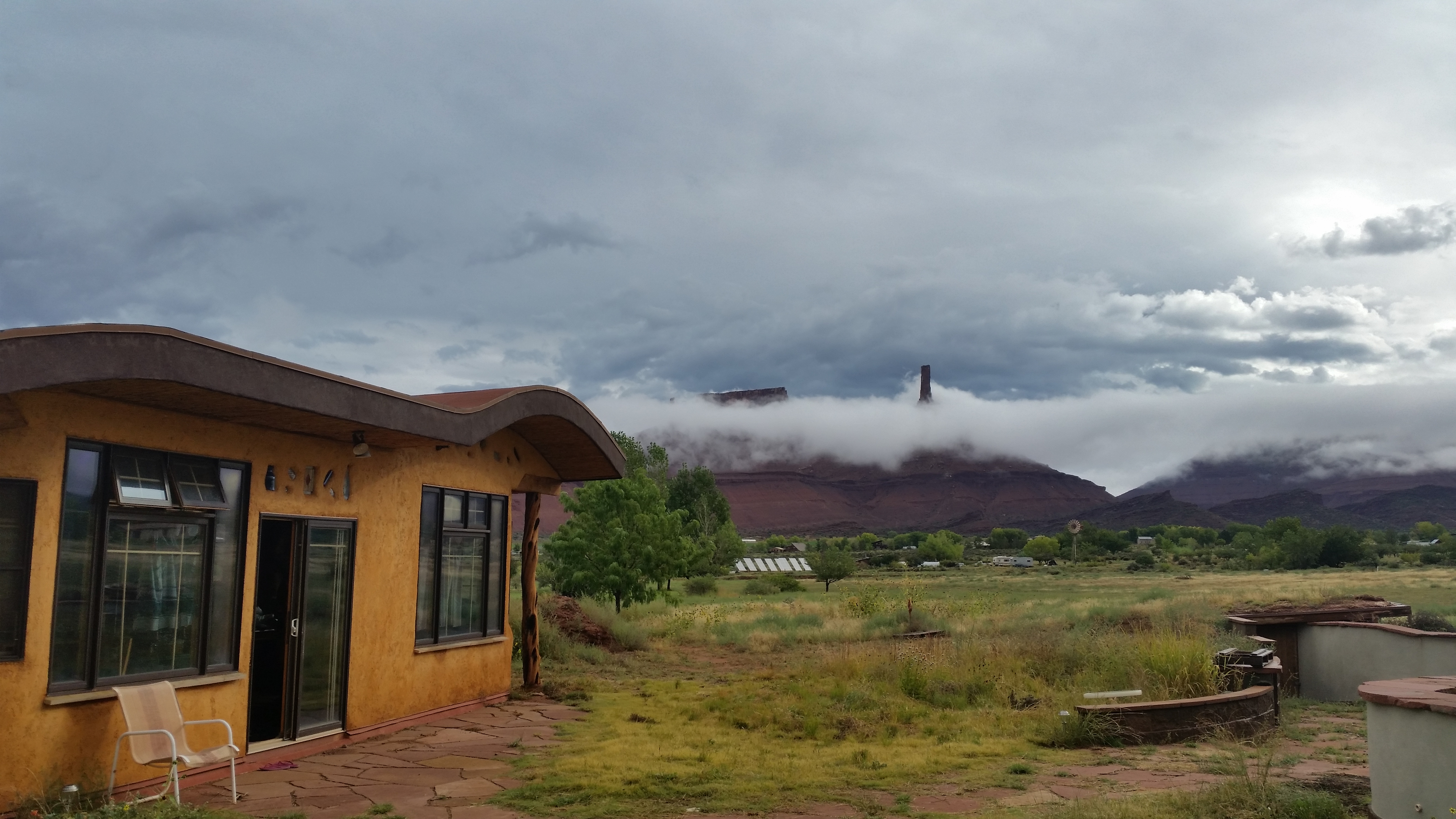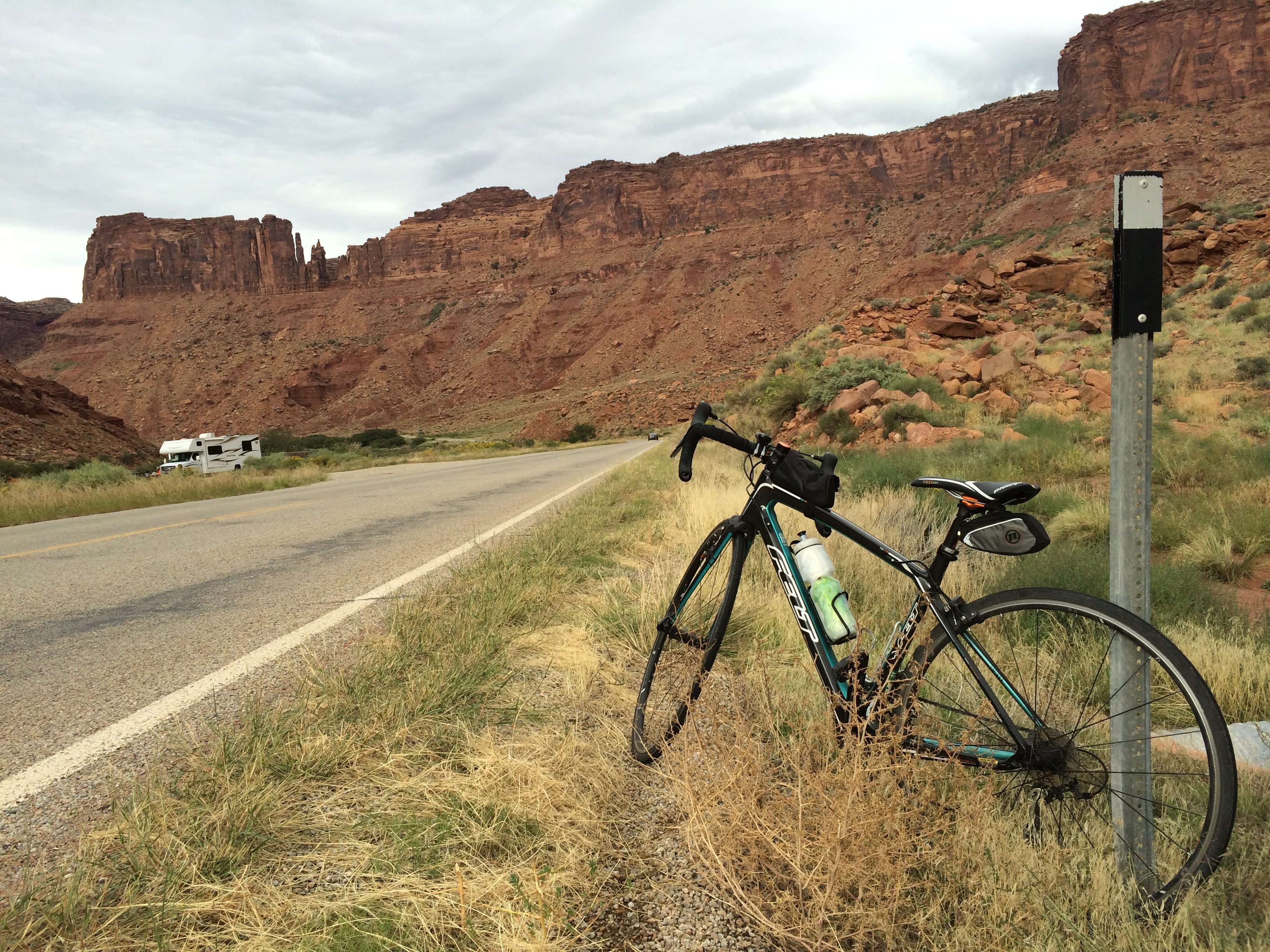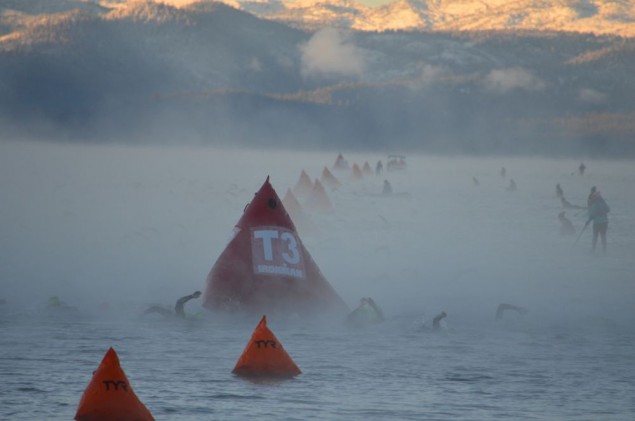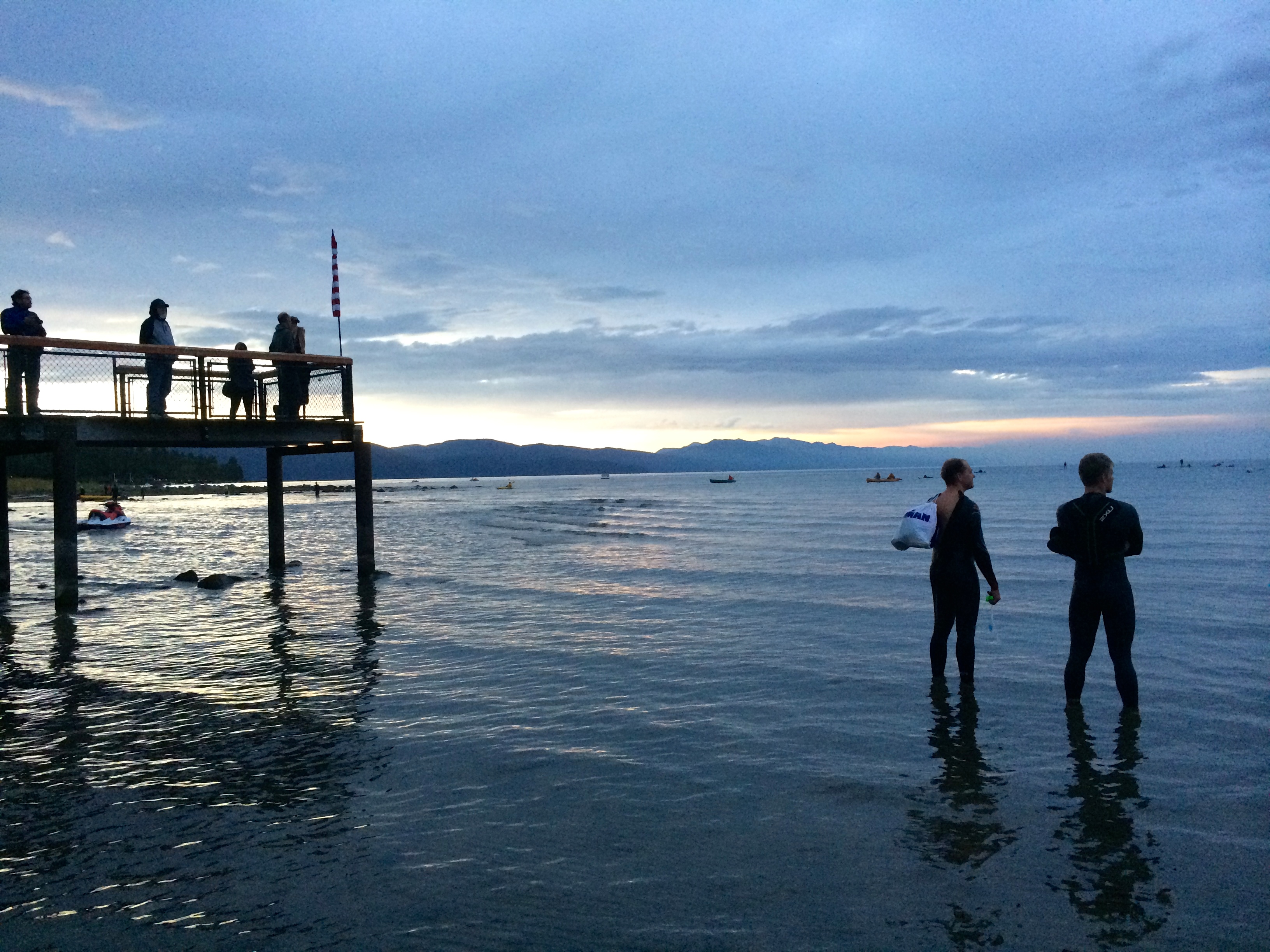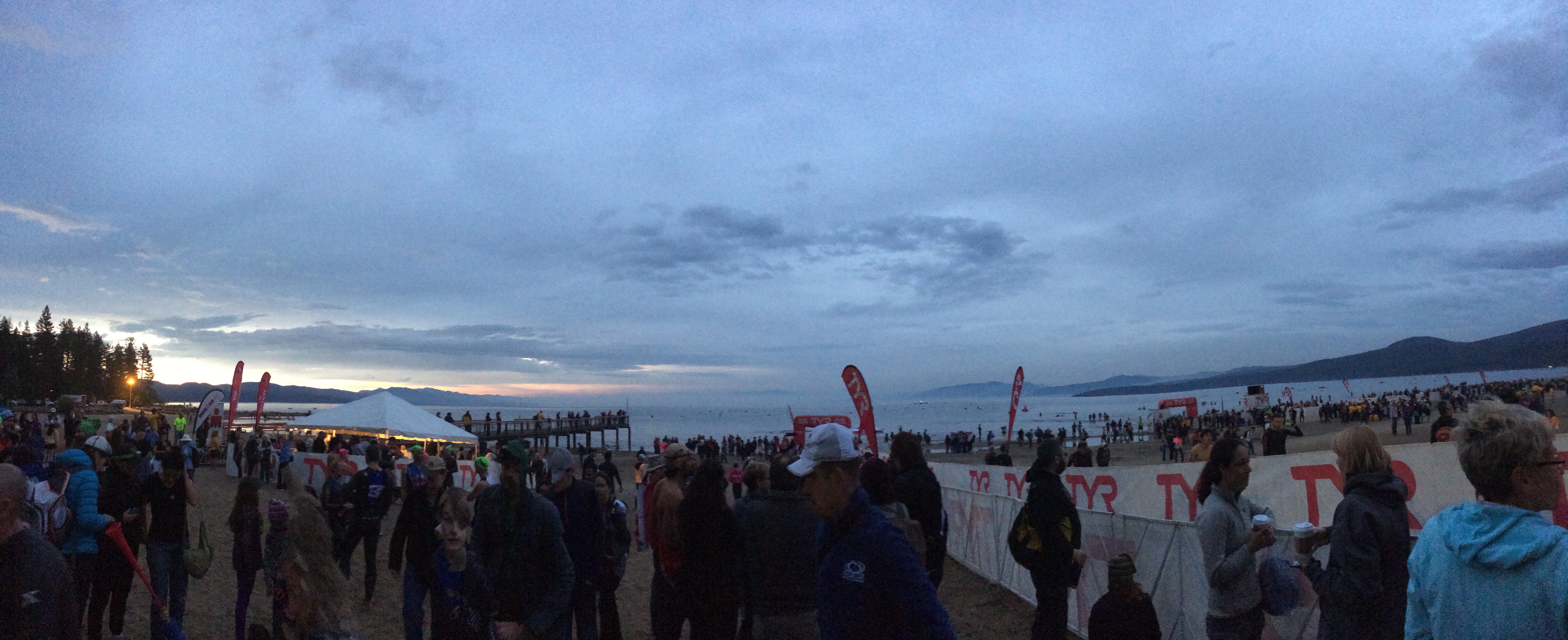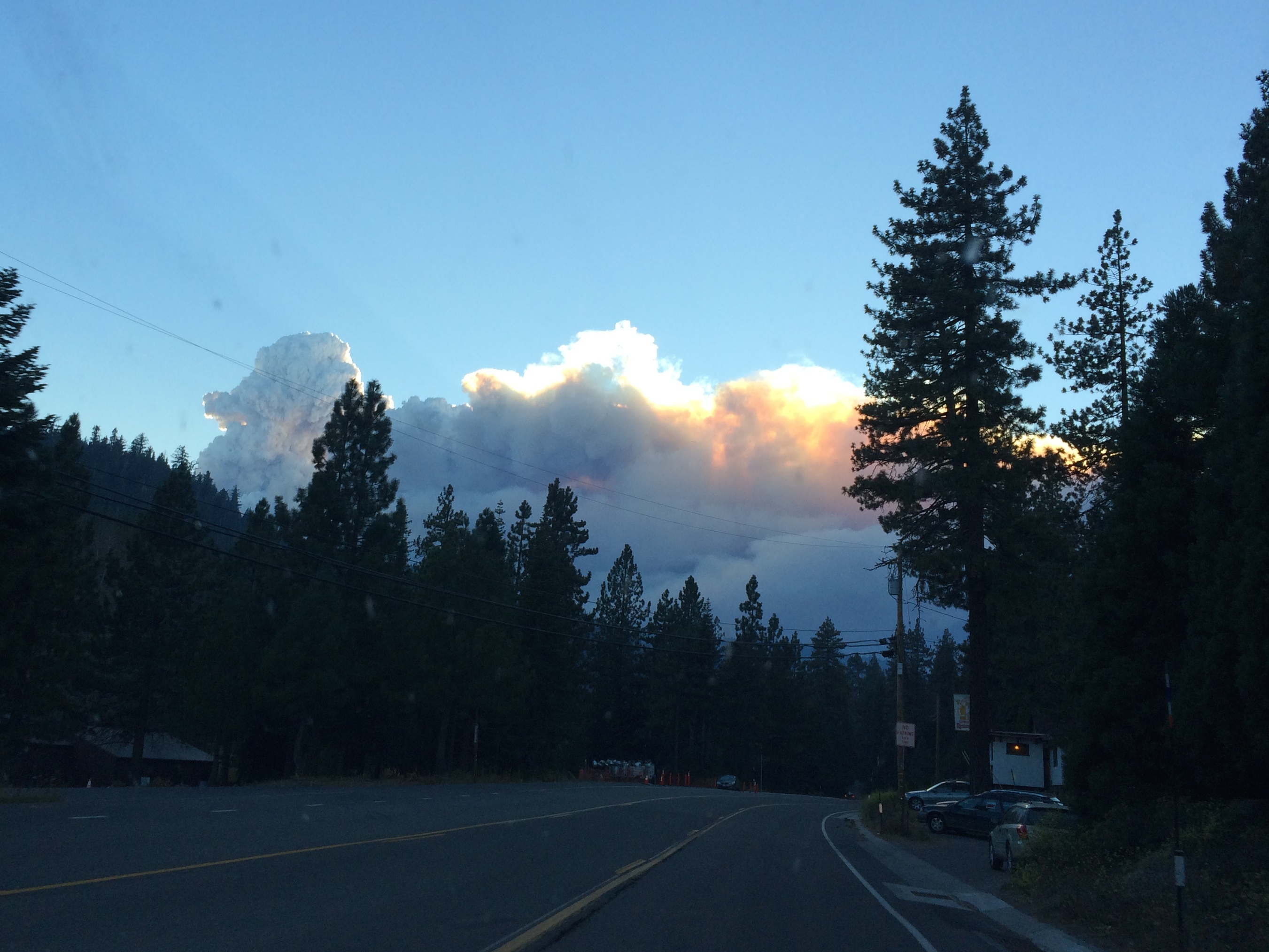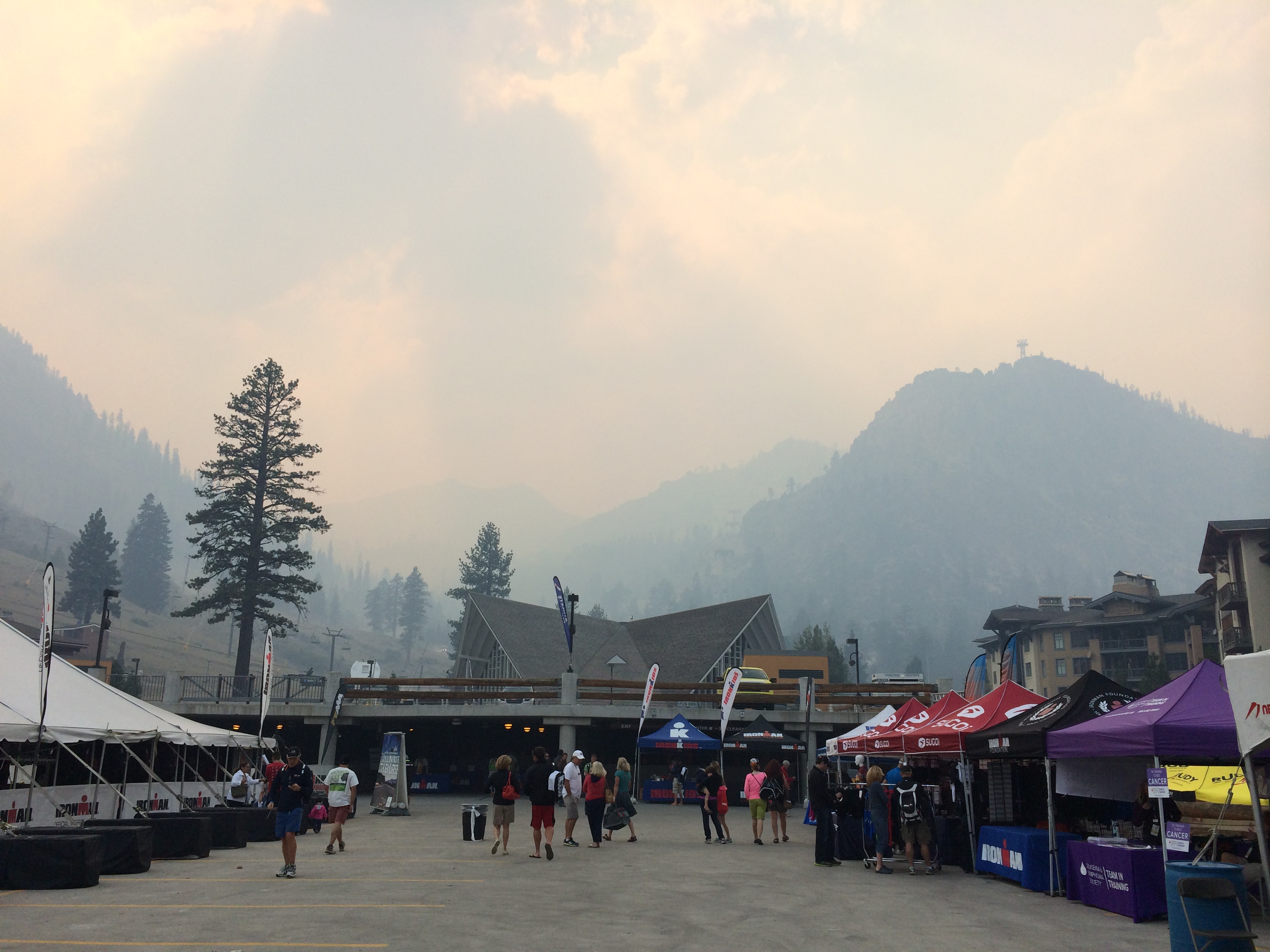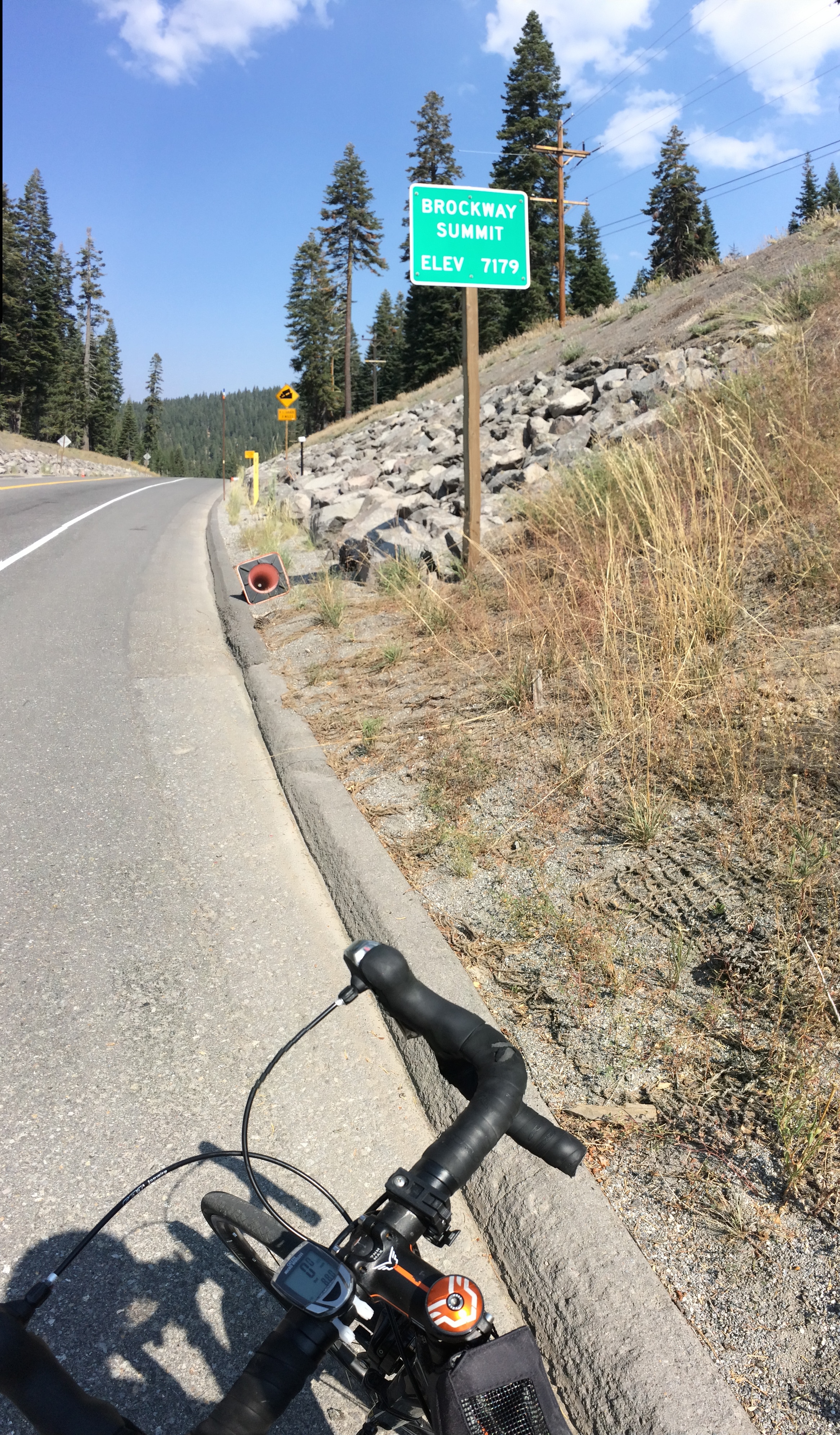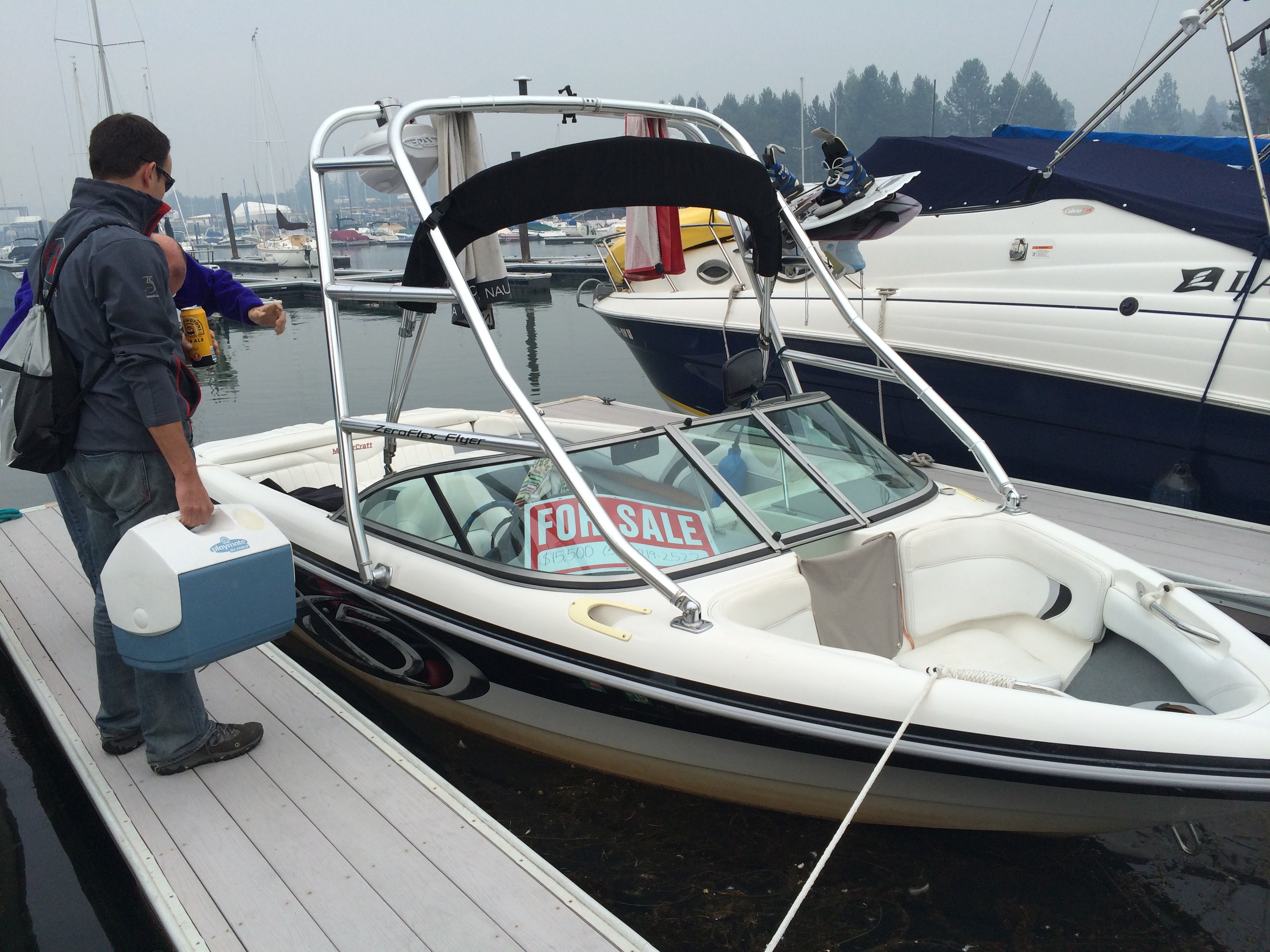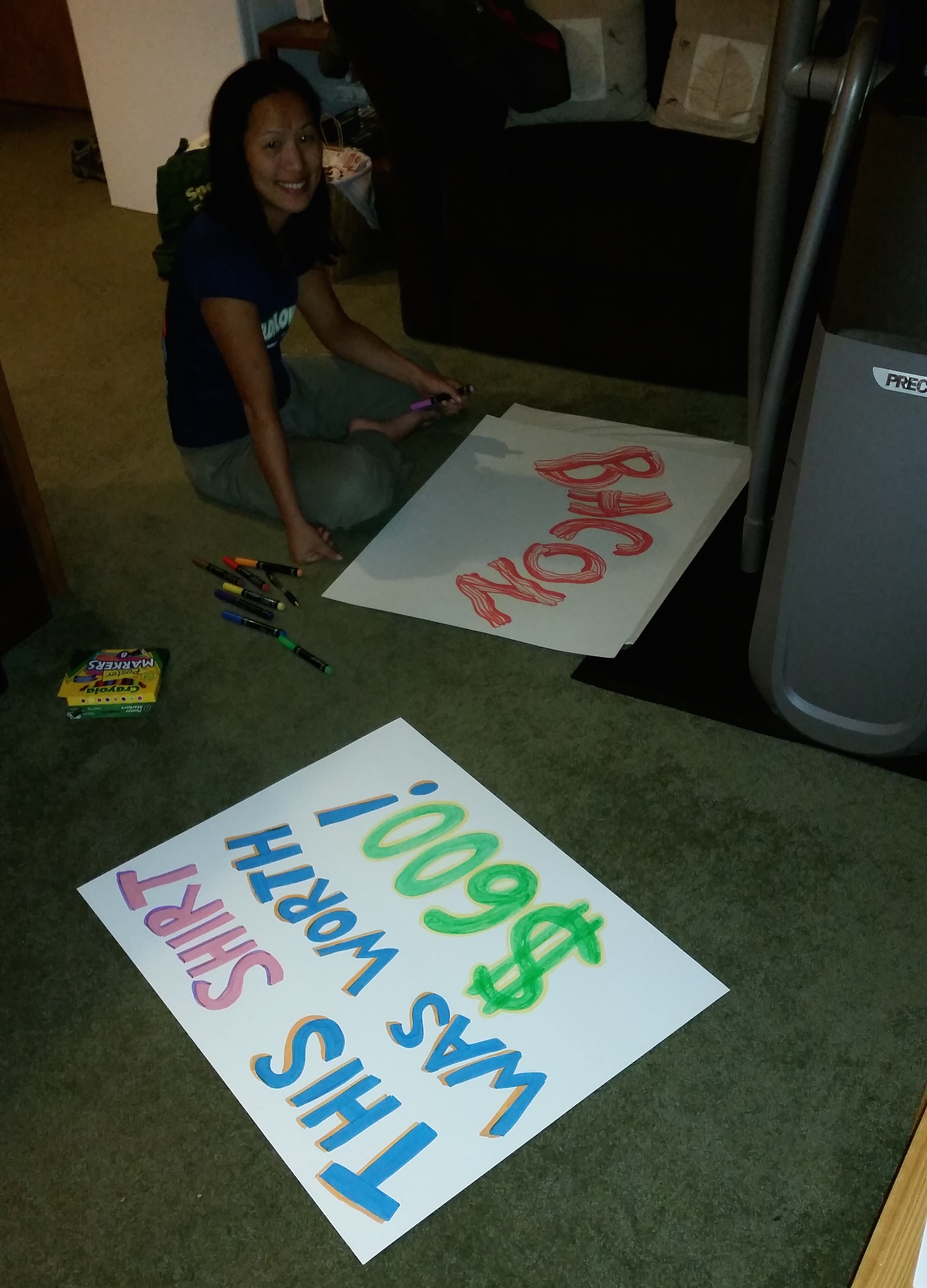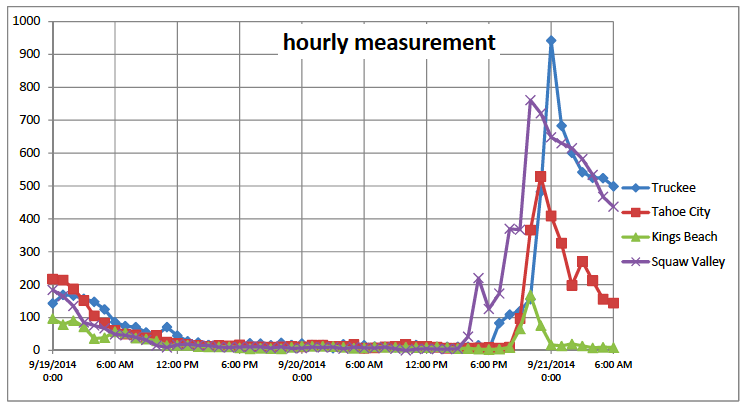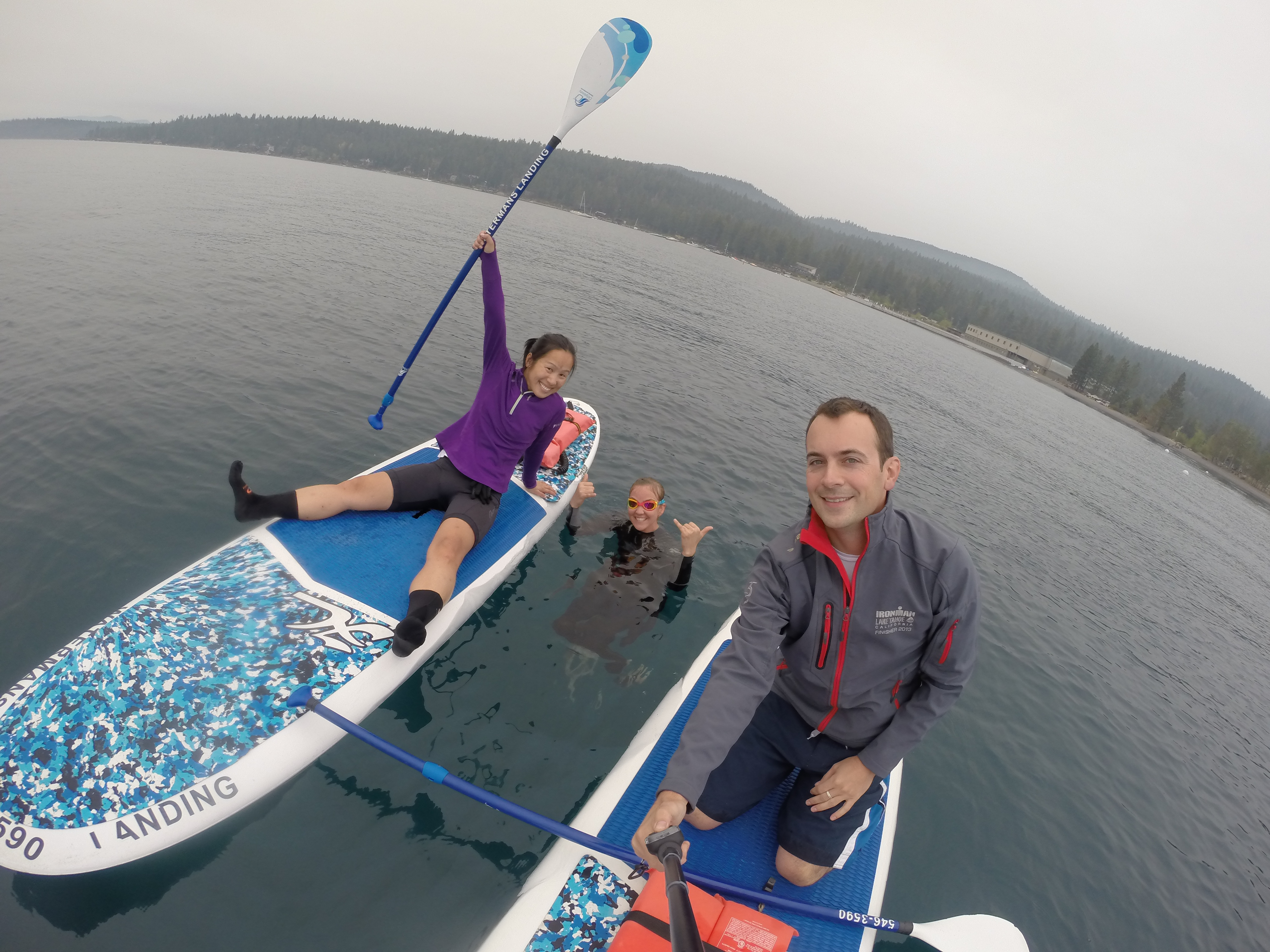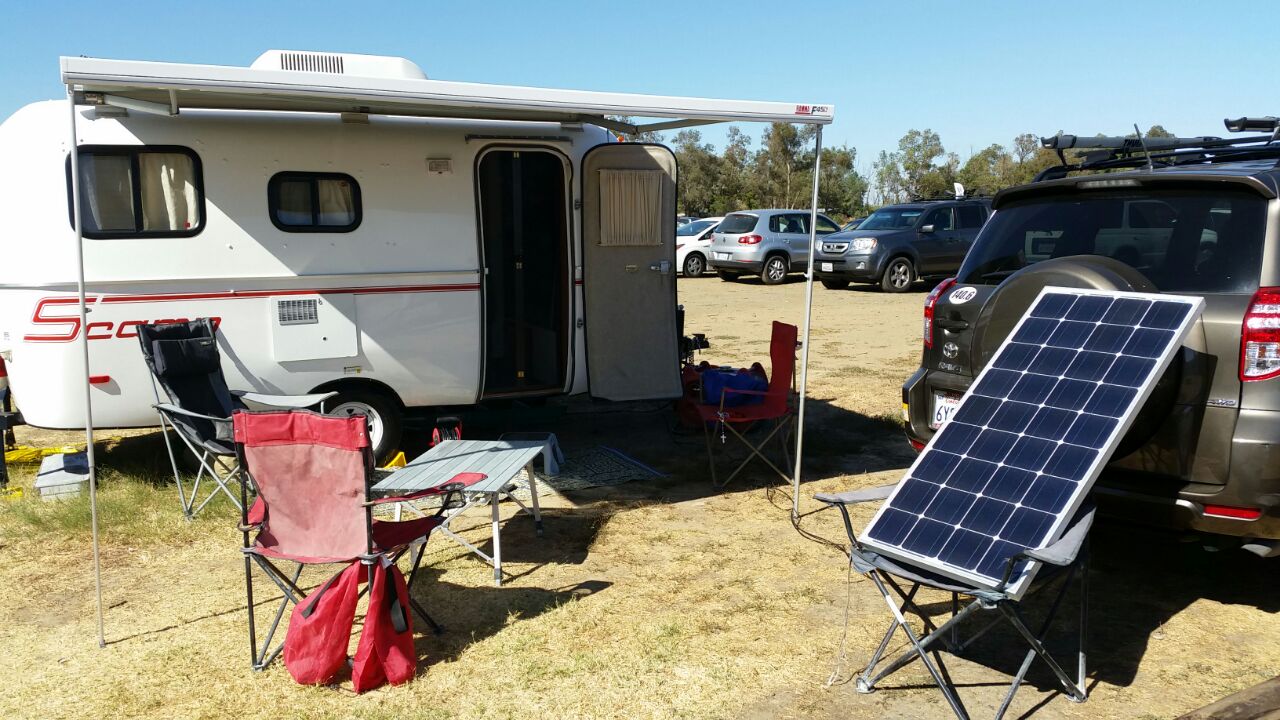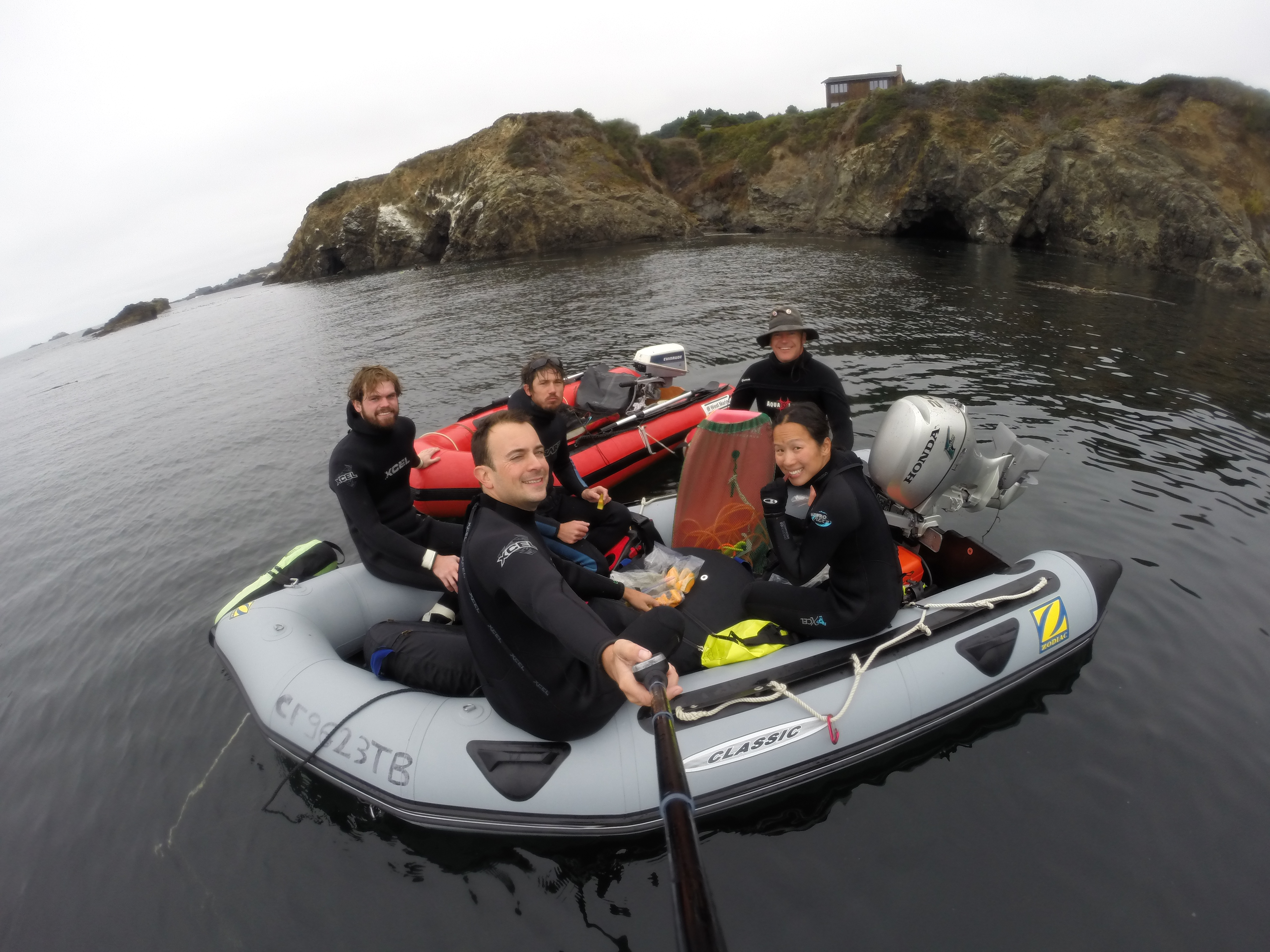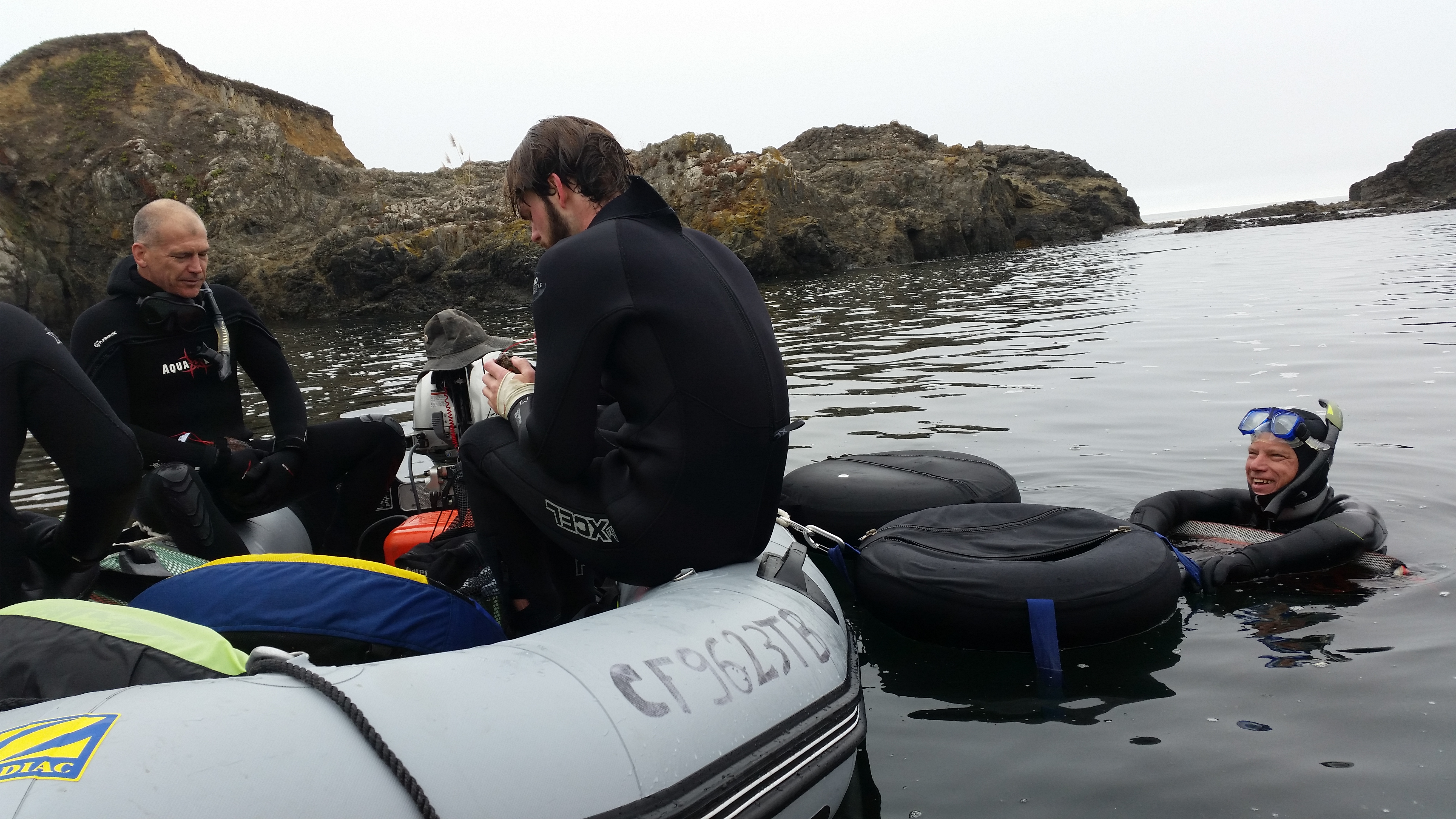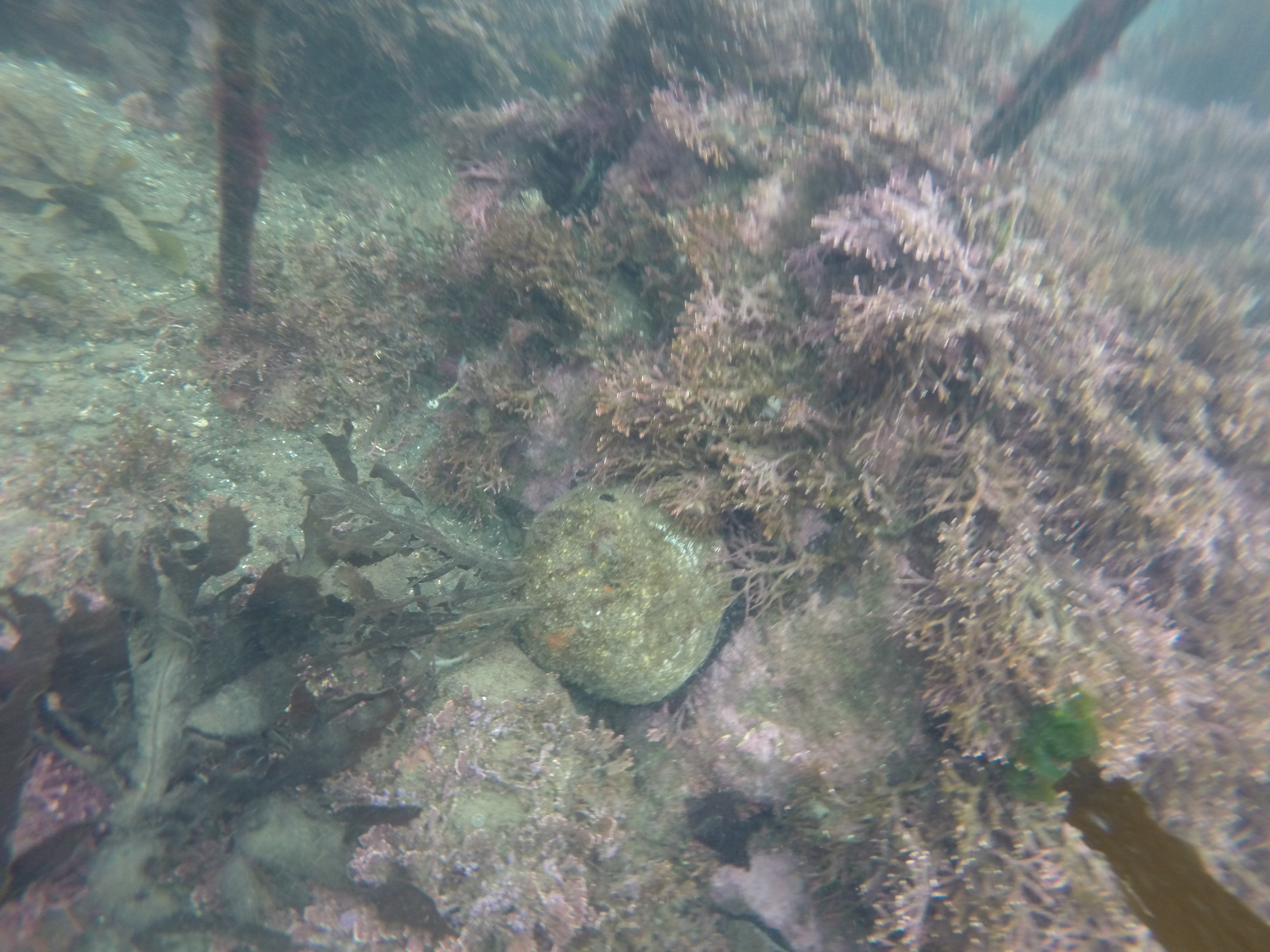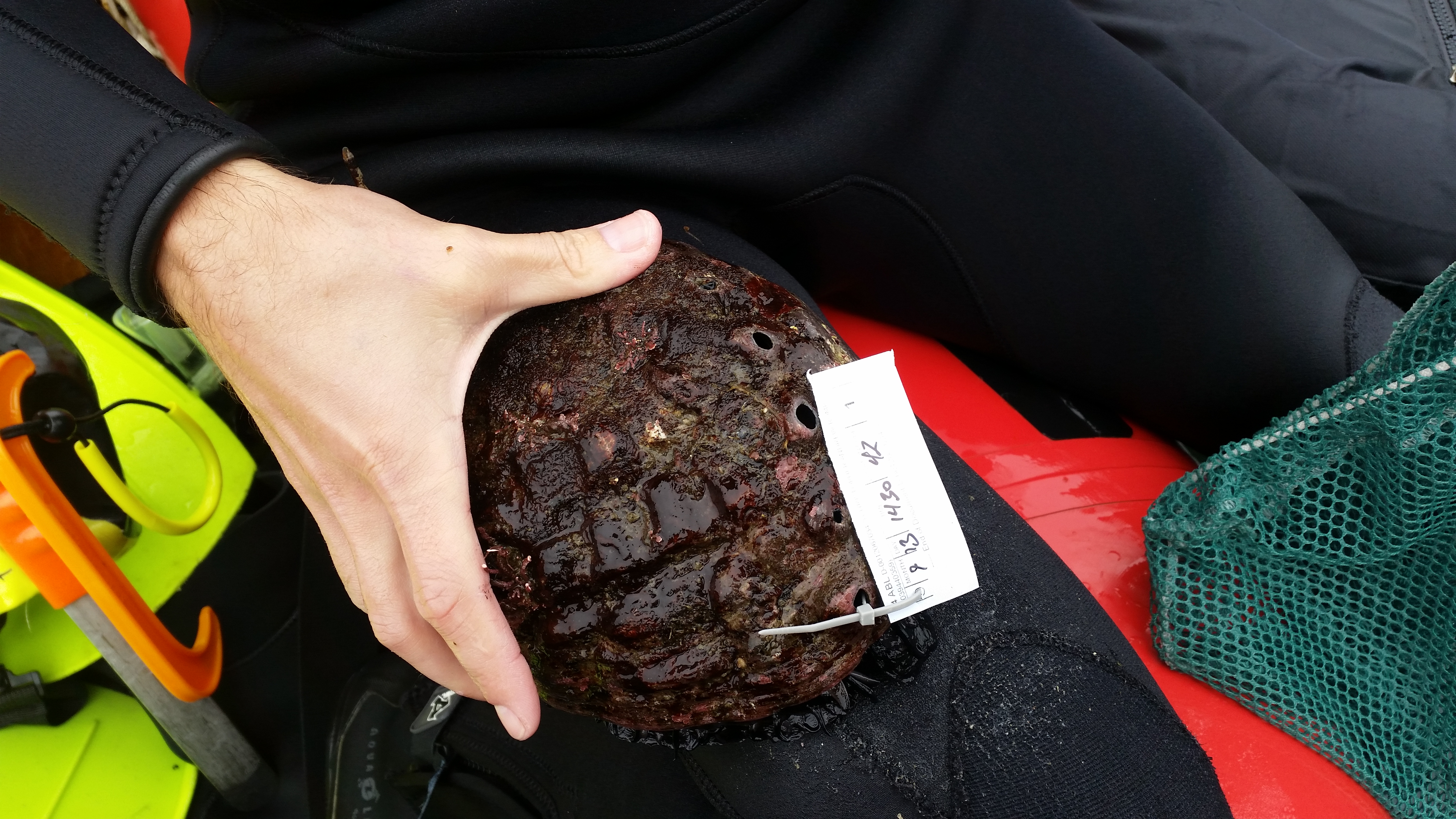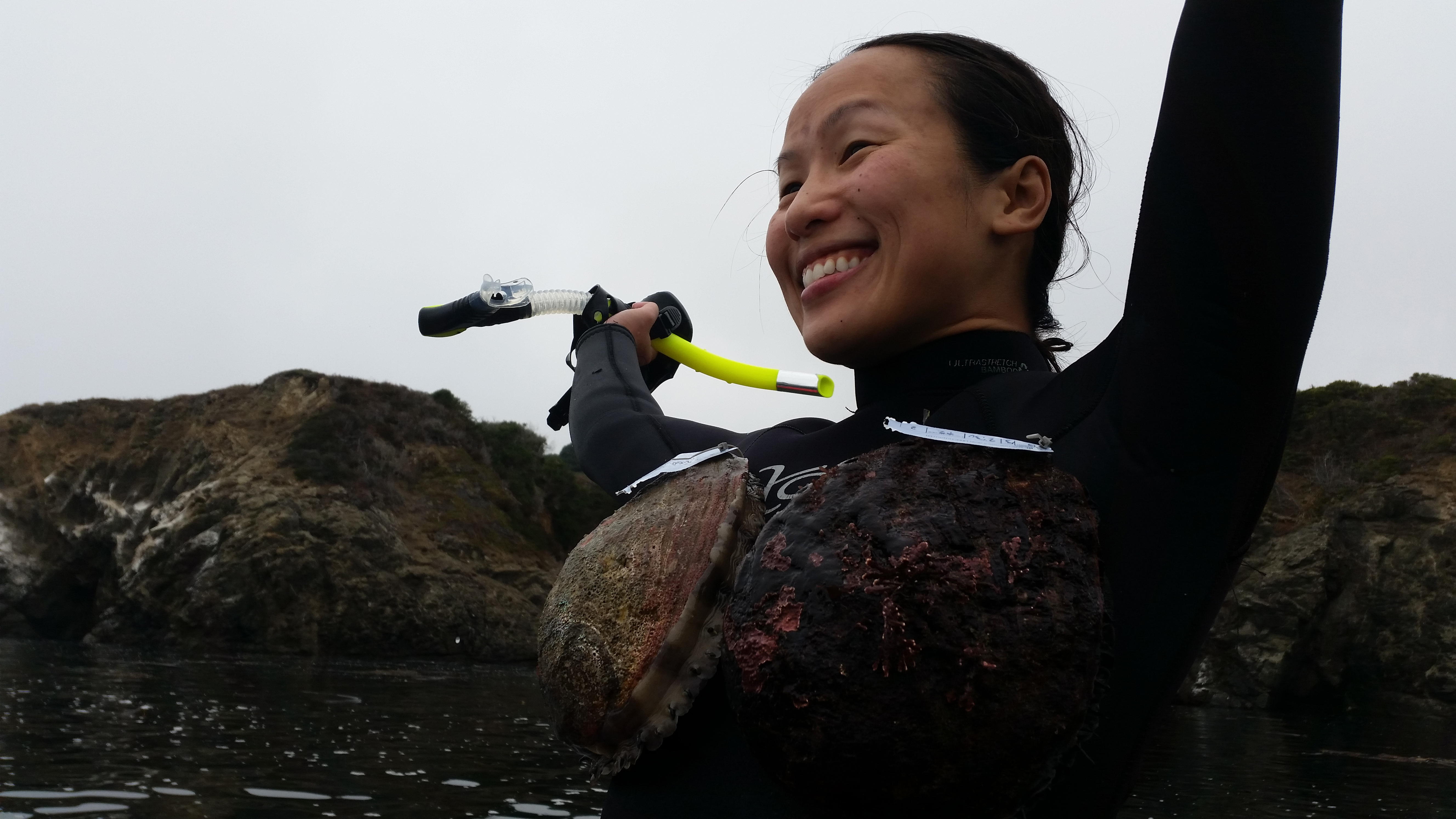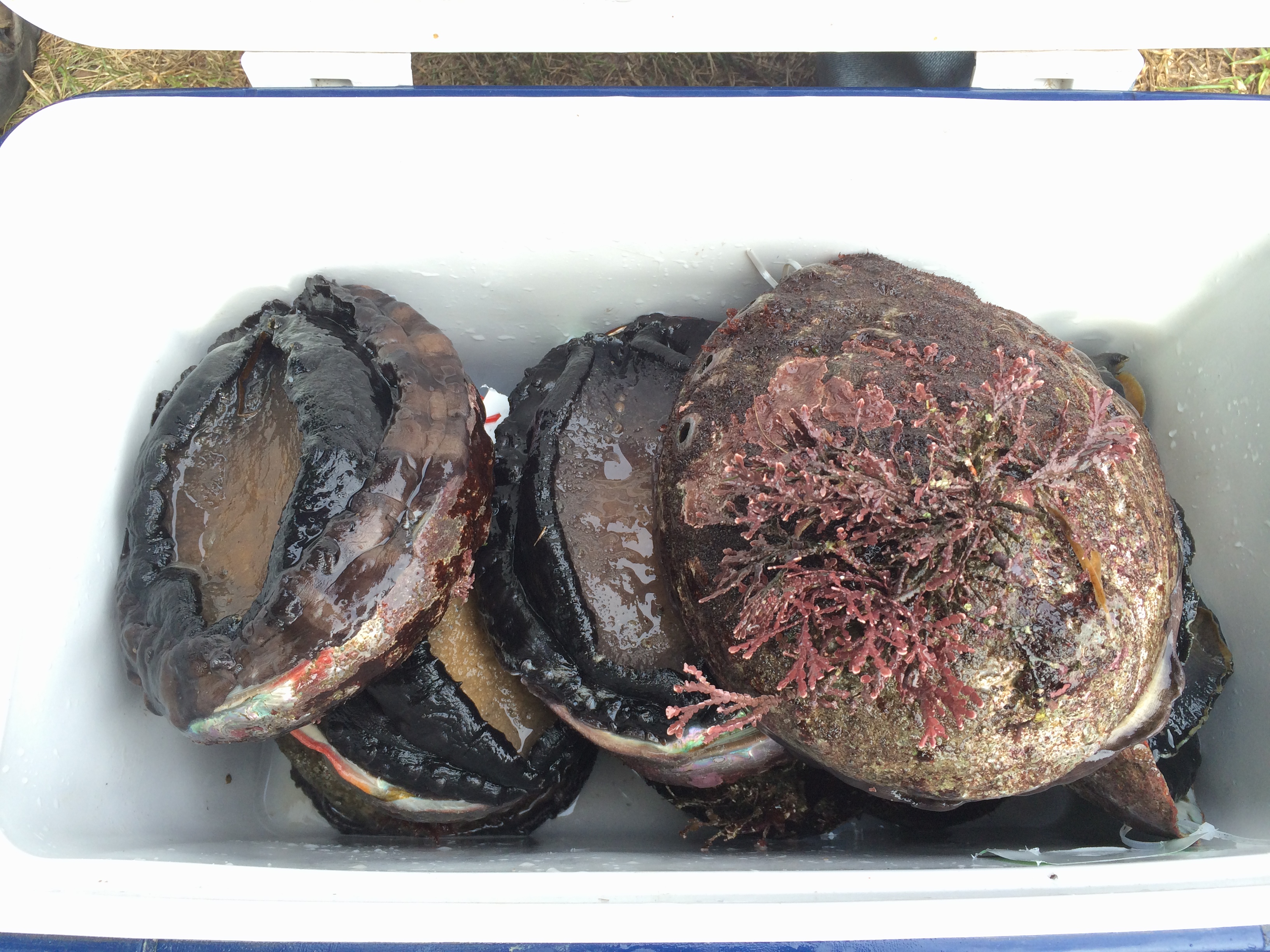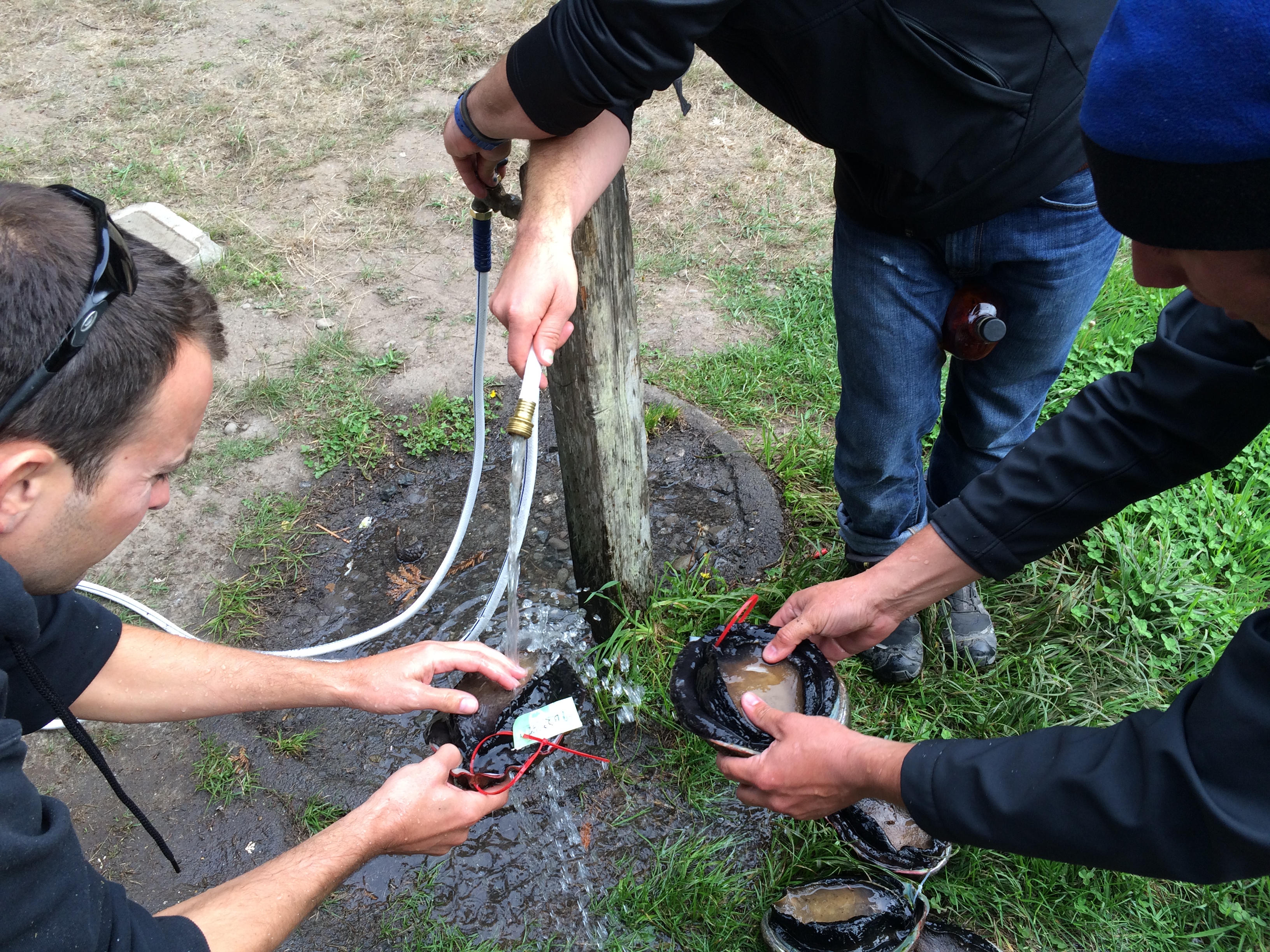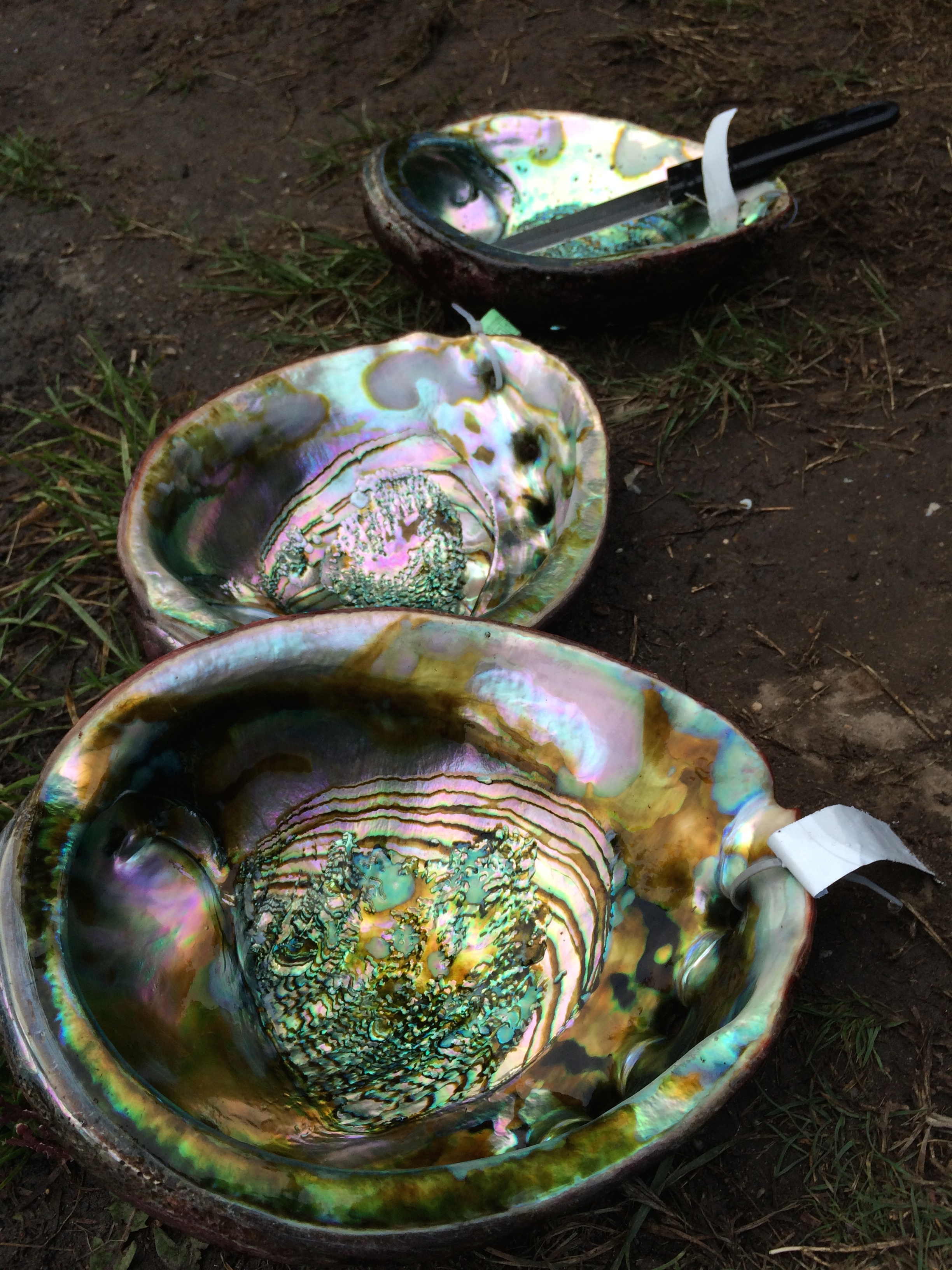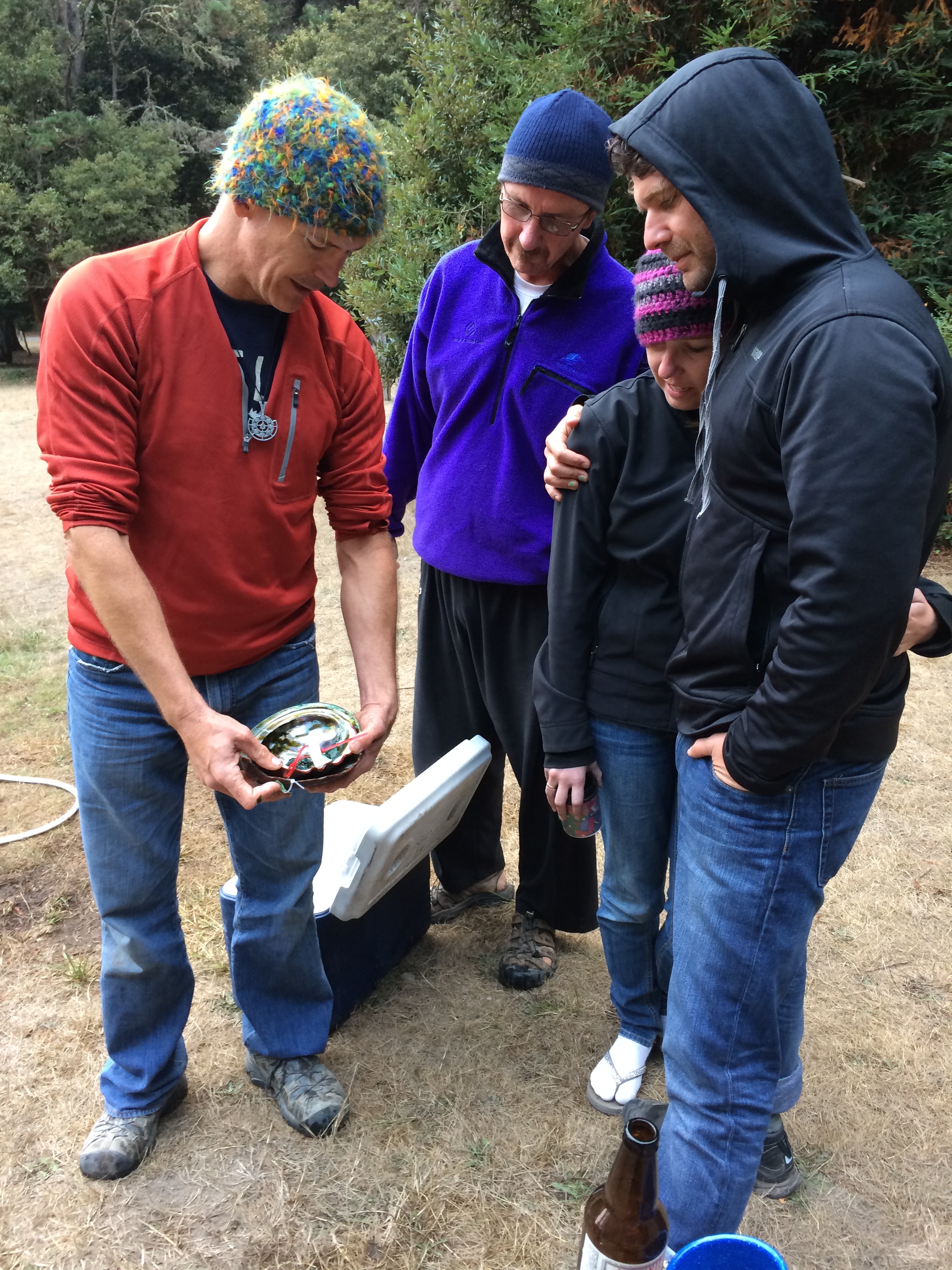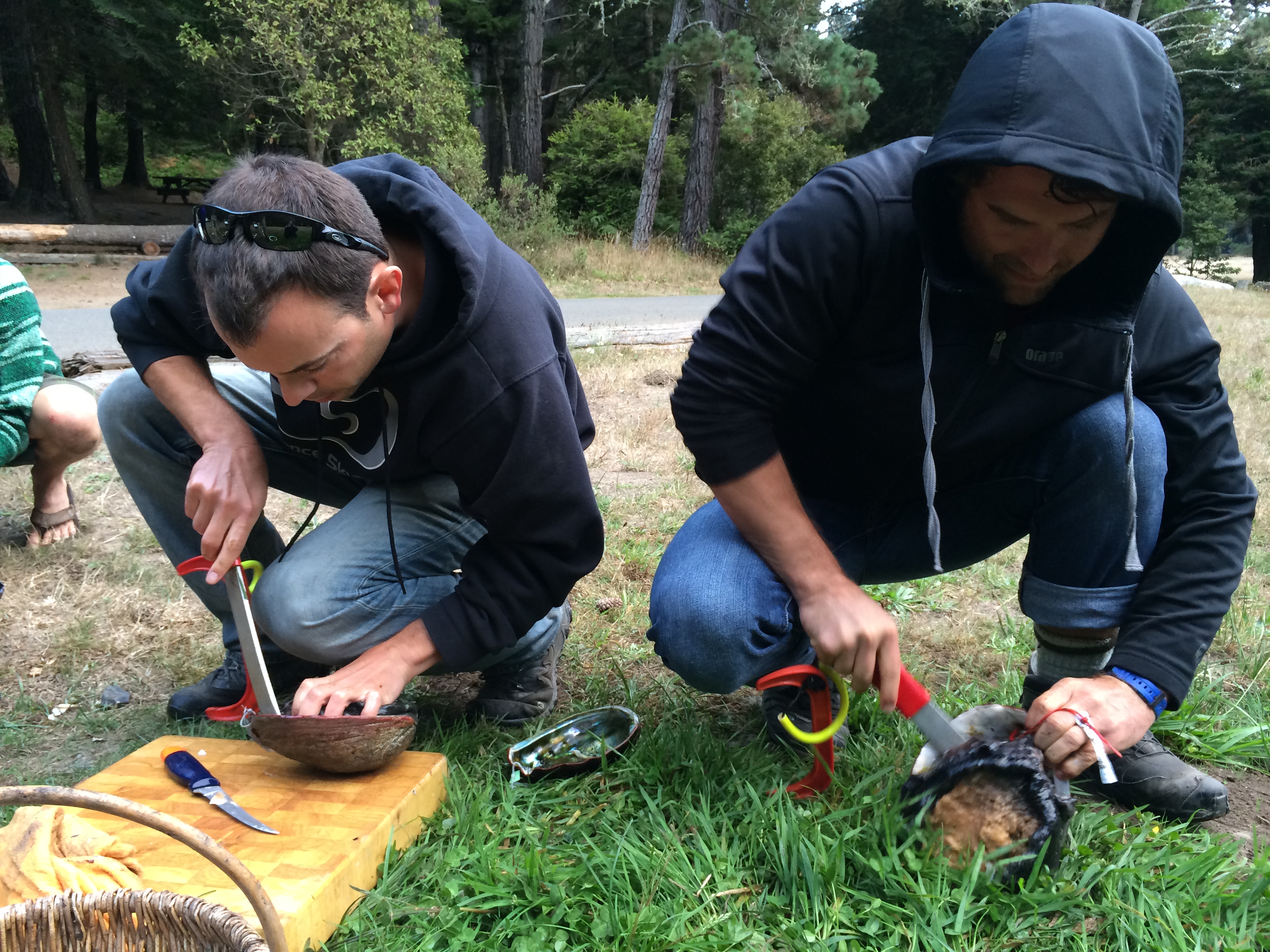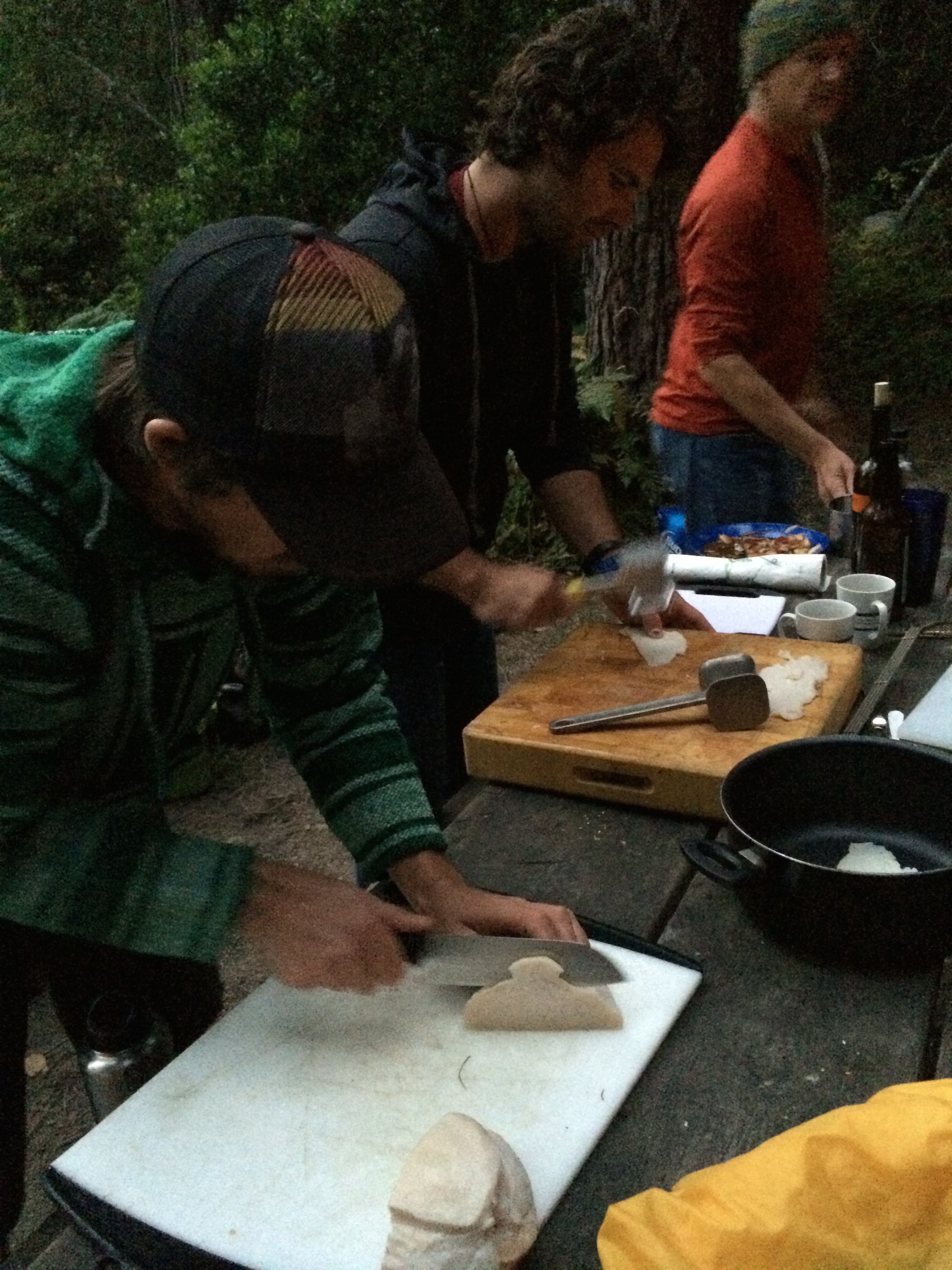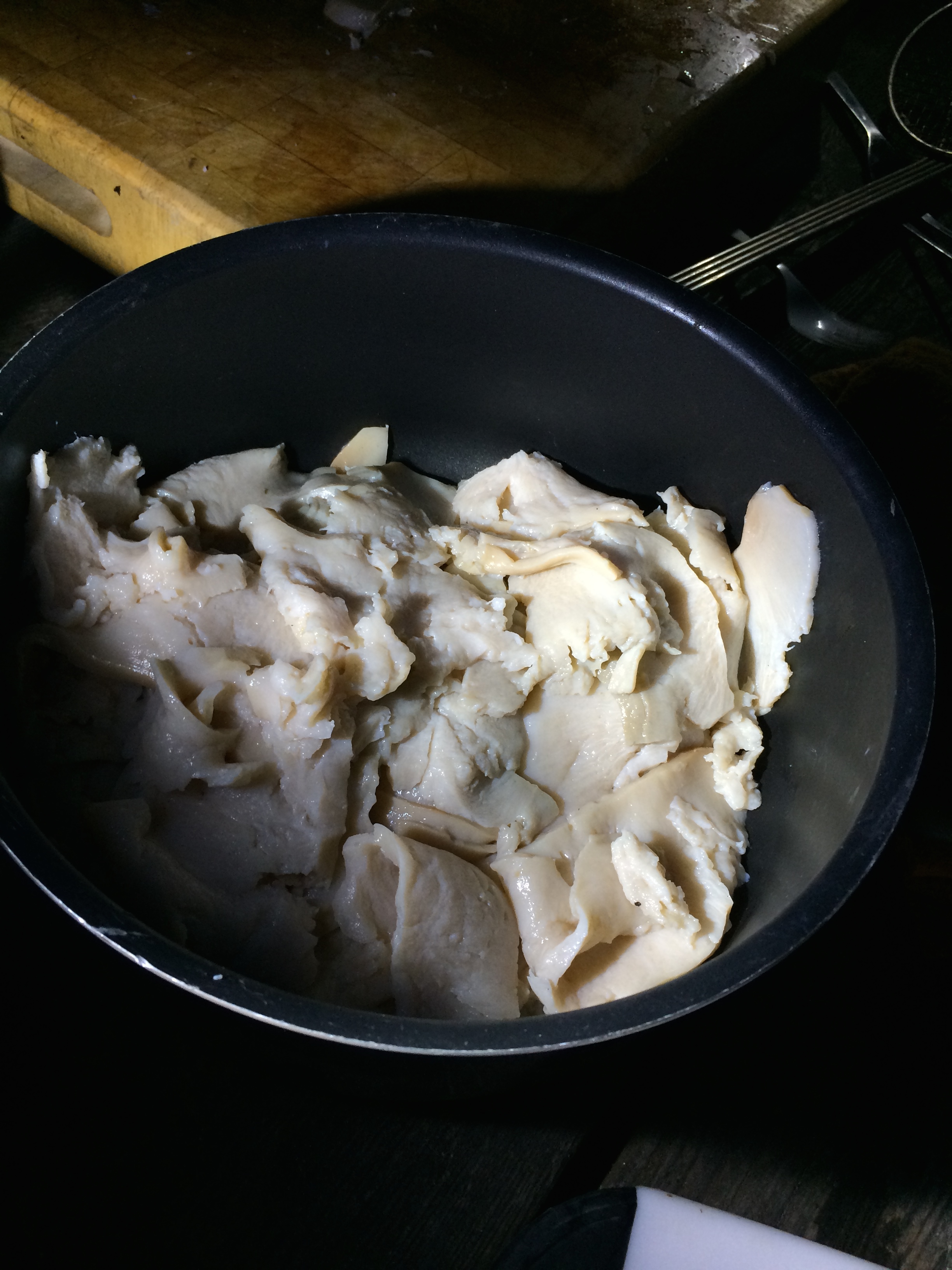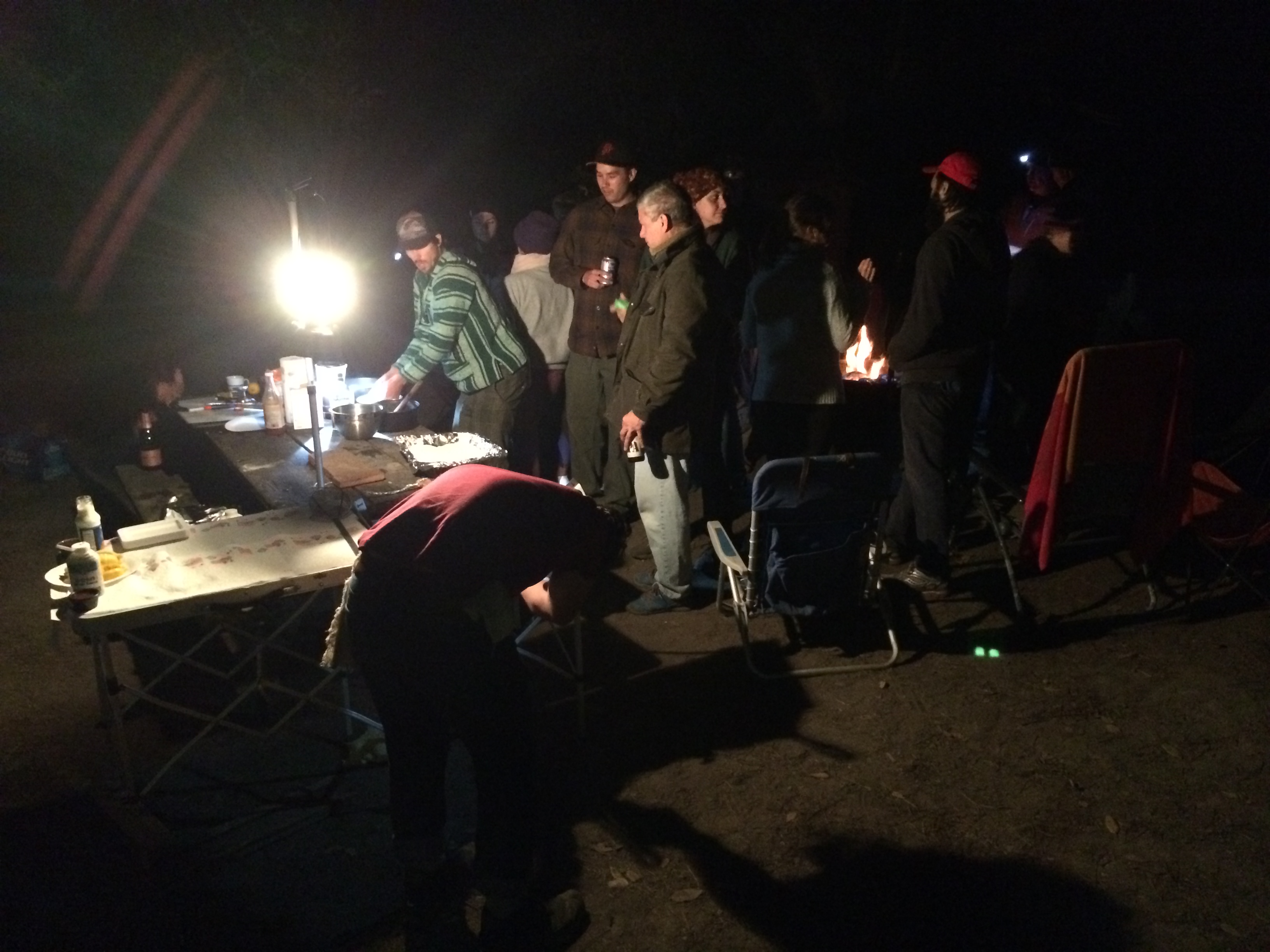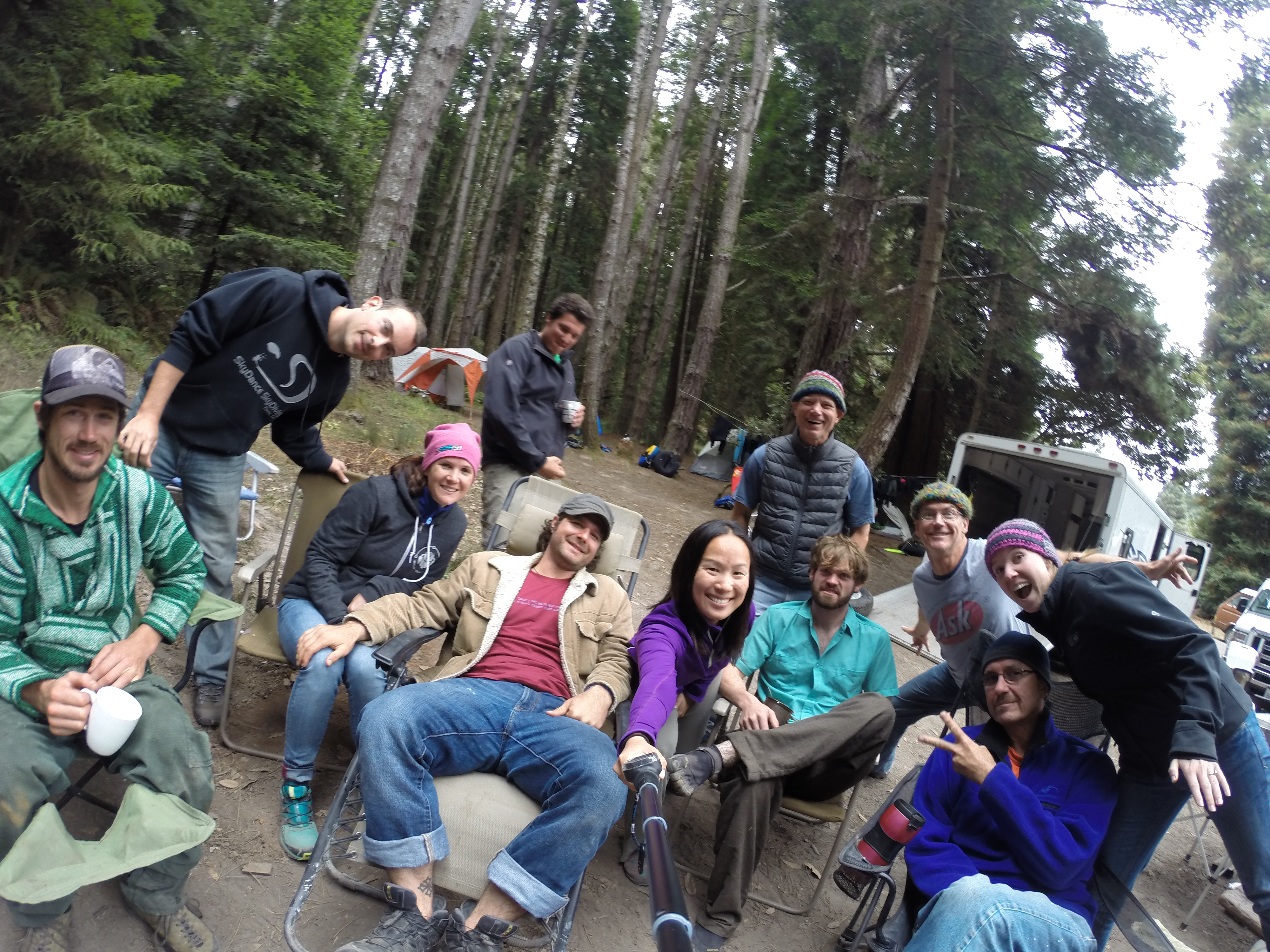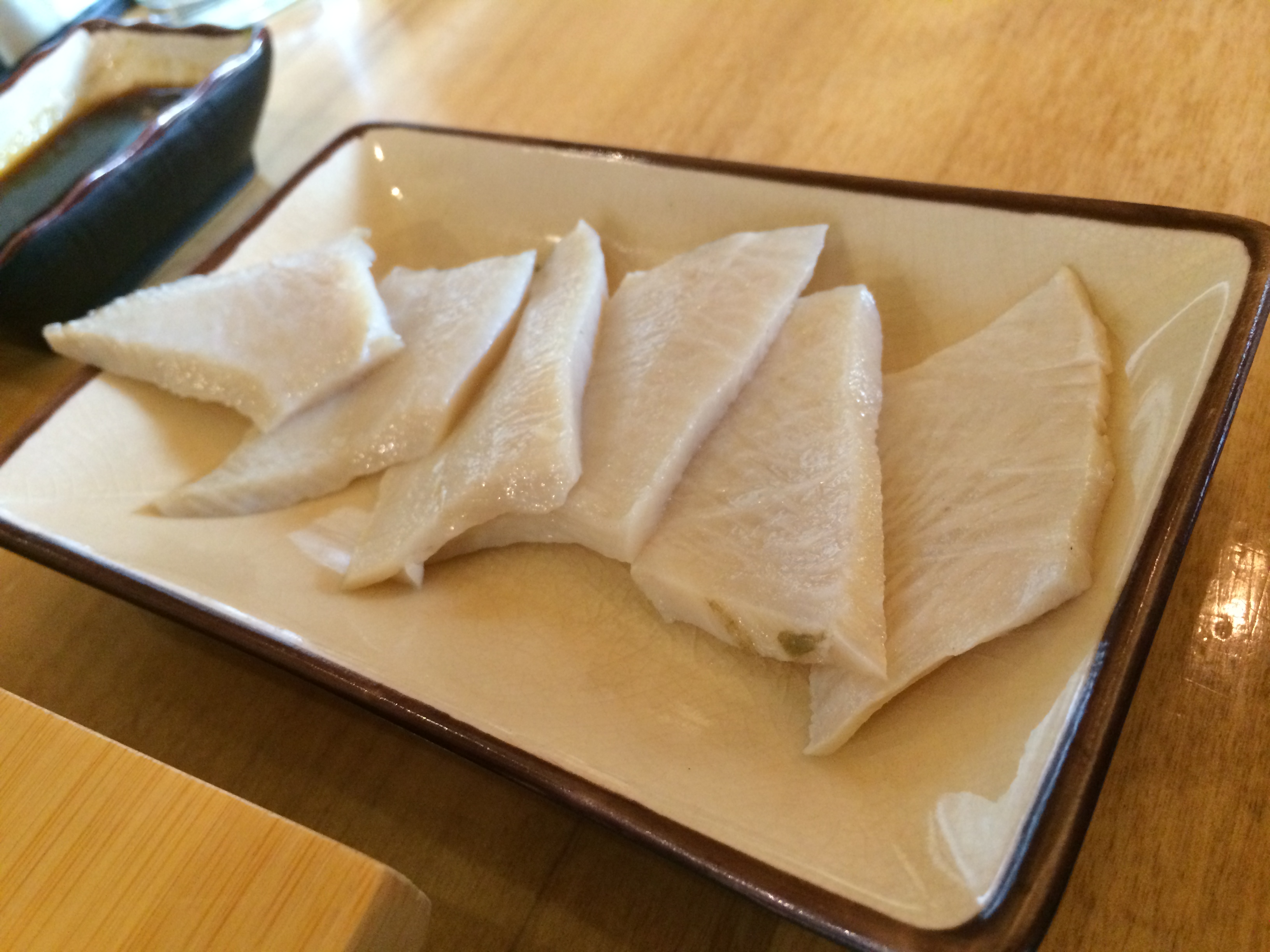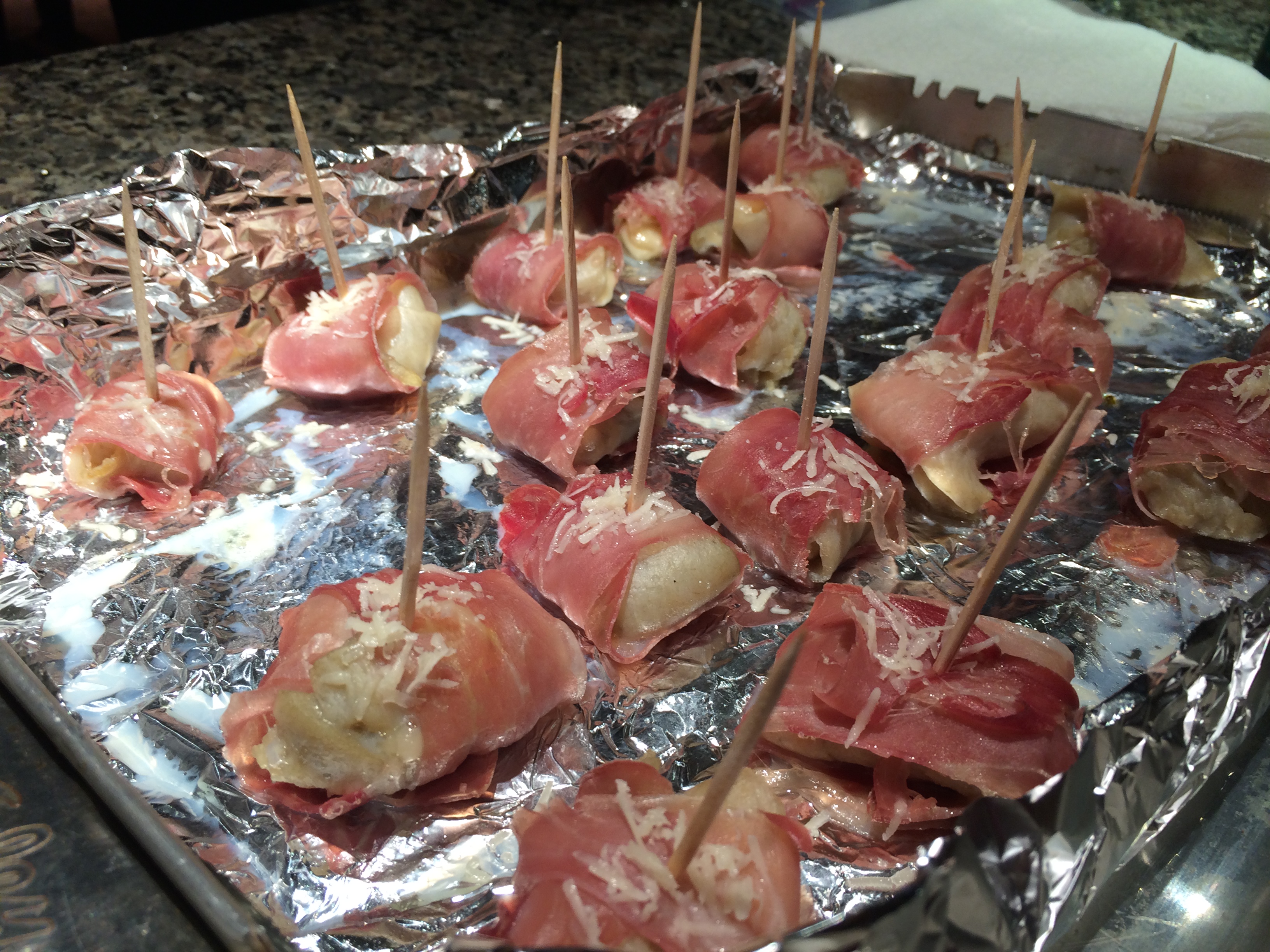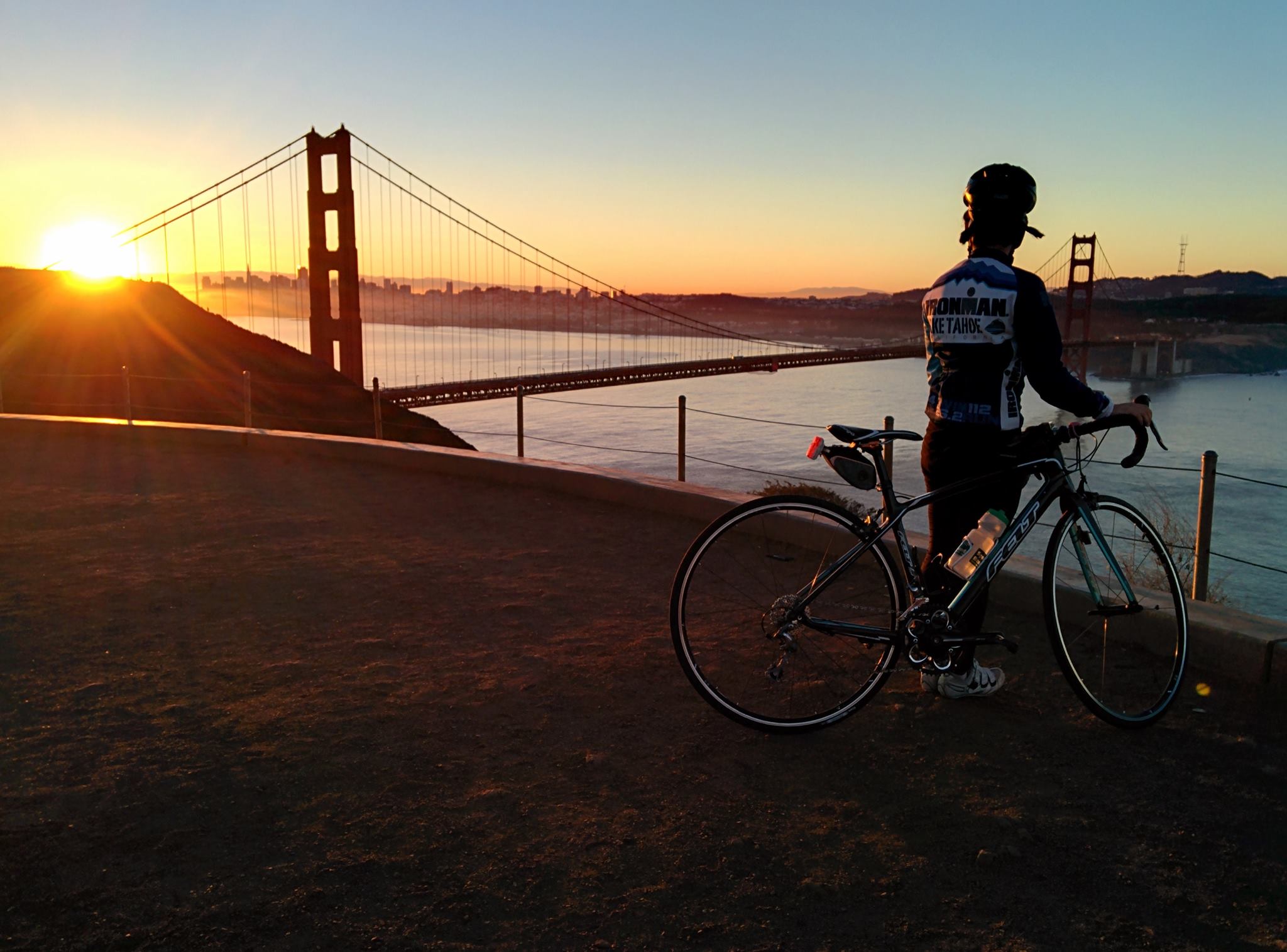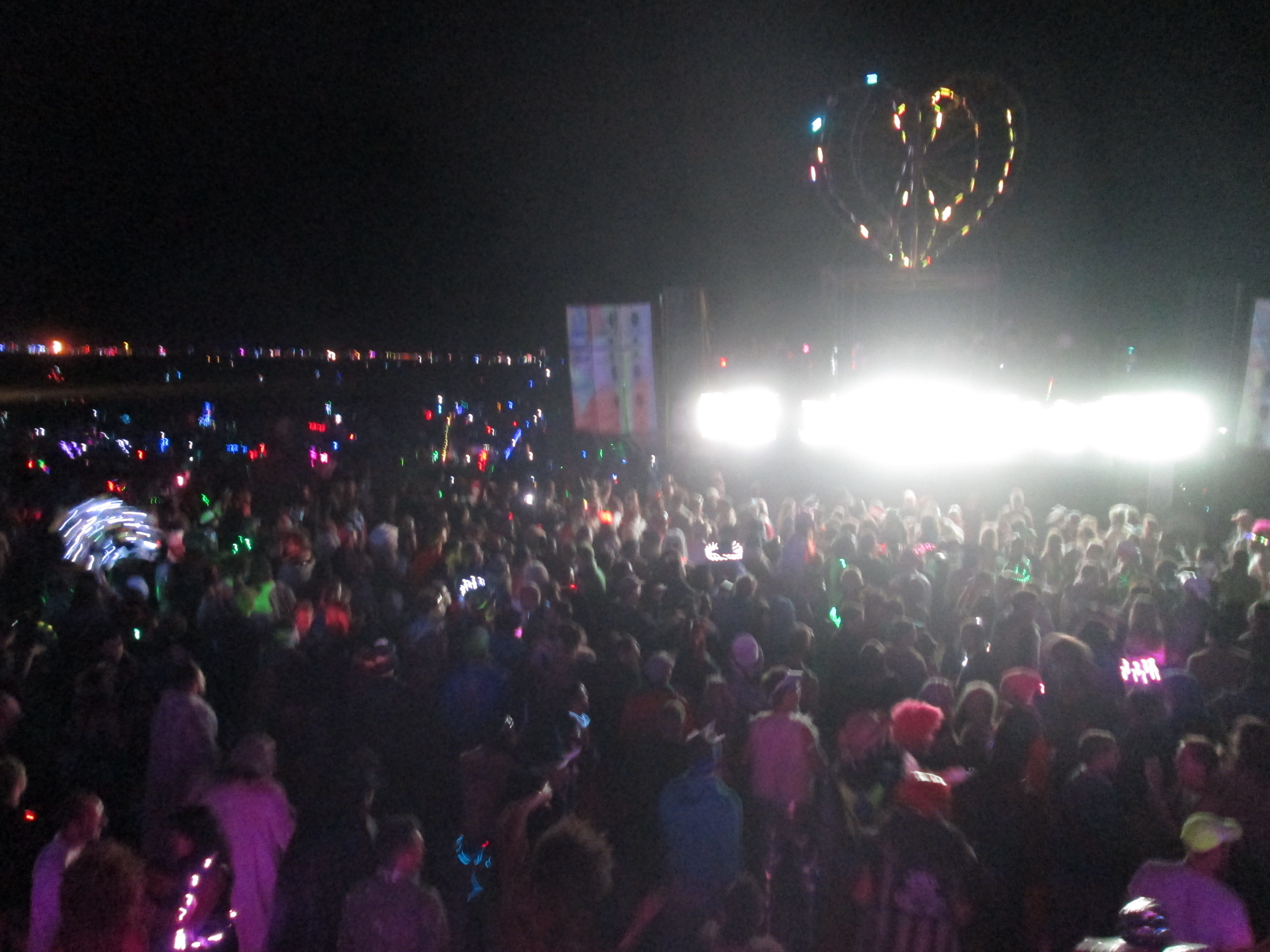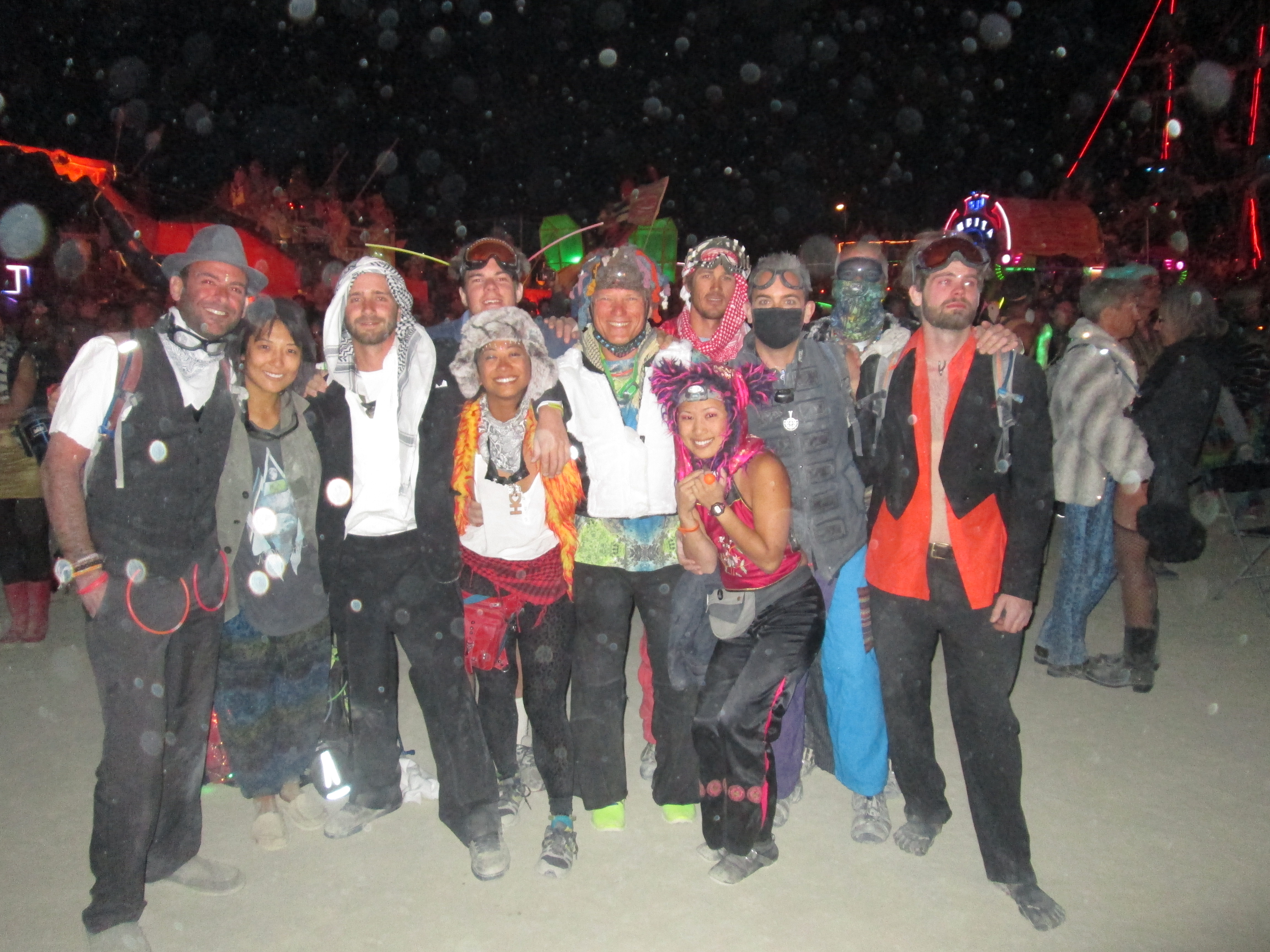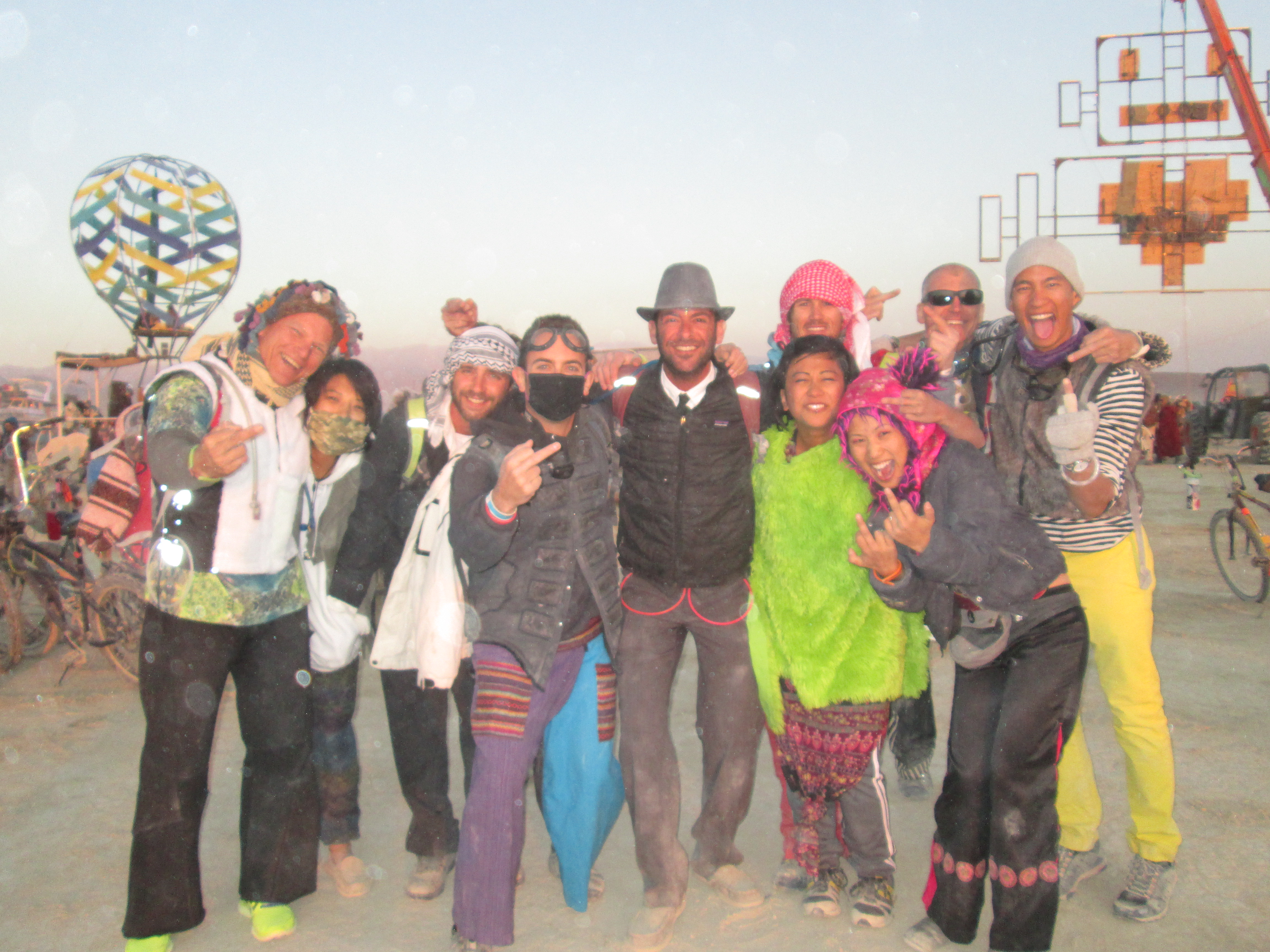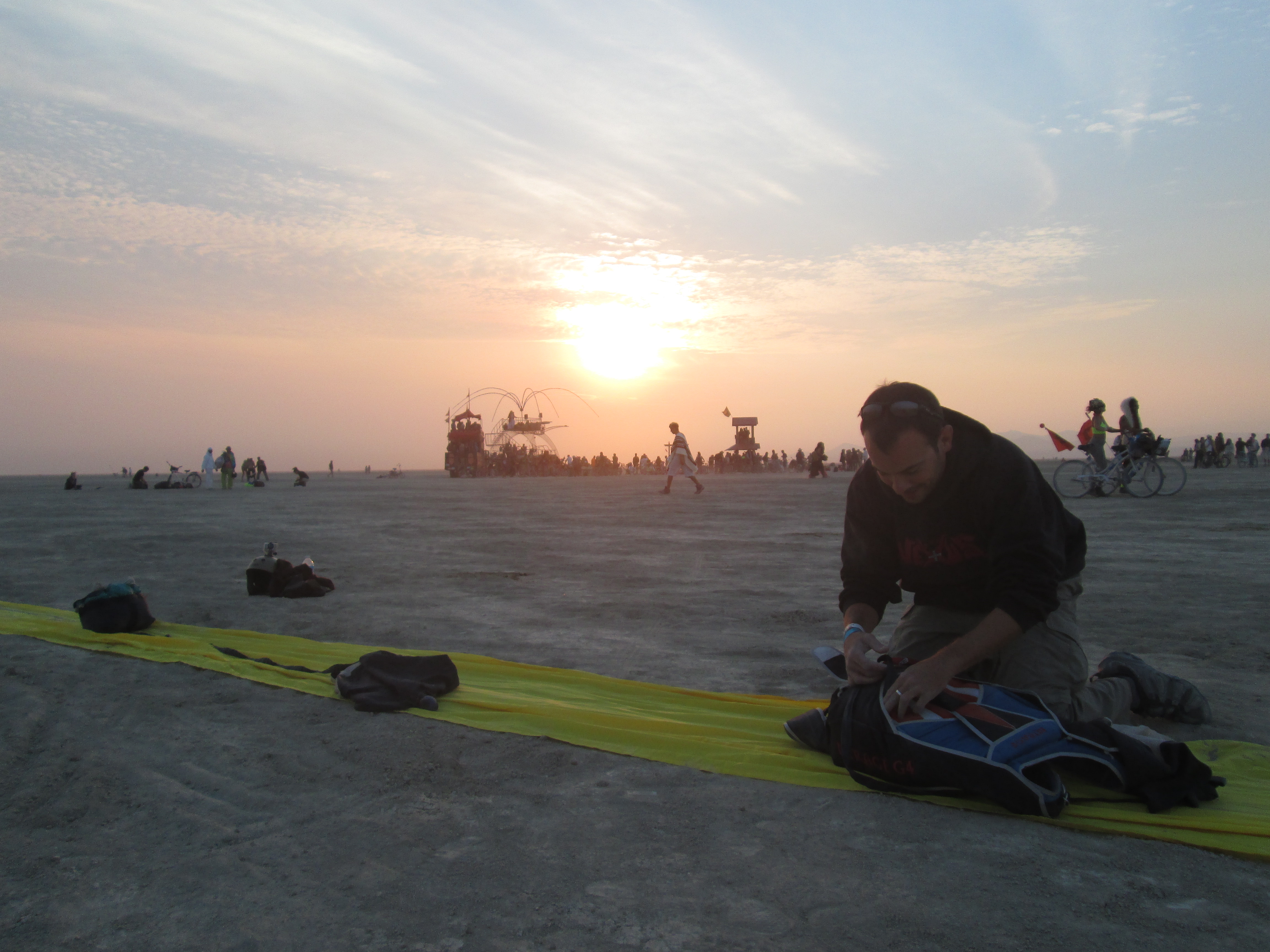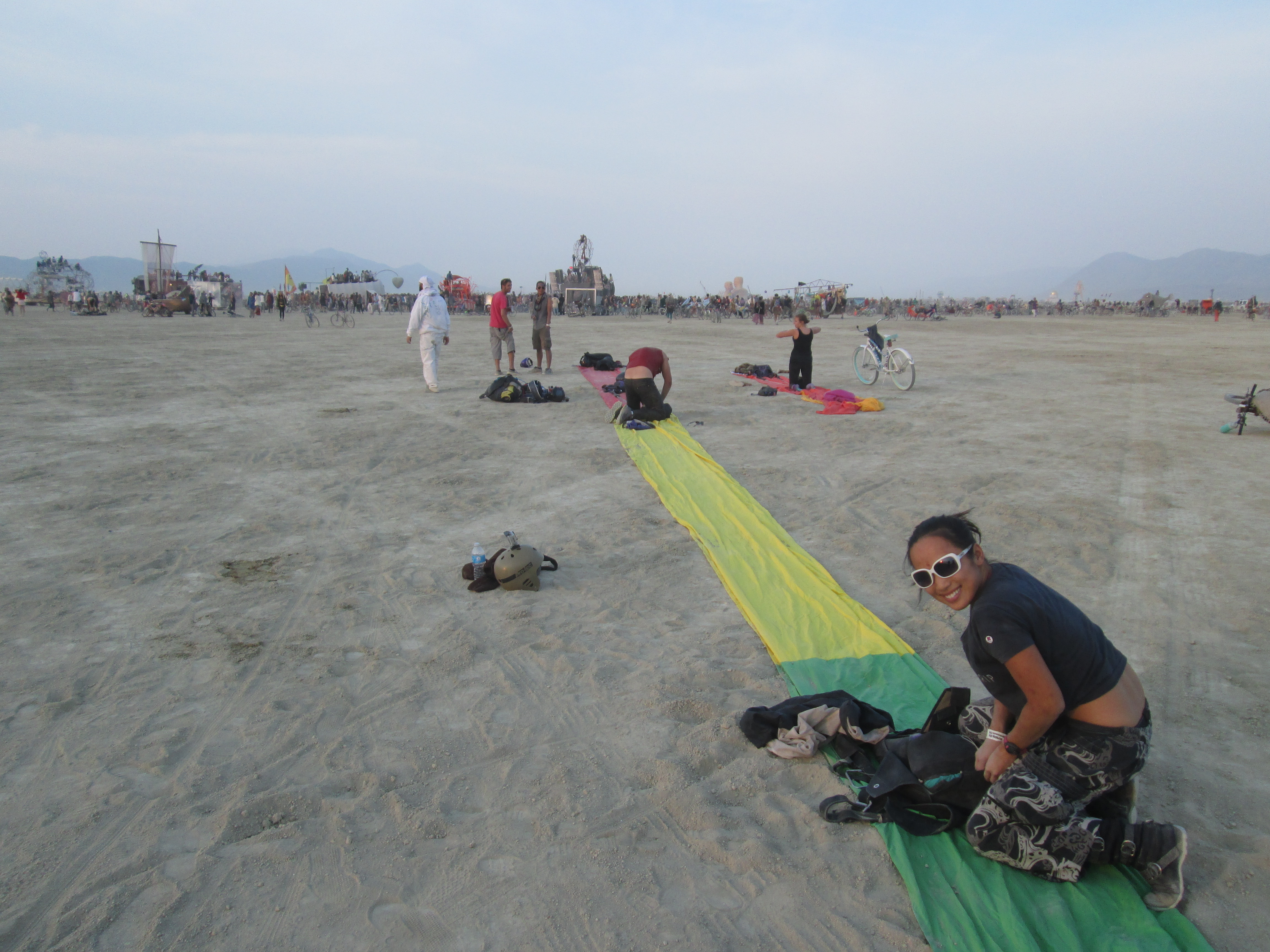Driving north for only half a day completely transformed our surroundings with Wyoming’s alpine mountains, dense forests, year-round snow, and countless lakes replacing Southern Utah’s endless deserts, dry canyons, and wind-sculpted rock formations. Although quite the opposite of where we’d spent the last 2.5 weeks, it was not difficult to fall in love with Grand Teton National Park.
We left Salt Lake City in the afternoon and arrived in The Grand Teton long after dark. As we made our way up toward Wyoming, we even ran into other Scampers!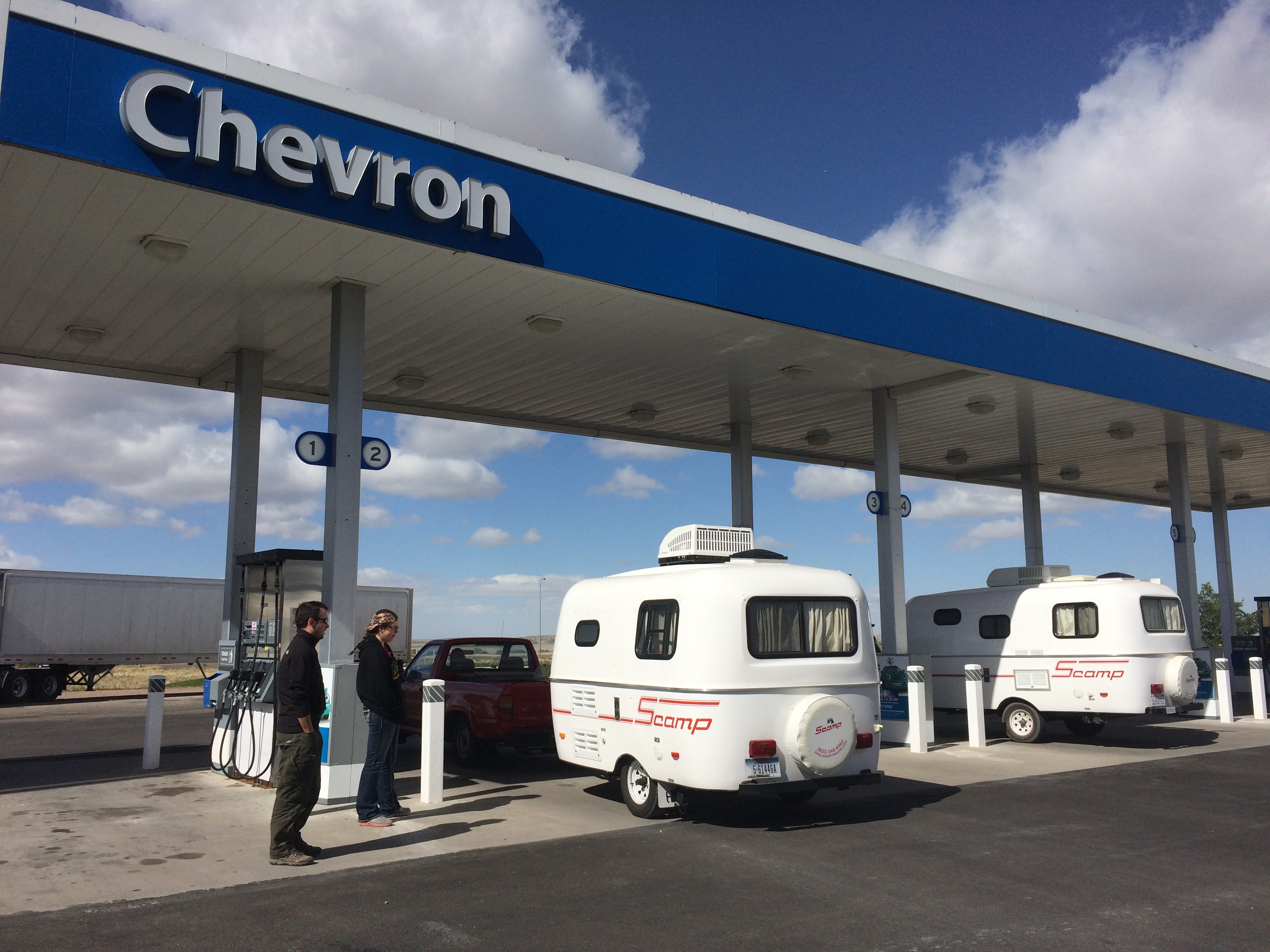 The mother-daughter pair who owns this 2014 13′ Scamp spend a lot of time on the road and just purchased their Scamp earlier this year. The daughter did not know of our next destination and coincidentally told us that The Grand Teton was her favorite place.
The mother-daughter pair who owns this 2014 13′ Scamp spend a lot of time on the road and just purchased their Scamp earlier this year. The daughter did not know of our next destination and coincidentally told us that The Grand Teton was her favorite place.
Thanks to research and the internet, I discovered one of the most picturesque boondocking sites with lovely backdrops of the entire Teton range off a random dirt forest road. I highly recommend camping here due to its remote location, vicinity to the park (Moran entrance), and its stellar views. Despite the site’s popularity, there was only one other tent pitched in the large campground when we arrived–again, another benefit to traveling during the off-season. We set up in the dark and eagerly awaited the view from our window the next morning: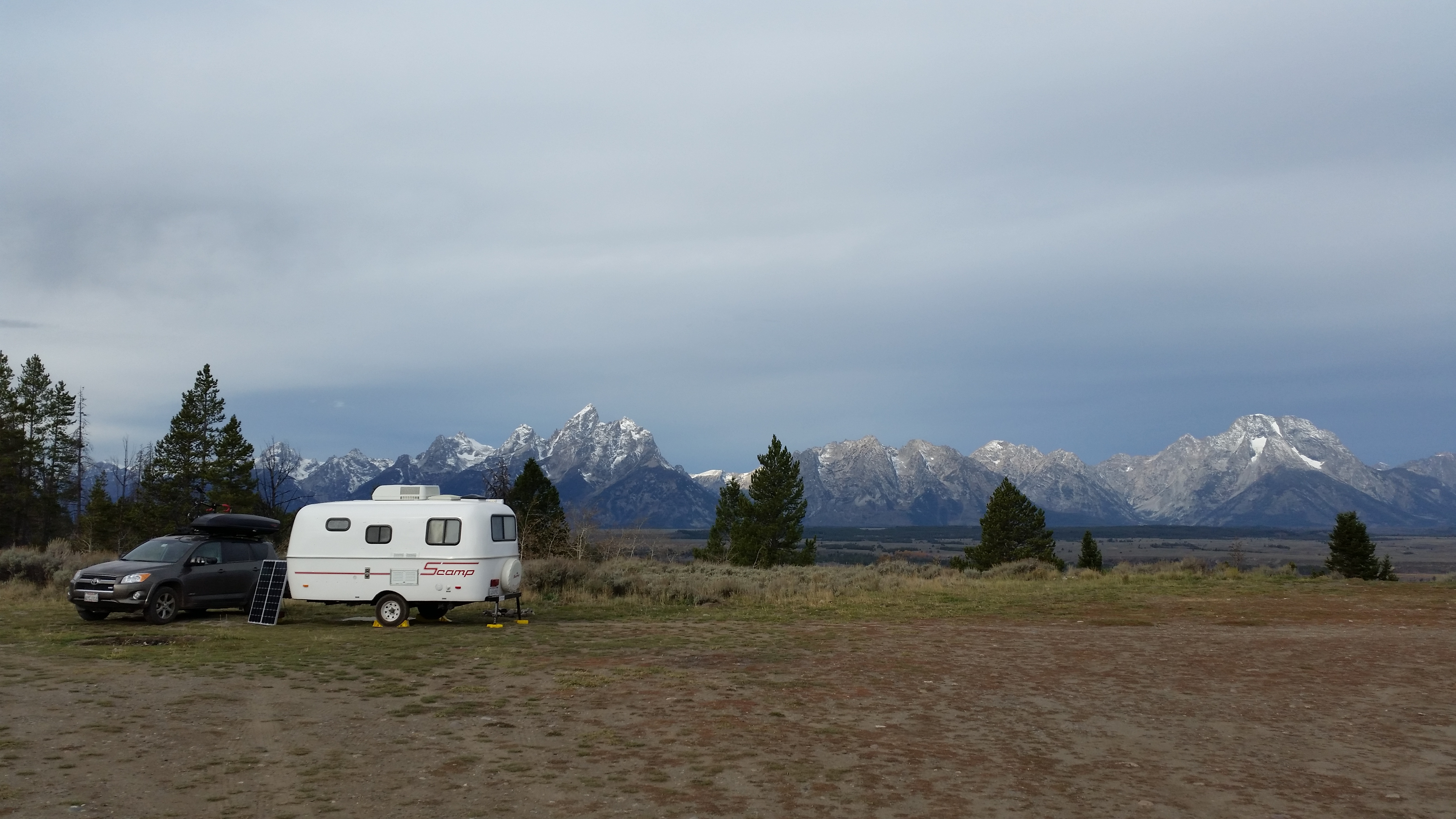
The other tent camper had left, leaving the entire landscape to ourselves! For the next five nights, this was our home. Clouds trickled in and out, presenting us a variety of sunrises and sunsets that could easily satisfy the fastidious artist.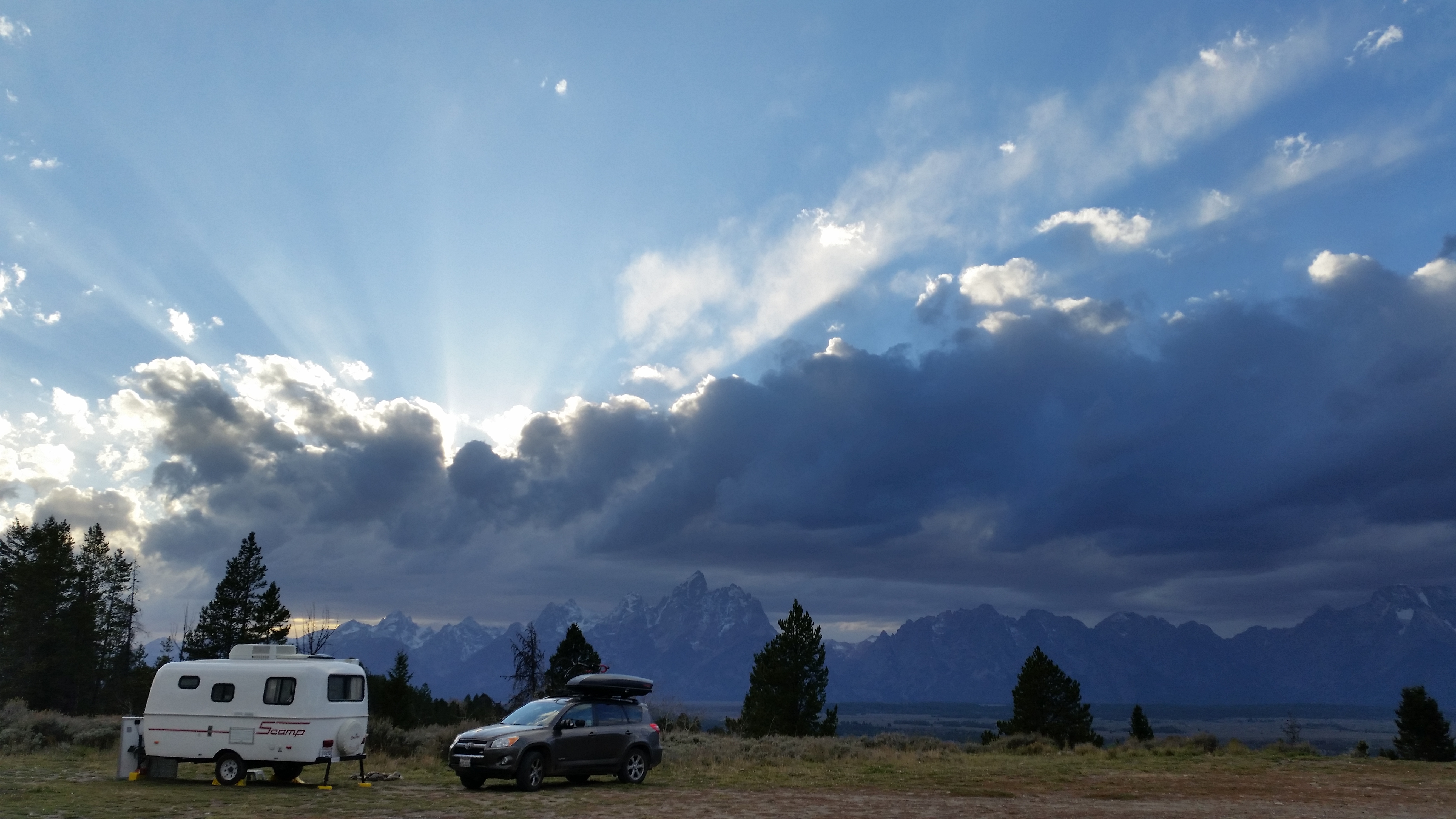
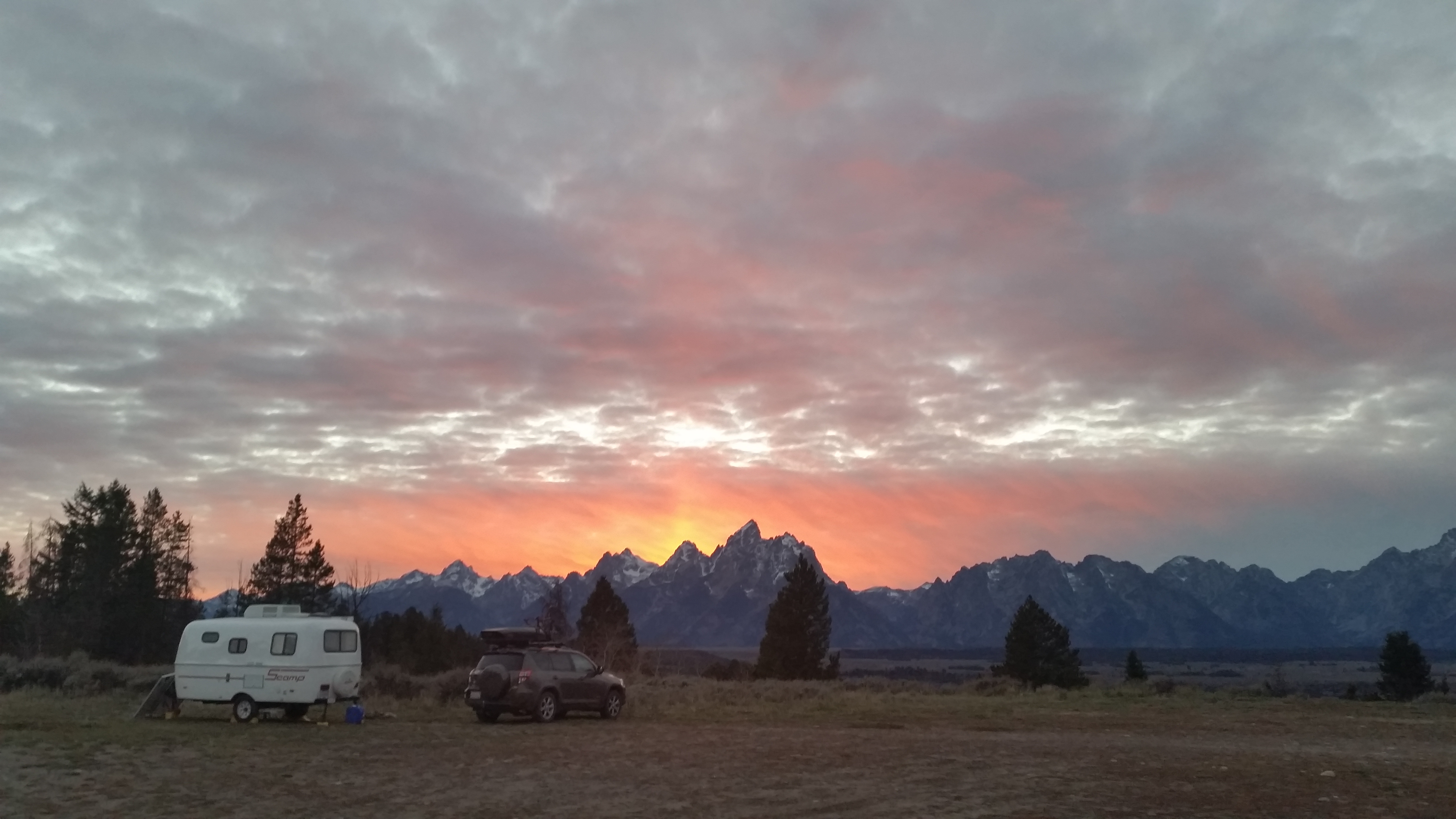
Luck was also on our side. Weather in the Rockies is most unpredictable; it could be sunny and clear all week with a day or two of sporadic storms between. Prior to arriving, the weather forecasted several days of unusual, pleasant autumn warmth that would reach the mid-60s! Thankfully, the forecast was spot on.
Between hikes and other outdoor adventures, we enjoyed squandering away time in our home. The simple pleasures of hanging out in Scromp and enjoying the view from his door was all we needed to fulfill our happiness. “This is a great life,” we often thought to ourselves as we sipped on wine and watched the day pass by. Below is Chris working at the dinette, with a gorgeous view right outside our door.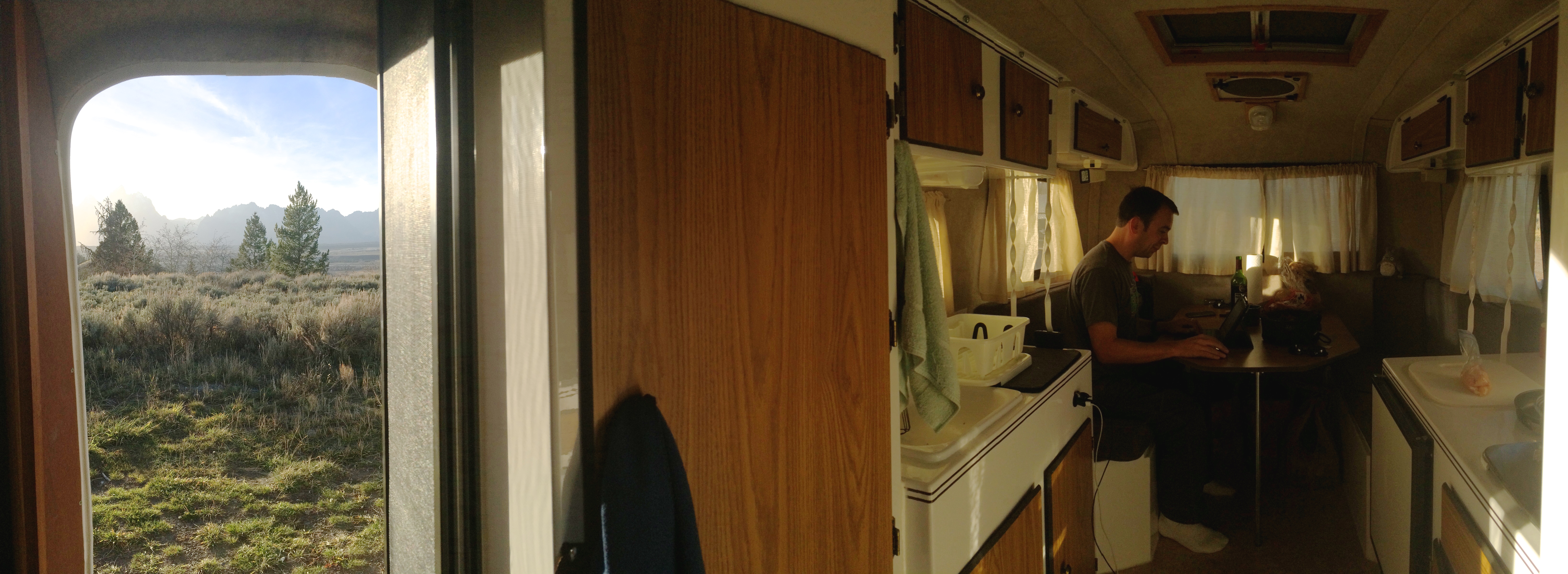
When we weren’t spending time in Scromp, we hiked several trails and drove to a number of overlooks. The classic, practically perfect overlook from Schwabacher Landing: 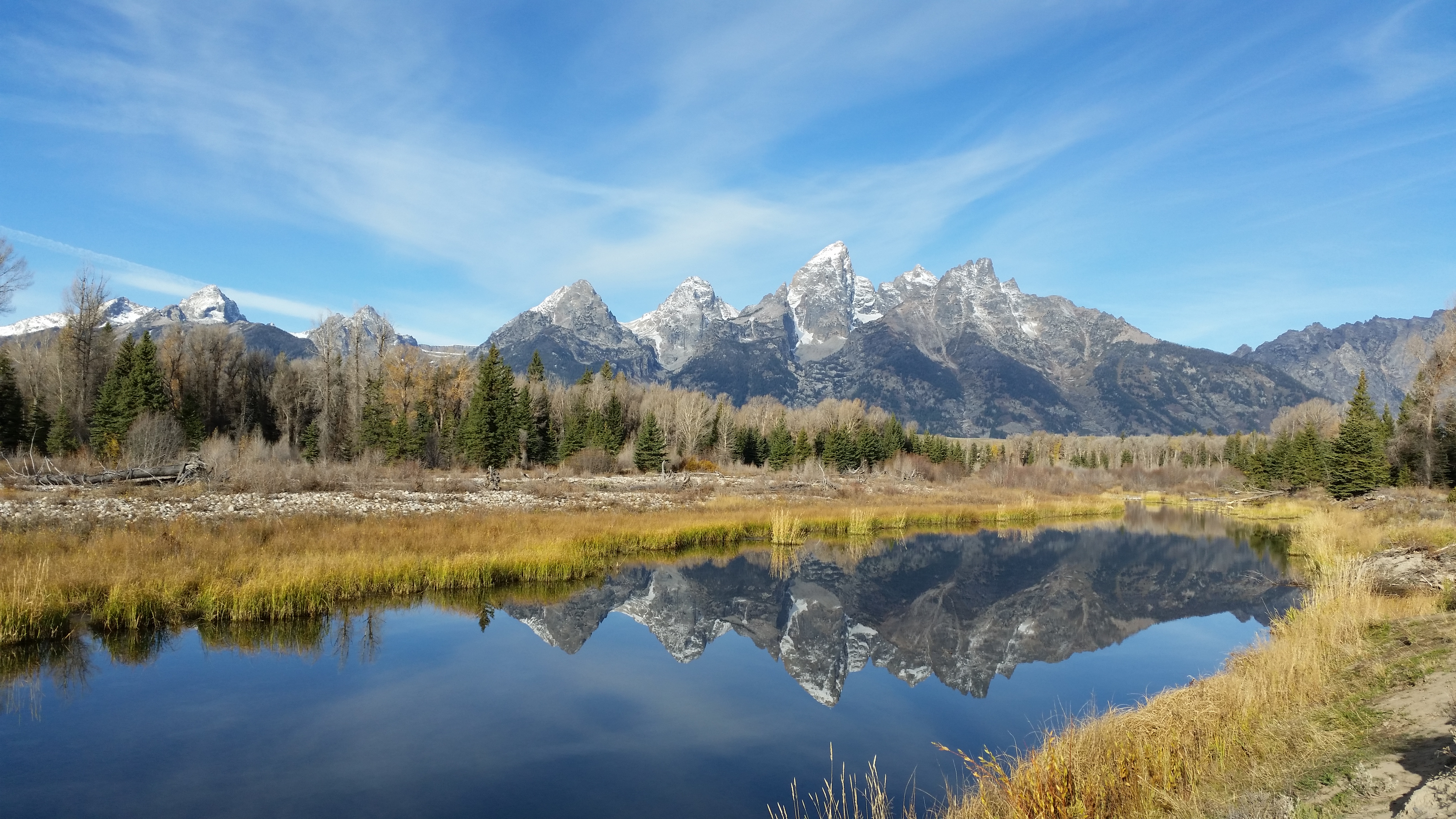
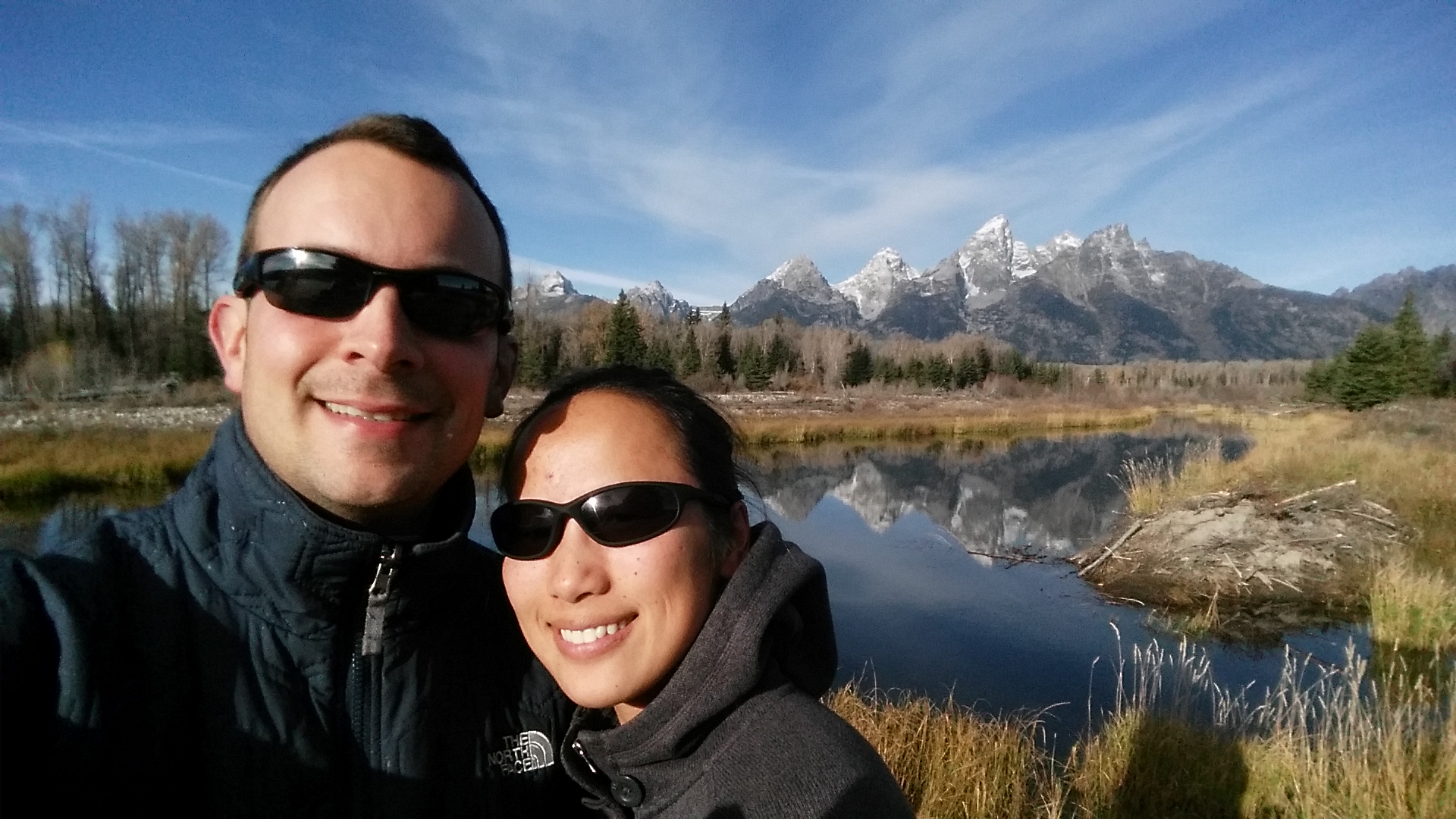
Easy 4-5 mile loop around Phelps Lake: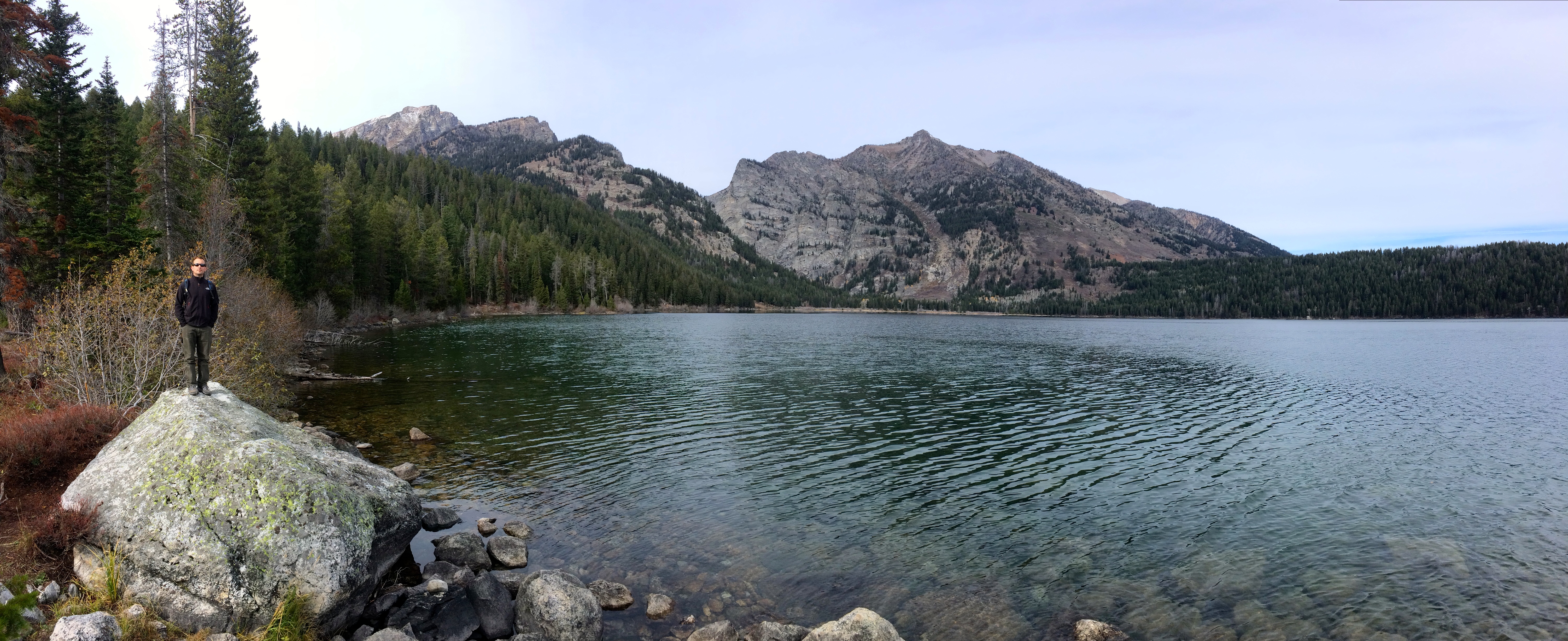
Because the trail around Phelps Lake was vacant, we encountered a moose and her baby.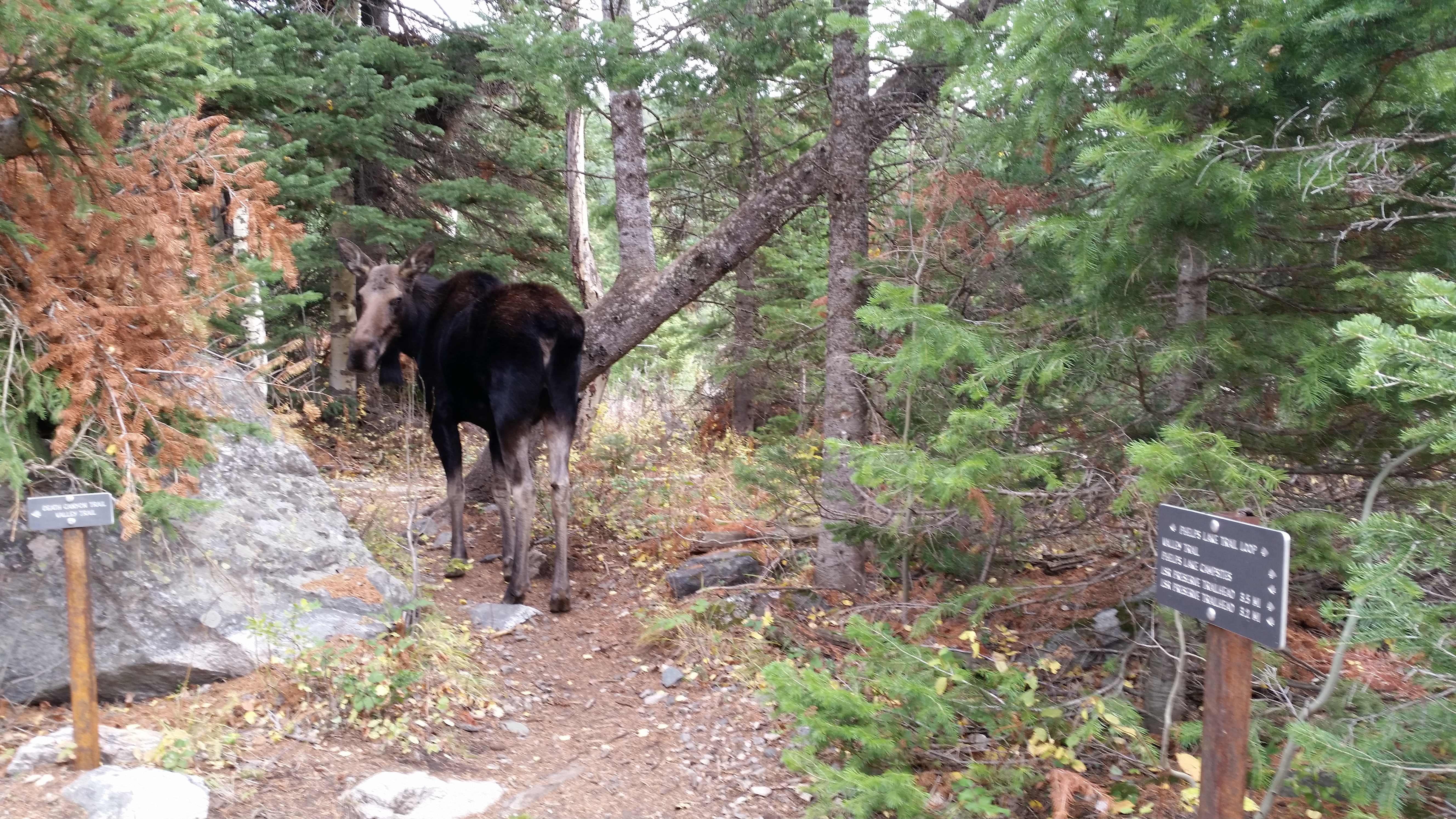
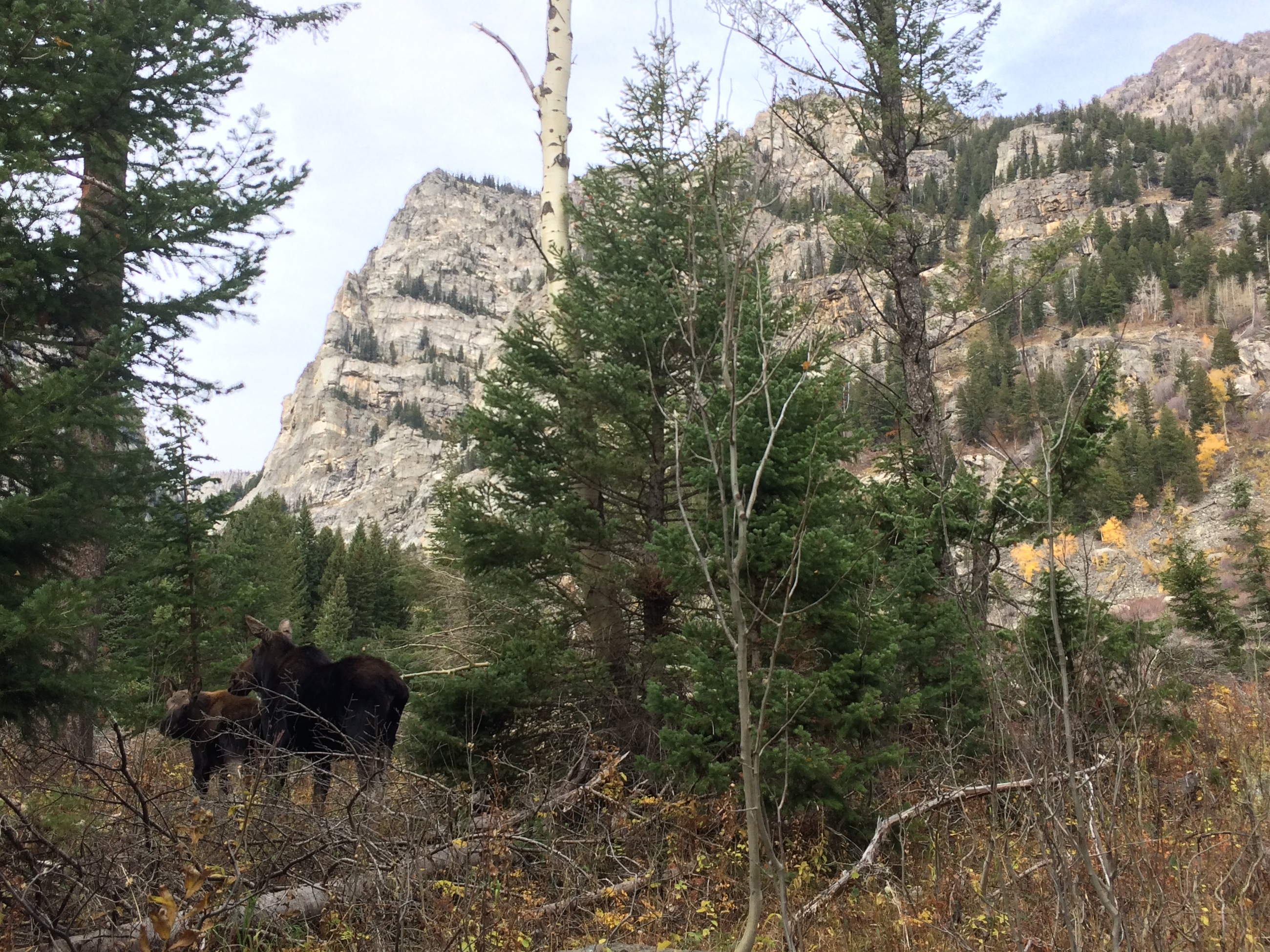
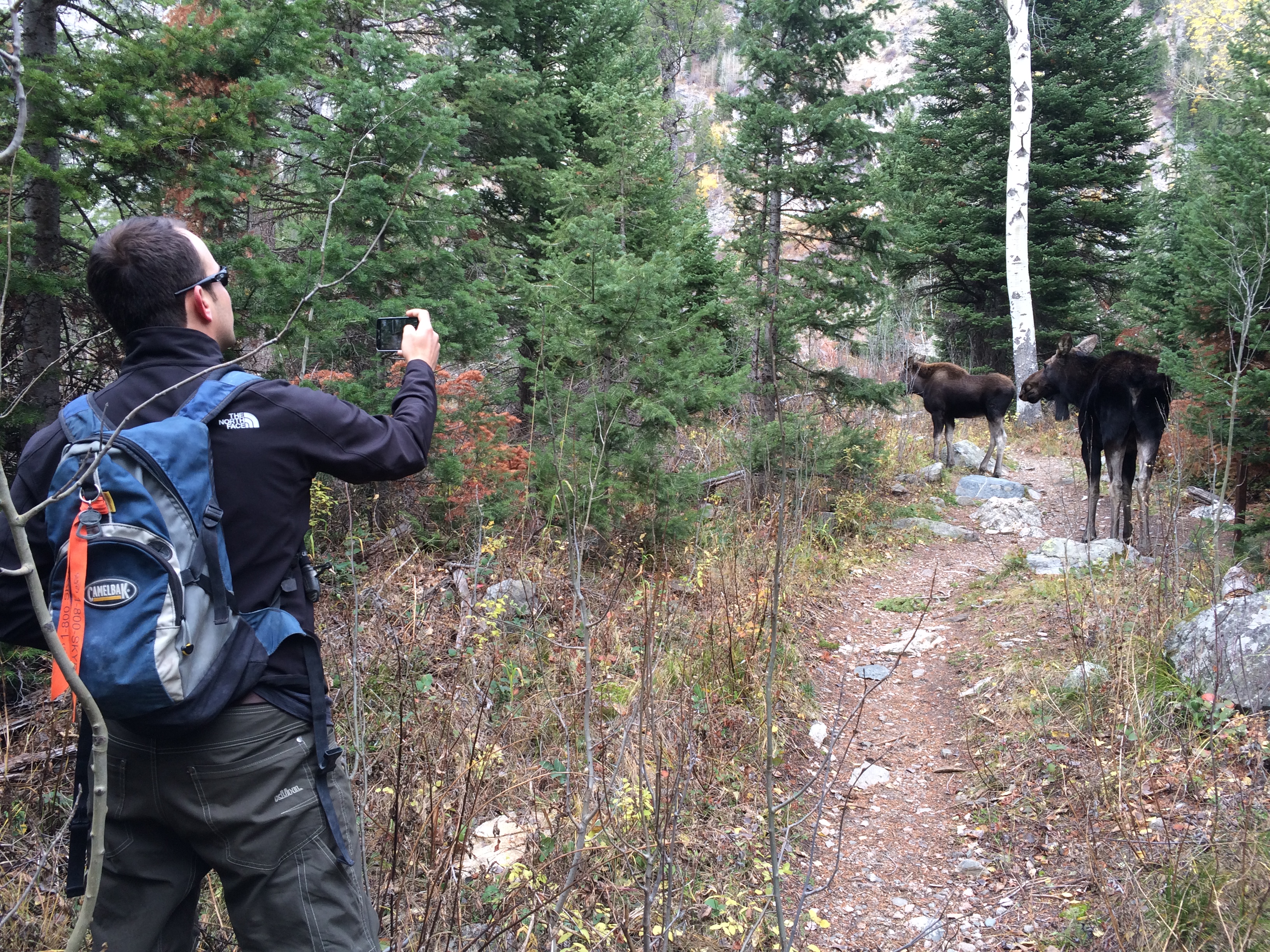
Even outside of hiking trails, it was not uncommon to encounter wildlife along the road. Elk, bison, antelope, and deer frequently grazed the prairie and marshes.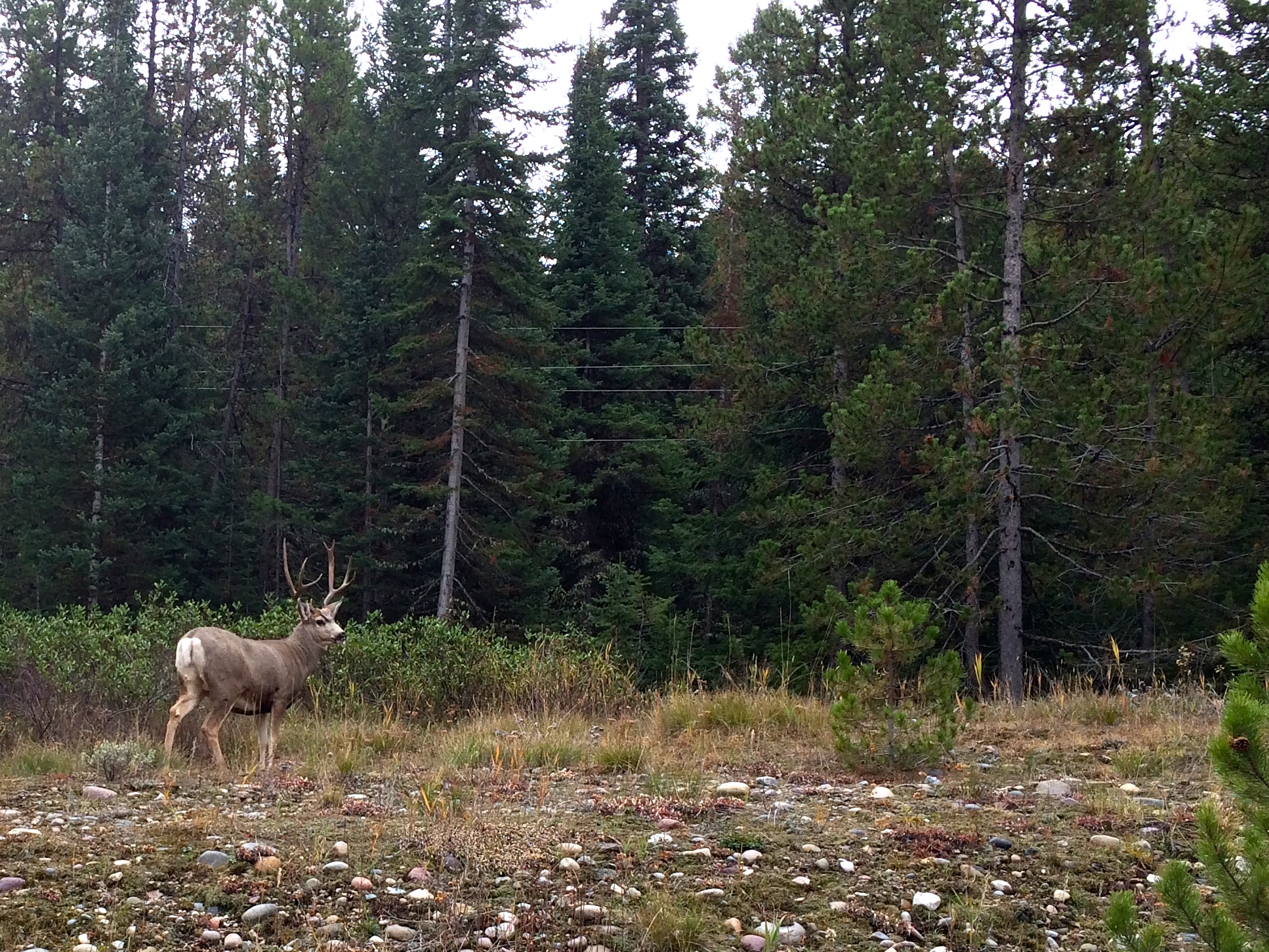
After hiking the perimeter of Phelps Lake, we moseyed over to Taggart and Bradley Lakes to hike another easy 4-5 mile trail. Despite being a short trail frequented by other hikers, the scenery was varied and beautiful, taking us across a small bridge over a gushing creek, leading us through the dense woods, and guiding us into, up and over the placid lakes with dramatic mountain backdrops. 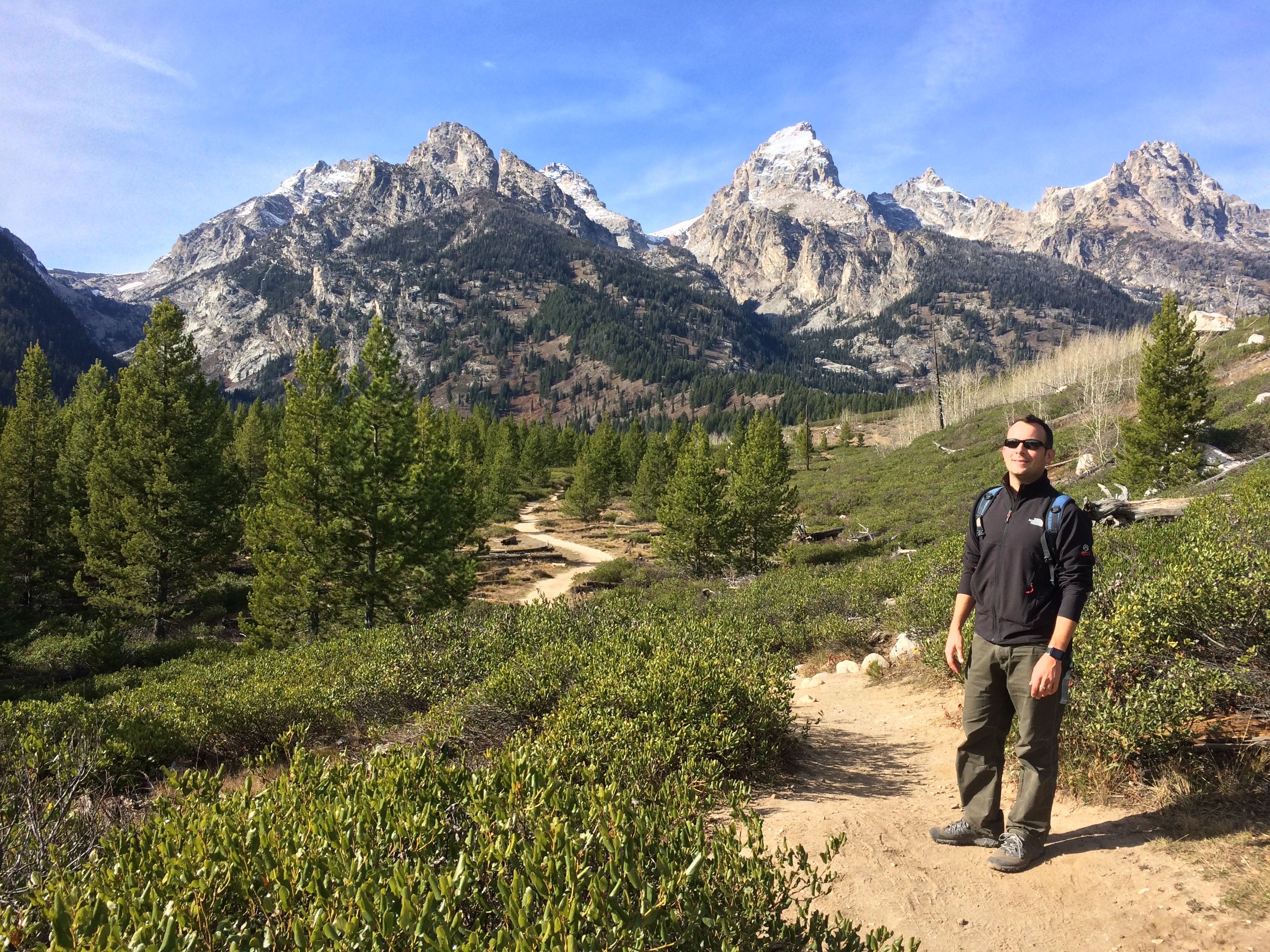
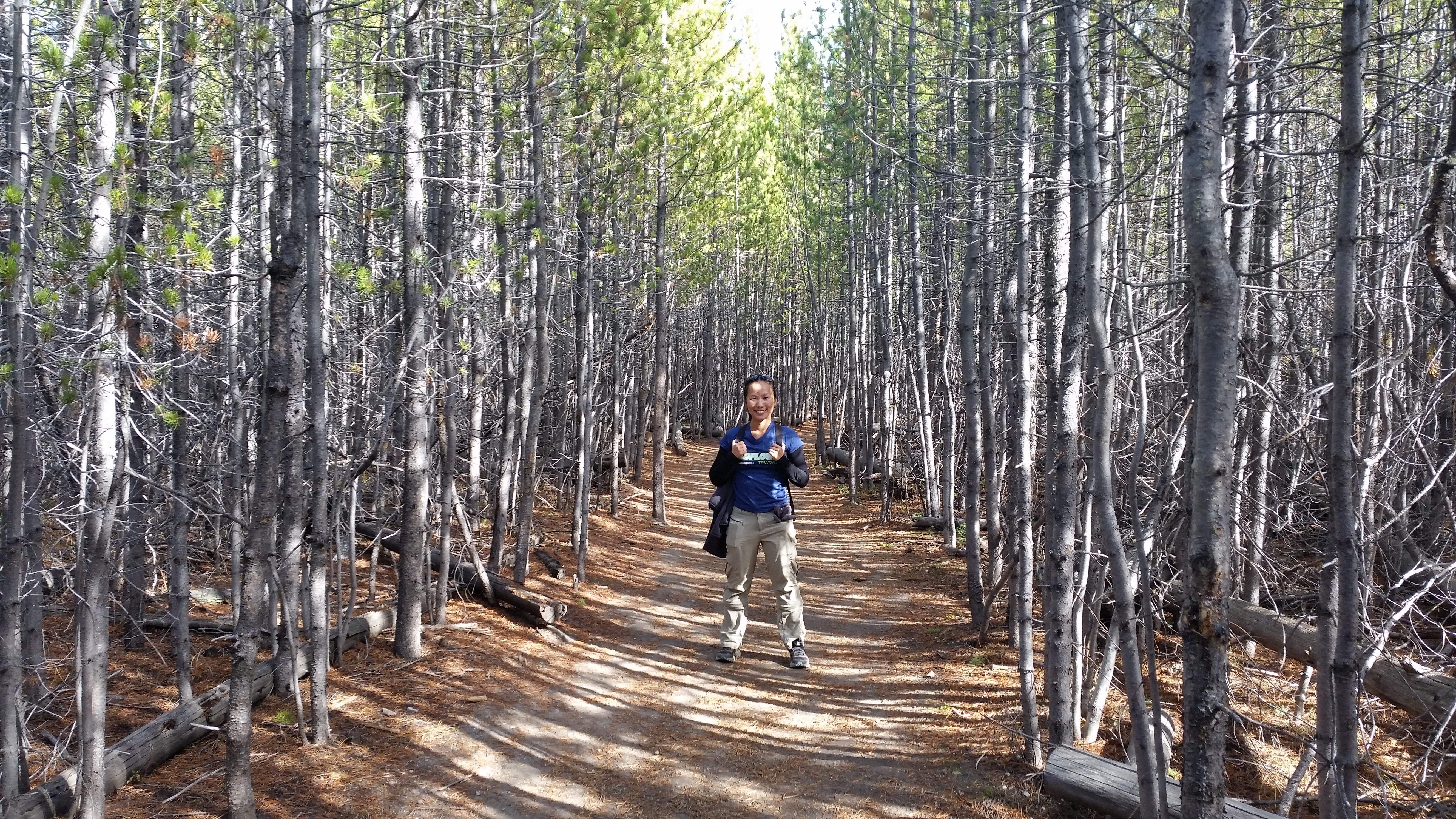
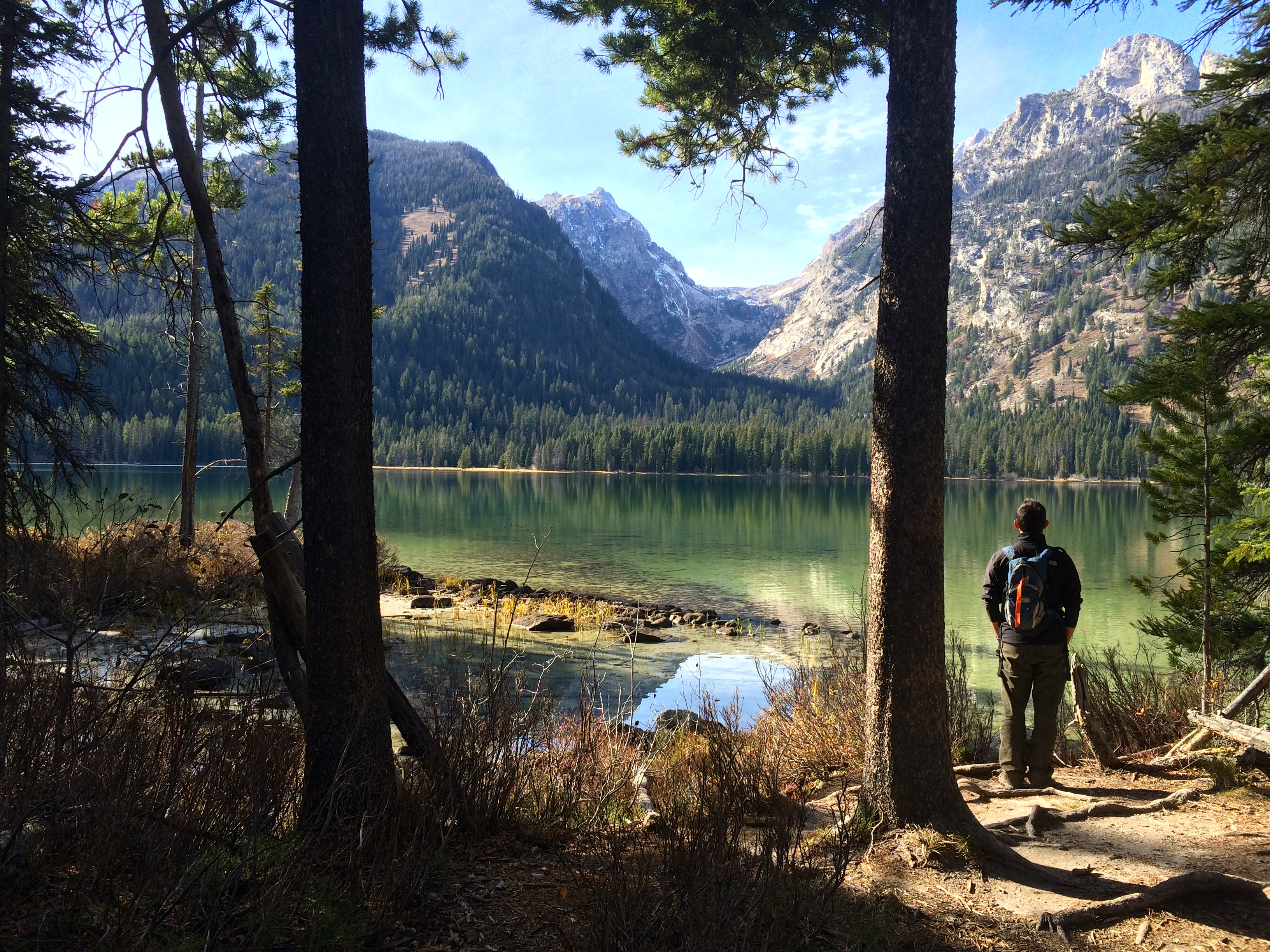
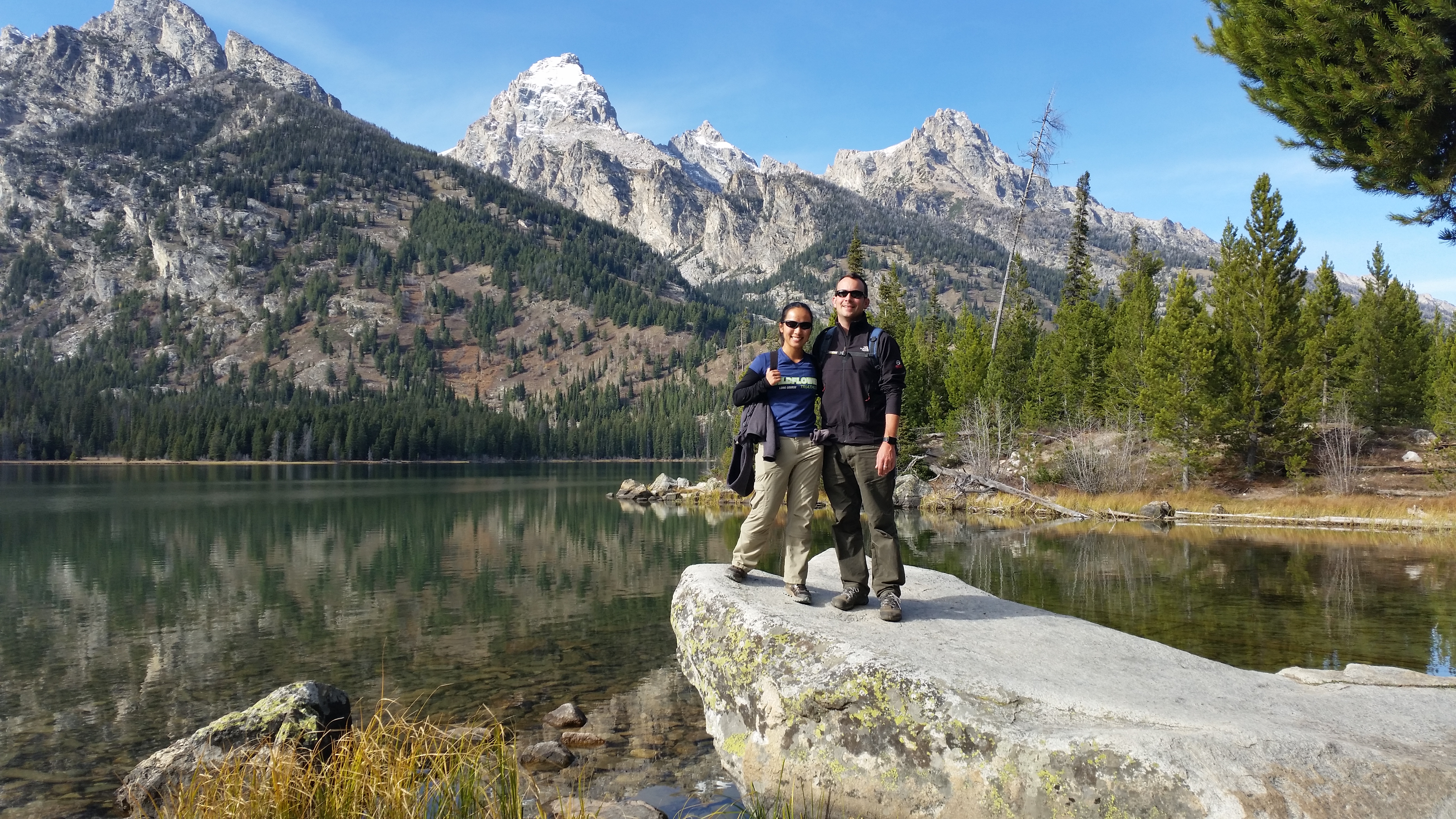
On a separate day off from hiking, I was able to tour The Grand Teton by bicycle. Although the morning’s crisp, chilly air numbed my face as I pedaled past the Teton range, I enjoyed the sparse roads and overlooks that belonged to no one else but myself. It was an easy, relaxed 36 miles from Moran Junction to the charming town of Jackson, where Chris worked and waited for me at a café.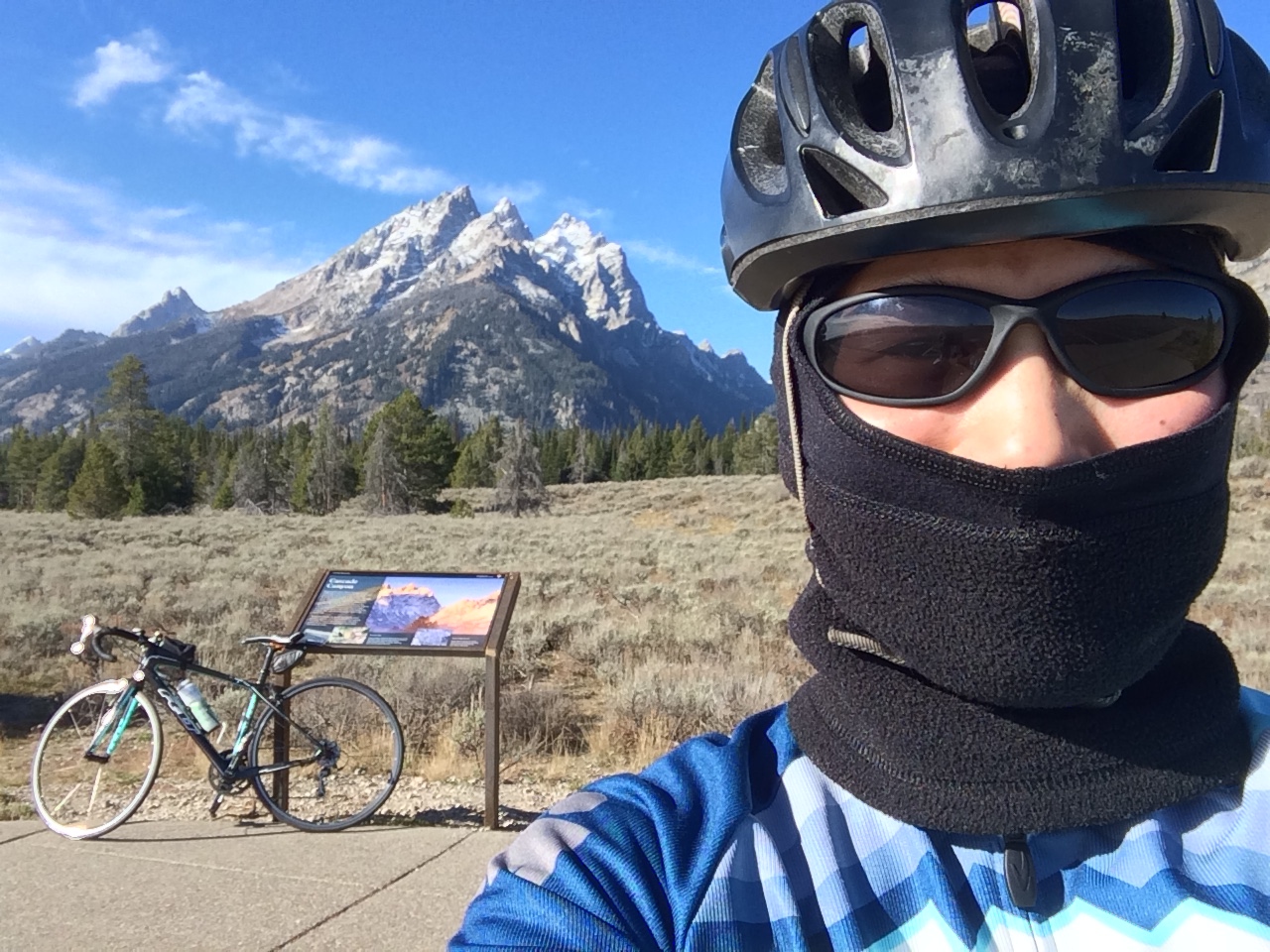
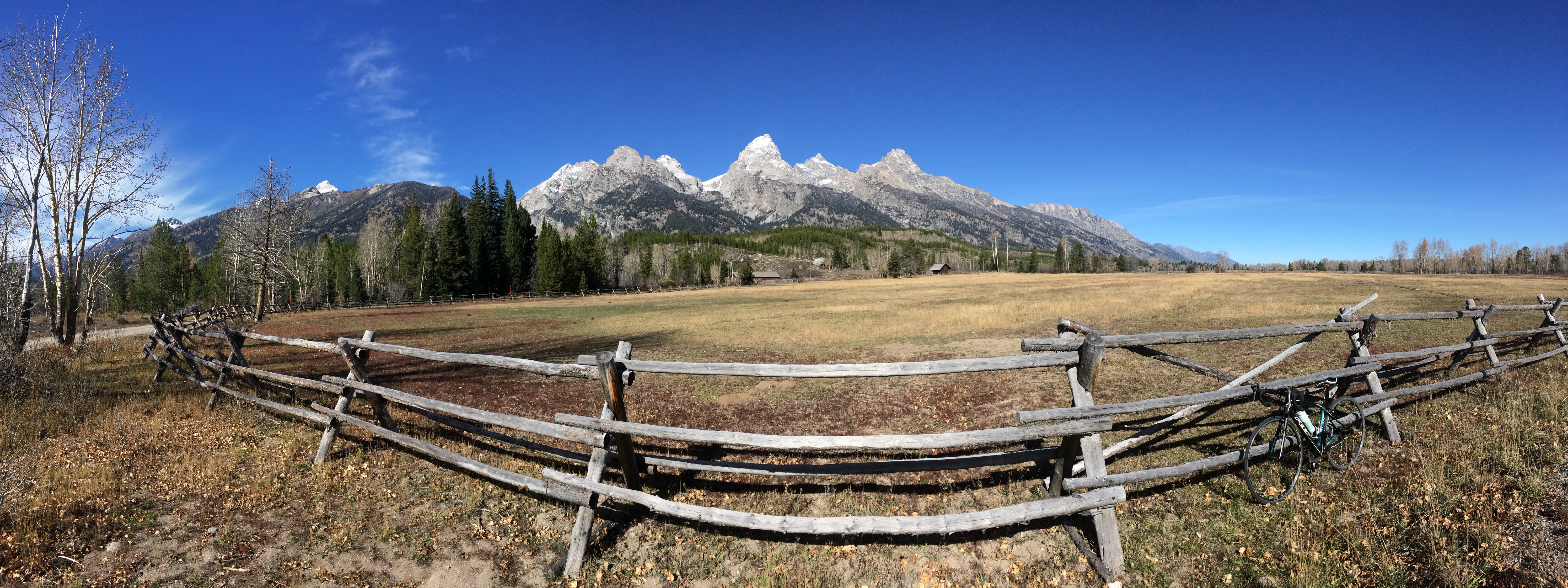

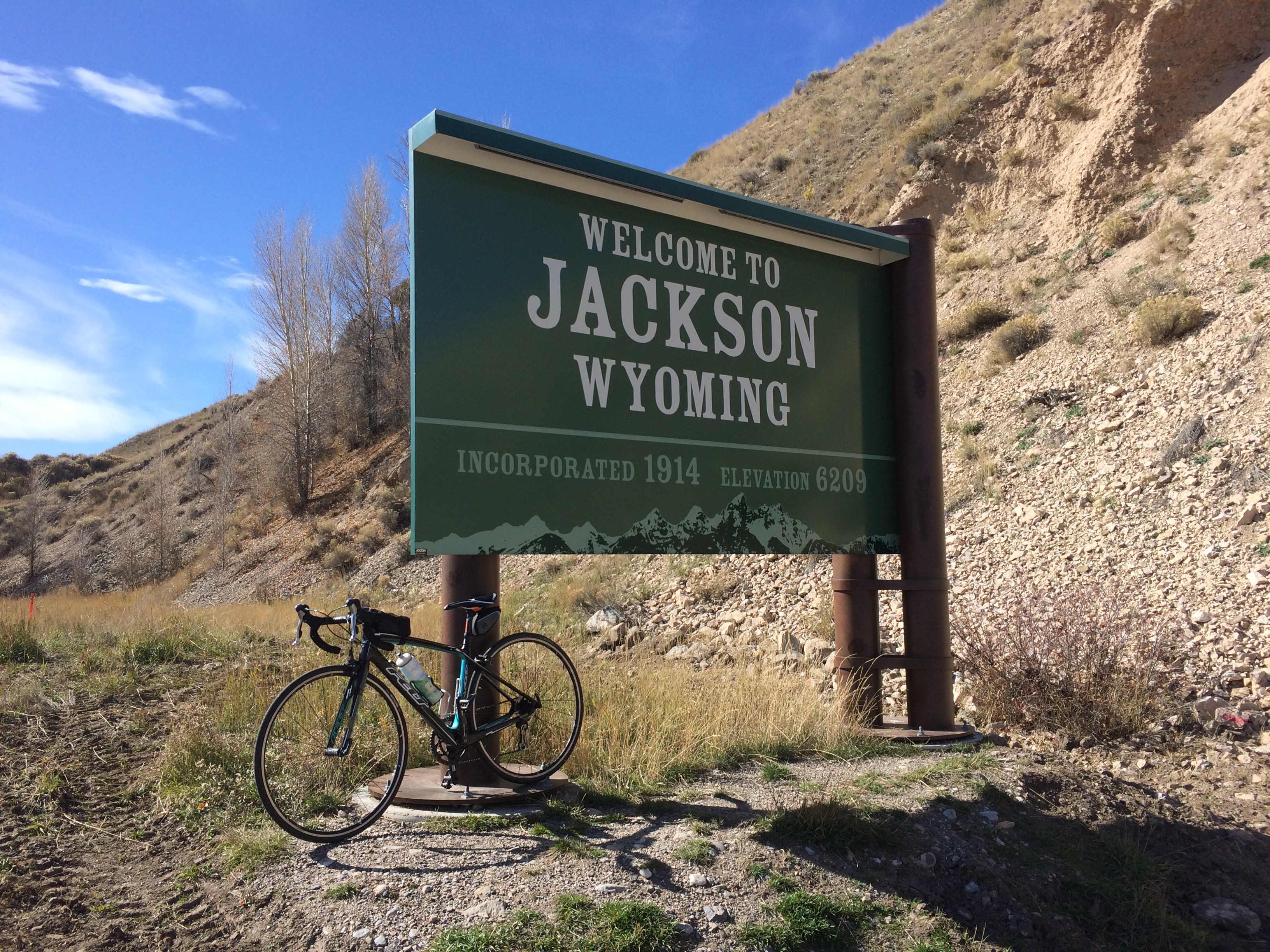
Behold–the famous antler-arch at Jackson Hole Square. Check it out…this whole thing is made entirely of antlers!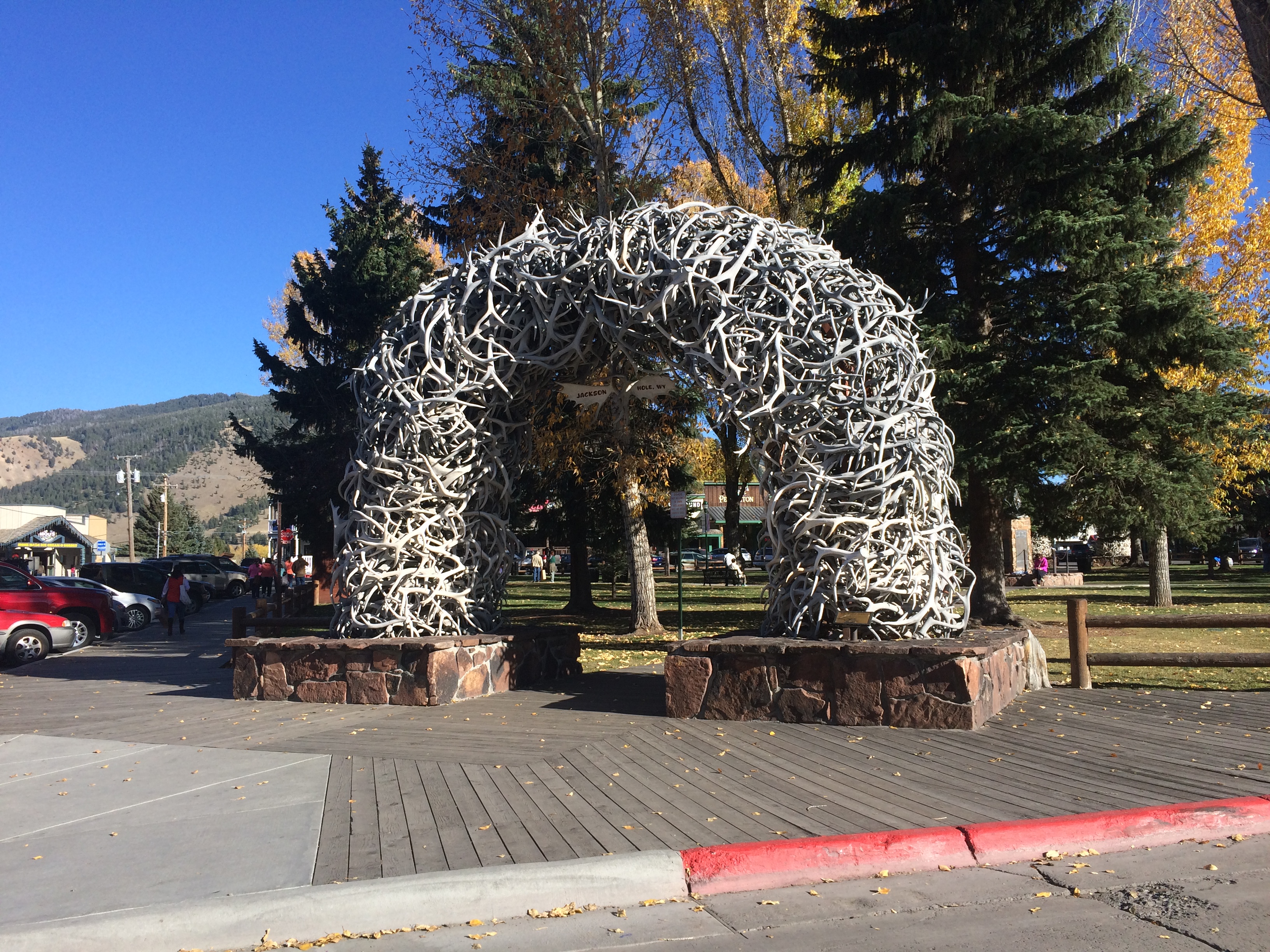
As if it couldn’t get any better–the day after my bike ride proved to be the most unforgettable. It is said that the 19.2 mile hike along the Paintbrush-Cascade Canyon loop provides the best sampler for those who want a taste of The Grand Teton in a short period of time. From a start at 7,500 ft. and peak at 10,700 ft. with a total of 4,950 ft. elevation gain, the hike is not for the faint of heart. Suitable months to hike this trail only lasts from August through October; prior to August, a pickaxe is recommended/required due to the large quantity of snow and ice, and the park closes early November. Like The Narrows top-down hike, many people break this hike into two days and camp overnight along the trails, but without proper camping gear we opted to hike the whole damn trail in a single day with a 10-hour goal time. Chris and I have hiked countless trails nationally and internationally, and we can easily say that the Paintbrush-Cascade Canyon loop ranks high on our list of most memorable hikes.
“Today is the day!” I excitedly thought as the alarm woke us in darkness. With autumn daylight being so scarce, we knew it would be wise to begin at sunrise.
During our drive to the park, the scenery reminded me of the swim start of Ironman Lake Tahoe 2013. Because the water temperature was colder than the air temperature, an eery mist rose from the creeks and lakes to bestow a mysterious landscape.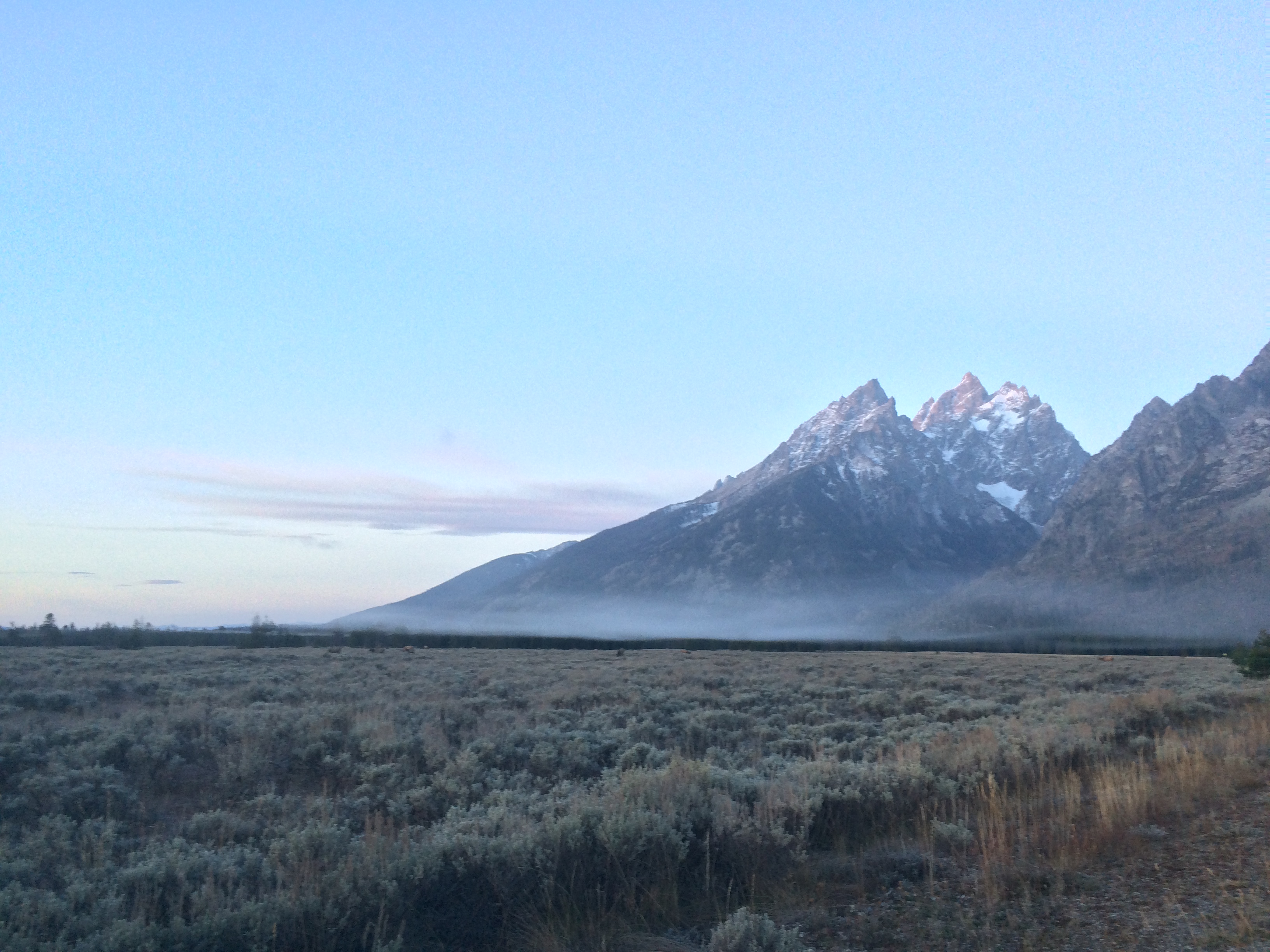
We hit the String Lake trailhead just 10 minutes after sunrise. 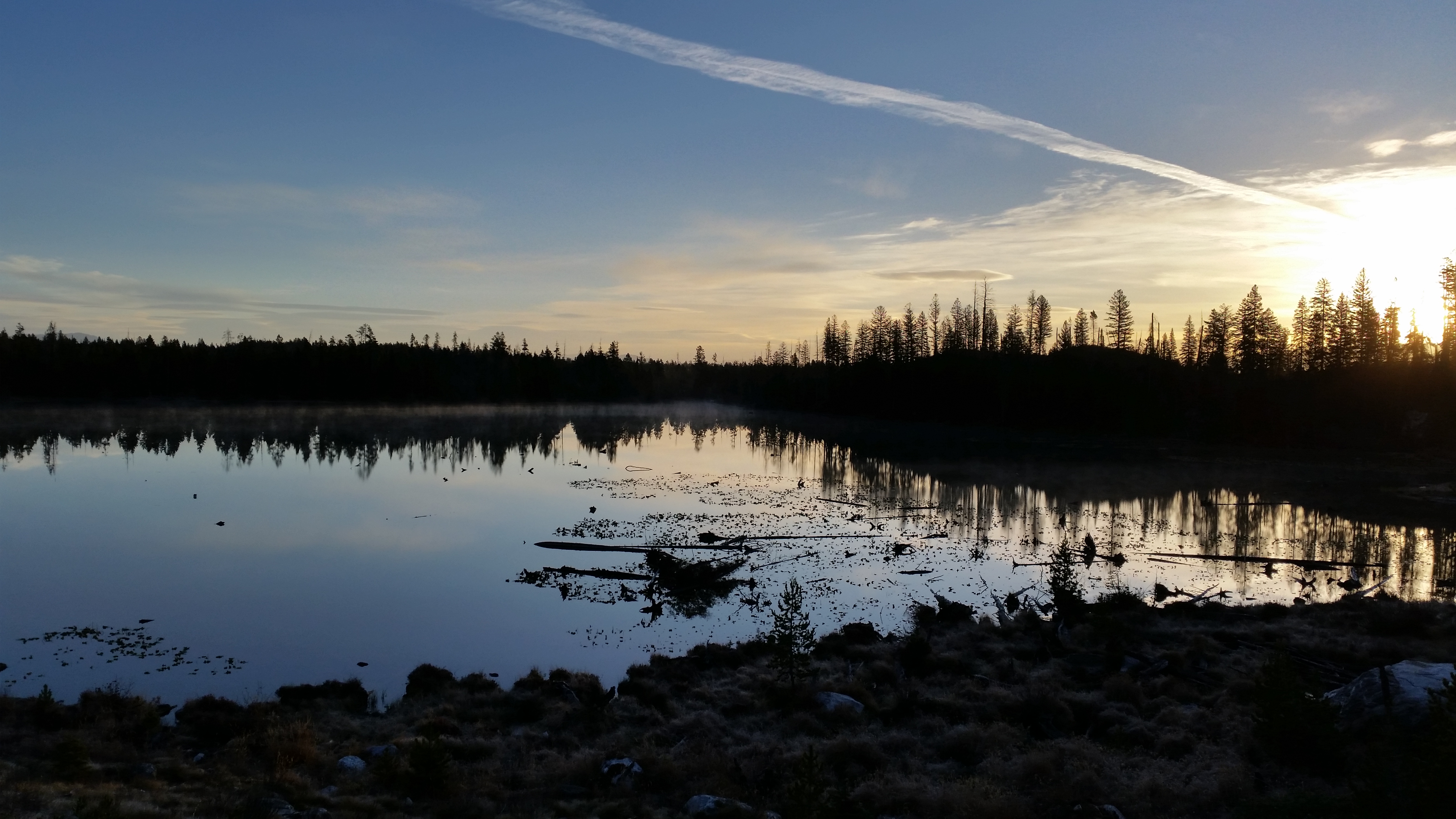
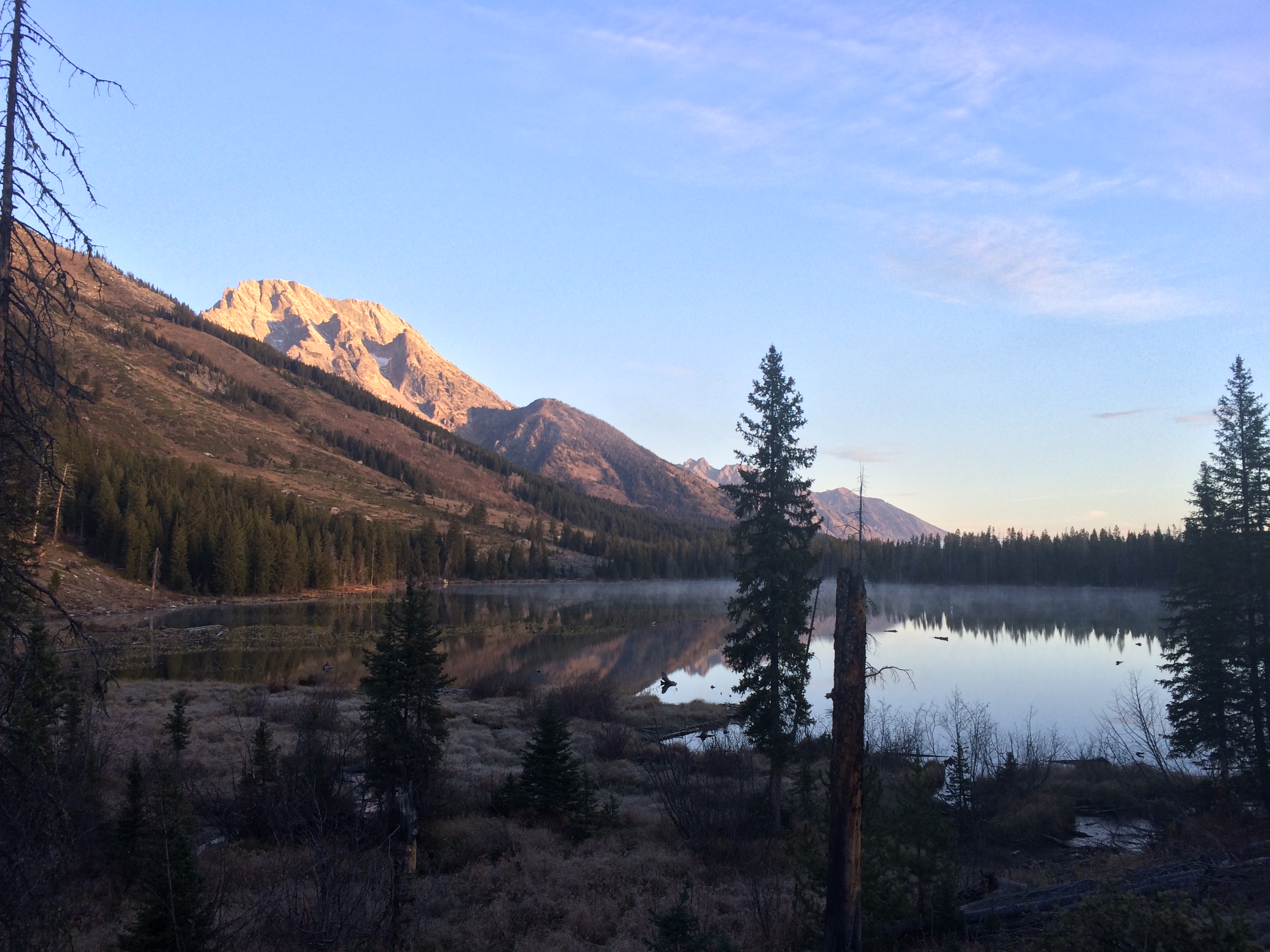
We hiked the loop in a counter-clockwise direction for two reasons: the views were more highly regarded that way, and more importantly, we would ascend and finish the climb early on while our legs were fresh.
The first 4 miles or so of the Paintbrush Canyon trail was a gradual ascent from String Lake to Holly Lake.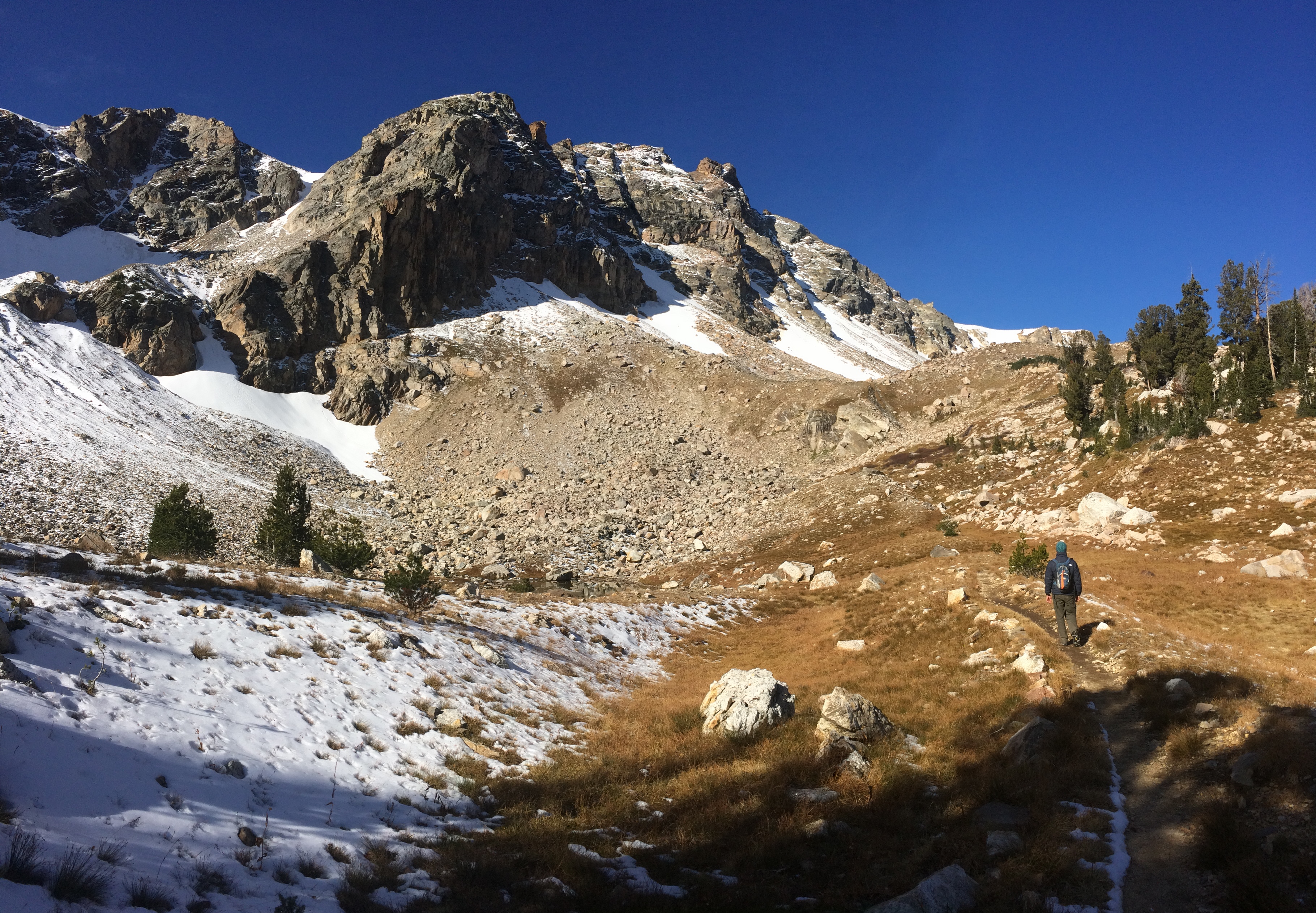
Slippery ice and snow dusted the dirt path as we hiked up.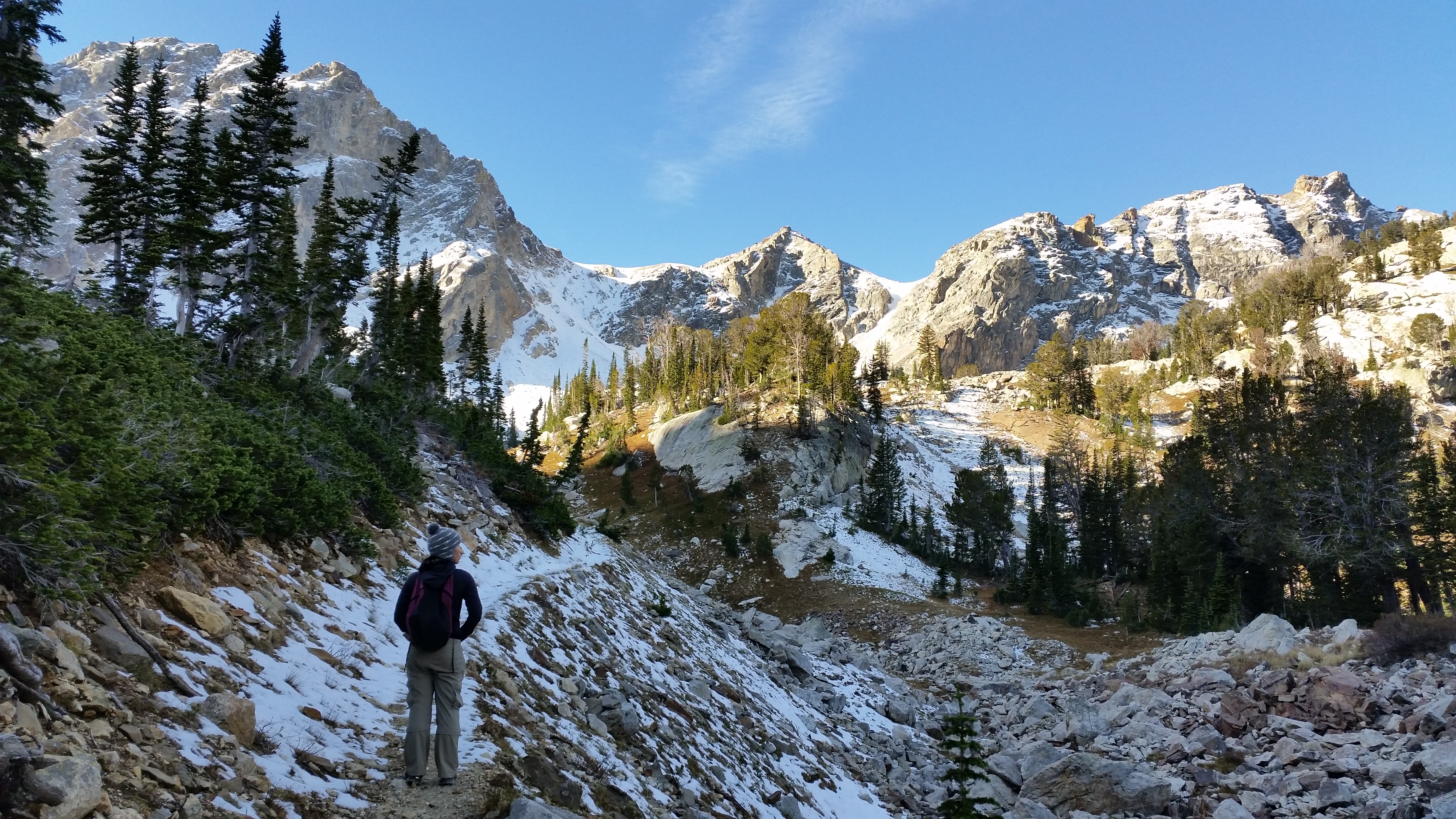
Gazing down at Holly Lake with String Lake in the distance: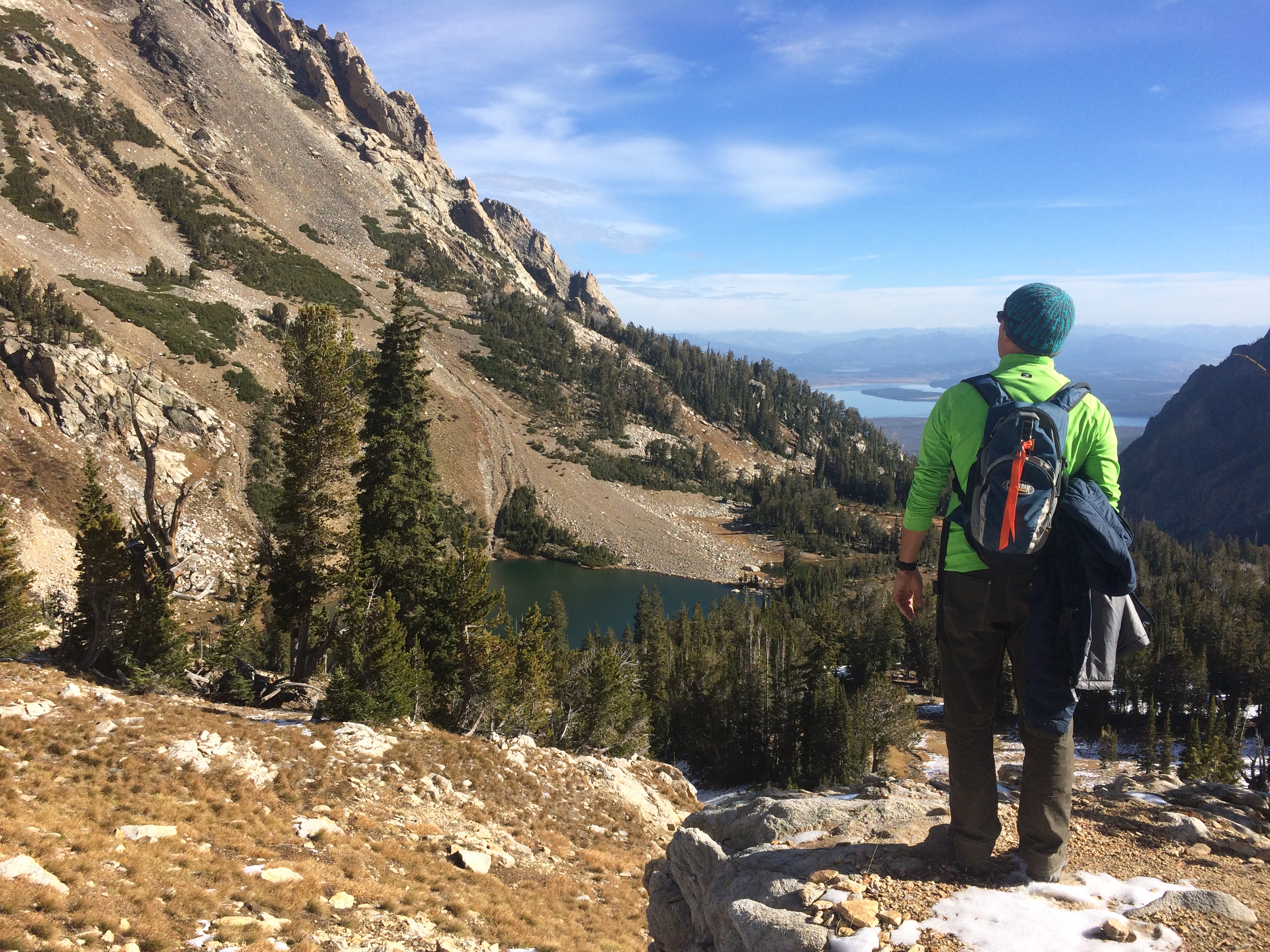
“This isn’t so bad,” I thought as we powered through the first couple miles at lower elevation. But the next grueling 2.5 miles or so from Holly Lake to the Paintbrush Divide was a steep bitch and I was hardly able to keep my breath. As the air grew colder and thinner (Chris called out, “8,500 ft!” to “9,500 ft!” to “10,200 ft!” when we approached those altitudes), my body grew more weary with each staggered step through packed snow fields. Even with my layers, hat, and gloves, I felt parts of my body ache with pain and cold as I slowly made my way through the freezing mountain shade and biting wind.
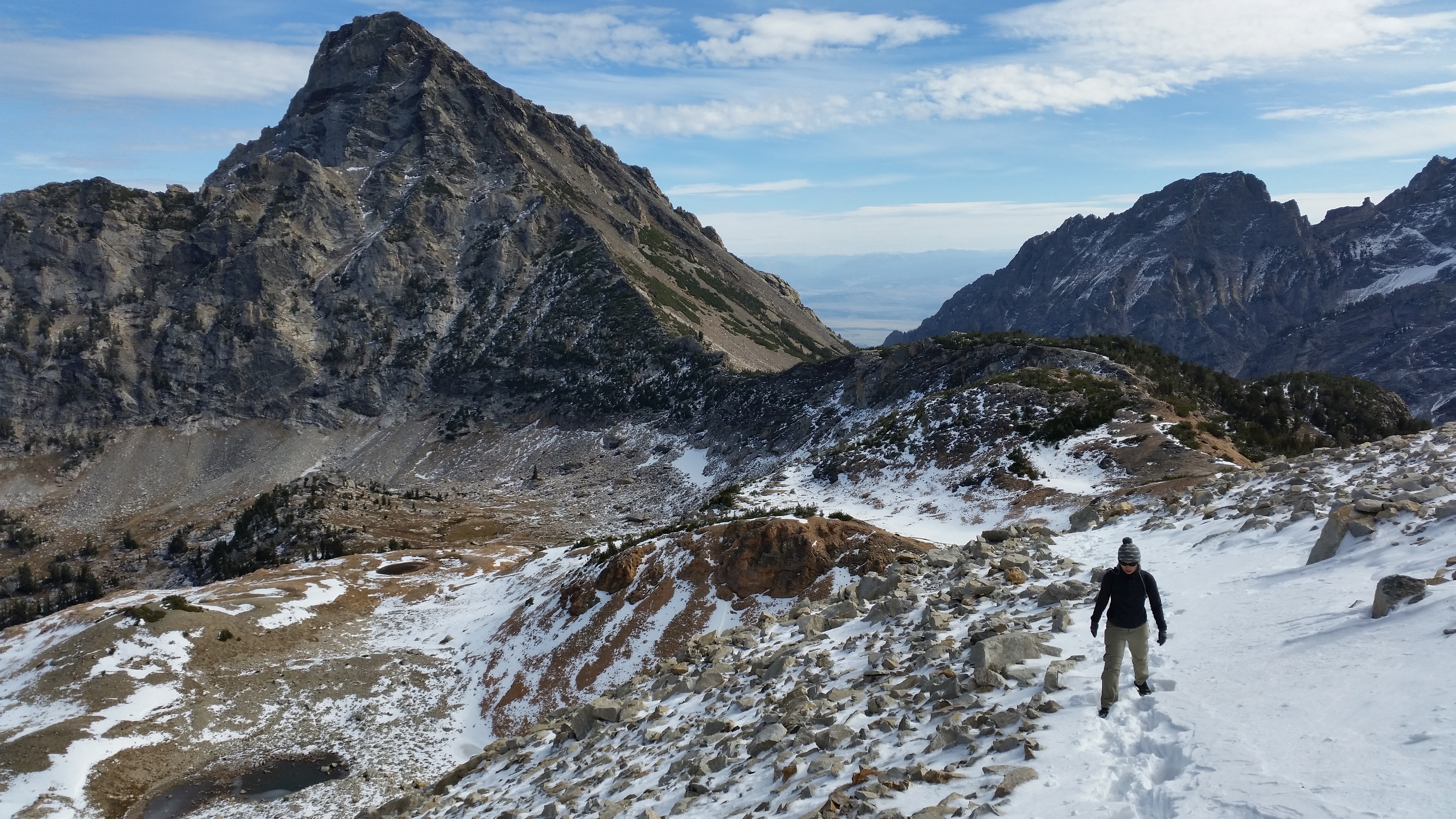
Finally, the Paintbrush Divide came into view and we optimistically made our way up toward the peak where we maxed out in elevation:
After trudging along the snow covered mountain and taking one sluggish step at a time on extremely steep and loose rocks, I finally made it to the Paintbrush Divide! (Chris, the strong man that he is, made it without suffering from high altitude.)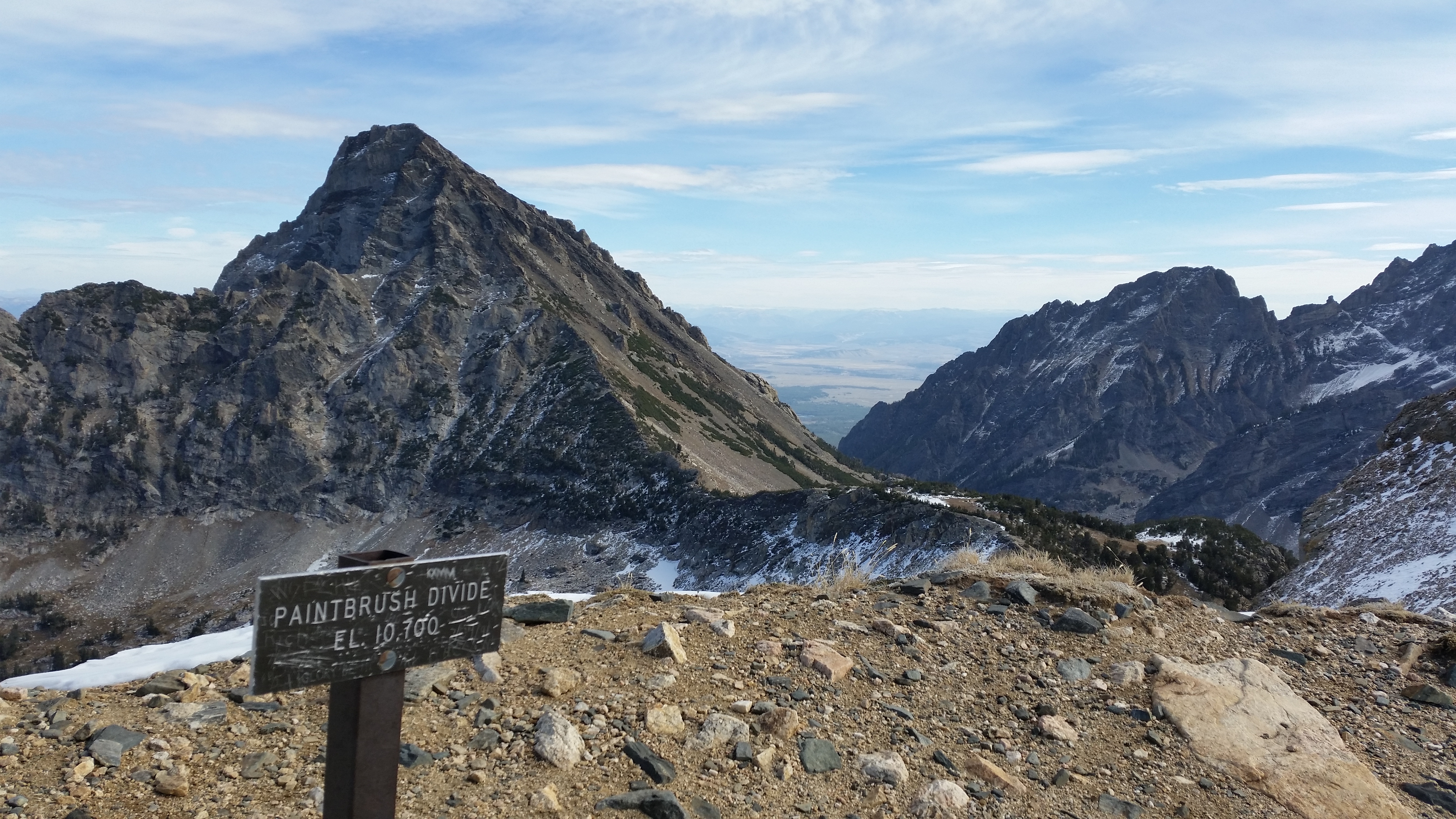
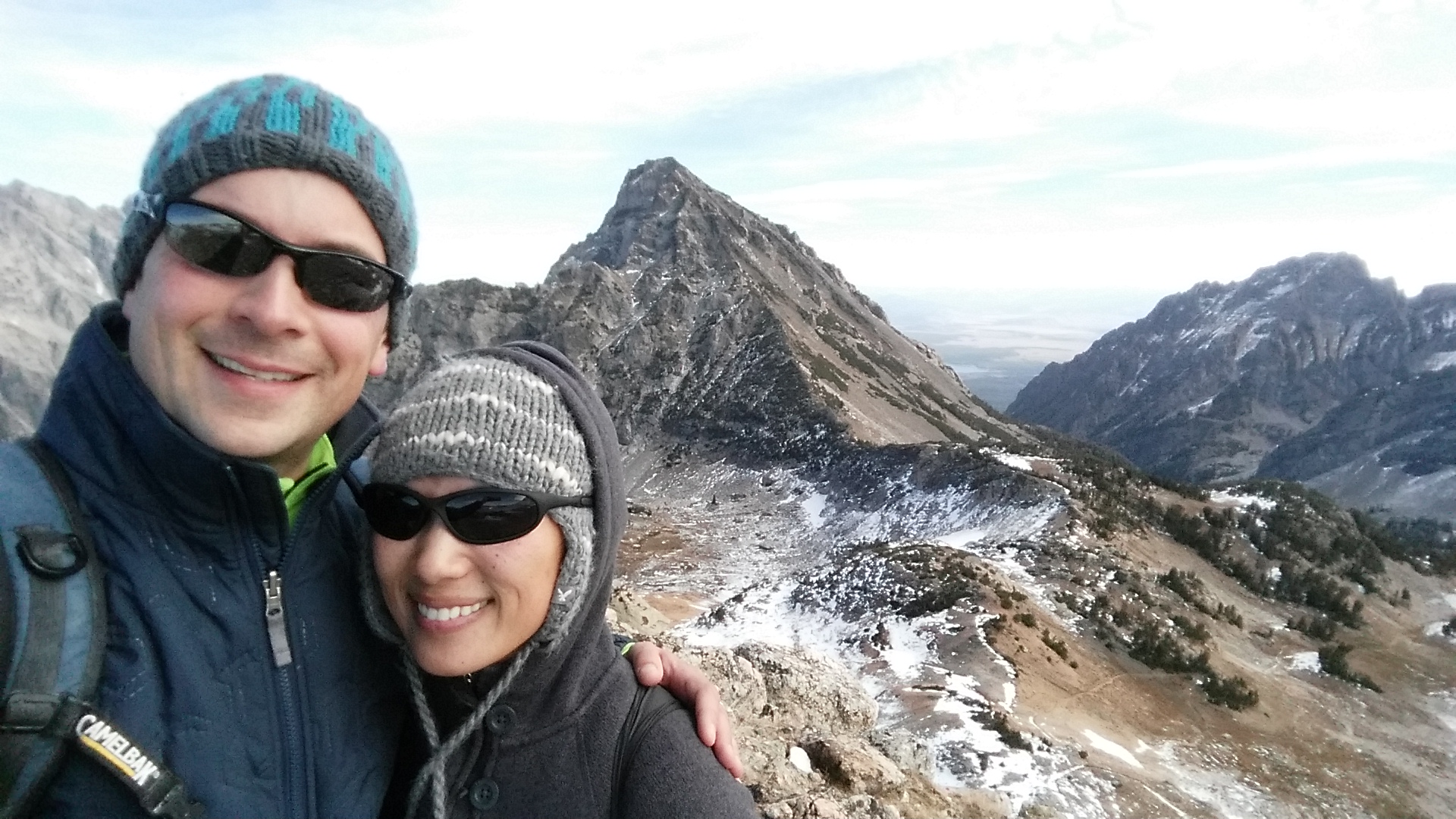
After a big hurrah and exclamation of relief that we were officially done ascending, we began our way down on the other side of the Paintbrush Divide which was a lovely 2-3 mile descent. Here is what you don’t typically see of The Grand Teton–the back side that overlooks Idaho to the west: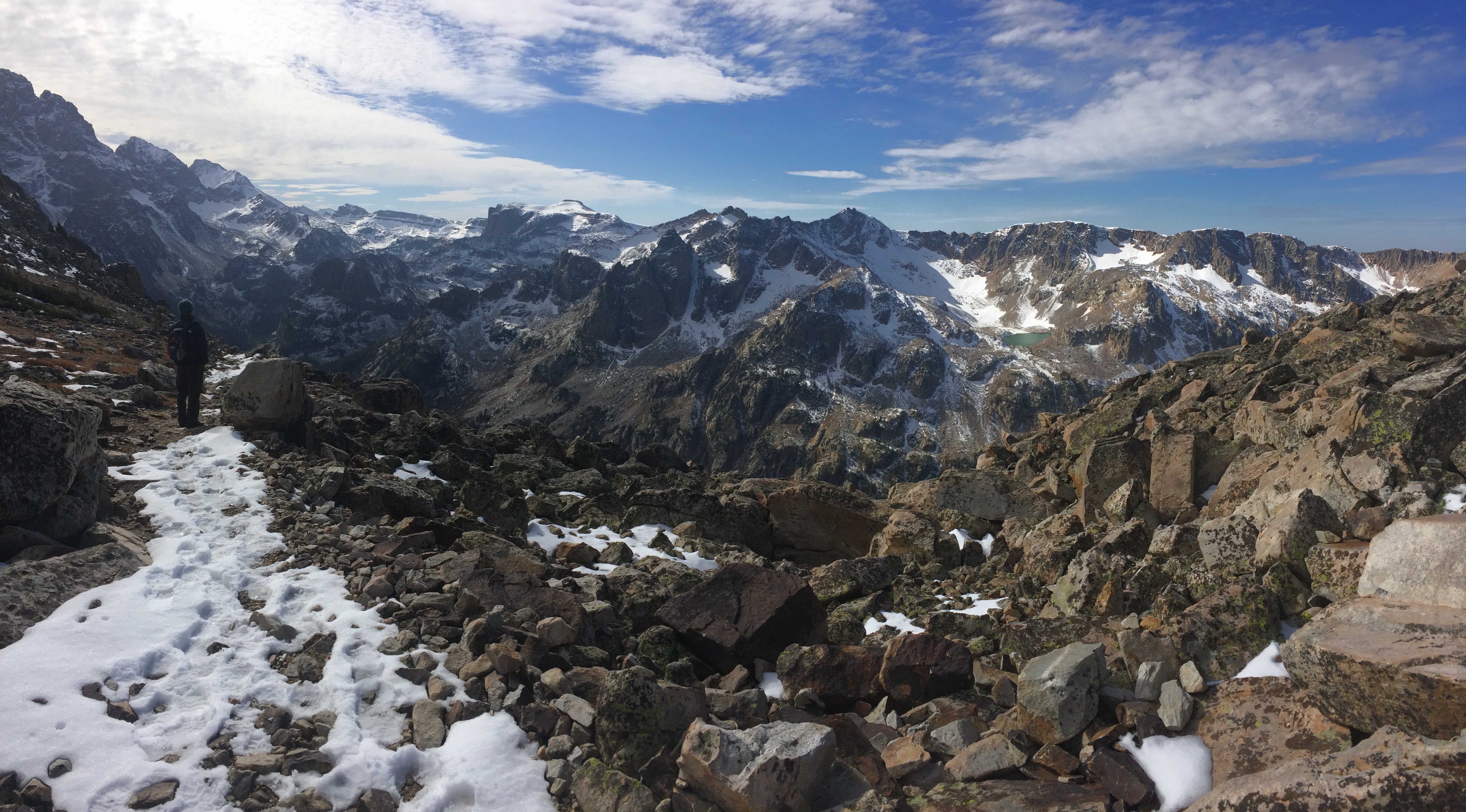
Of the entire loop, Lake Solitude was my favorite landmark. The reflection of sunlight twinkled upon the crystal-clear waters, and the jaw-dropping bowl-shaped valley of forests beneath the Teton range in the distance was a landscape like no other. As we peeled off our layers in lower, warmer altitudes, we marveled at our surrounding environment: 
The bowl-shaped valley during the descent of the Paintbrush Divide into Lake Solitude: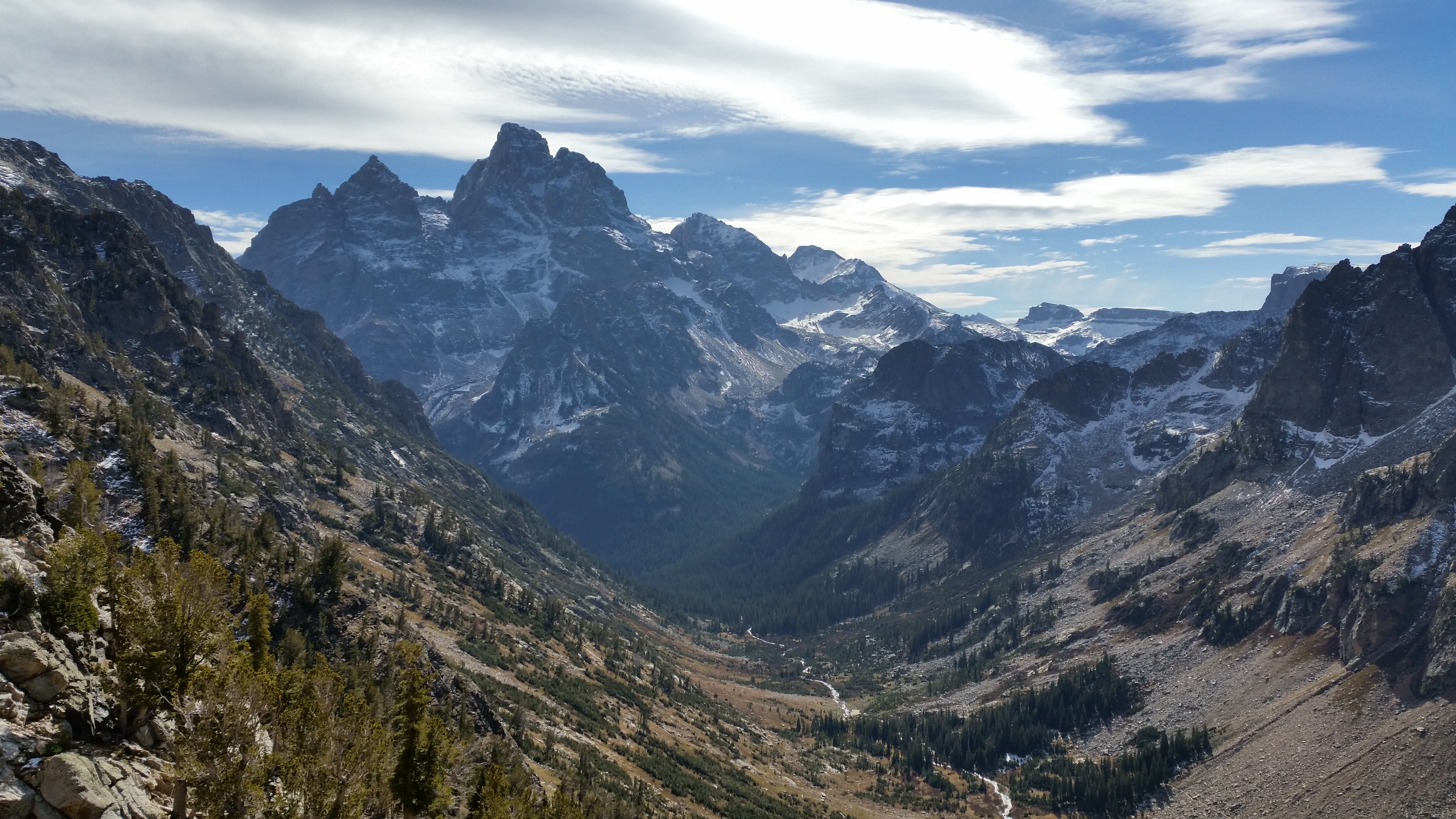
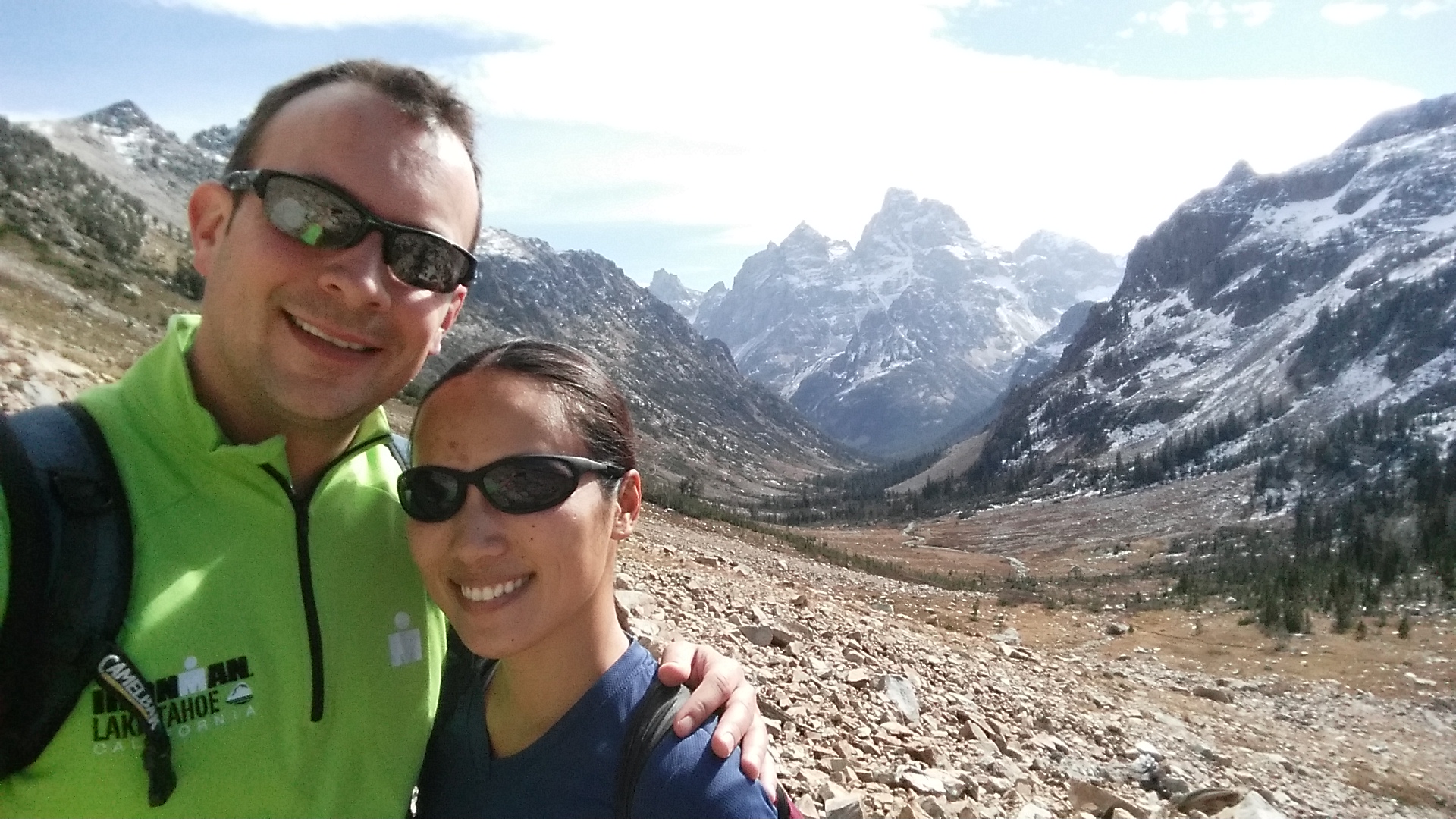
Me excitedly jogging toward Lake Solitude: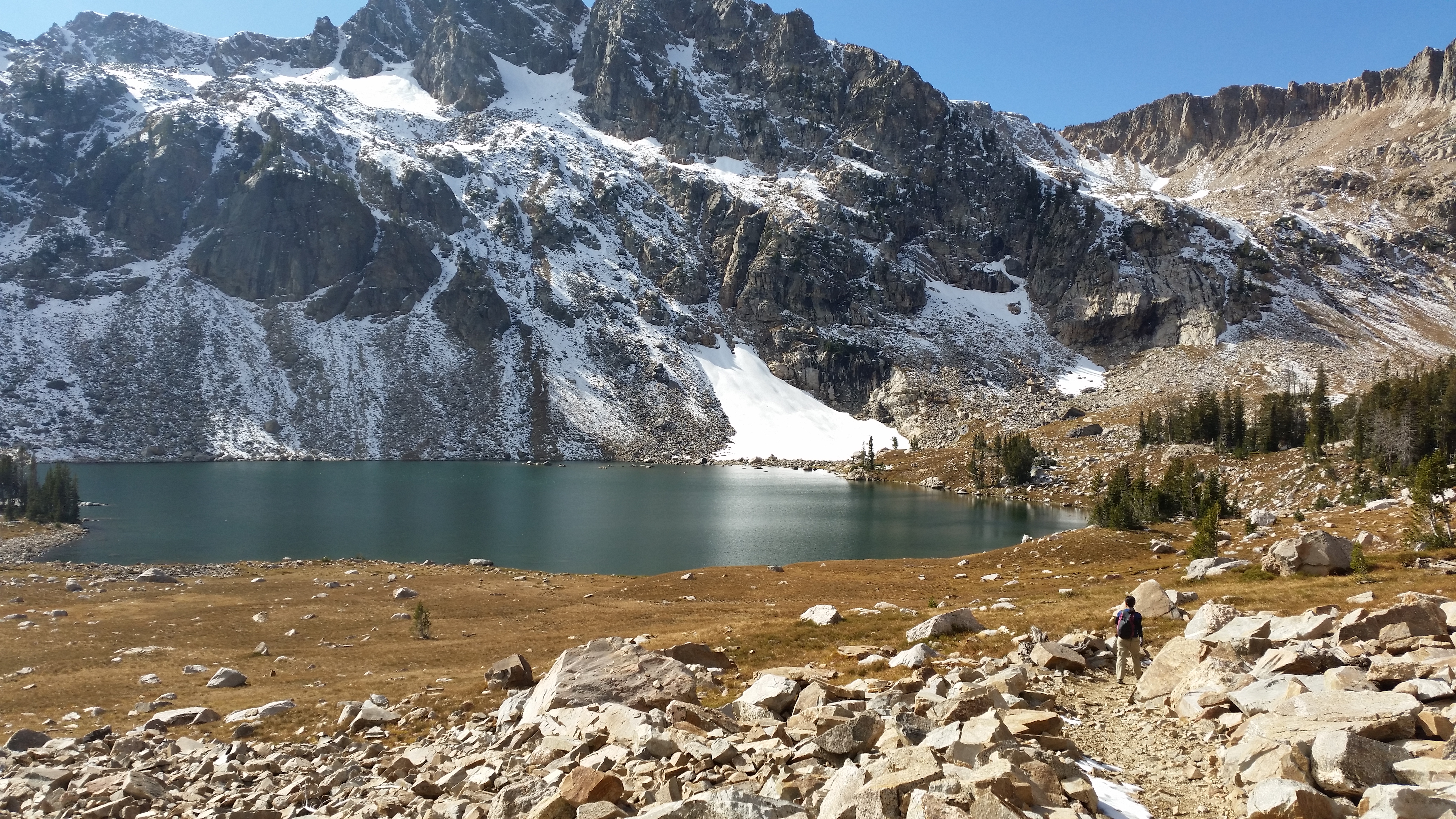
After a quick snack break at Lake Solitude, we continued our 2-3 mile hike to Cascade Canyon. As we descended into the bowl-shaped valley, we caught glimpses of a magical wonderland of towering mountains enveloped by dense, green forests: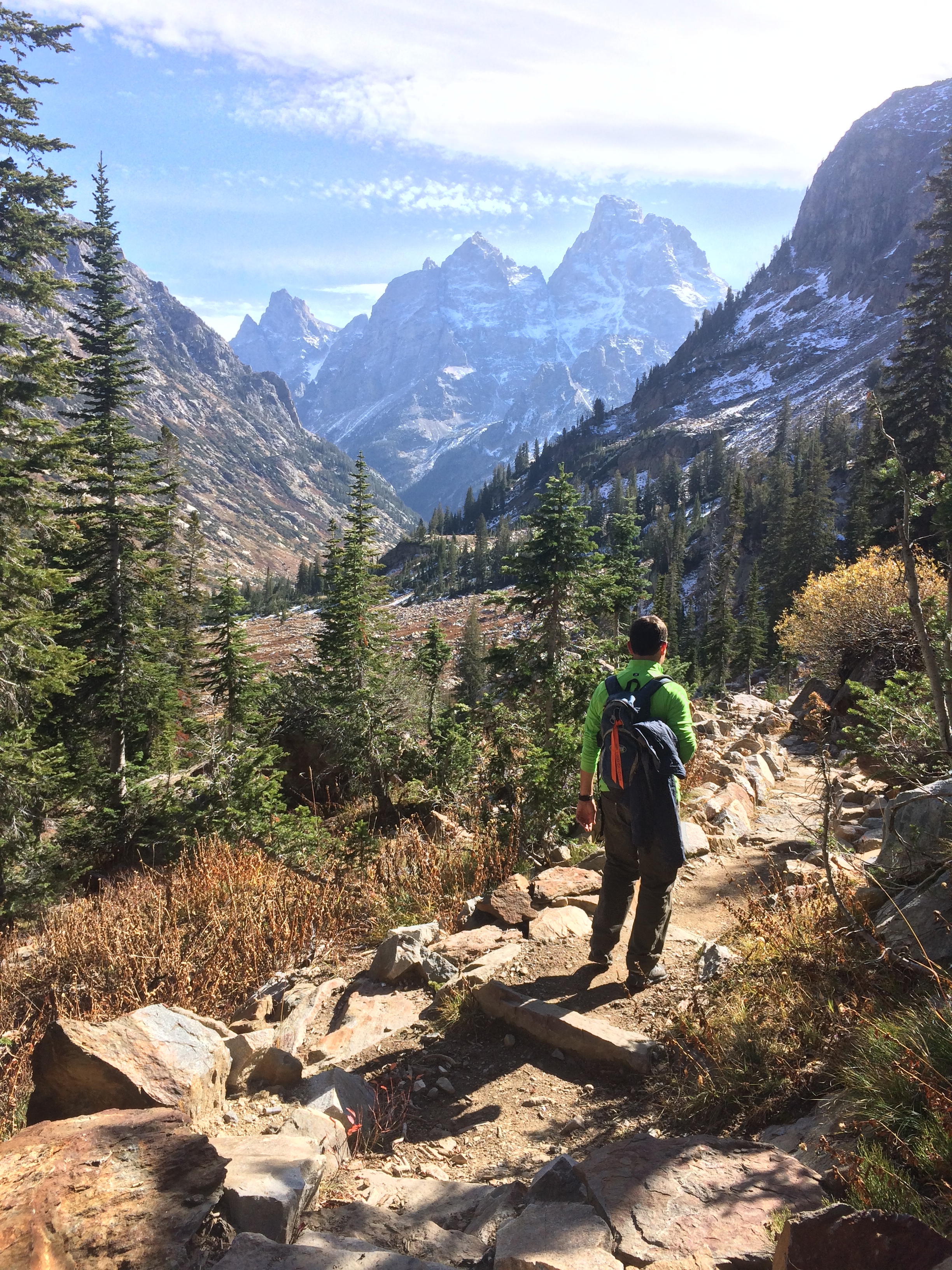
The remaining 6 miles or so was literally a beautiful stroll through the woods, mostly descending past creeks and small bridges. During the last leg of the trail, we caught a glimpse of The Grand Teton itself looming out from behind Mt. Owen: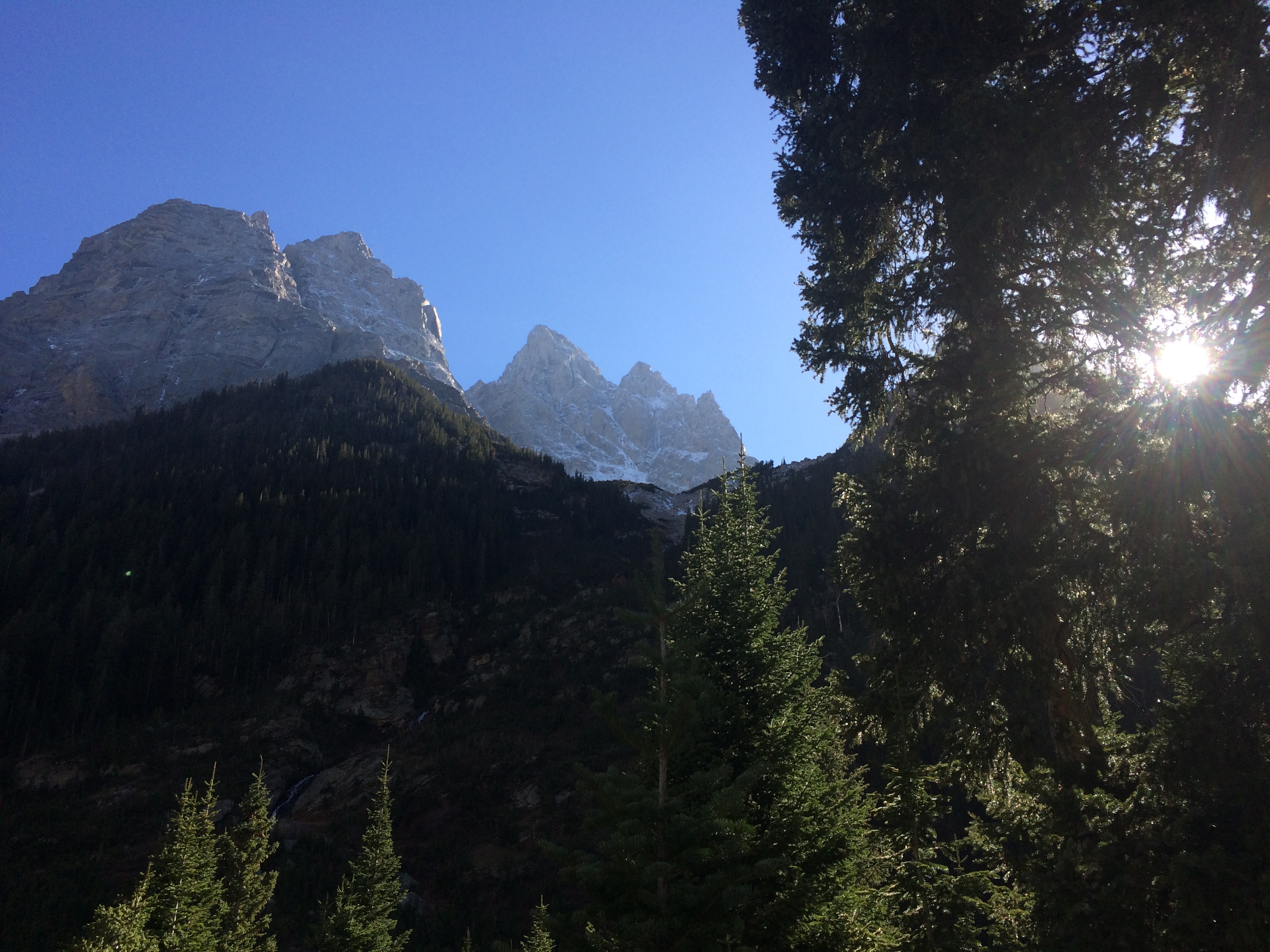
And finally, the last mile was spent hiking along the northwest perimeter of the pristine Jenny Lake back toward the Spring Lake trailhead/parking lot: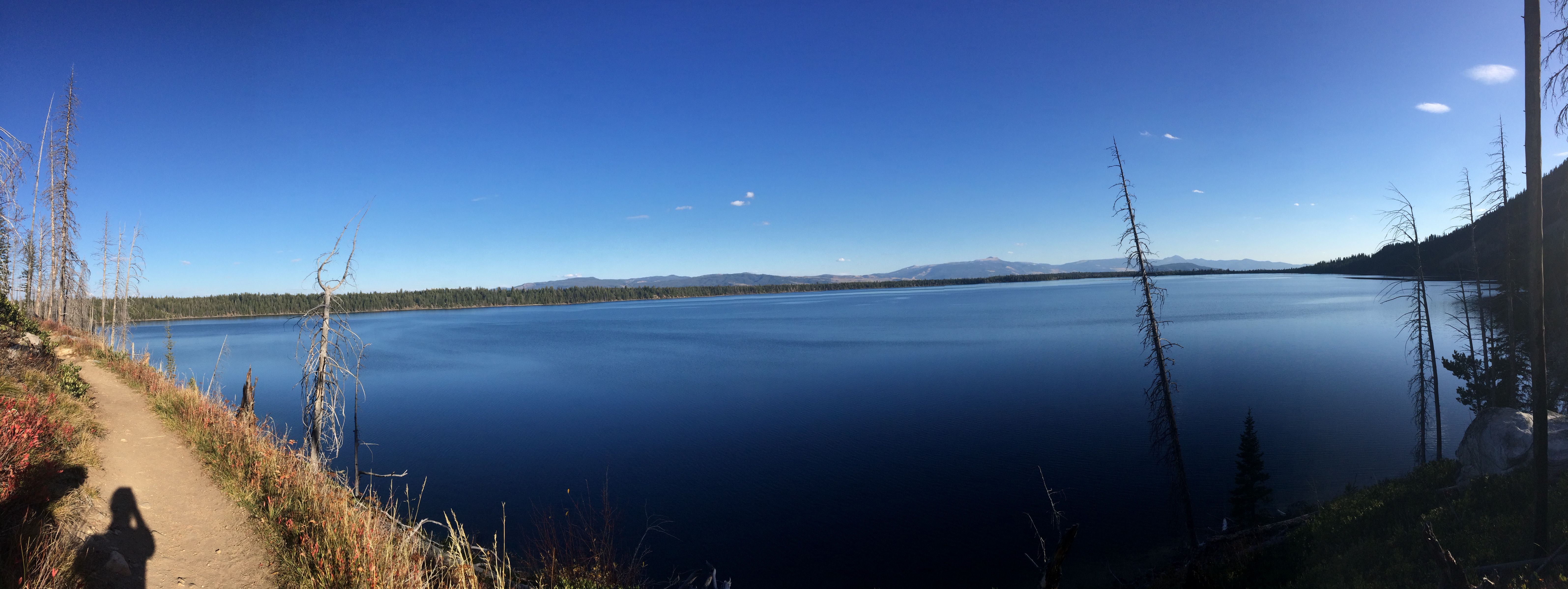
We finished in 9 hours and 15 minutes, beating our 10-hour goal! “This is why I like having a cooler in the car,” I told Chris as I pulled out a hard-earned ice cold cola. Chris saved his beer for after the drive. There was ample time to enjoy our final sunset over the Tetons before heading out to Yellowstone the following day.
Wow, Grand Teton. Just wow. I expected to be blown away by Utah’s national parks, but I did not expect to be blown away by this. Like Zion, the park is relatively small compared to other national parks, making it easy to navigate and explore. From short hikes to endurance hikes to gentle cycling tours, gorgeous views are abound. Even easy drives to overlooks are not to be missed. Boondocking is incredible. What a perfect 5 days.
Overshadowed by the massive Yellowstone National Park not far up north, Grand Teton National Park deserves the same national attention as Yosemite, Yellowstone, and Zion National Parks. But as I ponder about that a bit further, perhaps it is for the best that Grand Teton remains lesser known so its trails and overlooks remain pure.
One final picture at The Grand Teton, all hitched up and ready for our next destination:



